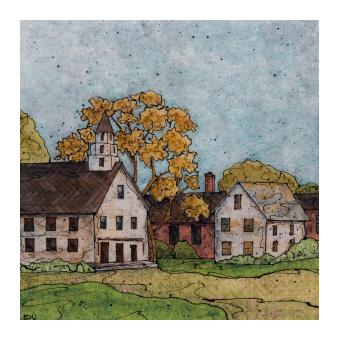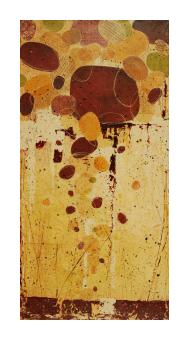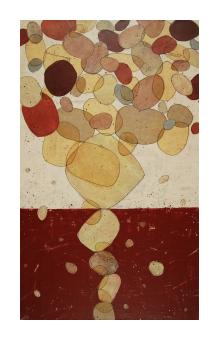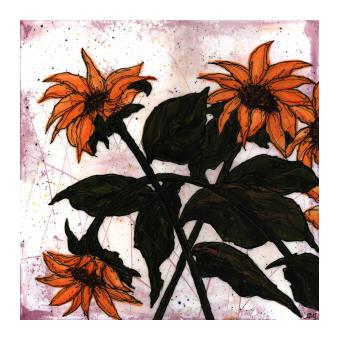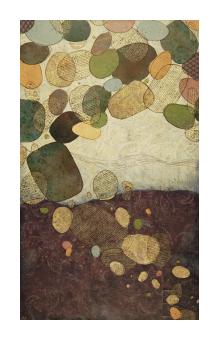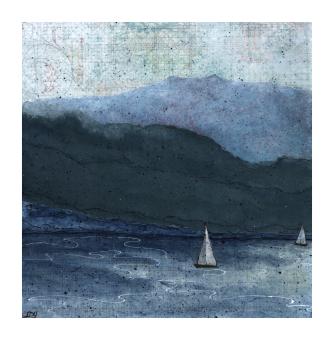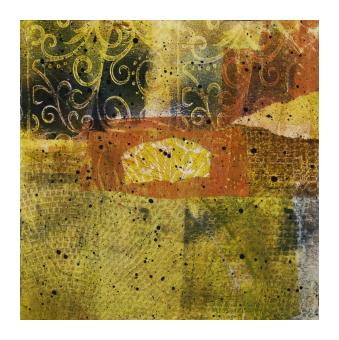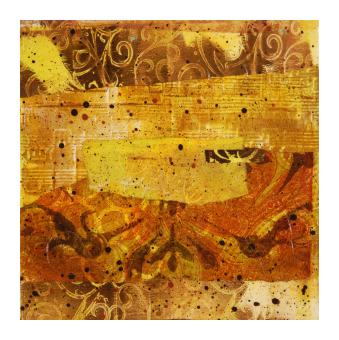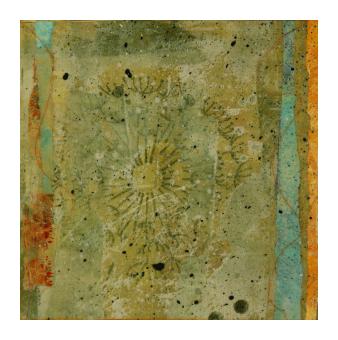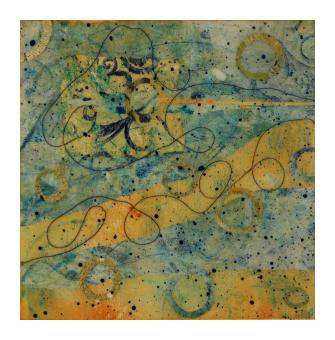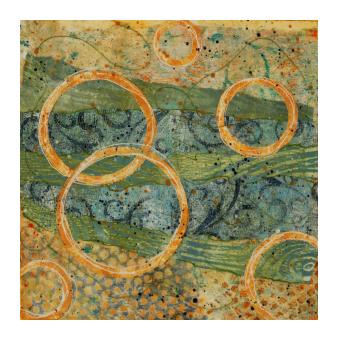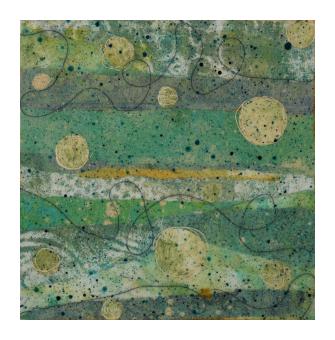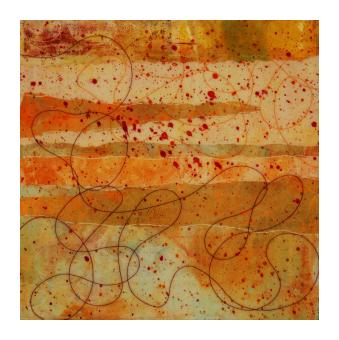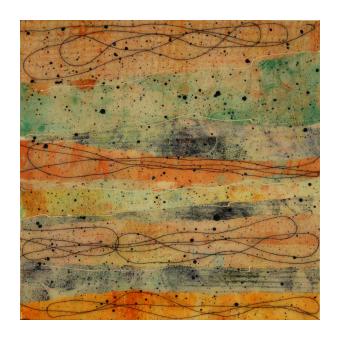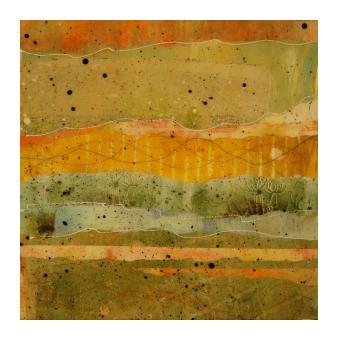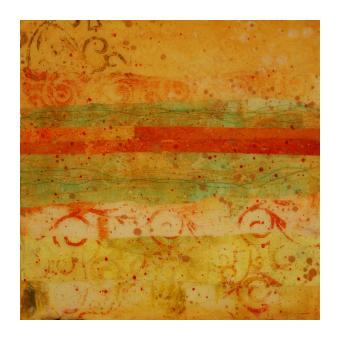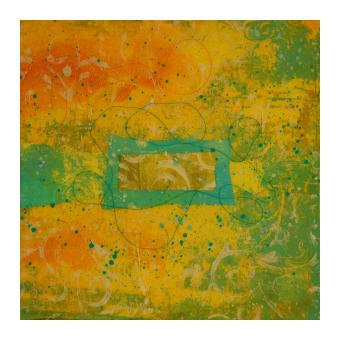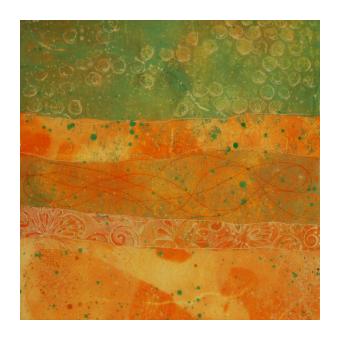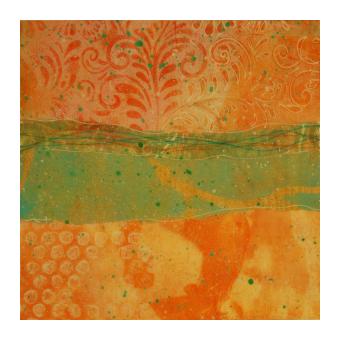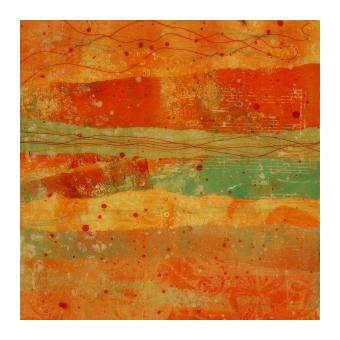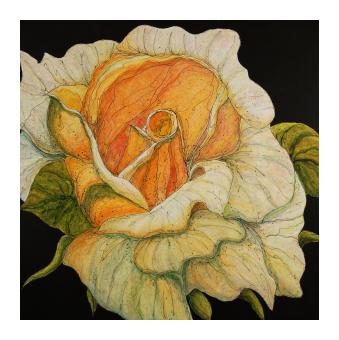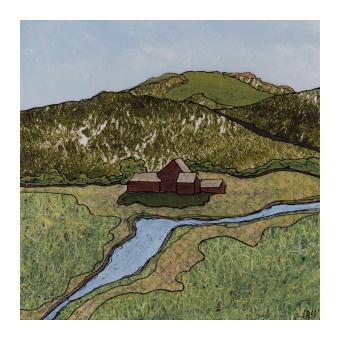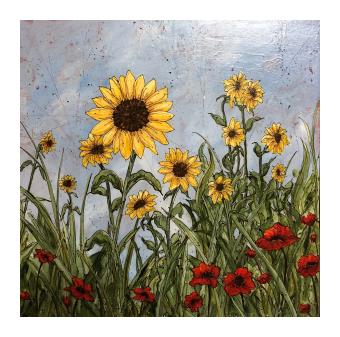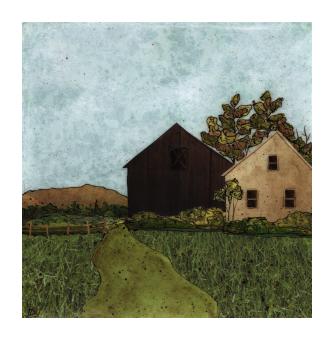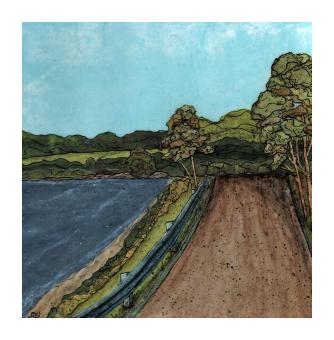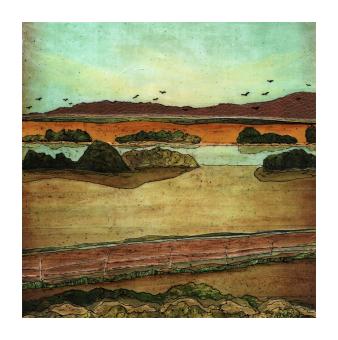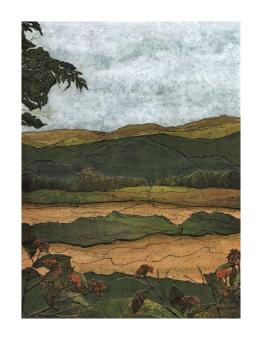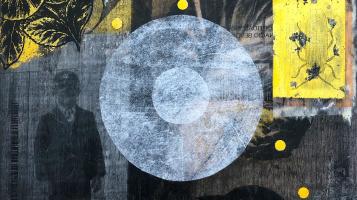
Madcollage
In the beginning, I mainly produced paintings on canvas. In time, I adopted a variety of transfer techniques and incorporated collage into my work regularly. Nowadays, I prefer to work in the time-honored manner of Hannah Hoch, Robert Rauschenberg or even Joseph Cornell, avoiding the digitalization of the work and always striving for rich surfaces and unexpected effects. To this end, my pieces are built up layer by layer with patience, skill and trust. The element of surprise is an ally and I favor allowing the image to develop on its own terms. Thematically, my current focus is on creating a series of collages that expand on the theme of the simple act of gardening as a metaphor for cultivating inner growth. Being a recent transplant to Vermont, learning about the seasons, the fauna and the plants that thrive in this climate has been transformative. I enjoy planting crops from seed, nurturing the seedlings and later, I particularly love collecting seeds. Throughout this process, as with making collages, I feel present and part of something larger than myself. I also believe that tending to the plants and harvesting edible crops are radical activities (much like art making) at a time when we find ourselves in the grips of an environmental and social crisis of devastating proportions. It is my hope that my images convey a silence that allows the mind to wander and to imagine beyond what is visible. My collages are open ended and accessible to everyone. I consider a collage successful when it resonates with a viewer in a way that leads to enjoyment. I could not ask for anything more fulfilling.
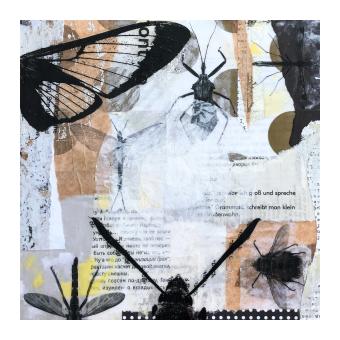
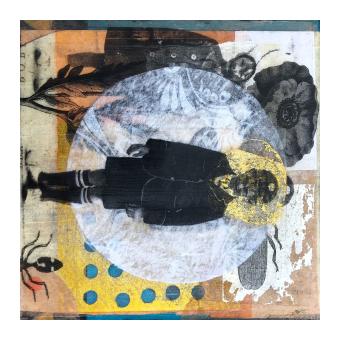
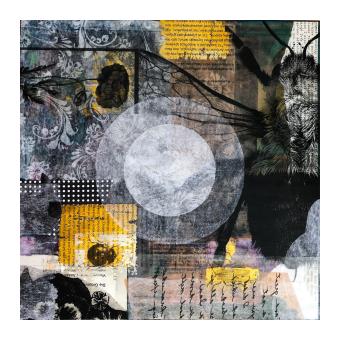
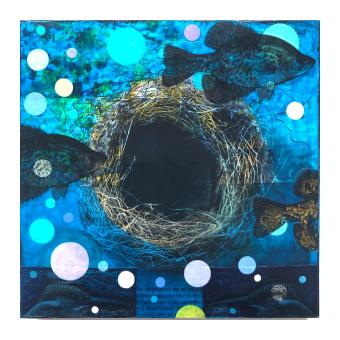
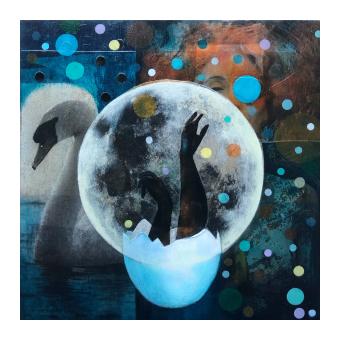
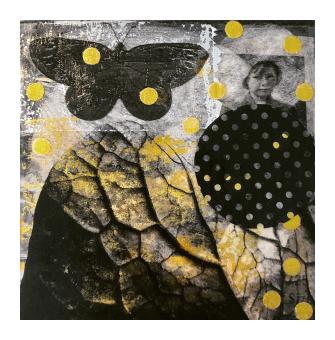
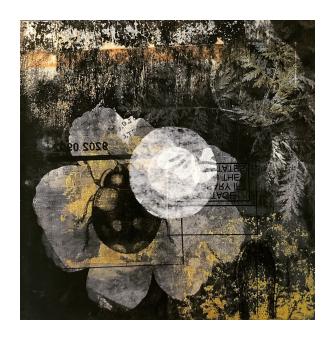
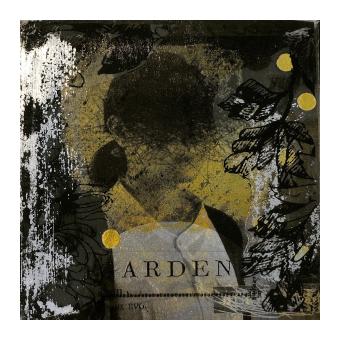
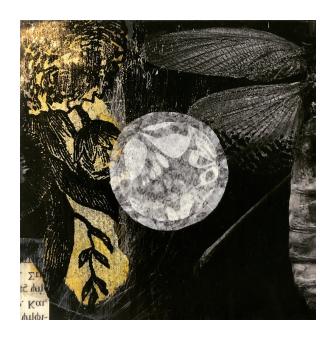
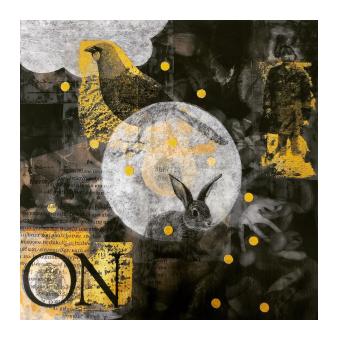
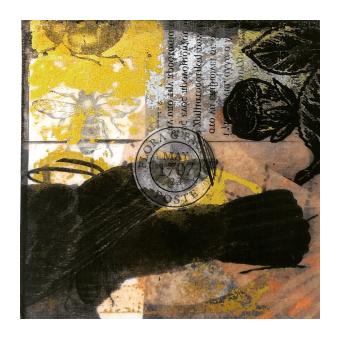
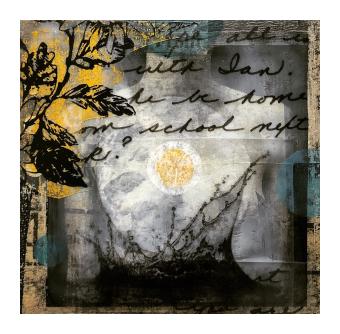
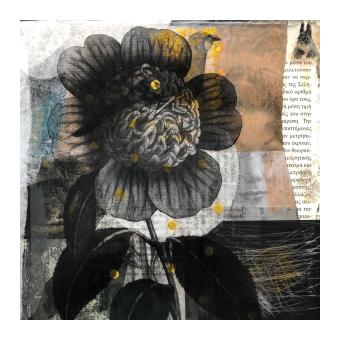
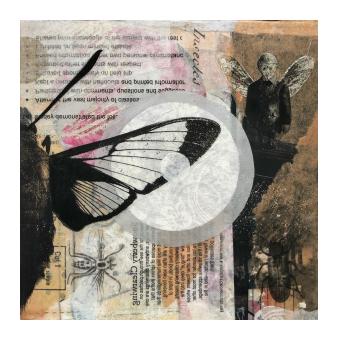
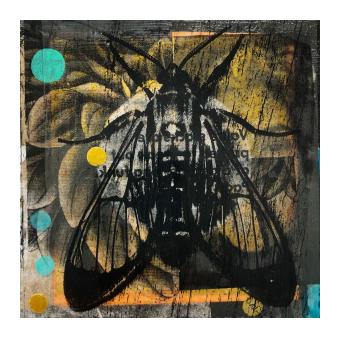
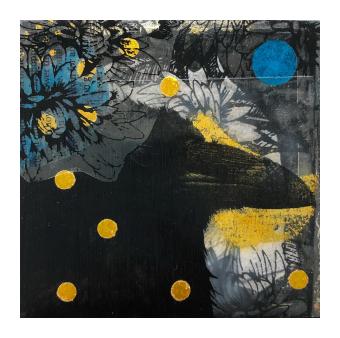
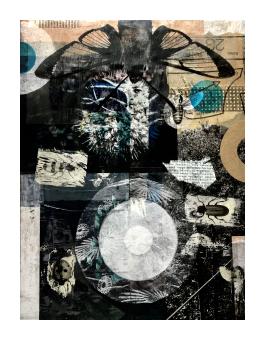
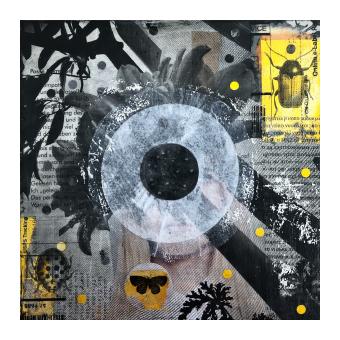
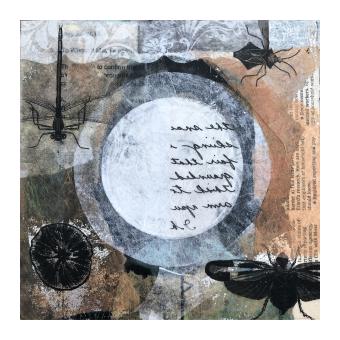
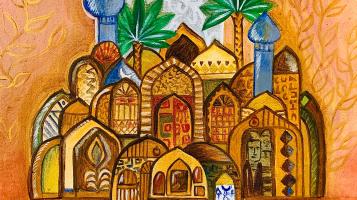
Sabah Abbas
Sabah Abbas grew up in Baghdad, Iraq and began drawing illustrations for magazines, books and public service projects in 1988. She produced illustrations for four children's books and created public posters for UNICEF to promote children's immunizations in Iraq. Between 1990 and 1999 she exhibited her paintings 12 times at the prestigious Widad Orfali Art Studio in Baghdad. She also studied history at university and was a journalist with the Iraqui Journalist Syndicate from 1988-1999. Sabah left Iraqu in 2003, moving first to Jordan, then Syria, where she studied classical Arabic arts at the Nada Technical College in Yarmouk. She and her family immigrated to the U.S. in 2014. Since her arrival in Vermont, she has studied oil painting techniques at CCV, volunteered as an art classroom assistant at the Davis Studio and the Integrated Arts Academy at H.O. Wheeler, and exhibited at the S.P.A.C.E. Gallery in Burlington. Sabah's work is inspired by Iraqui culture and history, and by the traditional Arabic art style. Her preferred medium is oil on canvas. Her work is available for sale, and she also does work on commission. For more information, find her on Facebook at Sabah Abbas.
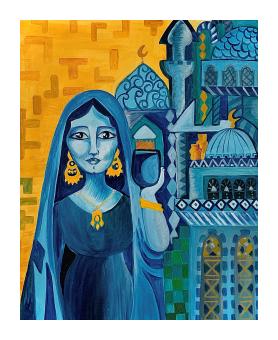
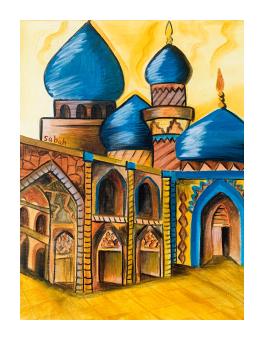
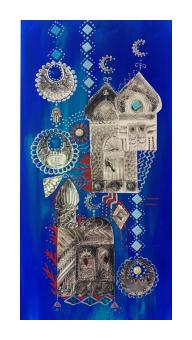
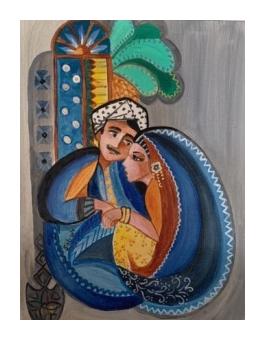
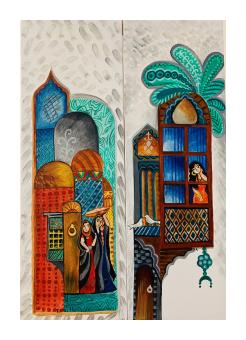
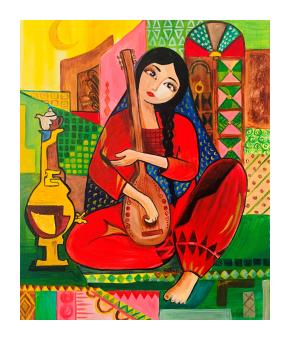
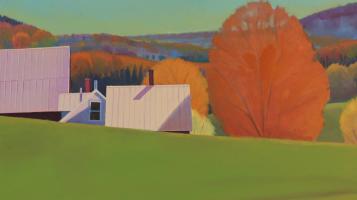
Susan Abbott
I moved to Vermont almost twenty years ago for the most impractical of reasons, love at first sight. Driving through a small town in the southern part of the state, in the early morning, on my way to somewhere else, I caught a glimpse of a stream running through the backyard of an old clapboard cape. Suddenly I was back in my childhood, in a time before the creeks in my own town were culverted and the yards subdivided. The Vermont I saw from a car window looked like a memory of home, and I was hooked. Two decades later, I’m still attracted to what I see here and on my frequent travels to down east Maine: a work-a-day patchwork of small towns, dirt roads, village greens, barn yards and back fields. Looking carefully at these ordinary places, landscape and memory intersect for me. While I paint, the abstraction of color, light, and shape combine with subject to compose a mood and a meaning. In these landscapes, the mood may be melancholy, the meaning ambiguous. Both mood and meaning in my landscapes—images of old houses, old farms, old towns, old trucks–have to do with age and time. Like many Vermonters, I value the old. Even when a barn has outlived its purpose, we respect its venerable presence and want to see it endure. The Japanese concept of “wabi-sabi” has helped me understand why I find these old, ordinary, and sometimes broken-down places so beautiful. Wabi-sabi embraces the aged, the imperfect, the modest, the subjective, the natural, the seasonal, the private, the mysterious. In Vermont and Maine, I find wabi-sabi everywhere I look. In my painting, I find beauty in the ordinary, and try to hold on to the changing, the disappearing, the memory, and the first glimpse.
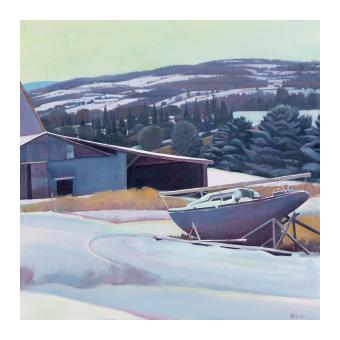
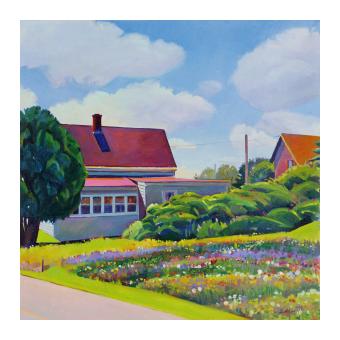
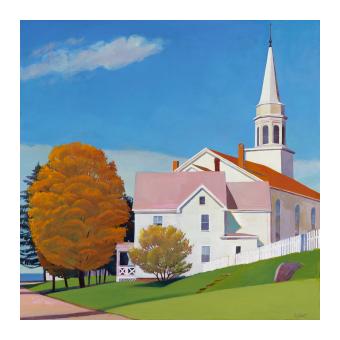
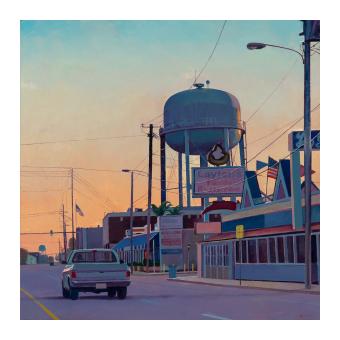
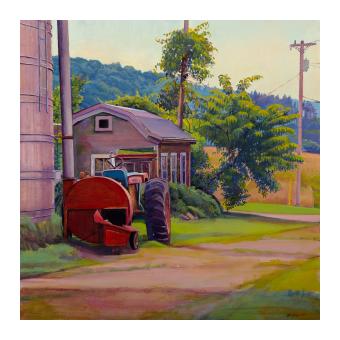
Michelle Garcia Aguilar
Michelle Garcia Aguilar use color and form to process personal experiences and engage with unresolved memories. Her work draws on the complexities of these memories, allowing hidden narratives to surface through abstraction and form. She explores themes of self-perception, internalized beliefs, and identity—using painting as a way to navigate and confront these deeply personal subjects. Guided by an intuitive process, she allows each painting to evolve organically—embracing uncertainty as the paint and brush take on a life of their own.
Aguilar's Mexican heritage informs her visual language, influencing the way she navigates themes of identity and the tension between visibility and concealment. This cultural lens adds another layer of complexity to her exploration of personal and collective memory.
Aguilar's practice moves fluidly between abstraction and figuration, allowing these two approaches to merge and create tension. This interplay reflects the fluid and often contradictory nature of identity and memory, blurring the line between what is remembered and what is felt. While her process is open-ended and intuitive, these recurring themes emerge organically, reflecting the unconscious ways personal and cultural forces shape her inner world. By leaving room for ambiguity, she invites viewers to engage with the work on their own terms and discover personal meanings.
Influenced by abstract expressionism, she embraces the movement’s emphasis on emotional immediacy and gesture. Through this language of raw energy and spontaneity, she navigates the complexities of personal memory and cultural identity, translating them into a visual form that is both deeply personal and open to interpretation. At its core, her practice is driven by a need to give form to what is often unspoken—turning personal and collective experiences into a visual language that bridges the seen and the felt.
Through this ongoing dialogue between memory and material, Aguilar's work reflects the complexities of identity while offering viewers a space to engage with their own hidden truths.





Amanda Amend
Watercolor has captivated Amanda Amend since she was a child, when she watched a friend of her parents' as he painted. Amend was sure she didn't have the talent to do such a thing, but many years later she has taken up the brush and dedicated herself to this wonderful medium. She loves how the paint moves on the paper, the thrilling variety of edges as the paint diffuses on a wet surface or makes a crisp edge on a dry one, the natural blending of colors, the endless subtleties of paint properties, and the unending challenge of interacting with such a dynamic medium. Each painting is a discovery in terms of composition and technique, but also in terms of what excites her as an artist. What moves her to delve deeply into this scene, to catch its essence?
The Historic Burlington series was inspired by a sense of living and breathing the history that surrounds us in this little city. In Burlington’s architecture she senses the aspirations and struggles of generations past, the character of this place. She envisioned this work as a part of a Celebration of Burlington which could include artists of all media, writers, historians, and storytellers, the creative sector which sees the city through different lenses. Perhaps that vision will be realized, in time. For now, these works are a unique collection of watercolors that seek to raise awareness of the built environment in which we live and grow.







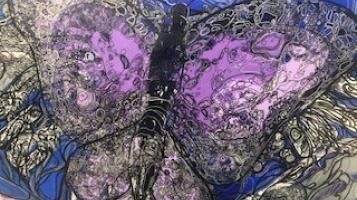
Maria Anghelache
Maria Anghelache is a Romanian born abstract painter, who is now a US citizen living in Vermont. She studied for two years in Venice, Italy, and in 2012 she received a Master’s in Studio Art from New York University. Anghelache explores the subject of nature through abstract expression and movement, as seen in her explosive Butterflies Series. She strives for uniqueness and creativity in her paintings, and to combine abstract sensibilities with sophisticated and high imagination. Here she orchestrates the conception and intensity of vertical and horizontal lines to represent the minuscule veins of wings and body. She has chosen to paint butterflies because they are a symbol of fragility and beauty, and a deep and powerful representation of life, change, endurance, and hope. The symbolism she conveys with her purple butterflies is a less common theme. The color purple is often associated with royalty and strongly represents spirituality. She finds the message of purple butterflies to be about having courage and trusting in yourself. The artists feels that joy and inspiration have arrived to her artwork through nature.
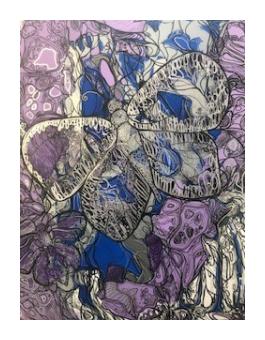
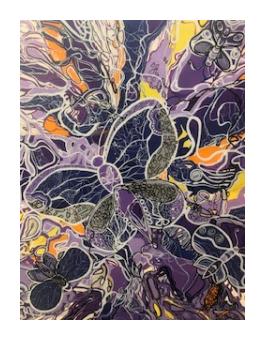
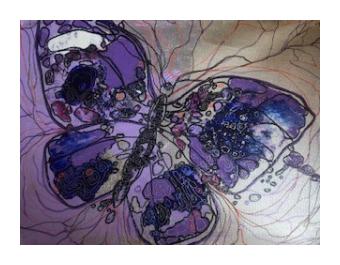
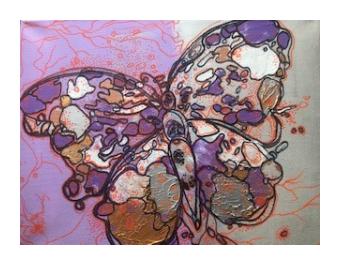
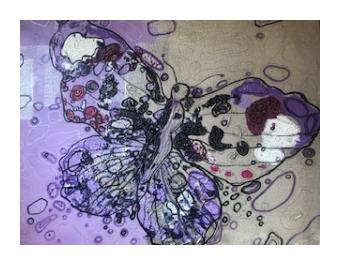
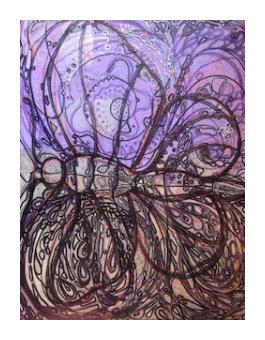
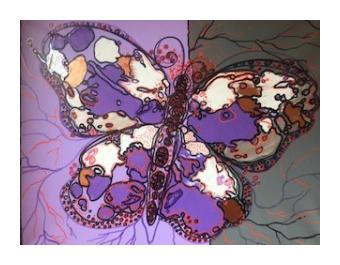
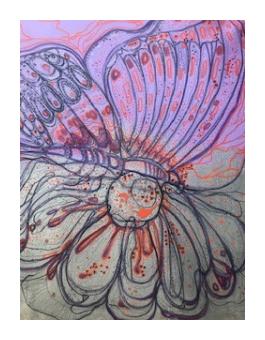
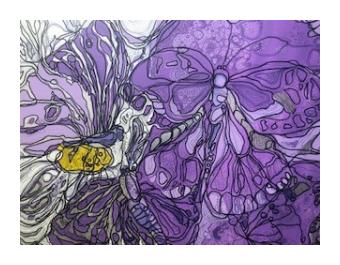
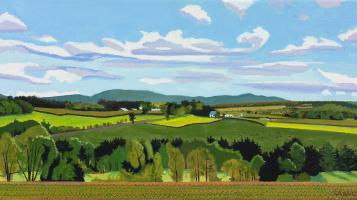
Louise Arnold
I am a landscape painter with a background in Landscape Architecture. I work both en plein air and from my photographs, painting in New England landscapes with which I have great familiarity. My subject matter ranges from mountains and streams to barns, abandoned farm machinery and cars, which are prevalent features in many of the landscapes that I paint. I am interested in capturing the character or spirit of specific places, and in exploring how the qualities of those places affect me as an artist working in them. The paintings that result have evolved from this exploration and engagement.
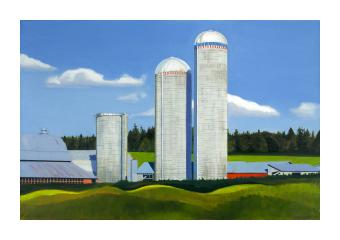
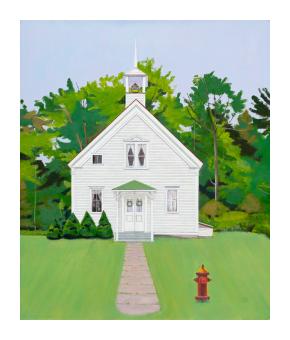
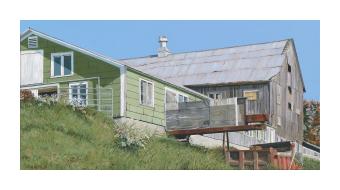
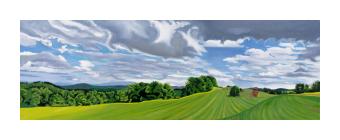
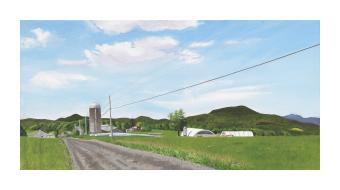
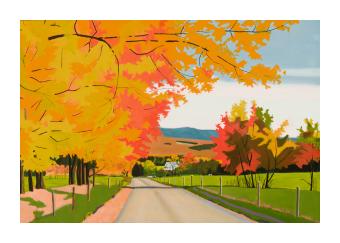
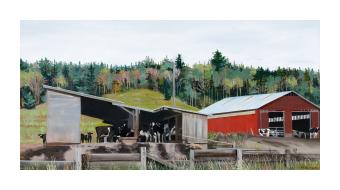
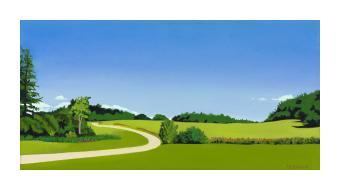
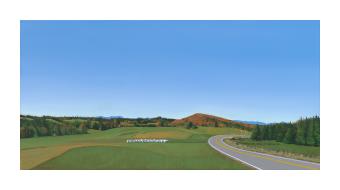
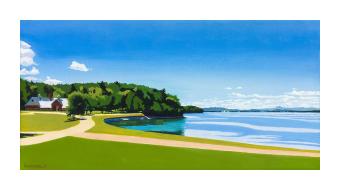
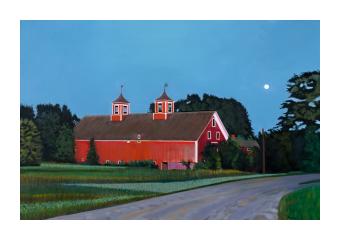
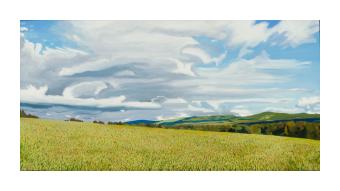
Lisa Balfour
As an artist/photo-stylist I worked at Hallmark Cards for over a decade before moving to Vermont in 2000. The creative process is fun but also has to be a challenge. Be original
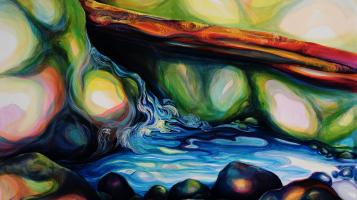
Leah Barranco
I translate the physical world around me by examining and exaggerating small details of landscapes and seascapes often overlooked by individuals. These specific elements are illustrated through use of intricate pattern, variety of brushstroke, opacity of paint and vivid colors. As I work into the painting, I become more observant of the patterns the image encompasses and naturally leads to: straight lines, undulating lines or recurrence of a particular shape. I work with glazes, transparencies, opacities, and consistencies, creating variety by contrast emulating that of the natural world. Throughout the process I try to keep an open mind, allowing myself to trust my instincts, so that the painting is genuine and evolves fluently. I want the viewer to leave their reality as I do when I create my work, entering into the space through the properties of the painting. I am inspired by the configuration of the natural and I want to enlighten the viewer by illuminating often-disregarded fragments found within a larger context. I want to convey their individual importance through the use of different mediums.
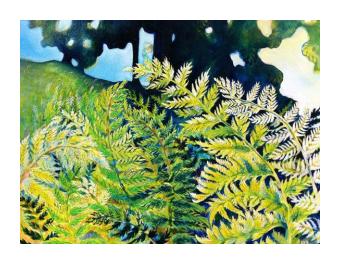
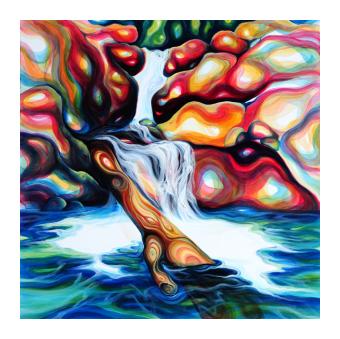
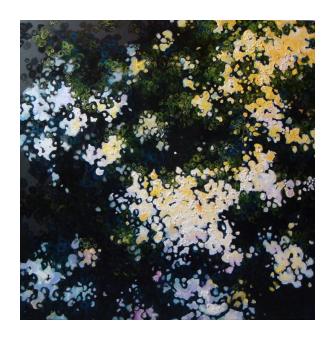
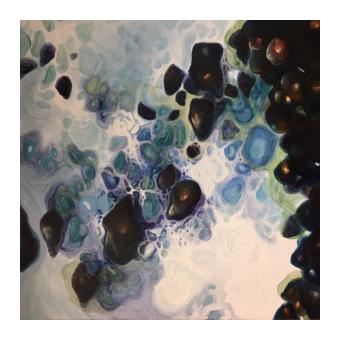
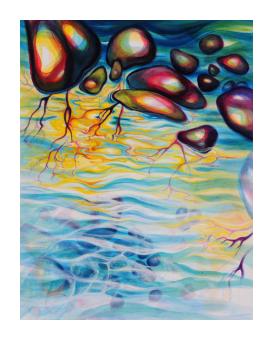
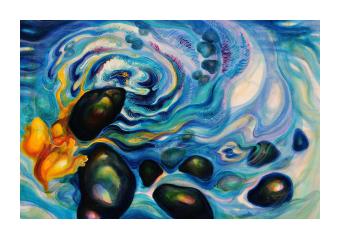
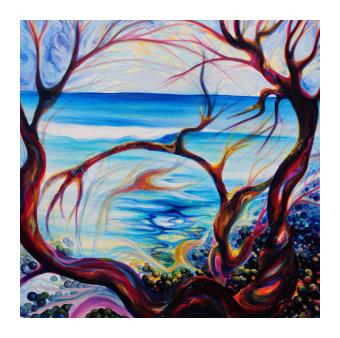
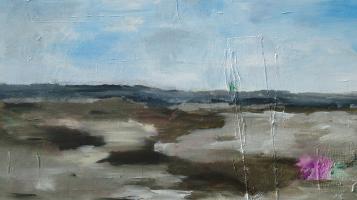
Sandy Berbeco
I began studying art in 1982 when I took a watercolor class at the New Art Center in Newton, MA. I fell in love with the way the paint covered the paper and how a single brush can be used for different marks. Since then I’ve studied sculpture (figurative), plaster & bronze casting, stone carving, hand-building in clay and slip casting, printmaking, drawing and painting. I have also done stain painting, performance art, creating/producing public art games, building furniture with papier mache and collaborative projects with children.
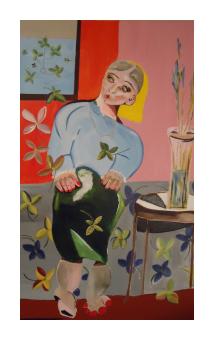
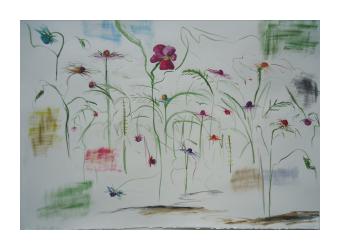
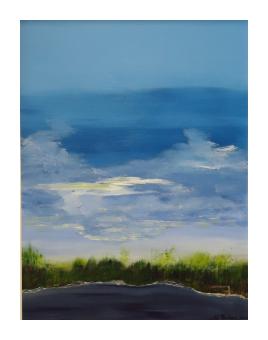
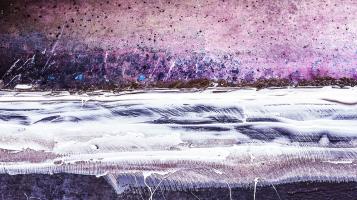
Douglas Biklen
Douglas Biklen is a fine art photographer who specializes in abstract images. His photography has been exhibited at the Nancy Price Gallery (Jamaica, Vermont), the Delavan Art Center (Syracuse, New York), and the Brandon Artists Build (Brandon, Vermont), where he is a member.Biklen first developed an interest in photography as a child, using a Kodak Brownie camera, and later progressed to 35 mm single lens reflex cameras. He was an avid photographer while a Peace Corps Volunteer in Sierra Leone, West Africa during the 1960s. In the 1970s and '80s he pursued his interest in visual arts by becoming involved in film. In 1988 he was executive producer of an award-winning documentary Regular Lives that aired nationally on PBS. Subsequently he was Educational Advisor to the HBO documentaries Education Peter (Academy Award winner for best short documentary, 1992) and Graduating Peter 92003.It was not until the 1990s that he returned to Medium Format photography, using a Hasselblad. He studied color photo techniques with Alison Saw at the Maine Photographic Workshops and digital scanning and image preparation for printing at Light Work/Community Darkrooms at Syracuse University. Biklen's work can regularly be seen at the Brandon Artists Guild in Brandon, Vermont.Besides his photography, Biklen is internationally known for his research on autism - Biklen co-produced the Academy Award nominated CNN/State of the Art film Autism is a World (2004), is producer and director (with Rossetti) of the award winning film My Classic Life as an Artist: A Portrait of Larry Bissonnette (2004) and is producer (with Wurzburg) of the roadtrip film Wretches and Jabberers (2010). He is author of more than a dozen books including Autism and the Myth of the Person Alone (NYU Press, 2005).News accounts of his work in the field of autism have appeared in The New York Times Magazine, Newsweek, U.S. News & World Report, The Washington Post Magazine, People Magazine, and on the CBS Evening News, CNN News and ABC's Primetime Live.Douglas Biklen formerly served as Dean of the School of Education at Syracuse University and now resides in Orwell, Vermont.
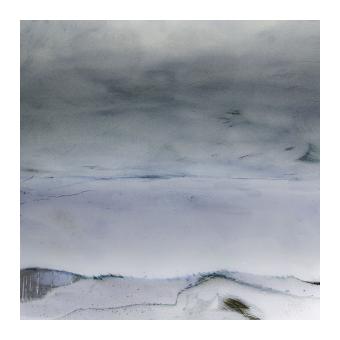
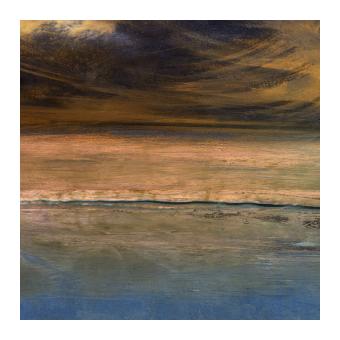
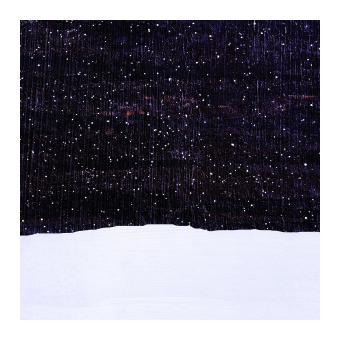
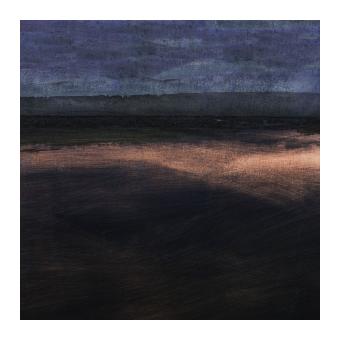
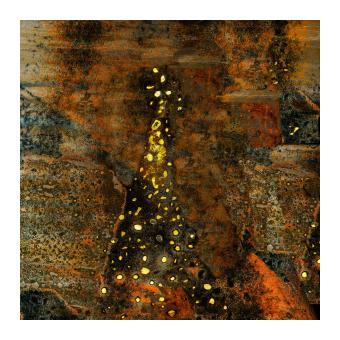
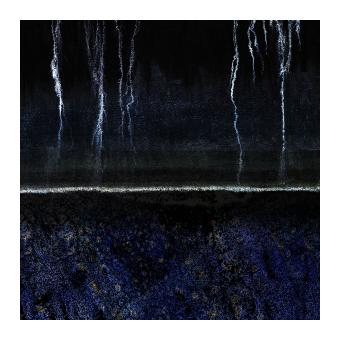
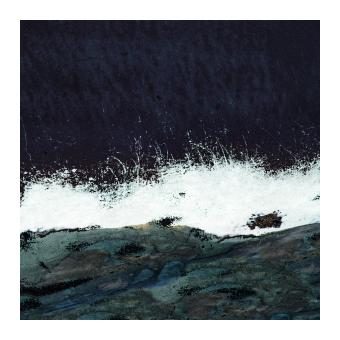
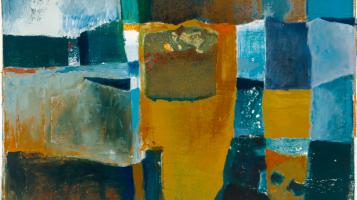
Casey Blanchard
Primarily a self-taught artist, Casey explores her experiences through the engaging and often unpredictable print medium of monoprinting. She is most interested in the spiritual aspects that emerge in the image, particularly relating to how we live in the world and how the world lives in us. In the beginning the work may be a search for answers, but in the end it's more about being here without them. Casey Blanchard was born in Greenwich, CT in 1953. She lives in Shelburne, VT with her husband, Dan Cox, and their daughter, Julia Cox. Her artwork is found on the walls of health care facilities, private residential collections, corporate offices, the hospitality industry, on web designs and various published materials. You are welcomed in her studio by appointment. Please visit Casey's website, www.caseyblanchard.com. I stand at the printing press armed with my tools, plates, paper, and inks. Like bees returning to the hive, images funnel into my well, ready to be transformed into tactile expression. Glistening globs of chemistry and pigment color the palette and tempt the bristles and the sticky smack of the brayer. The smell of the oils blending and the moment the brush tip touches the surface is enticing. Print by print, the image starts to breath and to whisper "Here I am". My heart feels its rhythm. Like the chrysalis, the essence shifts into shape. Pattern develops; color and values take a stand. Time flies by and stands still. The creative process is alive. Some people are lucky to love their work. Perhaps they love to deliver babies, pound nails, cook exquisite meals, inspire students, or navigate the seas. I love to make art, to interpret and share my experiences, through the art form of monoprinting. The process of monoprinting is engaging, surprising, fluid, and in the moment. It is unpredictable and fun. It is not what is apparent that interests me. It is the mysteries behind the frayed veil, the torn edge, and the unspoken word that intrigue me. It is the hints at the essence of existence and the glimmers of truth that have drawn me into the illuminating world of the arts. My search for relevance is a bit like an archeological dig. I use my art, the paint and the printing press to examine. In the natural and manmade environment, I look for clues, watch and listen. The eternal questions continue to compel me - who are we, what are we doing here, and does anyone out/up there care? My desire to understand the world, our consciousness, and to serve in a positive way can be a challenge. Creative expression is the sanity check that allows my internal and external concerns to connect and feel grounded. As important as creating the art is witnessing when people see it in the art. It can be anything that wakes up the viewer's perception. From the most mundane to the most significant matters - a bug, a feather, a fern, the rhythm of nature, a musical note, a mountain peak, or an idea - I sense exciting interconnections within them. I strive to translate that inspiration to the viewer in a nonverbal, nonlinear way. Can art create a resonance and increased awareness of ones own personal and collective human experience? Can it make a difference in the journey? I can offer a small step, a step that can encourage reflection, exploration, and a connection to meaning. That connection is what inspires me. The poet, Rumi, says "Let the beauty we love be what we do. There are hundreds of ways to kneel and kiss the ground."
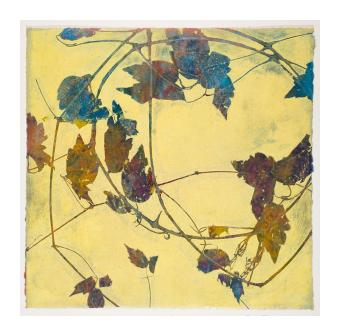
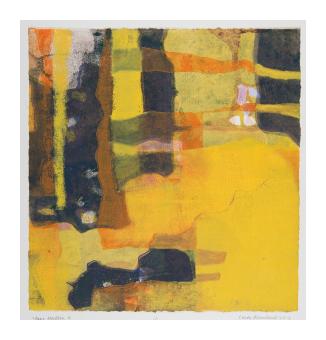
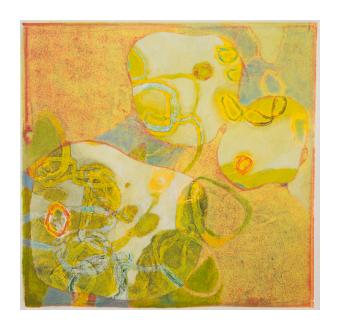
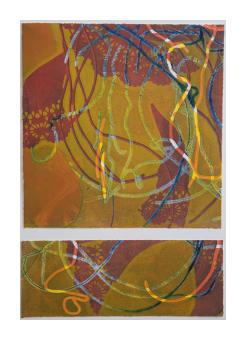
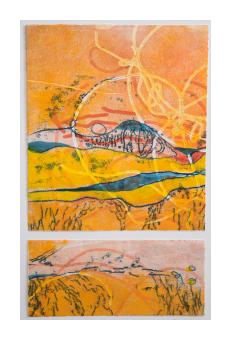
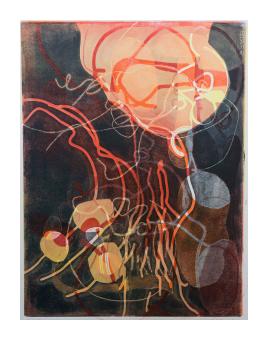
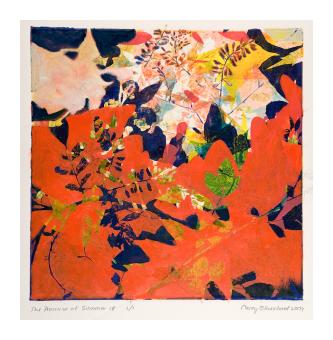
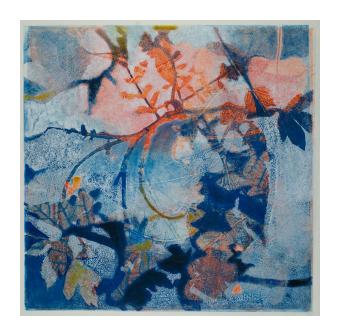
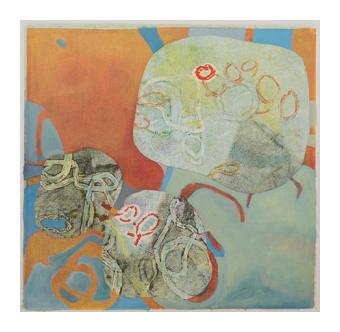
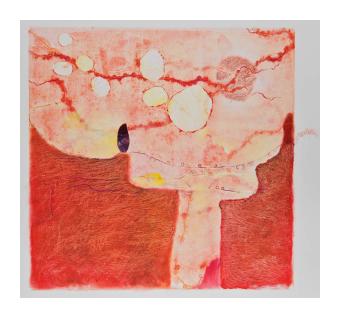
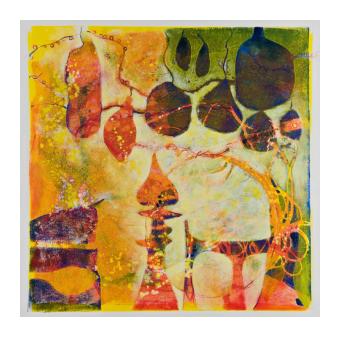
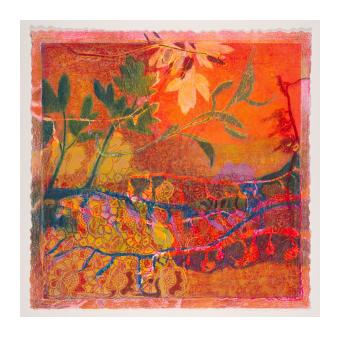
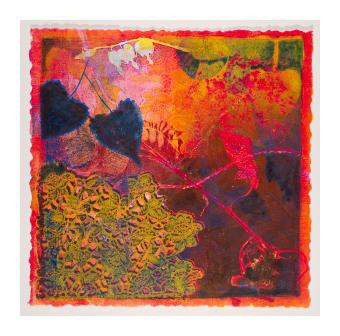
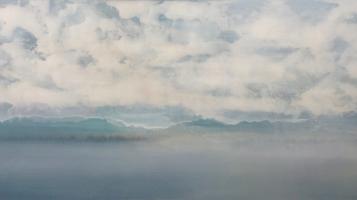
Charles Bluett
Charlie Bluett studied Fine Art at Eton College in the UK, and works from his studio in Vermont. His contemporary abstract colorfield paintings focus around scenes and objects we are all exposed to within America’s vast and varied environments. Contours, tones, colors, emotions, movement & natures balance feature heavily in his works, and they capture the very essence & flow of the world around us, inspired by the elements, the people & the habitats that combine to create it.
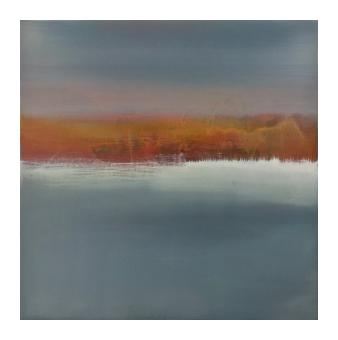
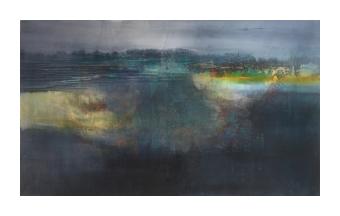
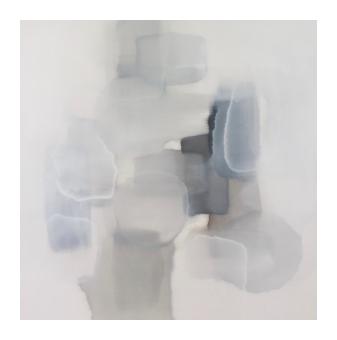
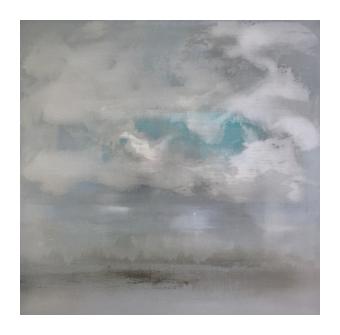
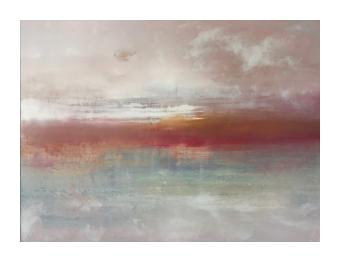
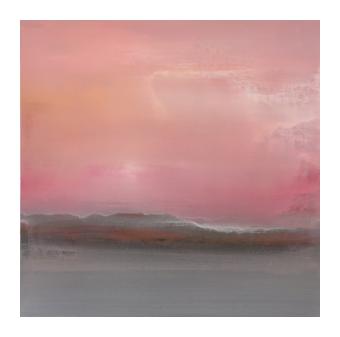
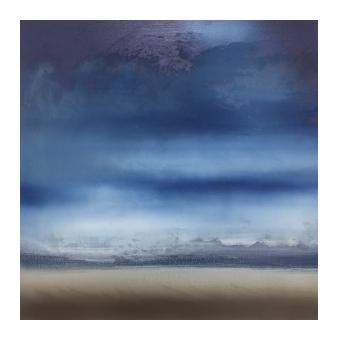
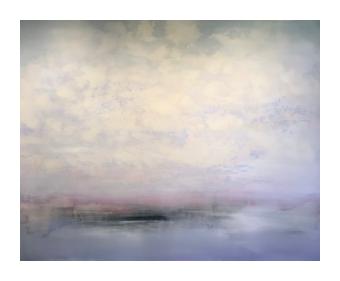
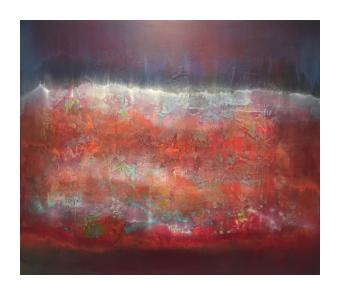
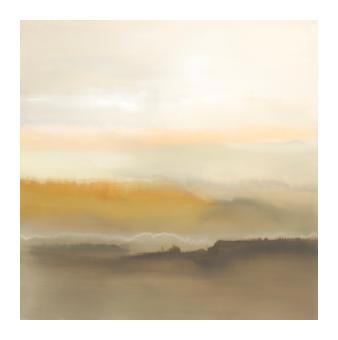
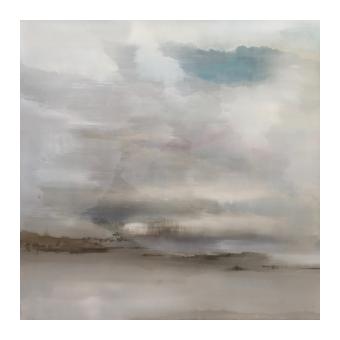
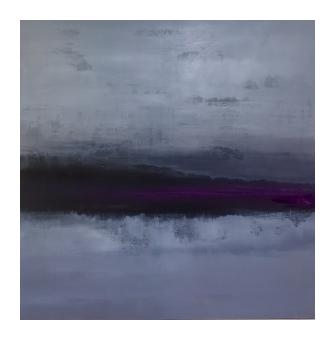
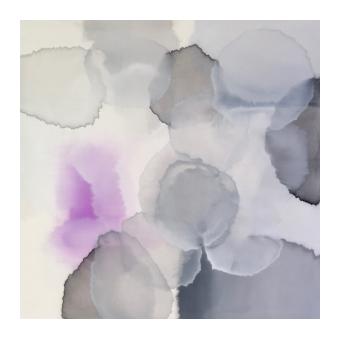
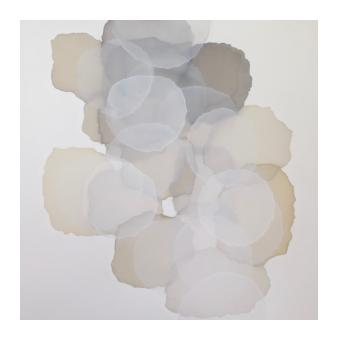

Natasha Bogar
Natasha Bogar explores the dynamic interplay between light and shadow, capturing the essence of nature's ever-changing moods. Her landscapes evoke a sense of anticipation and wonder, reflecting her fascination with the natural world, particularly the moments when tranquility meets the raw energy of impending storms or sunsets.
Inspired by her personal experiences in the outdoors, Bogar finds beauty in the contrasts of vibrant sunlight against dark, brooding clouds – a duality that both highlights the drama of the landscape and serves as a metaphor for life's complexities. The artist strives to convey these emotions through vivid colors and thoughtful compositions, inviting viewers to reflect on their connections to nature. Through her work, Bogar seeks to foster a deeper appreciation for the environment and its transient beauty, celebrating the moments that remind us of nature's power and grace and our relationship with the world around us.












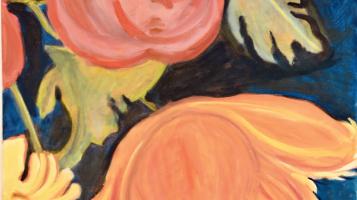
Kimberly Bombard
My medium is oil: I love its smooth and tactile texture, I love delicately smoothing oranges, yellows, and light blues around a canvas. I have always seen myself as an artist. I remember coloring in kindergarten. I felt a pleasant feeling like a trance, a kind of meditation, pure joy. I still feel that way when I paint. I have had numerous solo and group exhibitions as well as being in various local publications.
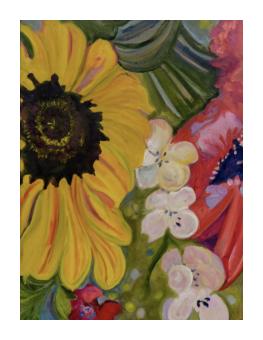
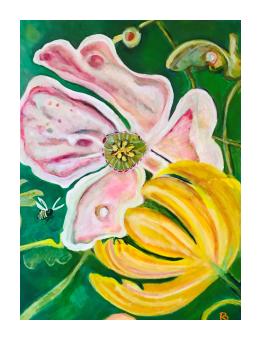
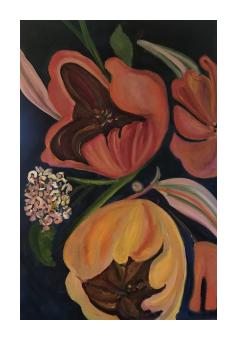
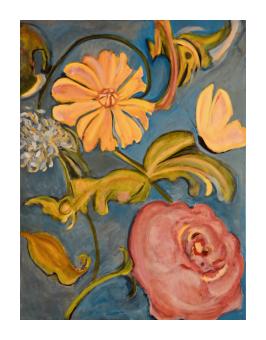
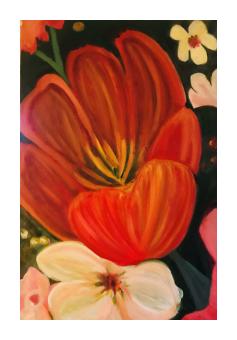
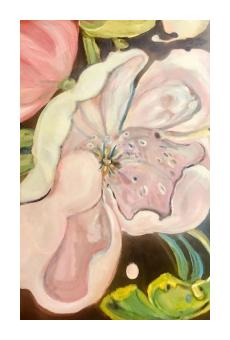
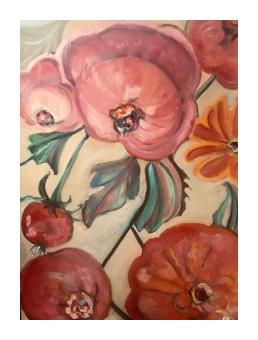
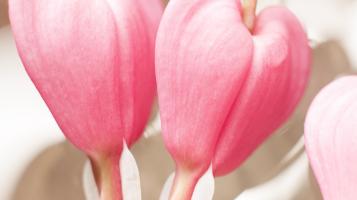
Jane Booth
Gardeners and farmers, what an extraordinary lot we are. We don’t mind getting dirty. We wear soil as a badge of honor — with dirt on our hands, under our nails, over our feet and in our hair — we don’t care. Our business is to nurture, and nurture we do. My parents introduced me to the beauty of nature and all she has to offer. Childhood memories include my mother’s effort to bring back abandoned gardens at a newly purchased home. With her sun-bronzed shoulders rising above surrounding flowers, I often found her wearing nothing more than a bra and dirt-streaked Bermudas, her shirt — having been tossed from her perspiring body — the collection point for weeds she was pulling in the heat of the day.
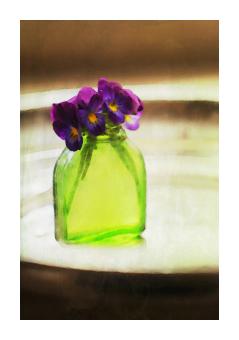
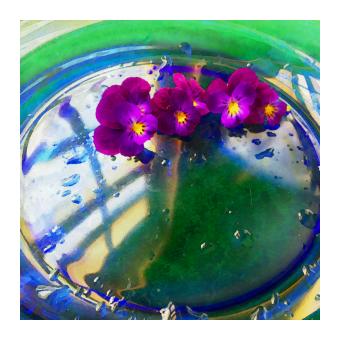
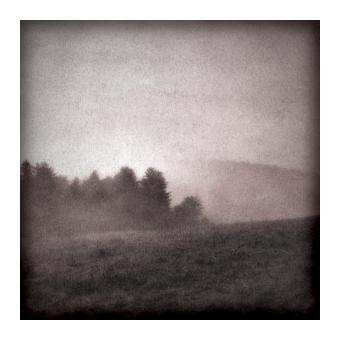
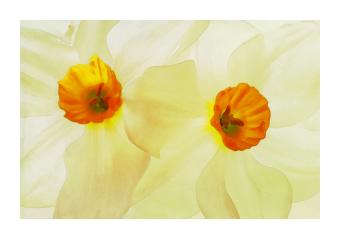
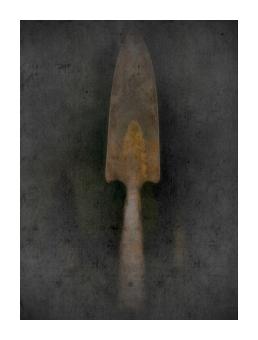
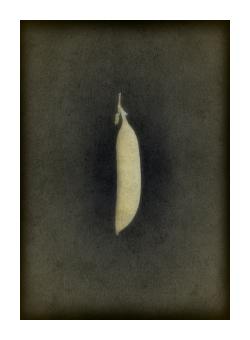
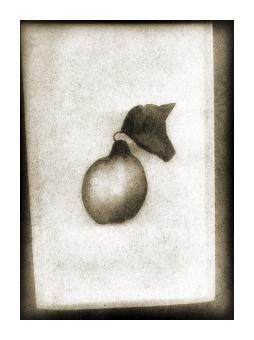
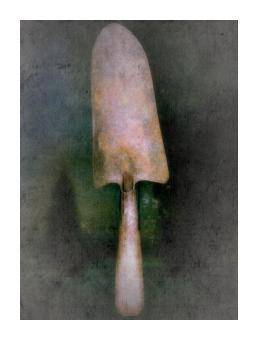
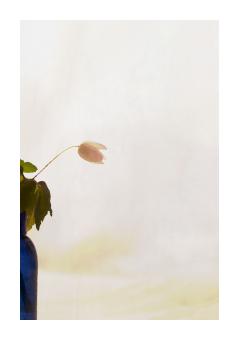
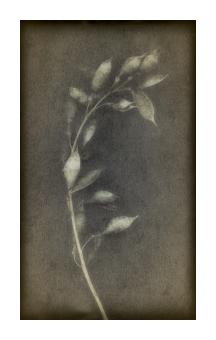
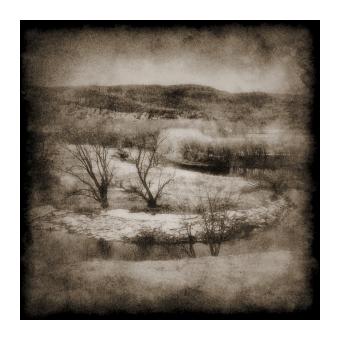
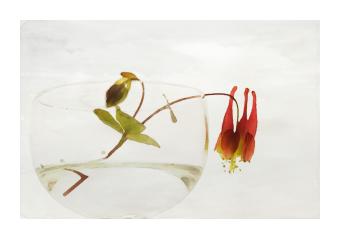
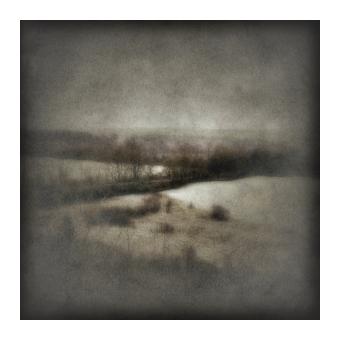
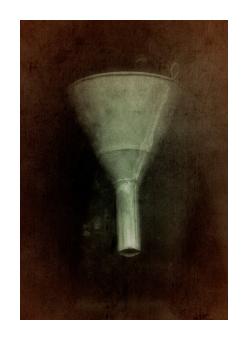
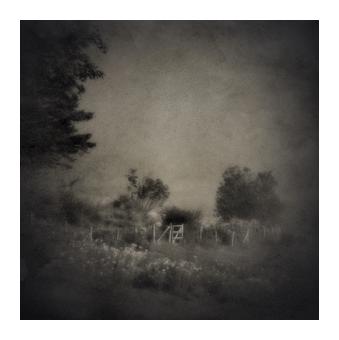
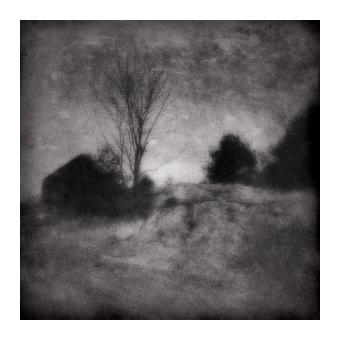
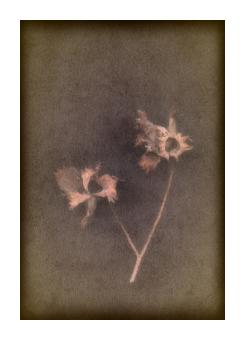
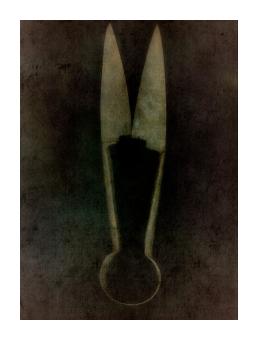
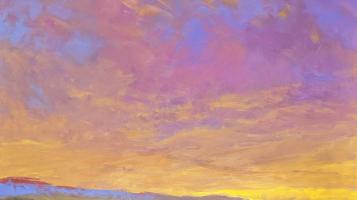
Carol Boucher
I have been a professional artist for over 20 years. I sell my oil pastel paintings, oils, acrylics and monotypes at juried art shows across the US. I am represented locally by Burlington City Arts and in Stonington, CT by Devon House Stonington Gallery. Love of color and landscape continue to fuel my creative process.
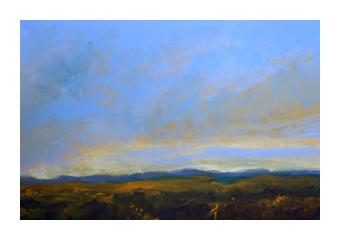
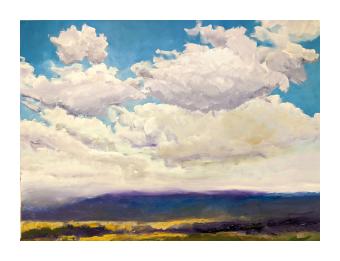
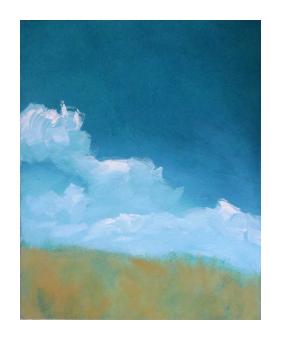
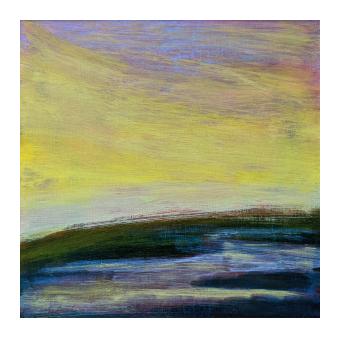
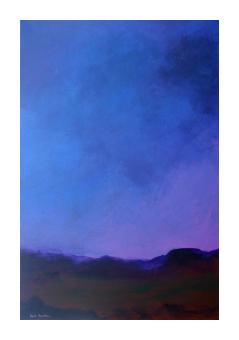
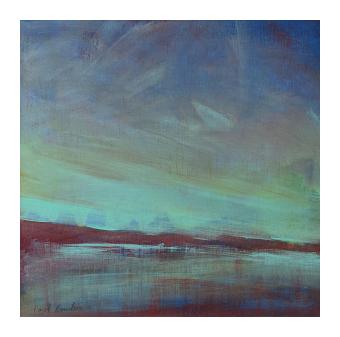
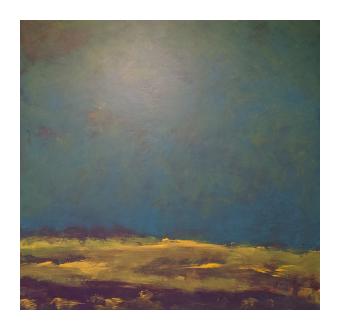
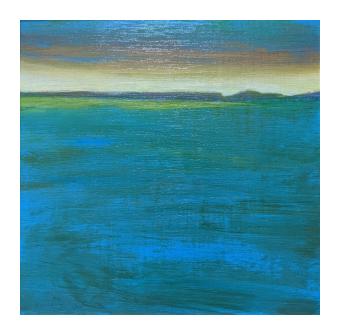
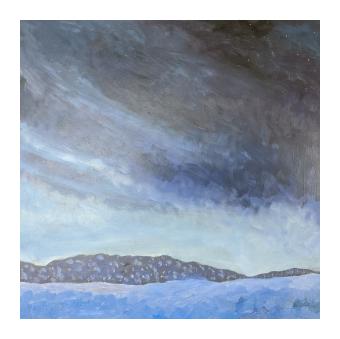
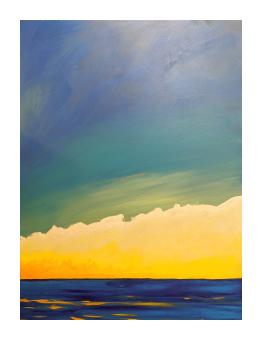
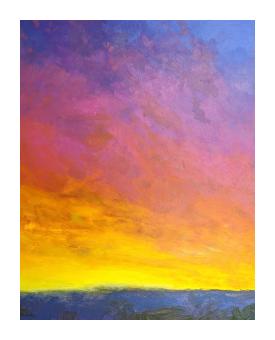
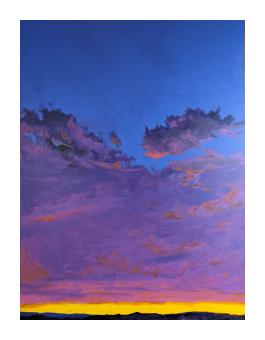
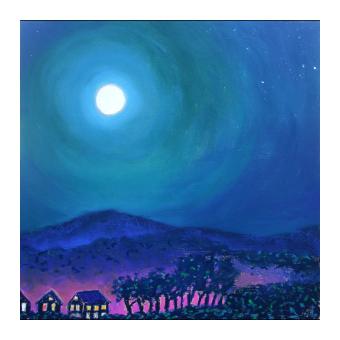
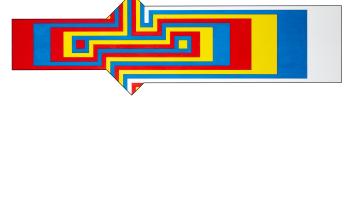
Scott Brown
Scott Brown studied art and music at St. Lawrence University and design at the University of Colorado-Denver. He lives on an island in northwestern Vermont with his wife and daughters. This is work that combines old and new hand drawing translated by machines. The whole is conceived evolved and resolved, broken into disparate elements. Each color is a unique and separate piece. Precise execution and hand craftsmanship created with Paintbrush and paint, reconstituted as a fully realized assemblage.
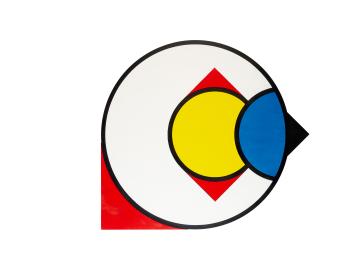
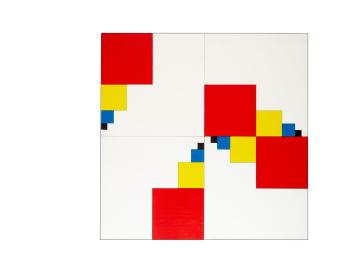
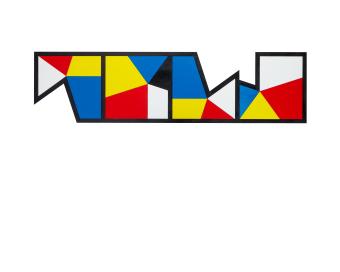
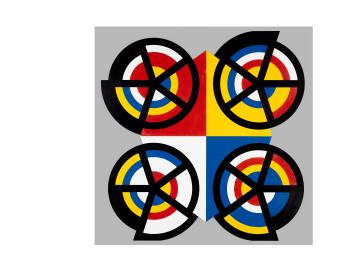
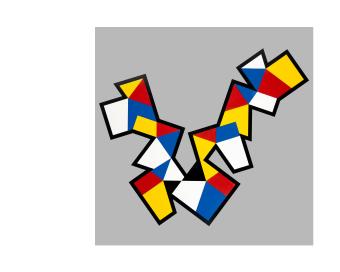
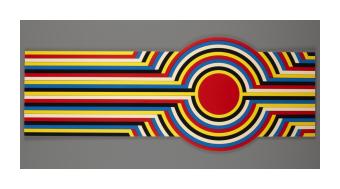
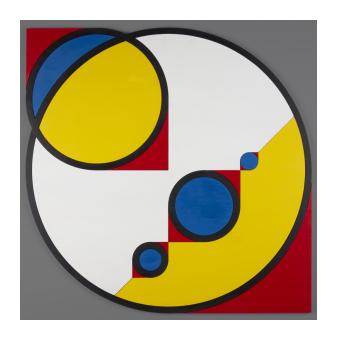
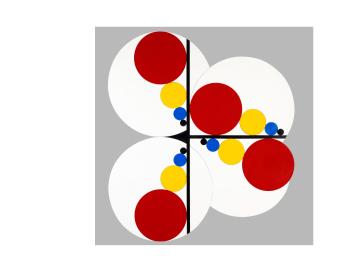
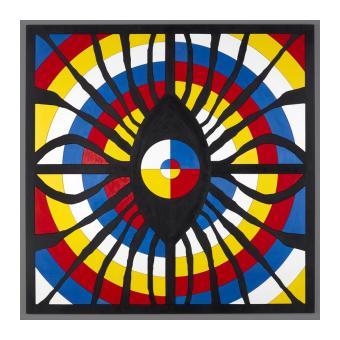
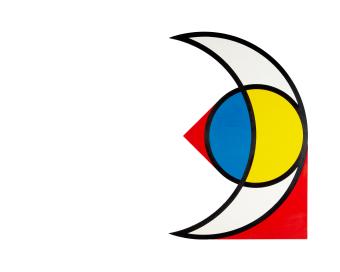
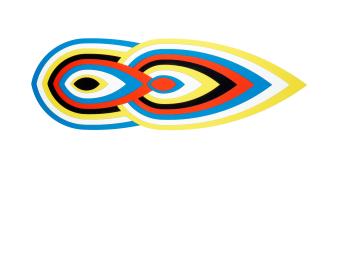
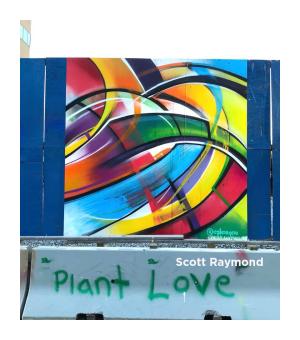
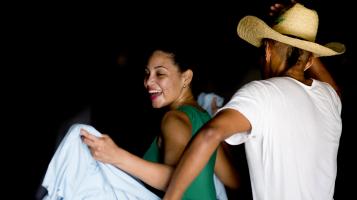
Elliot Burg
Elliot Burg is a photographer from Middlesex, Vermont. His photographs have been exhibited in Vermont, New Hampshire, Boston and New York City. Past shows have included The Combination (focusing on the amateur boxer Ali Watson); Sunset Park, Brooklyn (two days in the life of a city park); Seven Ways of Seeing (with the “f/7” collective, portraits of women from around the world); and Eli’s Town (recounting the search for a grandfather’s birthplace in Ukraine).
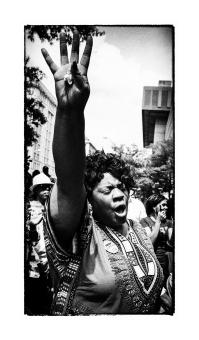
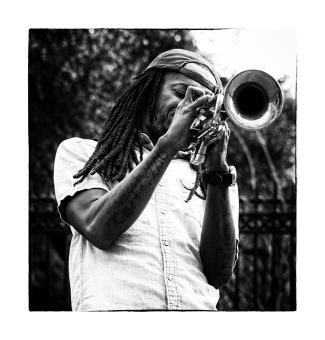
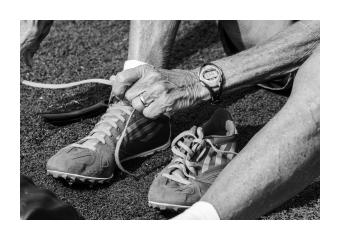
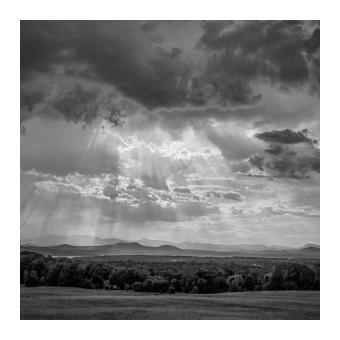
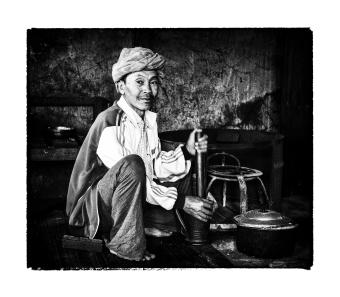
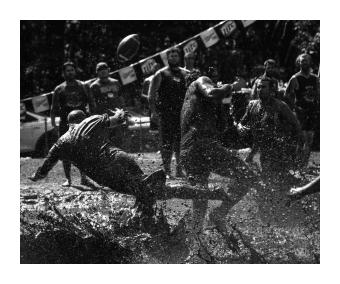
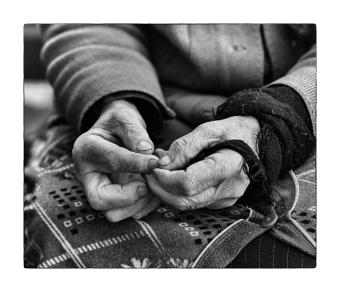
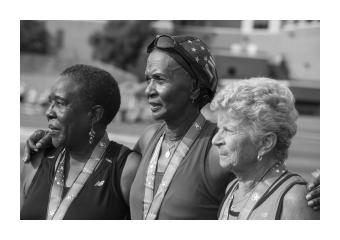
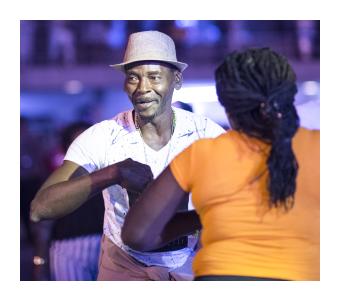
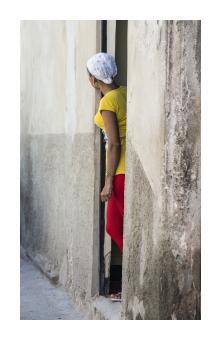
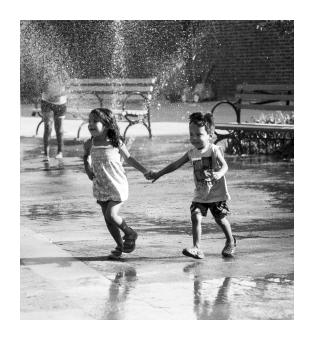
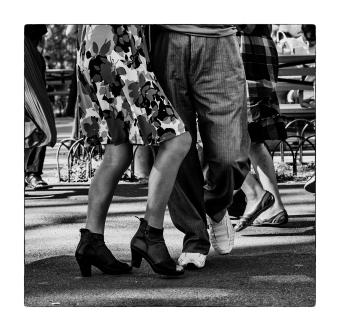
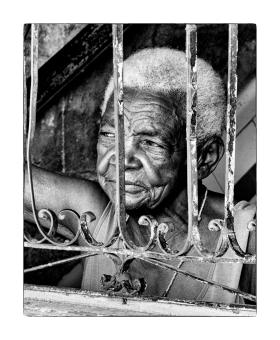
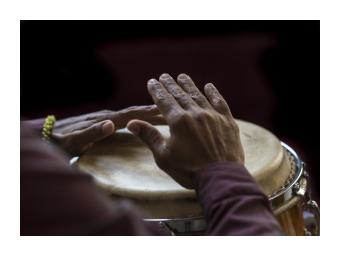
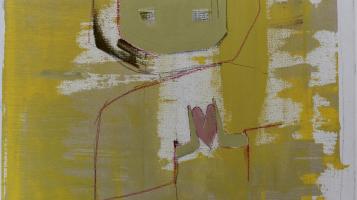
Kate Burnim
Kate Burnim is a Vermont based artist + illustrator who draws inspiriation from mid-century design + other periods of days gone by, wee creatures, the natural world, and the wild places within. She is stirred by the long needles of the red pine, the song of the morning dove, melody of the spring melt + the many forms of moss + lichen. And there, within her, is juxtaposed a love of the industrial- metal, train stations, rust, concrete, bridges, water towers + old brick factories. She works out of SnapWhistleStudio, in her Montpelier home where she dances the home studio dance, meeting and greeting the comings and goings of Rip-Sticking kids, big dog stalking little dog, harp blowing husband and twirling back into the colors and forms she is moving and shaking with at that moment. Kate lives with her partner in life Jacob Rogen, of Rogen Design Build, her daughter, her son, a german shepherd, called Sasha and a yorkipoo, who goes by Reuben. These are the Lil’Buddies. Each one is unique. Each figure different but the same. Every Lil’Buddy gazes forward with two eyes. Every Lil’Buddy wears a hood. Every Lil’Buddy holds a heart. My work is an attempt to engage with raw human emotion using line, texture, patterning and repetition of form. Informed by the weathering of human experience, the passage of time, the building up of layers and the scrapping away, my works looks to celebrate tender imperfections and juxtapose solidity, directness and vulnerability. The repetition of form is an integral part of my process. The parameters I set allow me to freely explore media and style but also subtleties, differences, personality, and feeling. There are many Lil’Buddies. For me, the Lil’Buddies have to do with solidarity, with offering, with the force that is the human heart.
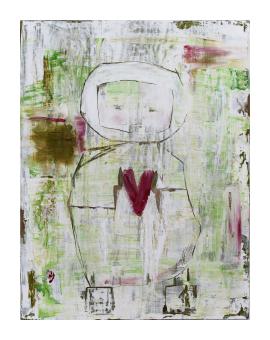
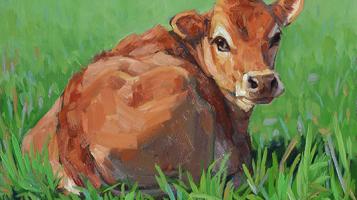
Stephanie Bush
Stephanie Bush is a Montreal native with an extensive exhibition record both nationally and internationally. She earned her MFA from the University of Waterloo, ON, with a minor in Women’s Studies. Currently, Bush resides in Vermont and divides her time between her professional art practice, teaching art and raising her young family. Bush is represented by the Clark Gallery in Lincoln. MA and The Trove Gallery in Park City, Utah. Cows are an everyday presence in my experience of Vermont, but they are largely peripheral. It was the desire to examine more closely that which is peripheral and overlooked, that lured me to look more closely at a being that shares my space and ecology. I grew up in the city of Montreal with only the occasional weekend or camp experience in the country, so cows are in many ways as foreign to me as a camel. The first thing that overwhelmed me when confronted with the actual presence of a cow, was simply their size, and this translates directly into the size of my canvases. Next was the strange experience, repeated again and again, of having them look directly at me. I had the unshakable feeling of being seen, and seen deeply. One can get lost in their eyes and so the gaze has become an integral part of the series, expressing the relationship between the witness and the witnessed. Long walks in the woods close to my home begin the process of finding inspiration for my series of paintings Winter. Bundled up against the cold, keenly aware of the sound of my breath and the crunching of my boots on snow in the otherwise utter stillness, these walks transcend into an awe-inspiring appreciation of nature. It is heartwarming to recognize that when the world is so quiet and restrained there is so much life to be found if I only take the time to look. Given our present political and global uncertainty I think we can all use a little serenity and reminder that there is beauty amongst the challenges.
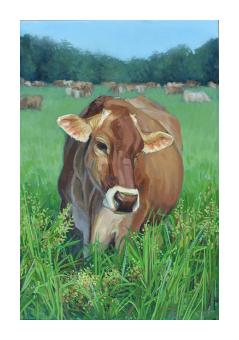
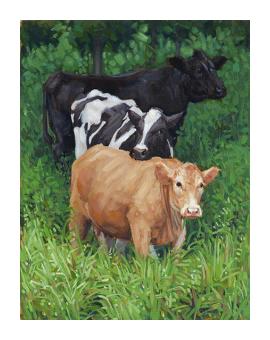
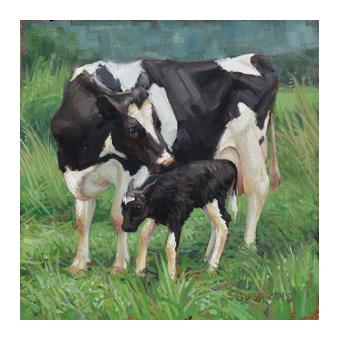
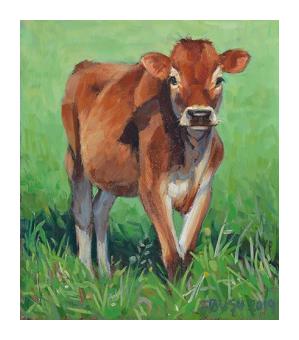
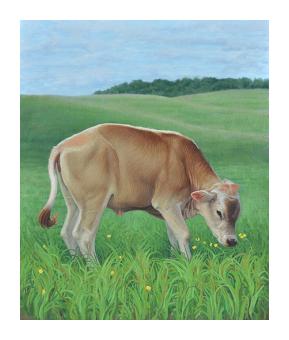
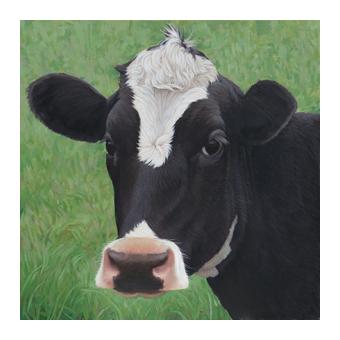
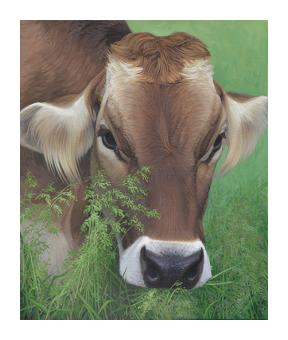
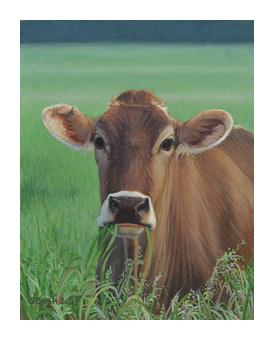
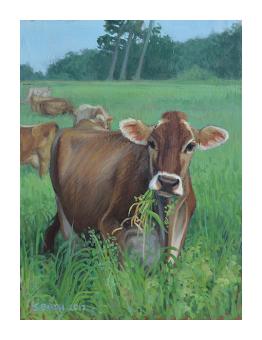
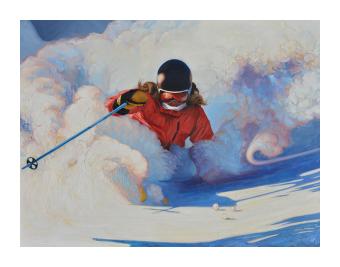
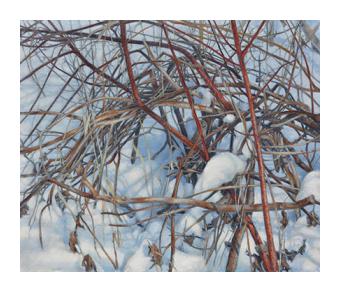
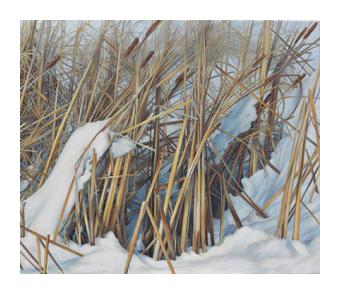
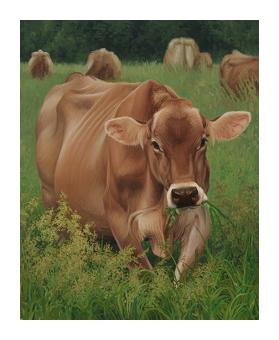
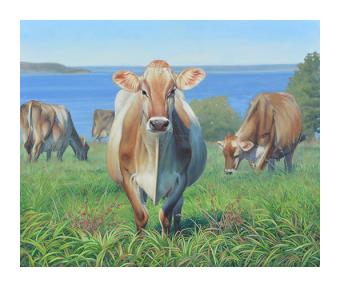
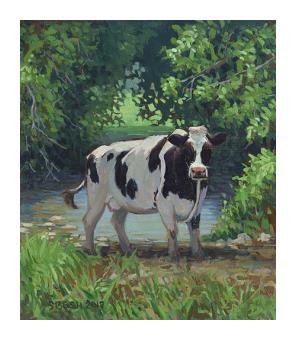
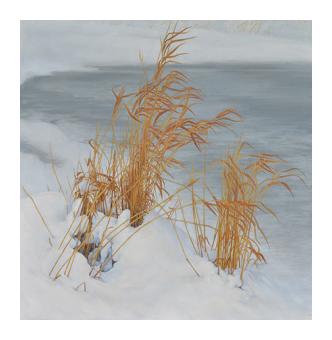
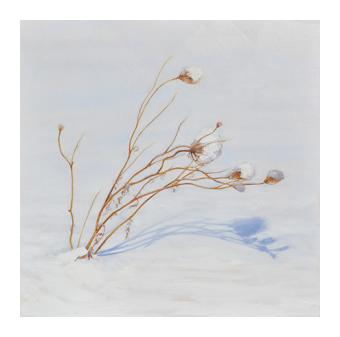
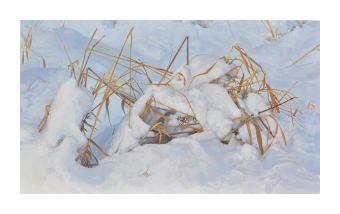
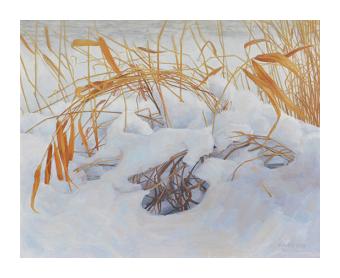

Nancy Calicchio
Nancy Calicchio seeks to capture the great beauty of Vermont’s landscape through her work. Her paintings reveal her fascination with the natural world - sky, mountains, hills, brooks and streams, trees and fields – as well as her interest in working farms. Painting outside in every season is a way of probing this world, of engaging all her senses in the scene.
When she sets up her easel, she searches for the play of light, for it is light and shadow that shape the form and light that reveals the color. She feels that when she is truly engaged in what she is painting, she becomes part of it. It is her greatest desire that this feeling will resonate through the painting to the viewer and bring to life the beauty and joy of our landscape.
In her square format Vermont Sky paintings, many of which are painted in the studio, she explores the relationship between earth and sky. She invites the viewer to feel the long view of the overlapping hills and the mysterious ambiguity of the far horizon as she searches to create the illusion of depth on a flat surface.
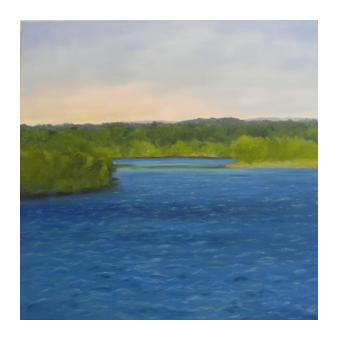
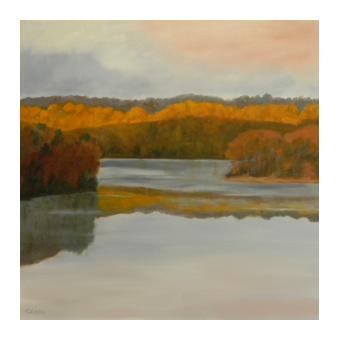
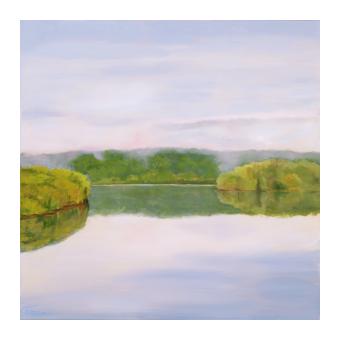
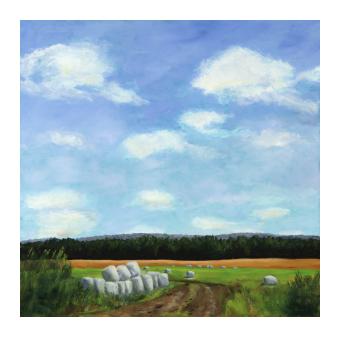
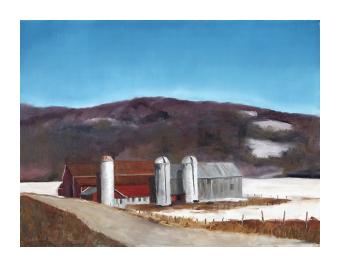
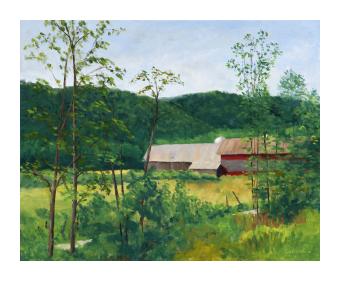
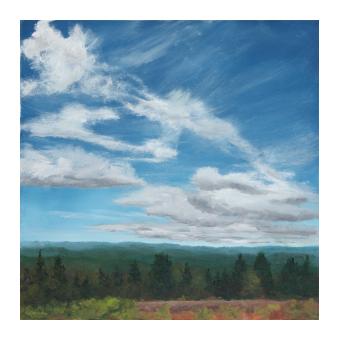
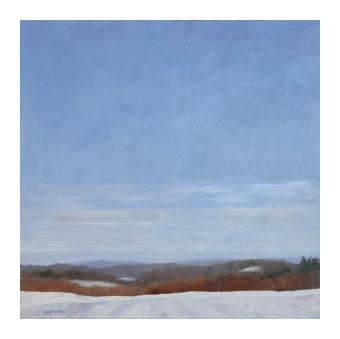
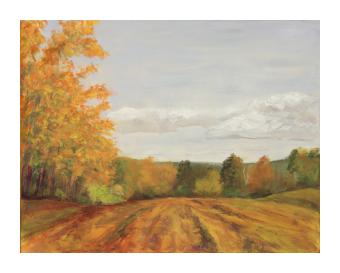
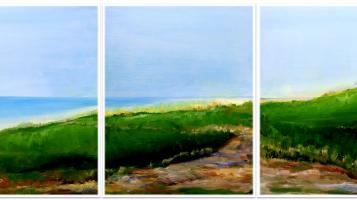
Nancy Chapman
My work is landscape based and stems from memory. I am aware of nature’s active dialogue. Painting can be a way for me to touch what cannot be literally touched. My work celebrates natural beauty through form, texture, line and color with oil paint on canvas and/or on paper. My goal is not to describe a scene for the viewer, but rather to render the setting’s spirit; to reveal the story.
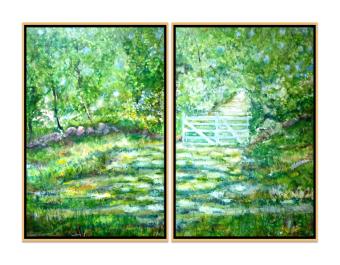
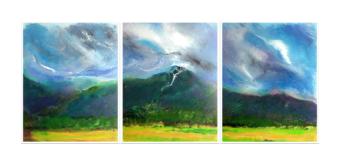
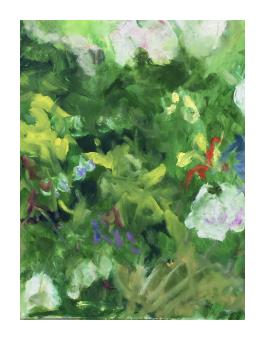
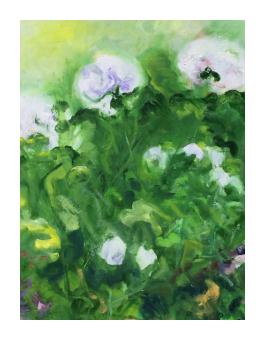
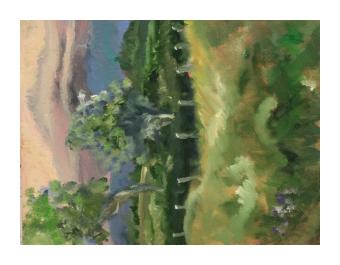
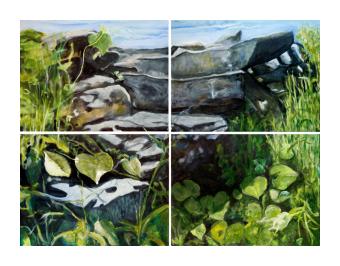
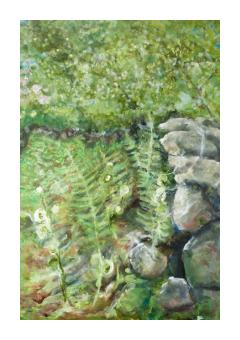
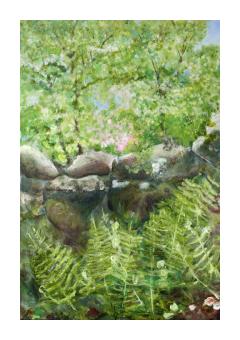
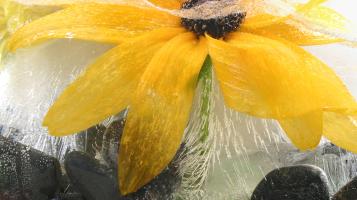
Krista Cheney
Inspired by the art of nature, Krista Cheney draws upon the unpredictable character of ice to create her frozen still life photographs. Fractures, fissures, and air bubbles add a new dimension to the ordinary objects that she encases within blocks of ice. Shooting throughout the thawing process, she captures the changing form of her subject—cracks, clouds, and crystals appear and vanish; rivulets of melt water streak down the sides. Ice distorts and highlights shapes, textures, and colors. The result is a photograph that is beautiful and visually stimulating. Krista Cheney is a native Vermonter, living in St. George, Vermont. She studied English and Agricultural Economics at the University of Vermont. She has studied photography since 2003, taking classes and workshops at local venues and the Maine Media Workshops in Rockport, Maine. Krista is a three-time finalist in the Photographer’s Forum magazine Annual Spring Photography Contest with her frozen still life images. Vermont exhibitions include the PhotoPlace Gallery in Middlebury, Studio Place Arts in Barre, the Darkroom Gallery in Essex Junction, Creative Space Gallery in Vergennes, Burlington’s Art’s Alive Festival of Fine Art and South End Art Hop, the Annual Vermont Photography Exhibit at the Round Barn in Waitsfield, the Mad River Valley Craft Fair, Vermont Craft Workers’ Essex Fall Craft Show, and Craftproducers’ Hildene Fall Festival. Krista’s work is also represented by Art On Main in Bristol, the Chaffee Art Center in Rutland, SEABA, and Marilyn’s in Burlington.
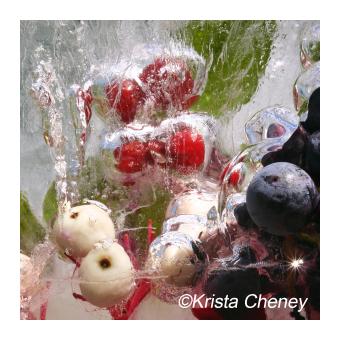
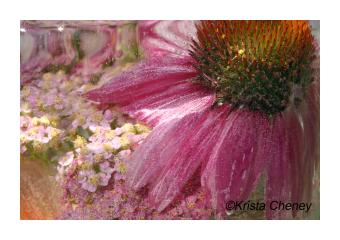
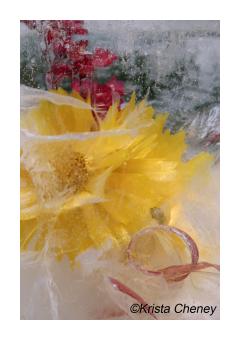
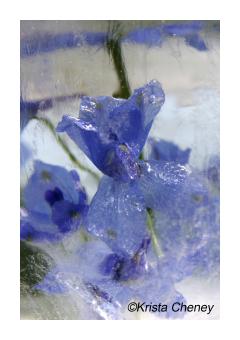
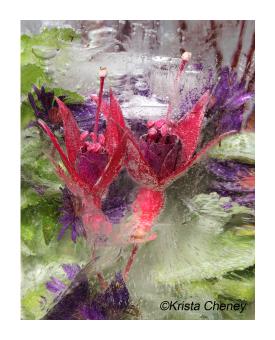
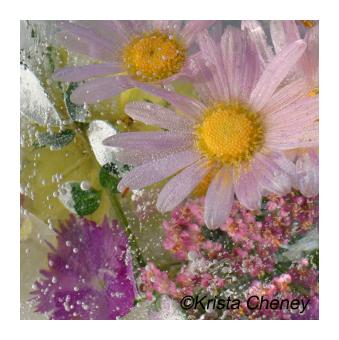
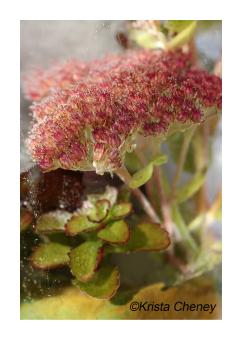
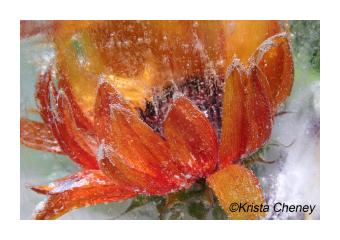
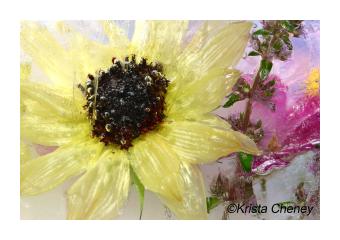
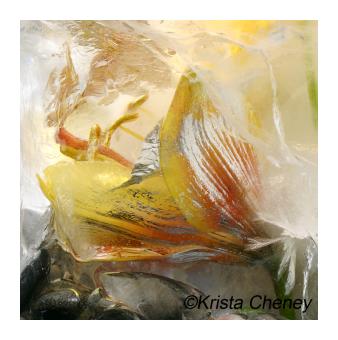
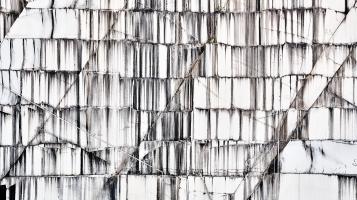
Bear Cieri
I am a Vermont based photographer focusing on social and cultural landscapes. Of particular interest is the realm where humans and nature mingle. Whether it is mastery of the environment, or struggles amidst the overwhelming dominance of mother nature, my passion is to capture the connection between the environment and the human condition at work, play and rest.
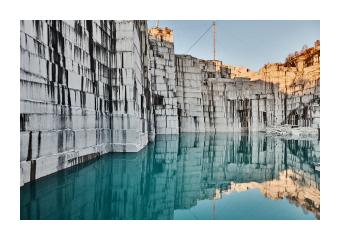
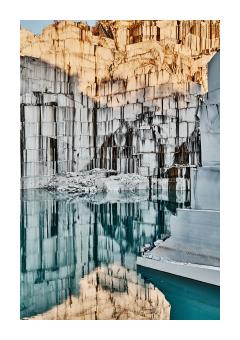
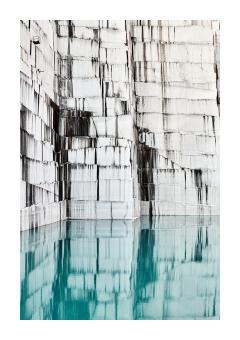
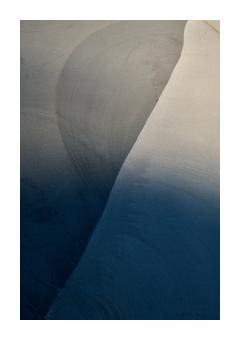
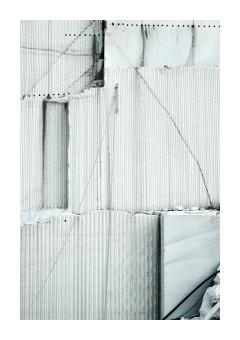
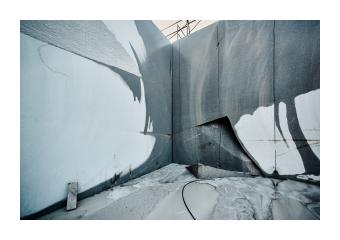
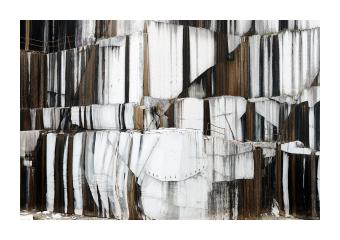
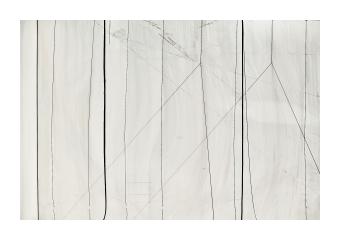
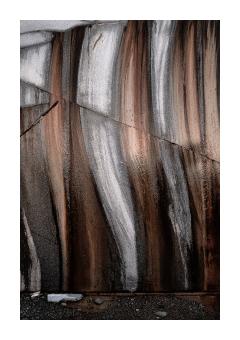
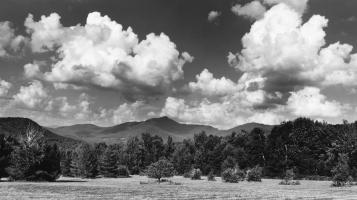
Jeff Clarke
I have always felt an immediate spiritual connection with the wilderness and while exploring and communing there I often see compositions that strike a chord within me. To capture the music of each scene with my camera is especially thrilling and satisfying. When I transform the images into finished prints, their harmonies continue to resonate within me, and I enjoy sharing them with others. I moved to Burlington, Vermont in 1985 in search of a lifestyle that included mountains and a large body of water. My formal training in photography is from the Art Institute of Fort Lauderdale where I earned a degree in underwater and commercial photography. I also graduated from the State University of New York in Plattsburgh with a degree in Environmental Science. I was a staff photographer at the University of Georgia for five years, and then opened a commercial photography studio in Burlington, VT.
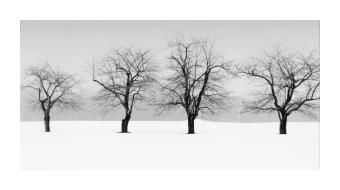
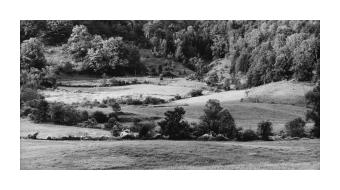
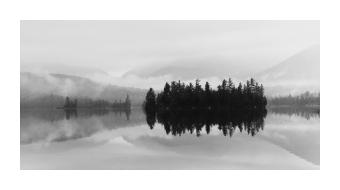
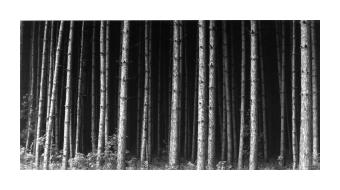
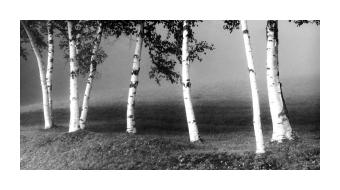
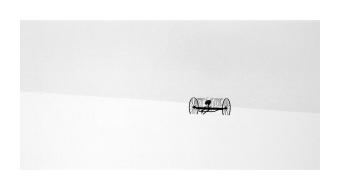
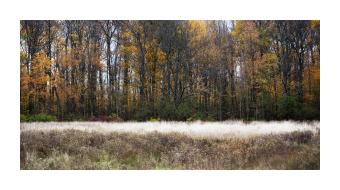
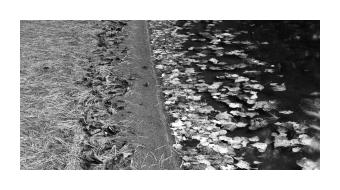
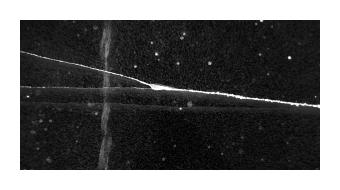
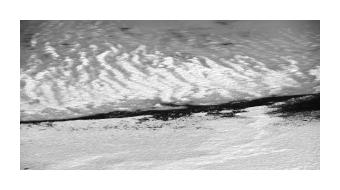
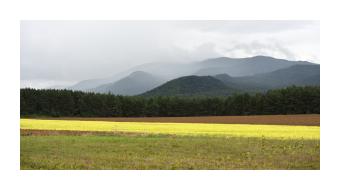
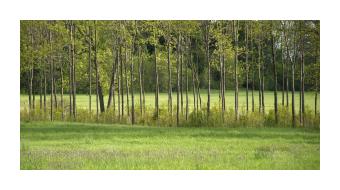
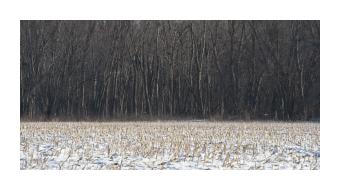
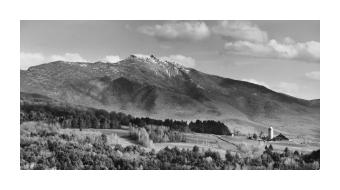
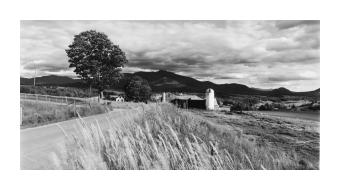
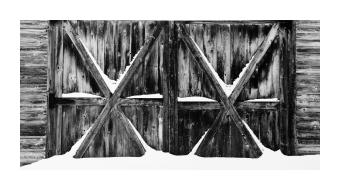
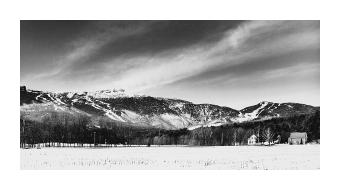
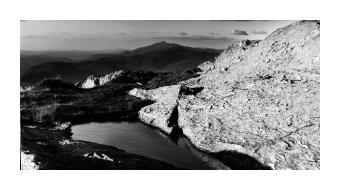
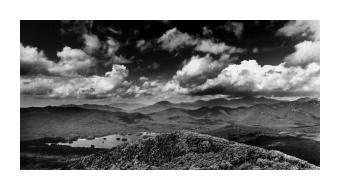
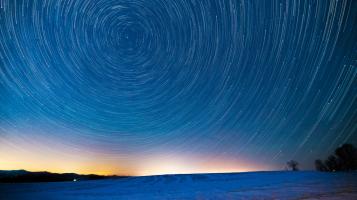
Mark Collier
Photographer Mark Collier entered the world of photography at age 10, when his mother, a Vermont school teacher, brought home a camera and darkroom kit in an effort to keep her chronically bored son occupied during Barre Town Elementary School’s long summer vacation. After spending the next two and a half months photographing everything in sight, Mark realized he had found his calling, and began to pursue photography in earnest. After graduating from Spaulding High School in Barre, Vt., Mark studied photography and art at Johnson State College before enrolling in the adult degree program at Vermont College of Norwich University. His work was first published in the Washington World and Hardwick Gazette. From there he moved on to the Burlington Free Press and the Times Argus, later transitioning from photojournalism to commercial photography and digital image editing. His clientele included Sloan Marketing, Jager, DiPalo, Kemp Design, Burch and Company, as well as freelancing for about six years. In 2011, Mark returned to the Times Argus and his roots as a photojournalist. In 2013 Mark made to move to Norwich University, becoming the University’s staff photographer. Mark is widely published, his photographs having appeared in The Washington Post, The Associated Press, The Dallas Morning News, CNN.com, CNN, The Times Argus, The Albany Times Union, Ski Racing Magazine, The St. Johns Telegraph Journal, Dreamstime.com, The Post Standard, The New Orleans Times-Picayune, The Burlington Free Press, The Wilkes-Barre Times Leader, The Bangor Daily News, The Caledonian Record, The Hardwick Gazette, The Syracuse Post Standard, The Springfield News-Sun, The New York Times Magazine, The L.A. Morning News, Architectuaral Digest, Elle Decore, Dwell, Southern Accents, The Boston Globe Magazine, In Style, The Boston Globe, The New York Times, US Airways Magazine, The Gurdian, Democracy NOW!, The Dallas Morning News, USA today, The San Jose Mercury News, India Today, and many, many others.
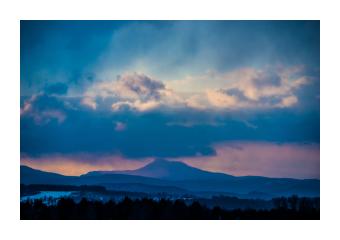
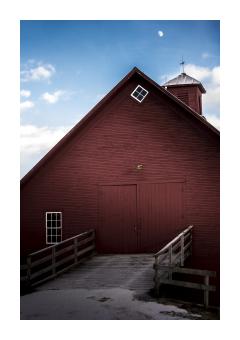
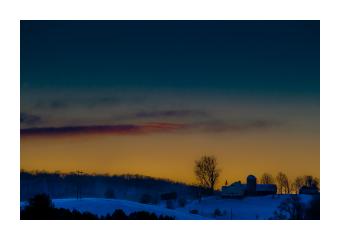

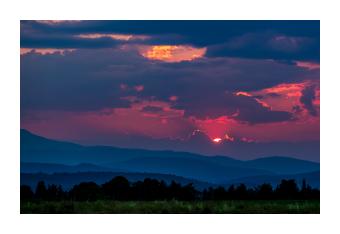
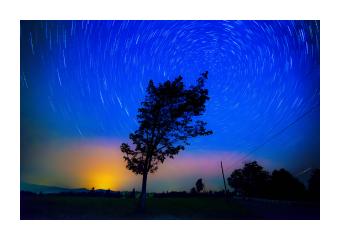
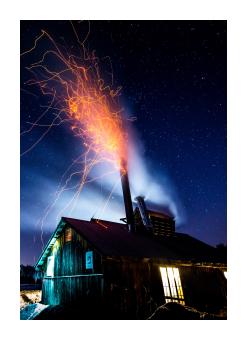
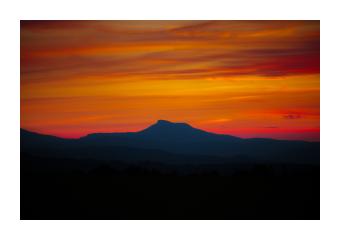
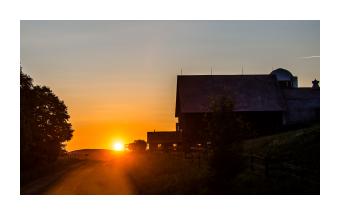
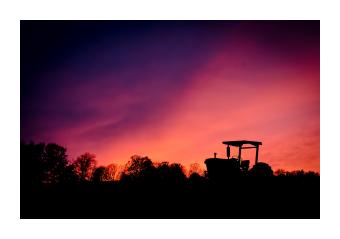
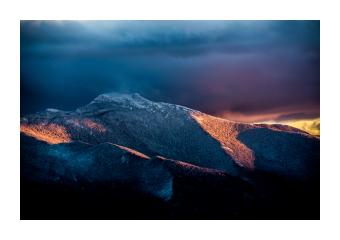
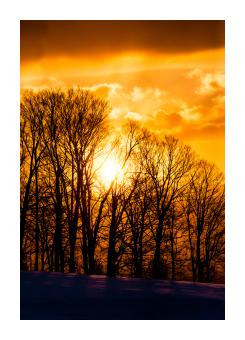
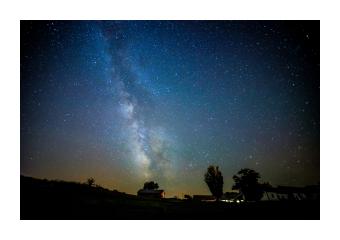
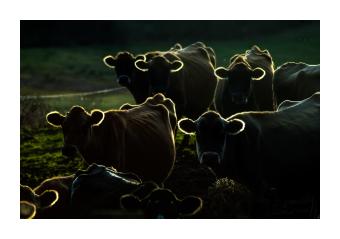
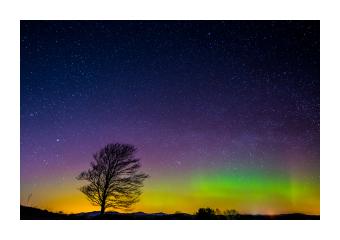
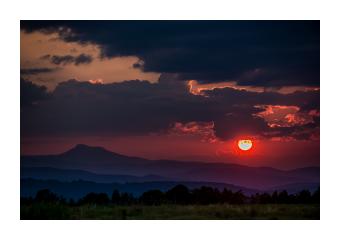
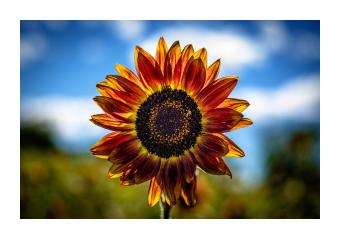
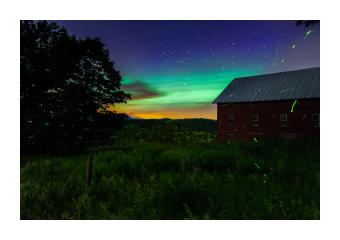
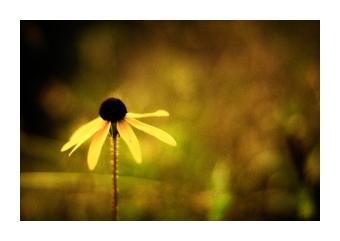
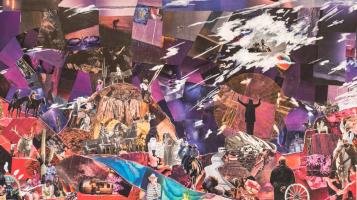
Vanessa Compton
Vanessa Compton grew up in the woods of Vermont & New Hampshire where her father, a professional singersongwriter, and her artist mother inspired her to start creating at an early age. She devoted her school years to studying theater, sculpture, cello and world music. She spent a semester living in Dakar, Senegal where shestudied the kora and performed with several West African and reggae bands. She fell in love with climbing 15 years ago and moved to the American West graduating with a Bachelor of Fine Arts from CU-Boulder. After living and teaching art in Colorado for nearly a decade Vanessa transitioned to a largely nomadic lifestyle focused on art and climbing. She has climbed extensively throughout the lower 48, France, Greece, and South Africa, making art all along the way on her rest days. Surrealistic landscapes have featured predominantly in my work. Time is meant to be on the loose, with past, present and future existing simultaneously. A major inspiration is migration. I focus on the luxation of figures and structures through landscapes of epic quality and interminable horizons. These are beautiful, dislocated worlds that live behind the gauzy film of dreams. Through collage I birth brave new worlds for discarded paper forms and the creation of these entirely disparate realities weighs on me with humility and wildness. These worlds celebrate lives lived in non-normative existence. These are worlds caught between shifting dimensions, full of myth and contrast! Vanessa currently spends part of the year co-managing a seasonal art gallery in Vermont’s rural Northeast Kingdom and the other guiding in Hueco Tanks State Park & Historic Site and climbing throughout the American West.
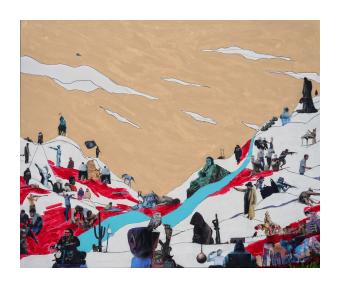
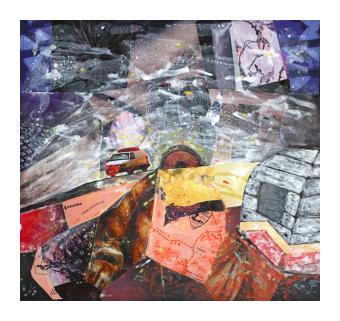
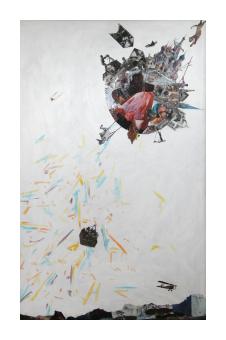
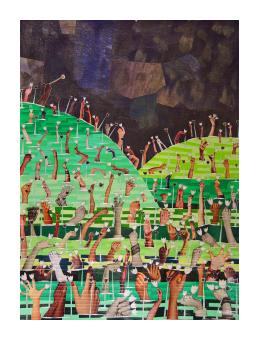
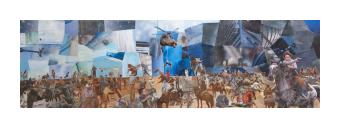
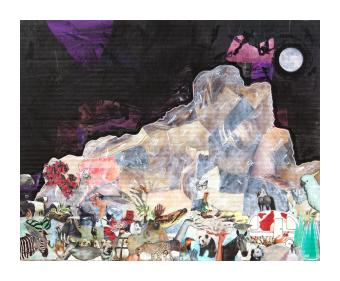
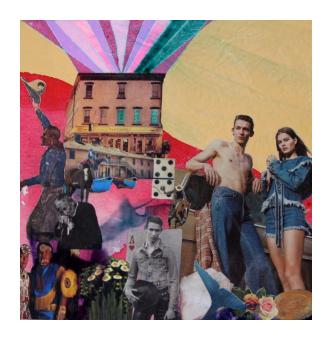
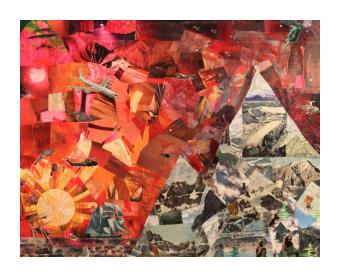
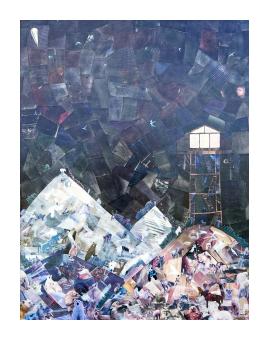
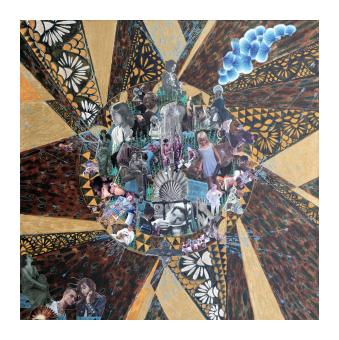
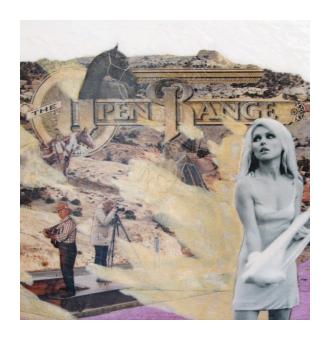
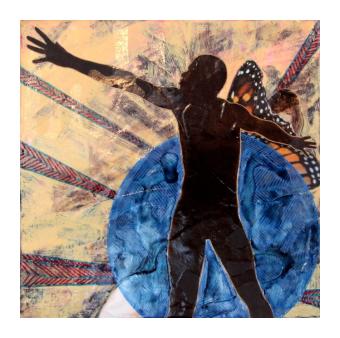
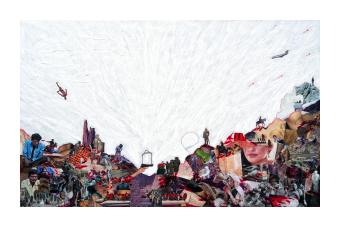
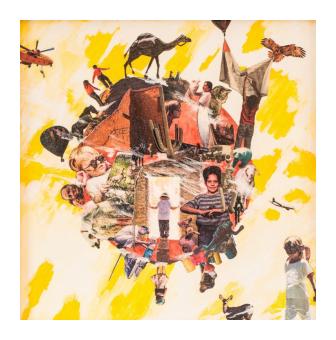
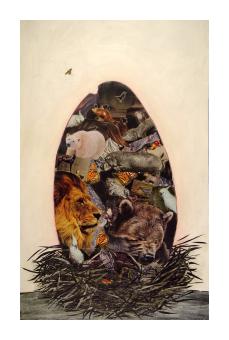
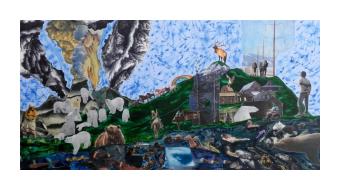
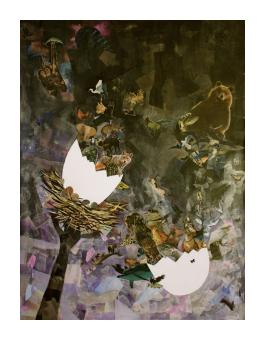
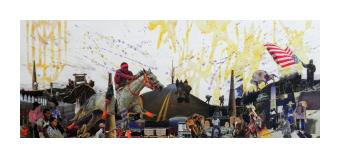
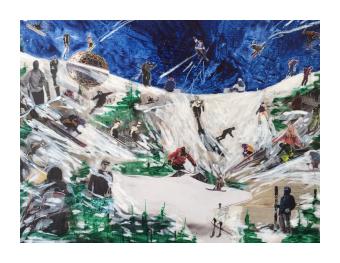
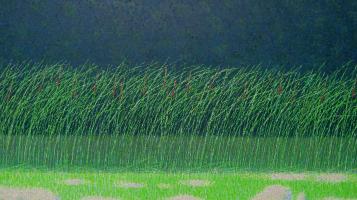
Bruce Conklin
During my working life, I have been involved in various aspects of design and implementation. These have manifested as aerospace hardware design, graphic design, photography and illustration, museum exhibit design and, most recently, as a working chef. My days now are divided between painting in the mornings and cooking at Vermont Respite House in the afternoons. I am a self-taught painter, working primarily in the studio. My painting is heavily influenced by the Impressionists and by more recent painters as diverse as Milton Avery, Giorgio Morandi, Vilhelm Hammershoi and Avigdor Arikha.
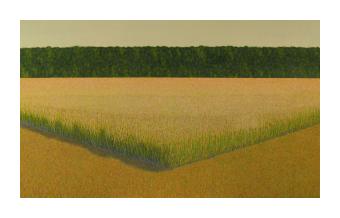
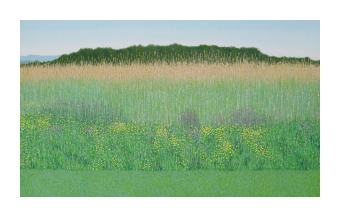
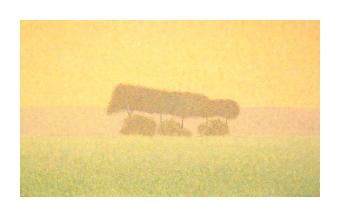
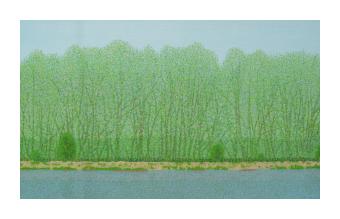
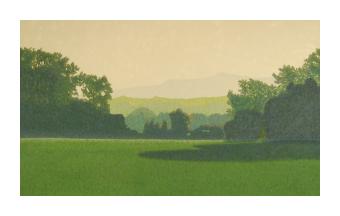
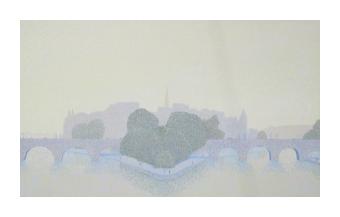
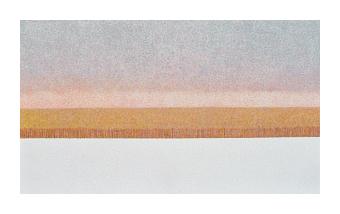
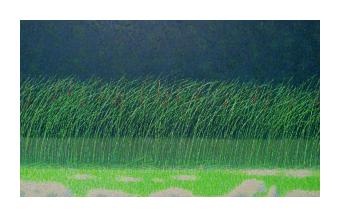
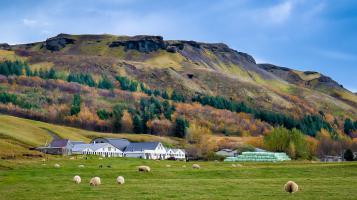
Michael Couture
Michael has long been interested in and involved in the creative process, starting in 1967 in music as a member of a rock band, then on to engineering and producing music as an owner of the first multitrack recording studio and record company in Vermont. Video post-production and special effects followed, working on historical documentaries for many of the national cable networks which has evolved into specializing in digital media of many disciplines. He continues with his consultancy to work on documentaries, digital special effects, and archival photo restoration. Continuing his longtime passion for photography and the study of composition, texture, and color in images, Michael shoots digitally and uses many of his images and others as models for his watercolor paintings. He notes, “The creative process, while painting, leave me in awe as to how 8 hours can evaporate as the forms and colors appear on the paper. So satisfying!!”
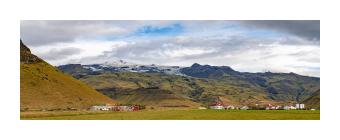
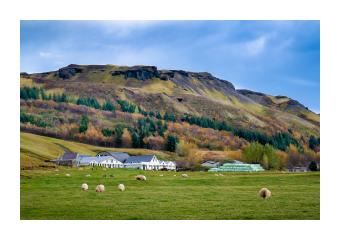
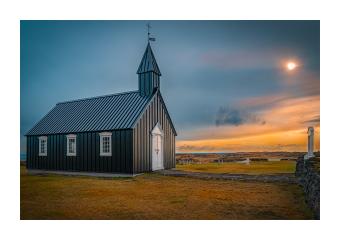
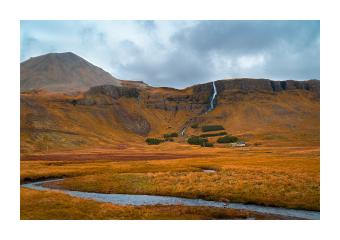
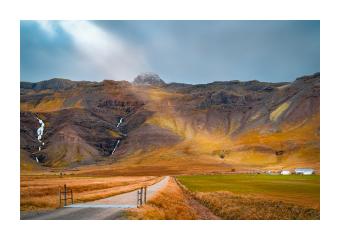
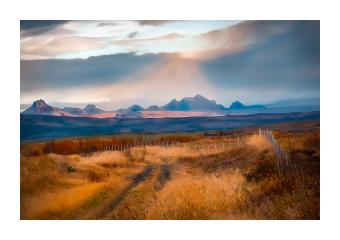
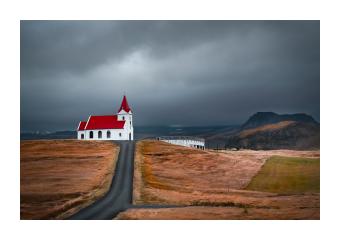
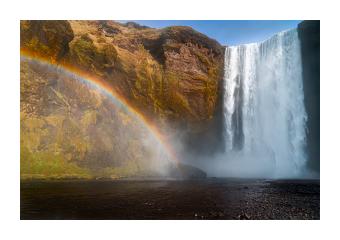
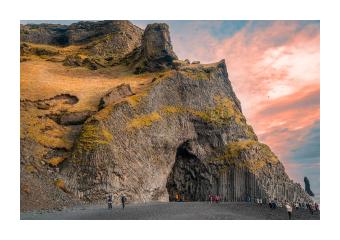
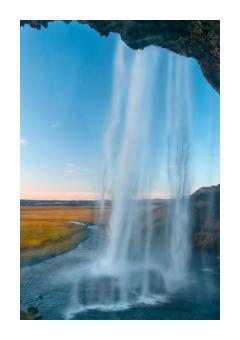
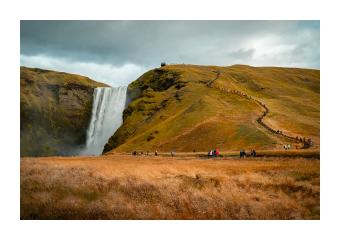
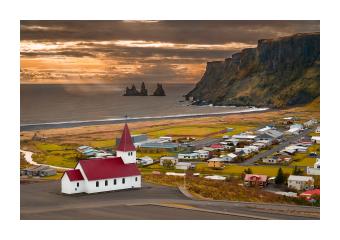
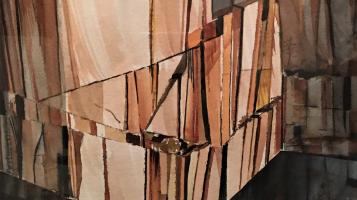
Tom Cullins
Tom Cullins, a fourth-generation Vermonter, started painting and photography as a young child. This passion for art led him to the profession of architecture. After graduating from Syracuse University with a bachelor of architecture in 1967, he went on to the Graduate School of Design's Master Class in Architecture at Harvard University. In 1968, Tom moved back to Burlington to pursue architecture and in 1976 became a senior partner in Truex Cullins Architects. Over 40 years he designed numerous award-winning buildings locally, nationally, and internationally. For four years, Tom left his Burlington firm to head a 50-person international architectural firm in Athens, Greece, designing major projects throughout the Middle East. He rejoined the Burlington firm as a senior partner in 1990 and retired in 2006. Throughout his architectural and retirement years, Tom has also pursued his lifelong passion for painting and photography, winning 18 national photography competition awards from the American Institute of Architects and exhibiting his paintings both locally and in Greece where he has summered with this family since 1994. Tom's paintings range from representational to abstract and although mainly a watercolorist, his recent work is in multiple mediums. During past residences at the Vermont Studio Center, he has created small, abstract wood sculptures that reflect both is architecture and his current abstract, geometric painting.
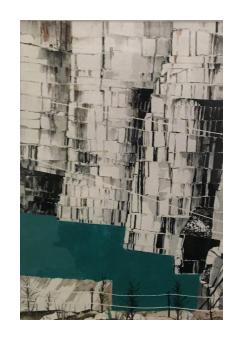
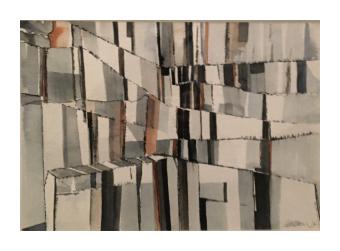
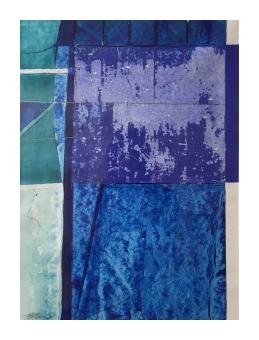
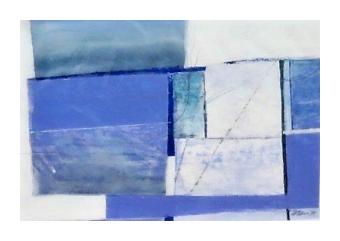
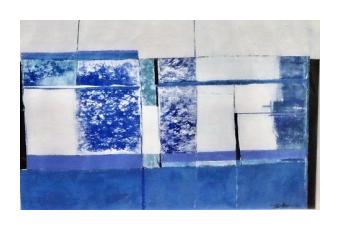
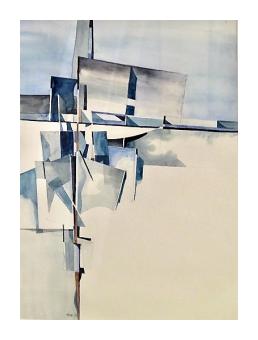
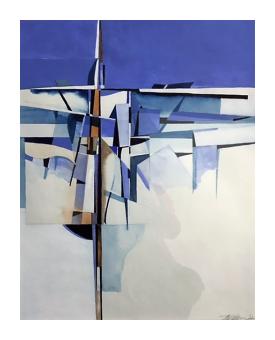
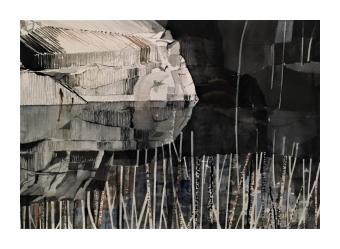
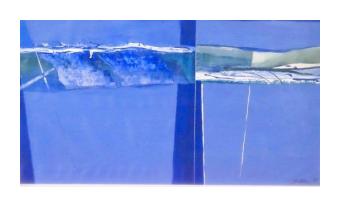
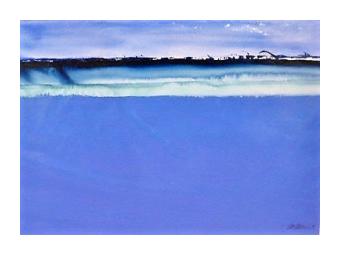
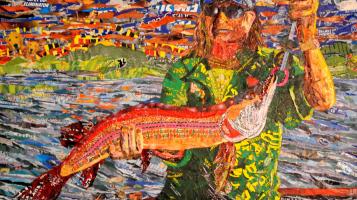
Anne Cummings
Eco-Artist Anne Cummings creates from her conviction to reduce, reuse, and recycle. Most of her works use exclusively post-consumer waste as her artistic medium. Her intent is to raise awareness about the volume of human waste we create, and its toll on places of natural beauty, even in a state considered as ‘green’ as her home state of Vermont, as well as to use her eco-art to support environmental causes. Anne’s involvement in the arts has been a lifelong pursuit. Anne has worked professionally in the arts in many capacities. She has been a business owner, exhibition coordinator and designer, museum store manager, artists’ representative, graphic artist, grants writer, member of a fiber artists’ cooperative, and art consultant. Anne holds undergraduate degrees in studio art and art history from Ohio University and a Master’s degree from Saint Michael’s College in Creative Arts in Education. She is currently an art educator in Vermont and a working studio artist.
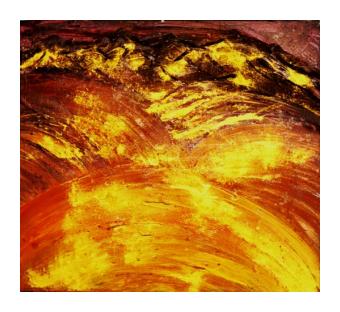
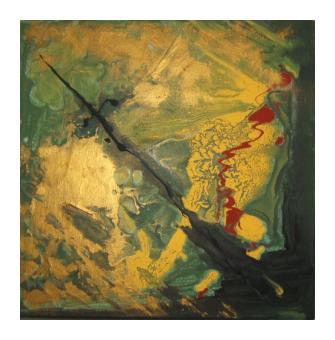
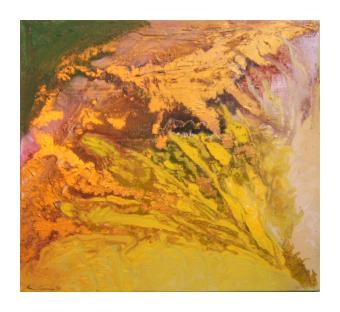
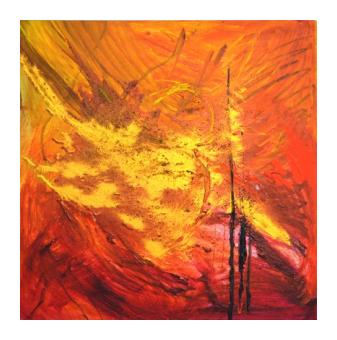
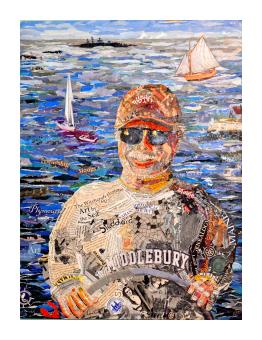
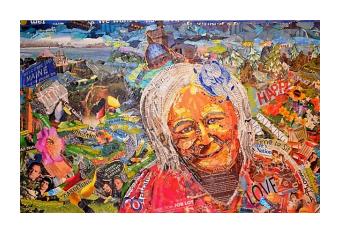
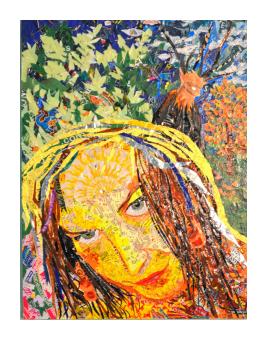
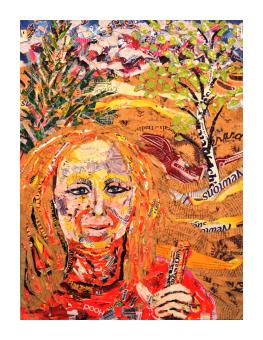
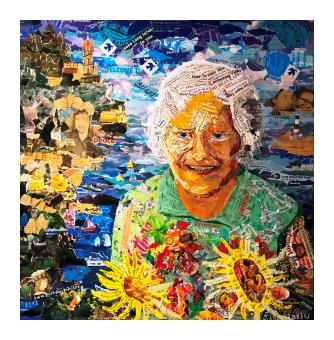
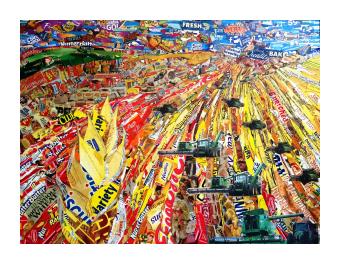
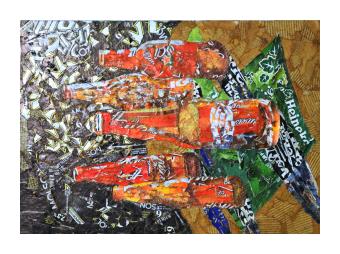
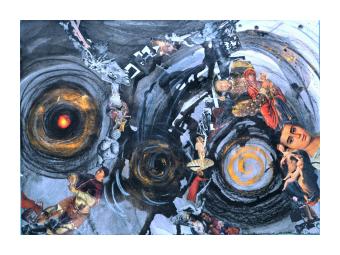
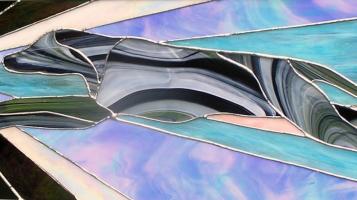
Evi Cundiff
I create scenes in stained glass. I go for humor, usually, and beauty.Soul searching—your soul, or my soul—is optional. I do the occasional dark or edgy piece, but even there, angst is optional. I do a lot of pet portraits. With those, I try to depict a special moment. A snapshot, inglass. Stained glass, strangely, seems to capture animal essence excellently. The stillness that animals achieve lends itself to the crispness of glass. Moments, seized.Virtually all my pieces include animals, from paramecia to whales, with the occasional megalith or cupcake thrown in. Stained glass is not the most malleable of materials, and I like breaking its rules. It started with a used tennis ball inserted in the mouth of a stained glass Labrador Retriever, and I haven’t looked back. Besides every kind of pet toy, I have glass coming out of glass—glass icicles, glass megaliths, glass dolphins, the first 10 digits of Pi doing the Conga, all inserted at right angles to the panel. My goal is to create art thatyou’ll look at for more that a few seconds—to dwell there,looking for details, or just looking for pleasure.
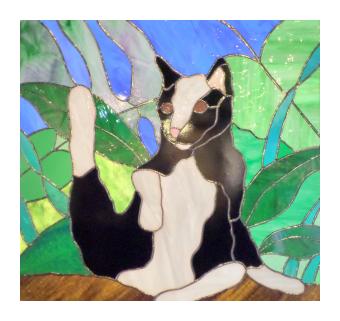
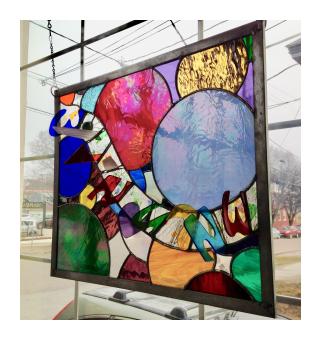
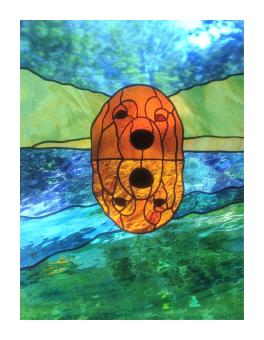
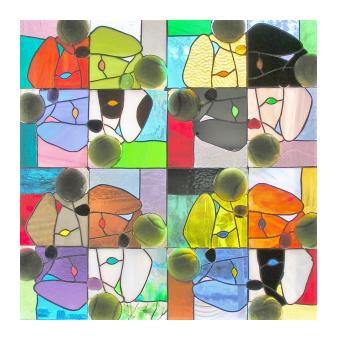
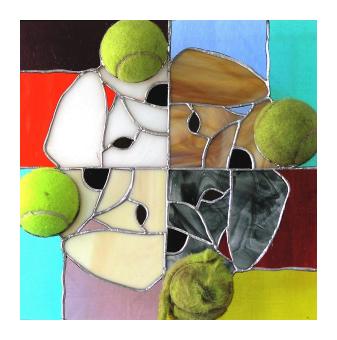
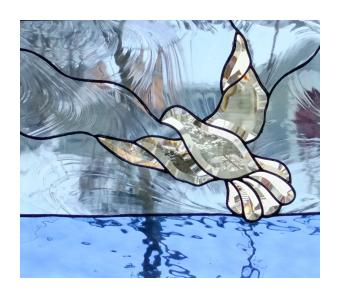
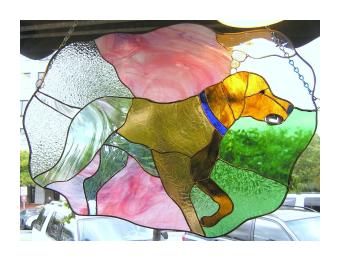
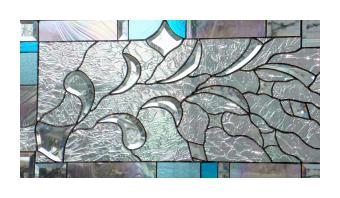
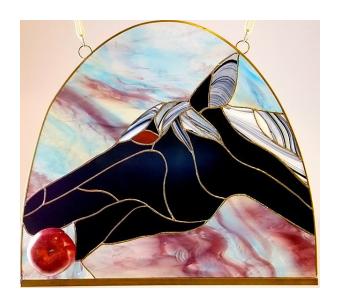
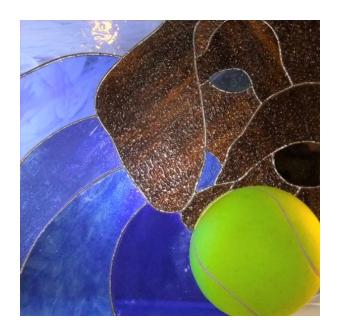
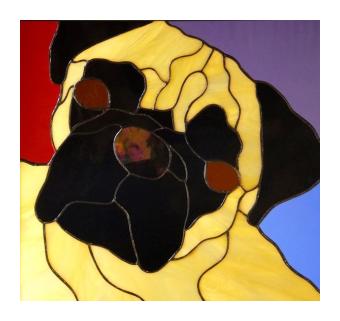
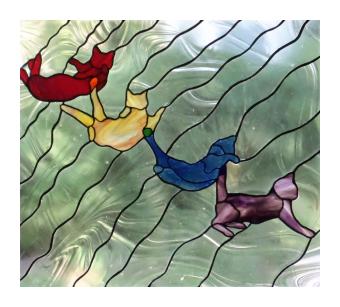
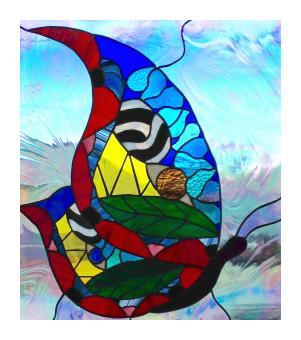
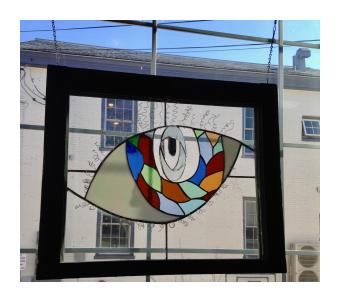
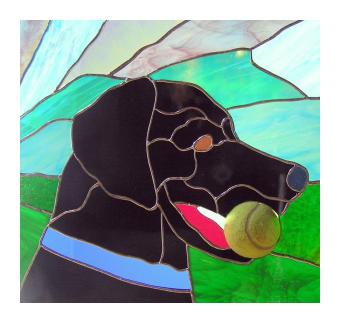
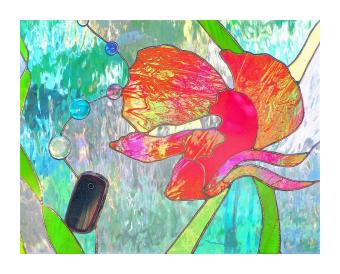
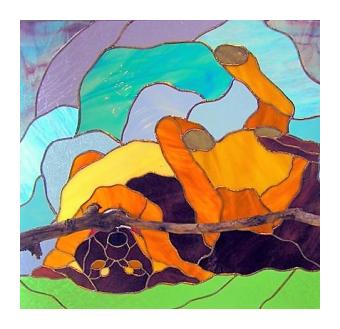
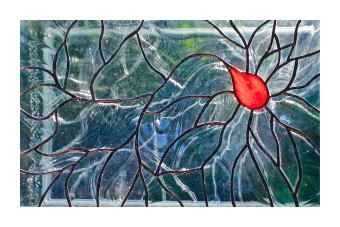
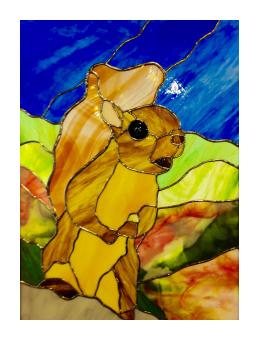
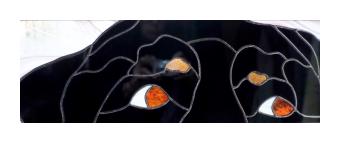
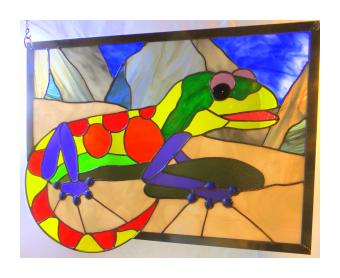
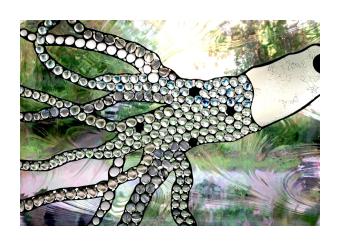
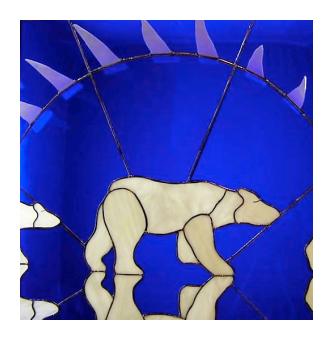
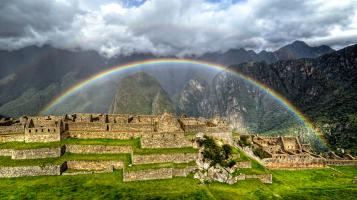
Greg Danford
I have always believed that the best investment you can make in your photography is plane tickets. I’ve been fortunate to have traveled through Central and South America, the Middle East, Africa, and many parts of the U.S. I hope you enjoy my take on the world. While I’ve been lucky enough to travel to some exotic places around the world, I feel just as lucky that each trip ends in my home state of Vermont. I love this state not just for its scenic beauty but for the seasons that make all my favorite places feel new throughout the year. As a long-time resident of Burlington, I’ve always been particularly inspired by Lake Champlain and the surrounding Adirondacks, where the sky does something different every night. I hope you enjoy a window into a little of what I see here every day.
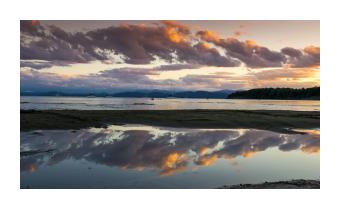
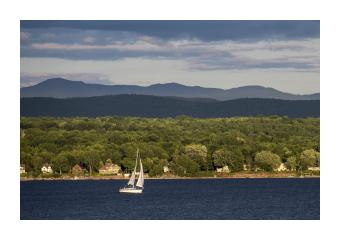
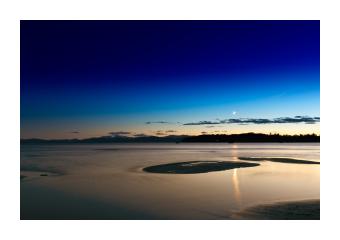
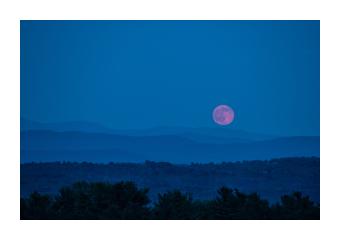
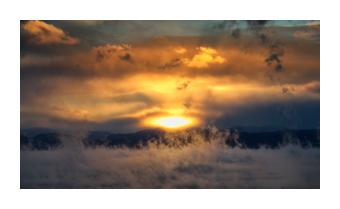
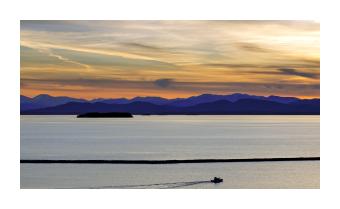
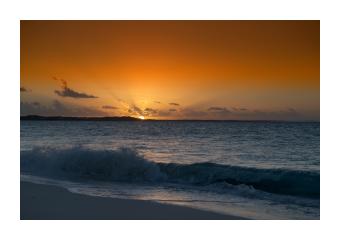
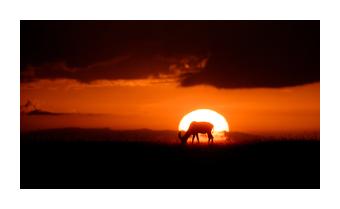
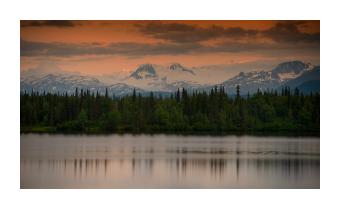
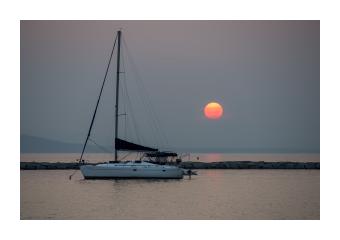
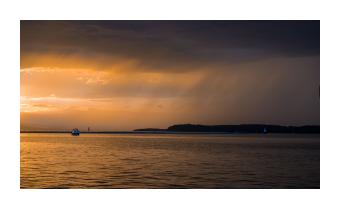
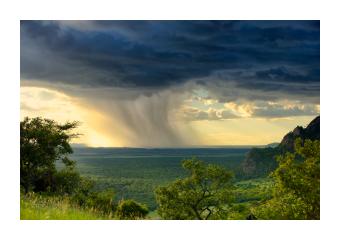
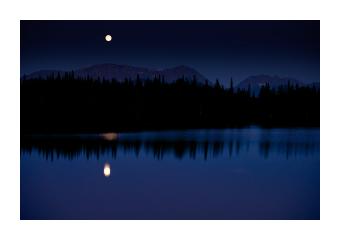
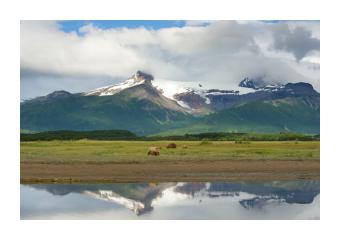
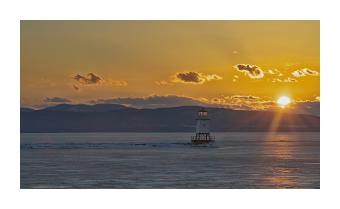
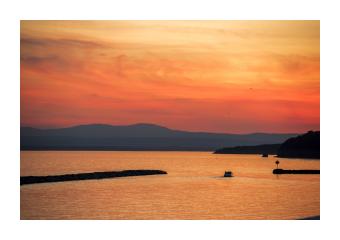
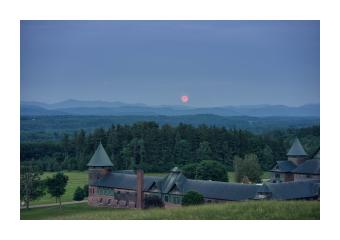
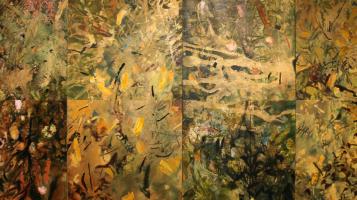
Cameron Davis
My work includes paintings, installations, and community art projects informed by the exploration of the human/nature relationship and my sense of urgency about the unraveling of our social and environmental systems. I consider the solitary practice of painting as the essential conversation from which the public community projects evolve. I live in Vermont and I teach at the University of Vermont within the Department of Art and Art History as well as the Environmental Program and the Institute for Global Sustainability.
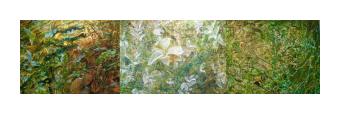
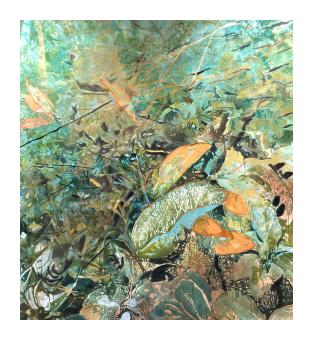
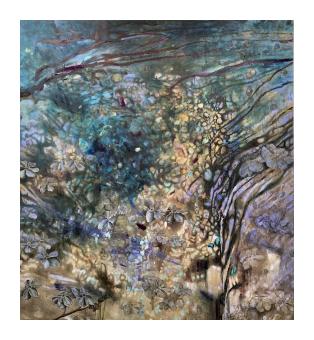
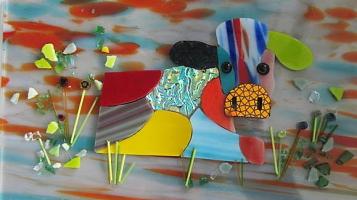
Maxine Davis
Color is my passion and glass is my medium. It explodes onto glass canvases (panels), bowls, clocks, drawer knobs/pulls, masks, cityscapes, jewelry, and anything that fusible glass can become.
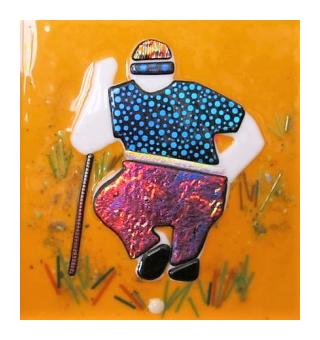
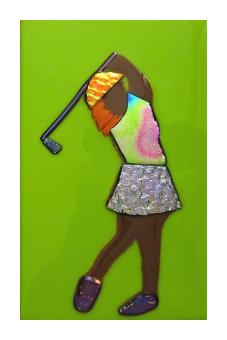
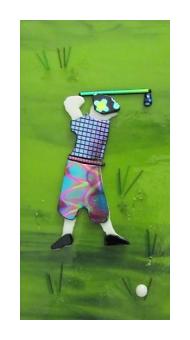
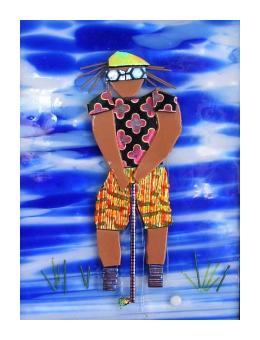
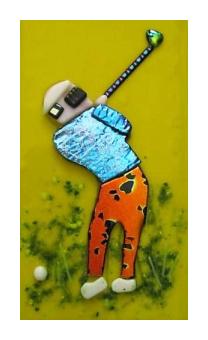
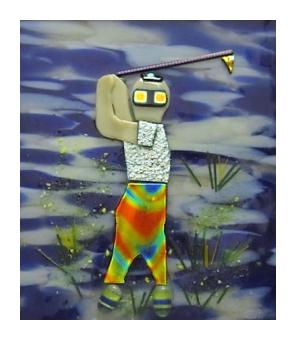
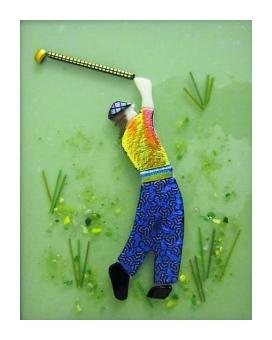
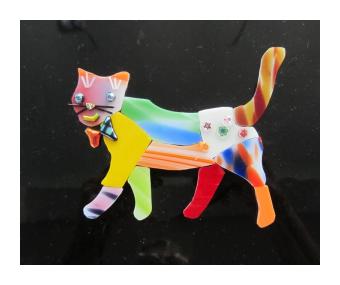
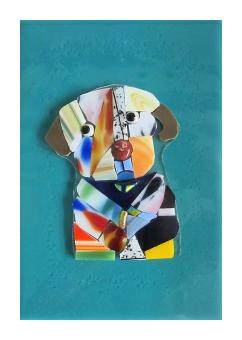
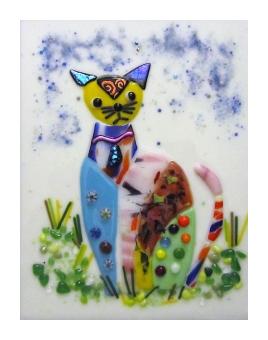
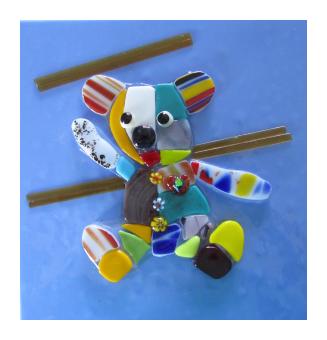
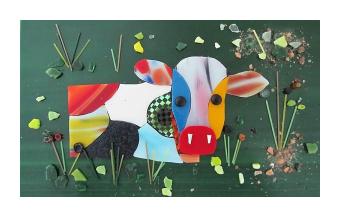
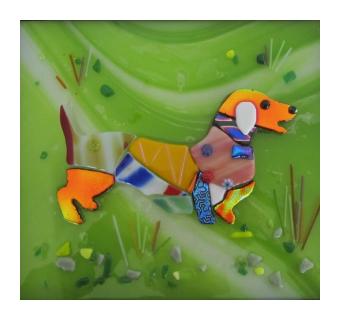
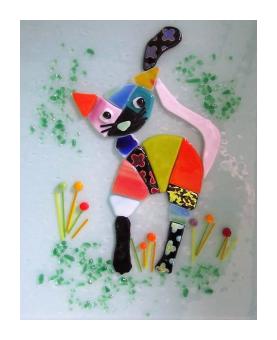
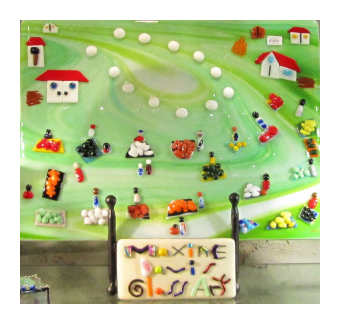
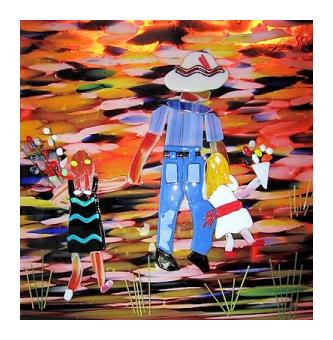
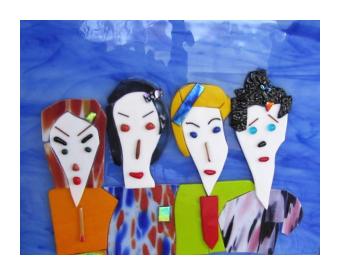
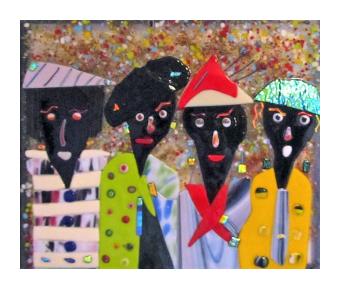
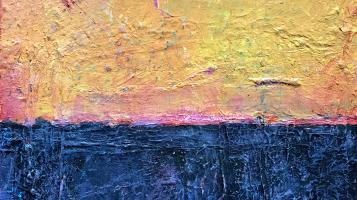
Liz Hawkes DeNiord
These abstract works address the distillation of dreams, emotions and the ‘present’ in a visual language, marking the ordinary as extraordinary, or the smallest thing as notable.These thick impasto layers reveal recurring iconographic markings: the horizontal plane, the circle or void, the crest. They are the indicators, entrances, passports. I look to the natural world and to the beauty and mess of daily living. I read and journal and absorb as much as possible from being present to all that surrounds me. Paintings emerge from this, addressing the ephemeral and things that cannot stay - things that morph, divide, erode, mutate, reflect, shimmer, disseminate, evaporate, break, fade, dissolve. Mark making with paint sets up calls and responses, creating a back and forth exchange on the canvas and also , even unconsciously, when not in the studio. “Echoes, mirages, phantoms, hallucinations and like a dream..” One needs to 'pay attention' consciously and unconsciously . My process is one of multiple layering, scraping, covering up, building up heavily textured surfaces with palette knife and paint. People ask me how I know a painting is ‘finished’ - usually I can tell when it sings.
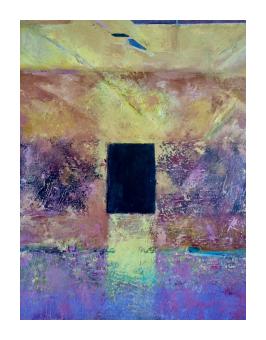

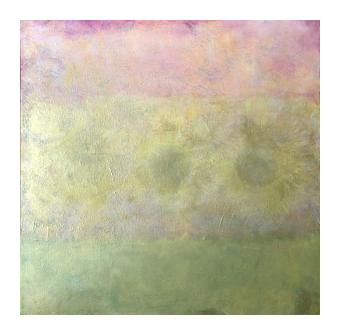
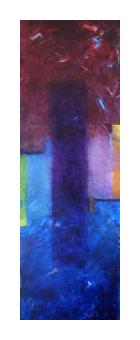
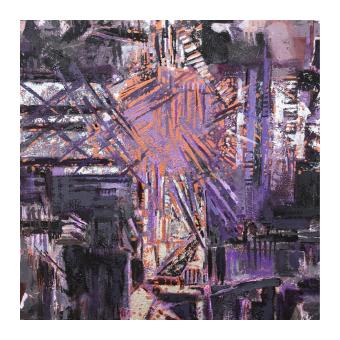
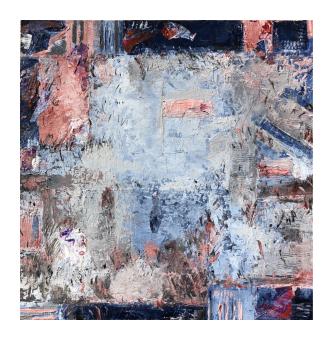
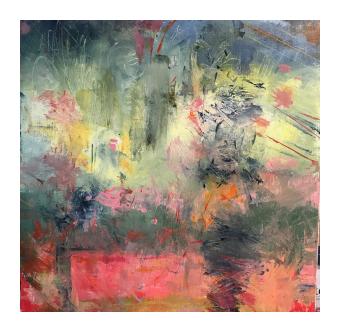
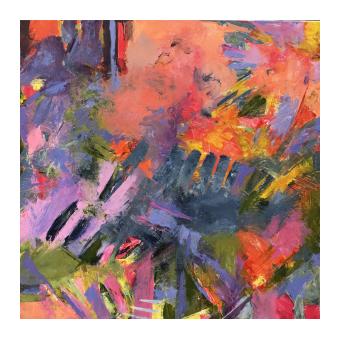
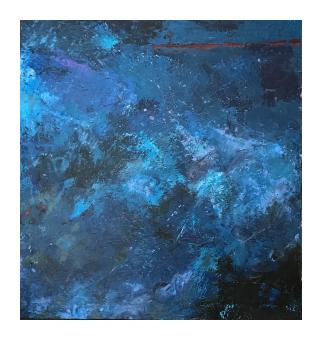
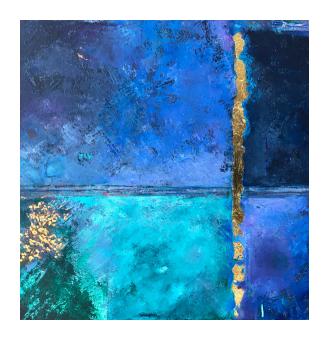
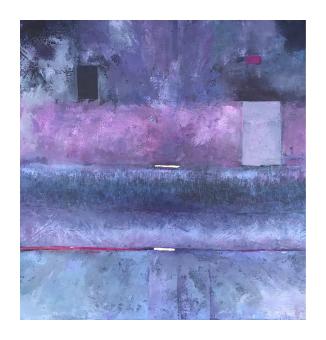
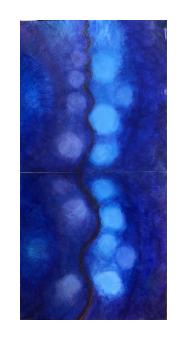
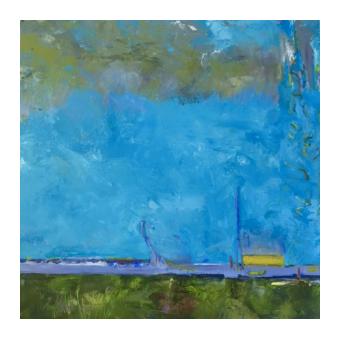
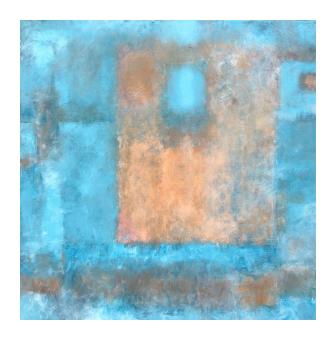
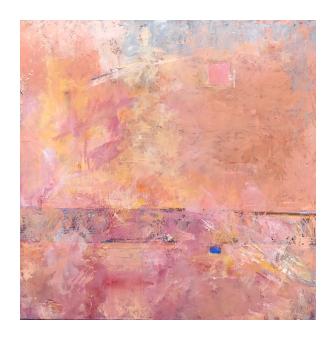
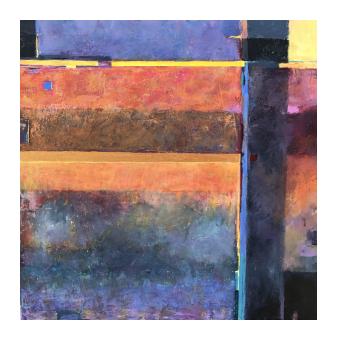
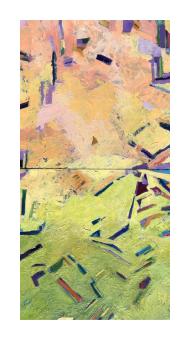
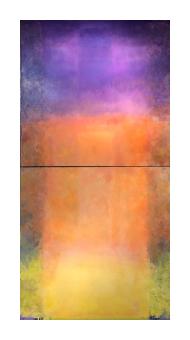
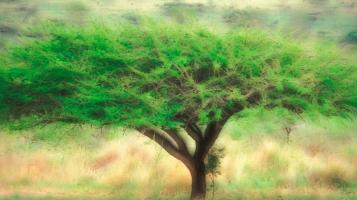
Lisa Dimondstein
Photographing the natural world, for me, is a contemplative process. I am drawn into patterns, reflections, form and light and while I’m photographing time disappears. Through my fine art photography I want to capture a sense of place that may not be literal but holds the feeling or essence of what I’m seeing or experiencing. I’m drawn to a sense of movement and fluidity in images and work with montages, movement and multiple exposures as tools to capture a moment in time. In 2003, I took a leave from my work as a nurse practitioner, to follow a life long interest in photography. I attended the Rocky Mountain School of photography, in Montana, for a 3 month intensive program. Since that time I have studied with many fine art photographers, including Eddie Soloway, Freeman Patterson and Elizabeth Opalenik.
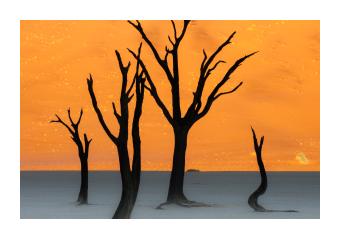
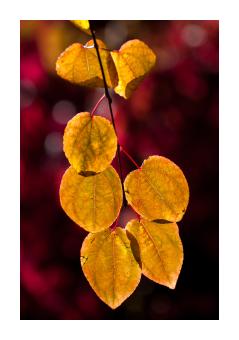
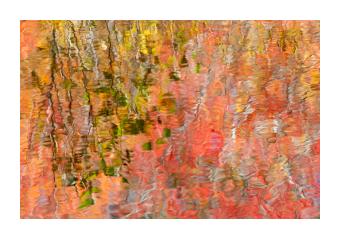
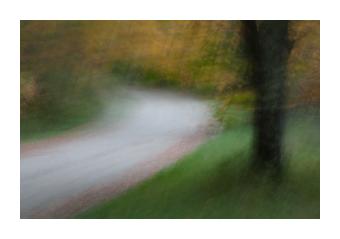
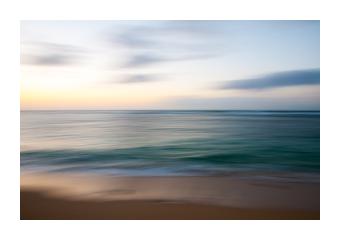
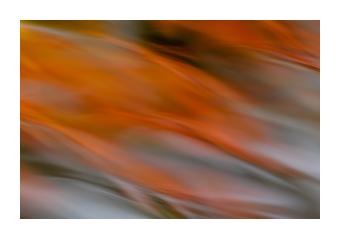
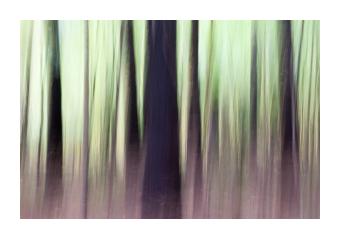
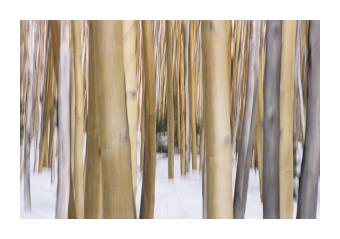
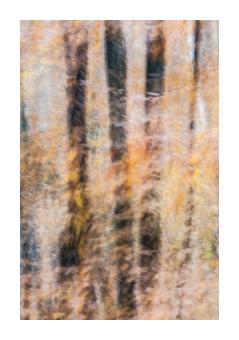
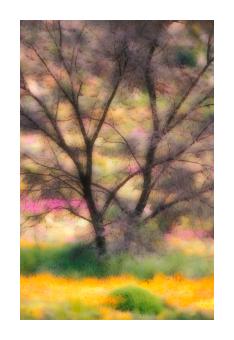
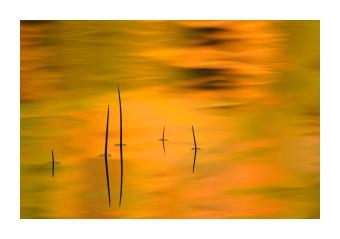
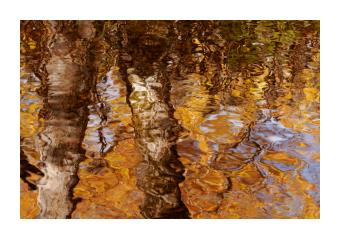
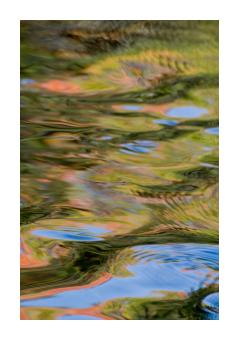
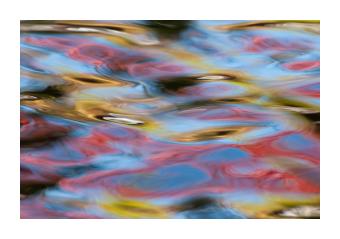
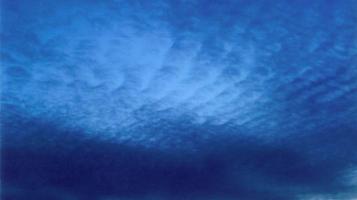
Alexis Doshas
I’m interested in mixing old world and new world techniques. I work with pinhole cameras made from tins, a 1950’s model Rolleiflex, a Kodak Brownie, and more recently a Hasselblad 501c. I incorporate cyanotype and van dyke printing processes, traditional darkroom printing and toning, as well as archival inkjet prints from film and paper negatives.
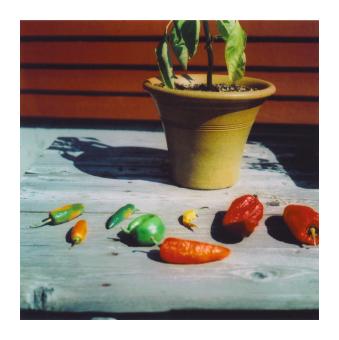
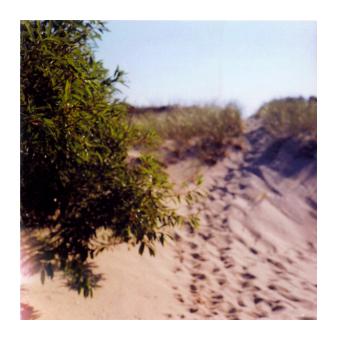
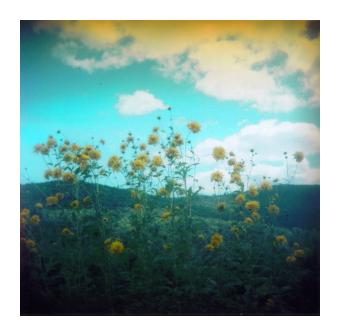
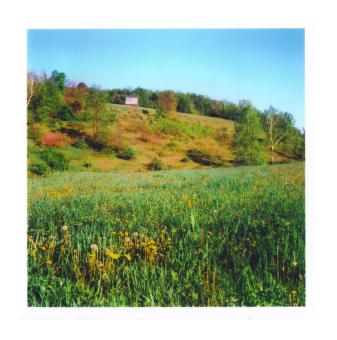
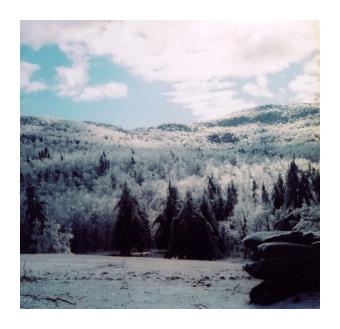
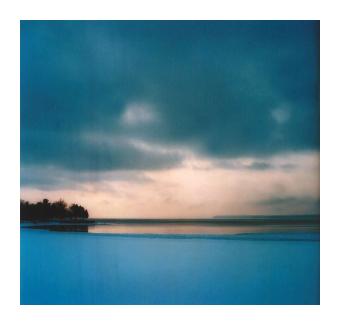
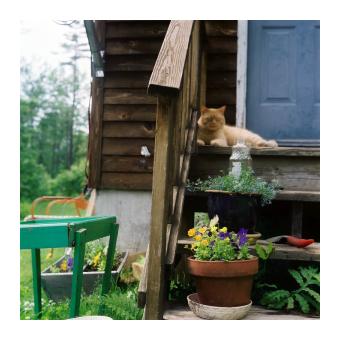
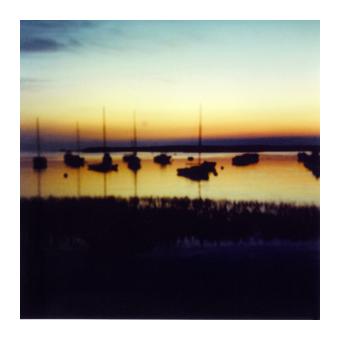
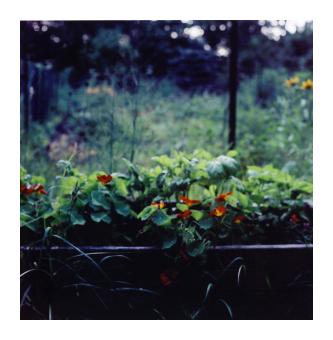
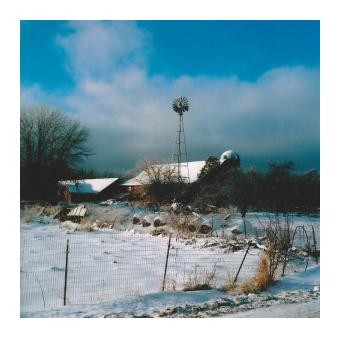

Julie Dunigan
Julie Dunigan was born in Michigan in 1970 and currently lives in South Hero VT.
She completed a BFA from Mass College of Art.
Her recent work is inspired by a desire to combine relief printmaking and painting as a template to explore color, perspective and form.
She is eager to share an evolving body of work that finally feels authentically her own.










Eric Eickmann
Eric addresses the female form with respectful insight to the architecture of sexuality, vulnerability, and the rawness of power.
Painting is cutting out all pain.
The visual and tactile are the same.
Art is feeling and energy.
The absurdity of making pictures is transcended.
I don’t know where my own misery and another meet or separate.
On the surface I search for a resolution.
It seems largely unresolvable.
Then an angel reaches down and strokes my head.
The resulting peace solidifies in form.
Formlessness folds in and amongst the lines.
I am lost in the color and meaning of symbols.
I consume the media and feel the culture of beauty.
I want to drink the skin presented by electrical pulses turning on pixels.
The data of our lives is a secondary bridge.
Possible evolution of consciousness.
Energy doesn’t evolve.
Energy just is.












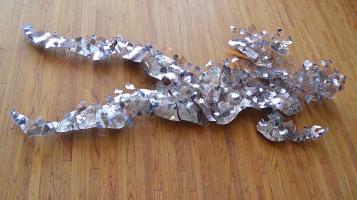
Carolyn Enz Hack
Carolyn Enz Hack's work includes painting, sculpture, and scenery design. While she has spent most of her life on a farm she holds a degree in theatrical design from Rutgers University and has spent years designing for the theatre. Her rural sensibility is informed by themes explored in ancient theatrical and religious literature, and by developments in cross-disciplinary science. Each piece is an attempt to process the world through an internal lens. She is the recipient of a Vermont Arts Endowment Award, a painting merit award from the Chaffee Center for the Arts, and her work has been selected for exhibition in regional and nationally competitive shows. We are in motion, all of the time. Every part of us is in motion, all of the time. Every part of the Universe is in motion, all of the time. Stillness is an illusion. My work maps my stream of consciousness, asking big questions that have incomplete answers. Each piece processes the exterior world through an internal lens. Universal truths surely reside somewhere inside and it’s just a matter of adjusting the perspective to discover answers. I am fascinated by themes explored in ancient theatrical and religious literature, and by developments in cross-disciplinary science. Literary sources use metaphor to explore a wide range of topics while scientific research endeavors to find the source of the mystery. My work attempts to connect the two through imagery.
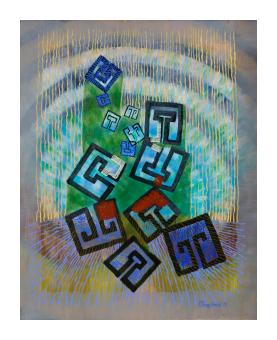
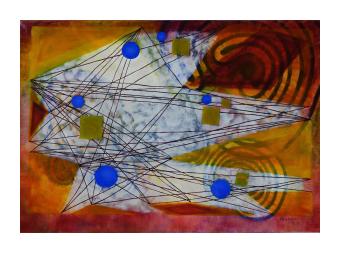
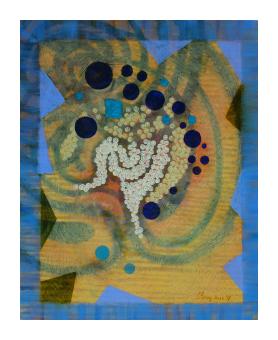
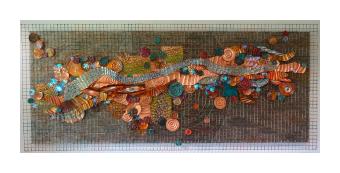
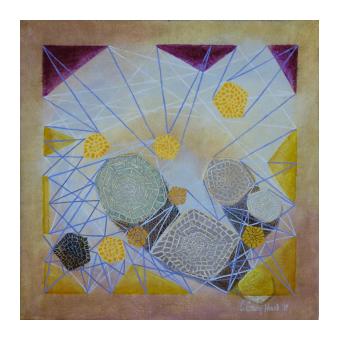
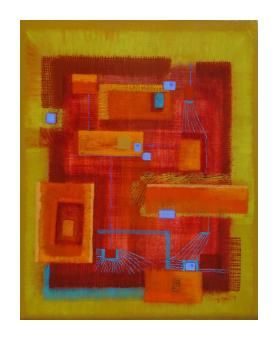
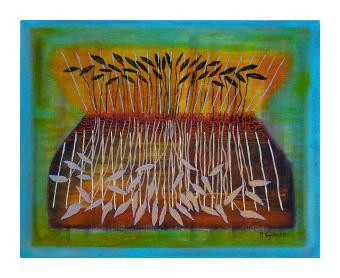
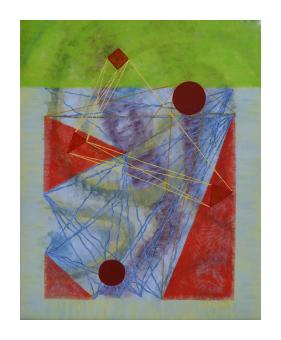
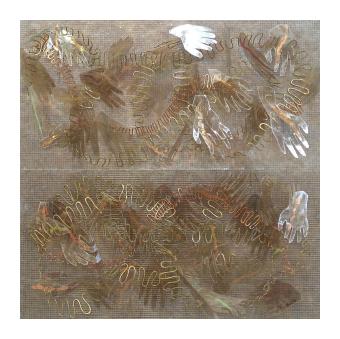
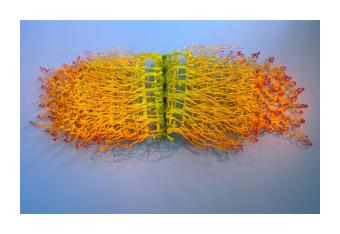
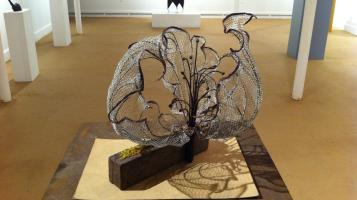
Sabrina Fadial
Bearing witness through a sometimes uneasy juxtaposition of materials I examine the commodification and marginalization of Beauty in both women and nature. As a sculptor my work is both a documentation and celebration of an Endangered Beauty. I extract the innate essence found within detritus from industry and nature. Evoking grace, fluidity, fragility, and vulnerability through seemingly contradictory materials I poeticizes the commonplace. Subject, material and maker are all that which are culturally marginalized, rusty metal, seed husks, and women. Like women, these sculptures evoke Beauty as strength, resilience and potential. Nature is my muse. Inspiration comes from my personal life experience. The work of art is a byproduct of the creative process, which is life itself. I am a collector of seedpods, corks, and rusty bits. My practice is one of experimentation. With experimentation comes repetition, working in multiples and series. I exploit the possibilities of play and improvisation creating an ambiguous coexistence of subtlety and surprise. My approach to making art allows chance to play a vital role. My material choice stems from a proclivity for eclecticism and irony. Biomorphic forms evoke a synthesis between creative thought and the senses. In addition to my studio practice I am the Director of Alumni Relations at Vermont College of Fine Arts. Throughout my career I have been integral to bringing art into the communities in which I live. My teaching experiences ranges from elementary to graduate school. I hold a BFA in Textile Design from Rhode Island School of Design, an MFA in Visual Art from Vermont College of Norwich University, and a Graduate Certificate in Non Profit Management from Marlboro College.
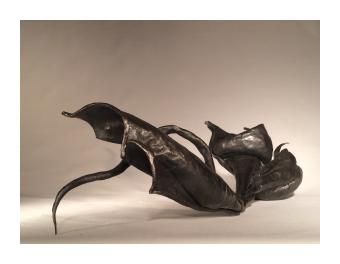
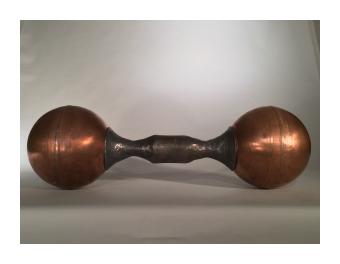
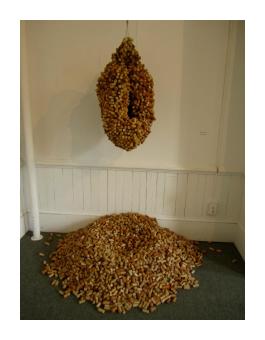
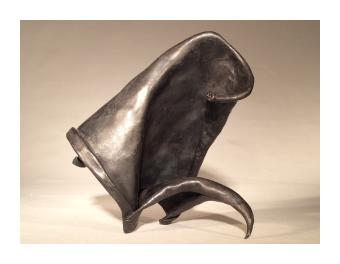
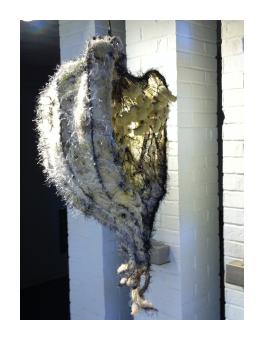
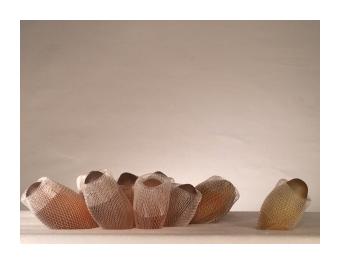
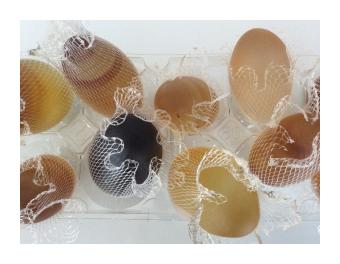
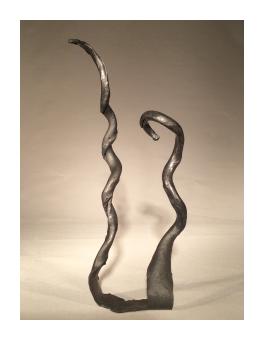
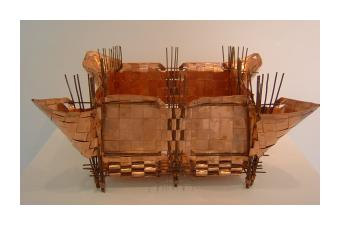
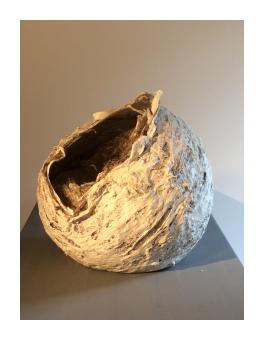
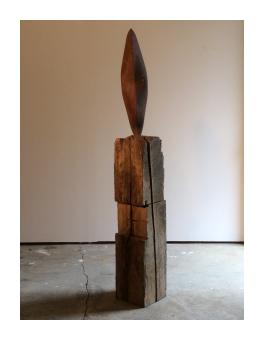
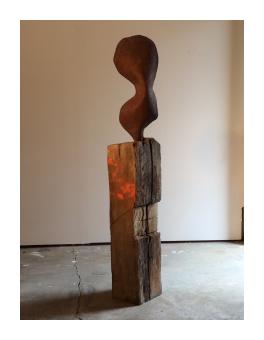
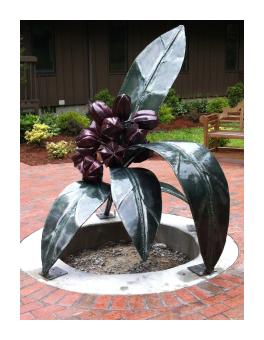
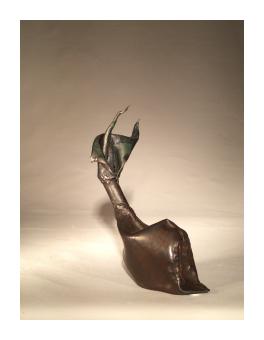
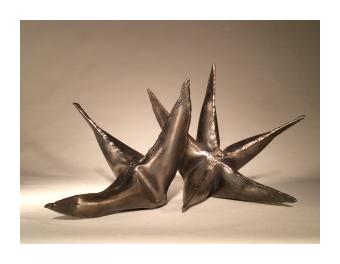
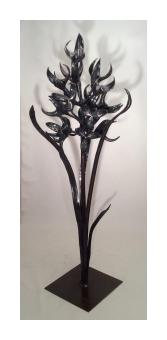
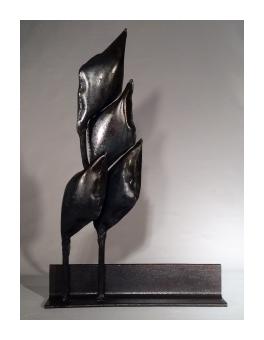
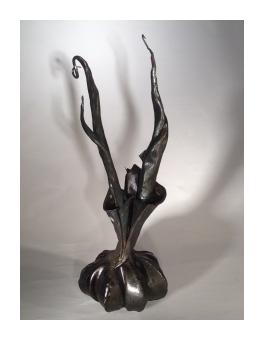
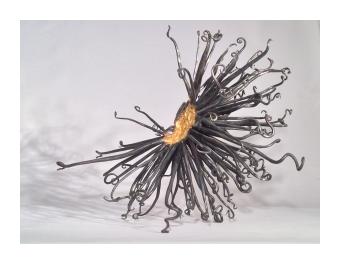
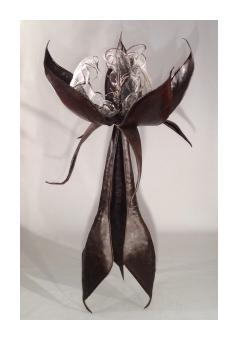

Robert Fahey
Robert Fahey is guided by two rules in his creative practice. The first rule: the best images have three elements - an appealing composition of subject, light that interacts with the subject, and the subject experiences a moment. The second rule: stand in front of more interesting stuff.
Fahey looks for subjects while walking. They can be landscapes, people, objects, anything. Sometimes it is with the intent of finding an image that he can capture immediately. Sometimes it is to scope out a subject at different times of the day to see how the light changes the subject. He will photograph the scene with early light from the east, late setting sun from the west, twilight and even midday light. He will photograph the same scene throughout the year in all four seasons. He looks up. He looks down. He finds vantage points to shoot down on subjects and shoot up from ground level.
He looks for potential subjects while driving. He’ll make a mental note to return to that interesting barn just off the highway the next morning at dawn. Occasionally, he decides the light is right, the subject will not be in that position if he waits till tomorrow; He makes a u-turn, parks, jumps out of the car with his camera into the minus twenty degree morning, take six photos, and jumps back into the car. A few days later, the best of the six images is on page twenty of the local paper and will feature in a black and white abstracts project he is putting together.
Fahey looks for subjects others pass by and tries to find the image that attracts attention. He looks at iconic settings, that red weathered barn of a Vermont farm, and tries to find the image not taken before. He waits for the moments. He stays close to the basic tried and true compositional techniques, such as rule of thirds.












Kate Fetherston
Color, nature, humans, spirit. Movement, memory, relationship, response. These are Kate Fetherston's inspiration and method of exploration.
Fetherston's work is influenced by the Japanese aesthetic of wabi-sabi which leans into the imperfection, temporality, and bittersweet nature of life. These paintings reflect a response to felt experience----of the natural world, of memory and spirit, of the humbling place that being human occupies in a great mystery. She is interested in the intersection and confluence of sensory experience with what she can only call listening.
Her academic background is in philosophy, music, poetry, and social work. She comes to visual art with a ragbag of training and a great willingness to experiment, fail, and keep going. The process is intuitive, yet she brings questions and obsessions to her work.
Fetherston uses several mediums, often on the same surface----adding and subtracting layers and using a variety of textural elements. Having a lifelong visual impairment, she is very interested in seeing. Unique as a fingerprint or a voice, people see so differently, yet we’re here together. Her work aims to investigate and honor this ‘being here together.’ For this brief and amazing time.
Kate Fetherston has a BA in Philosophy, an MSW, and an MFA in Poetry. She’s the author of two books of poetry, Until Nothing More Can Break (Antrim House), and This Far from Perfect (Longleaf Press.) Her third book will be published by Longleaf Press in 2026.She’s co-edited anthologies of poetry and craft talks. Kate’s visual art shows in Vermont and New Hampshire and is in private collections across North America. Kate’s the recipient of grants in both poetry and visual art from Vermont Studio Center and the Vermont Council on the Arts. She is a clinical social worker in private practice in Montpelier, Vermont.










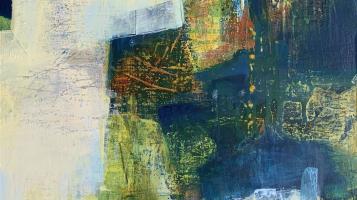
Kathleen Fleming
I paint mixed media pieces inspired by the Vermont landscape which celebrate both the wonder and complexity of life. For me, painting is the continual process of paying attention. When I remember to slow down, I notice the beauty, laughter, and moments of simple joy that are all around me: the sun dipping over the horizon; crisp leaves under my feet; Mary Oliver’s wild geese overhead. These ordinary things inform my work and compel me to return again and again to the easel. I love the little joys and surprises that happen while I’m painting - the way a warm yellow pops next to a cool blue; the drips that can alter a whole composition. Working with the mistakes and the happenstance pushes me to find solutions. How can I create calm from chaos? Beauty from mud? It’s all a metaphor for life - to embrace the messy complicated world that is all around and turn it into something beautiful and true. And, hopefully, have some fun along the way
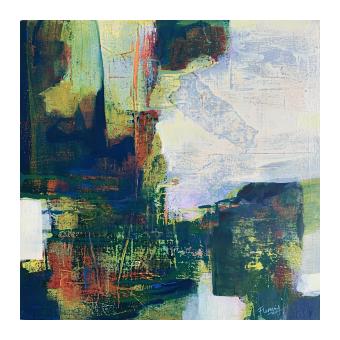
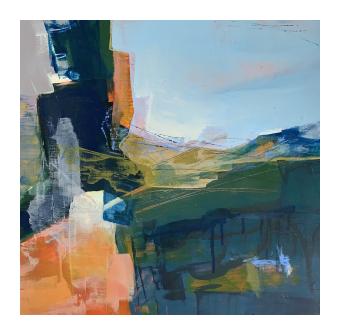
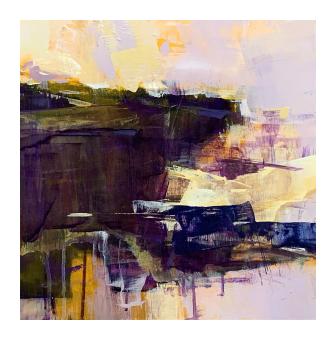
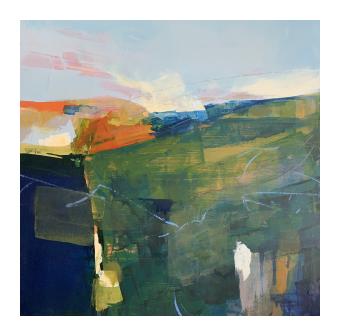
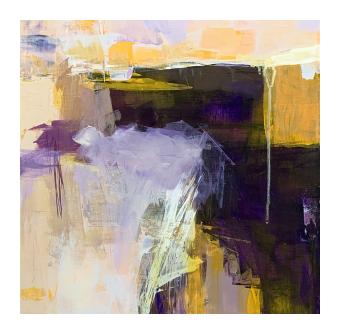
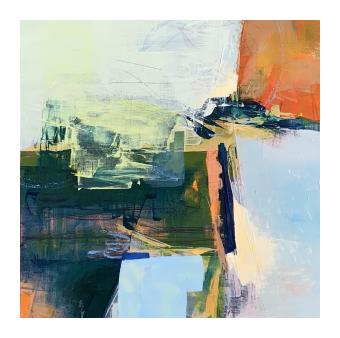
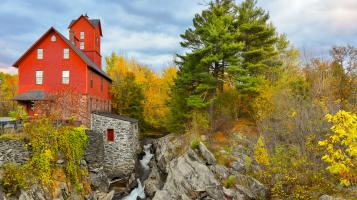
Caleb Foster
Caleb’s life experiences have shaped a dynamic, multi-cultural perspective that is actively portrayed throughout his photography and artwork. Born and raised internationally, but now based in Jericho, Vermont, Caleb loves capturing the amazing details Vermont has to offer. He continues regularly exploring the rest of the globe as well, with his camera always in tow. He focuses on nature, landscape, travel, portrait and snowflake photography. With a profession in the Life Sciences, he enjoys fusing science and art by combining his expertise in Microscopy with his creative passions. On snowy winter days, you will likely find Caleb on his back porch pursuing one of his favorite activities - snowflake photography with a homemade microscope. Hours of patience and perseverance in sub-zero temperatures help him capture fleeting designs that will never be repeated. He has photographed over 3000 individual snowflakes over the last decade and enjoys sharing these intricate snowflake designs with others.
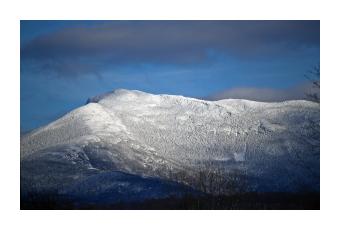
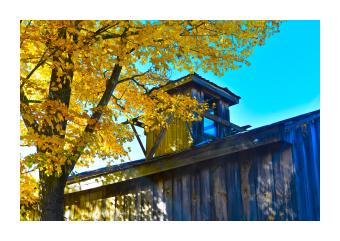
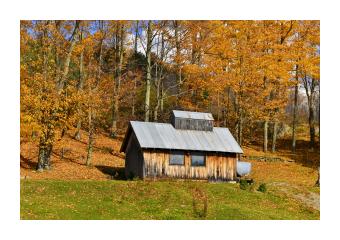
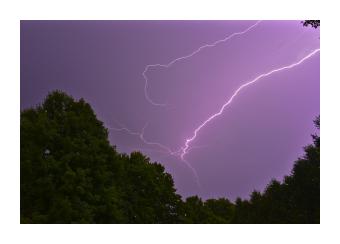
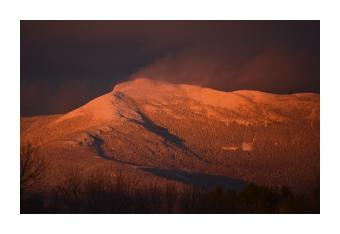
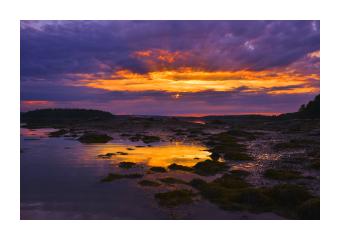
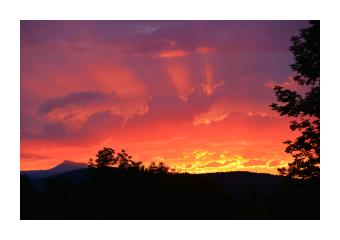
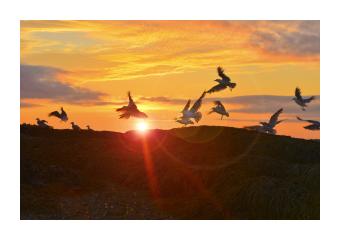
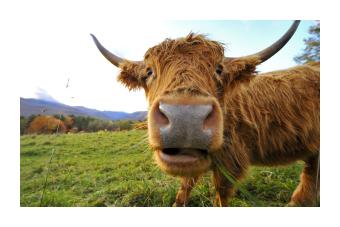
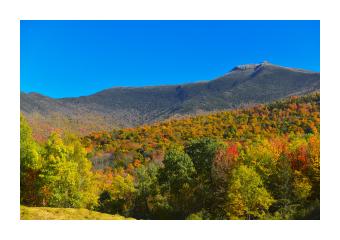
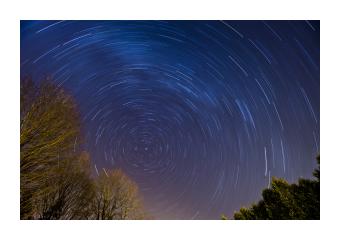
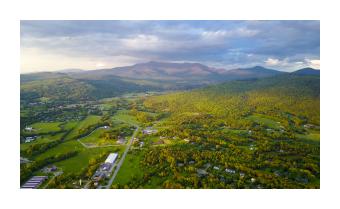
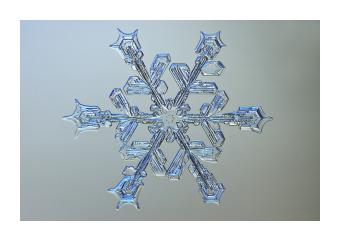
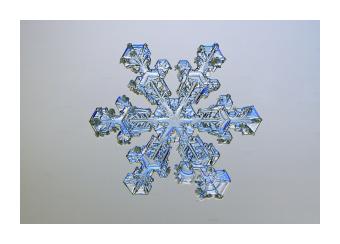
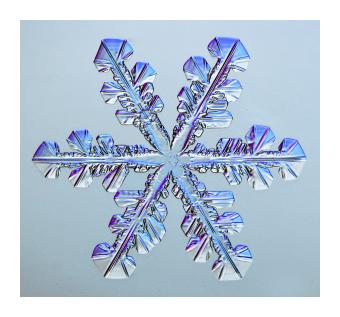

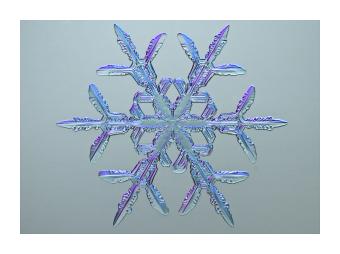
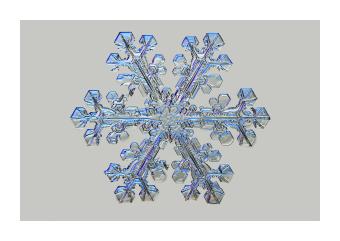

Isabel Frantz
Isabel Frantz lives in Burlington and enjoys photographing the Vermont landscape in different seasons.

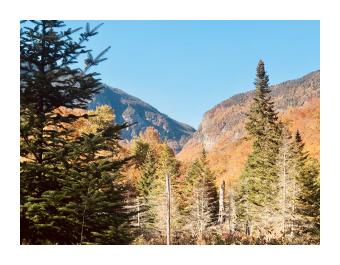
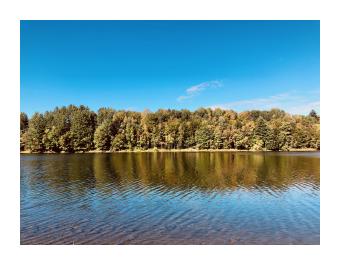
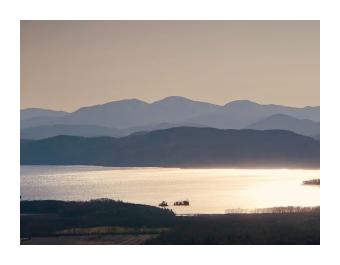
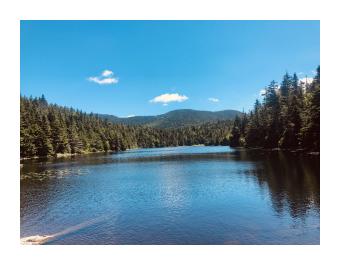


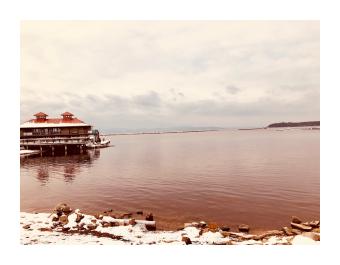
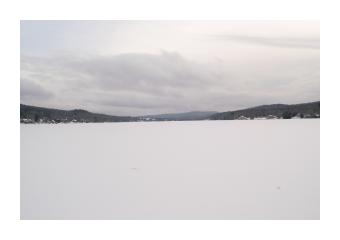
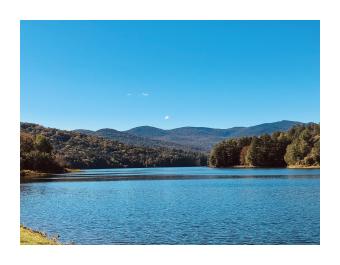

Janet Fredericks
Janet Fredericks spent her early years in Vermont. She studied art at Green Mountain College, William Patterson College and received her BFA from Barry University. She has had major shows, both in this country and abroad, steadily creating bodies of work informed by her interest in and observations of her natural environment. A Vermont Arts Council and New England Foundation for the Arts Fellowship recipient, she has received artist residencies at The Virginia Center for the Creative Arts, Ucross Foundation, the Vermont Studio Center, Venice Printmaking Studio and the International School of Art, Umbria.
This body of work expresses Fredericks’ continuing interest in water and the complexities of its language. Her paintings and drawings offer a visual insight into water, its relationship to what holds it and the life that infuses it. Mysterious and sensory, her drawings and paintings are at once maps, conversations and prayers linking the observer to a deeper communion, a reverent awareness of the history of water as a conduit and amplifier of intuition, a repository of ever changing but expanding memories and markings, that help contain and reveal the rituals and identities of the race.










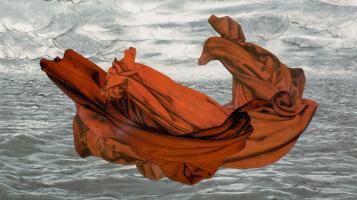
Leslie Fry
Starting by pressing a plant into paper and seeing what grows from that, I add bits from my dense “to do” lists that represent everyday life. Moments of wholeness created out of fragmentation result. I made a 2-part wall sculpture in my home. Lists and Dreams bridges the gap between my copious lists of daily obligations and my future hopes and ambitions. A 2-minute video of this installation can be seen at http://vimeo.com/36807008. In my drawings and sculptures, imagery is inspired by basic human needs: shelter, food, clothing, work, and intimacy, and take the form of the human body, vegetable and animal life, and artifacts and architecture. The natural world connects with the human-made world – reality and fantasy meld. My sculpture and works on paper have been exhibited in museums and galleries internationally, including Exit Art, Thread Waxing Space, and Artists Space in New York; Kunsthaus in Hamburg; Hangaram Art Museum in Seoul; Windspiel Galerie in Vienna; Centre des Arts Visuels in Montreal; Couvent des Cordeliers in Paris; Tampa Museum of Art in Florida; and Fleming Museum in Vermont. Corporate and public collections include Songchu Art Valley International Sculpture Park, Tufts University, Kohler Company, Fleming Museum, Milan Hilton, Whole Foods Market, and Tampa Museum of Art. Public projects have been specific responses to architecture, history, and landscape. Commissions have included Wave Hill in New York; Songchu Art Valley International Sculpture Park in Korea; Housing Vermont and Burlington City Arts in Vermont; John Michael Kohler Arts Center in Wisconsin; Musée d’Art Contemporain in Montreal; and Pinellas County Cultural Affairs, City of Tampa Public Art Program, and Broward Public Art and Design Program in Florida. I received a B.A. from the University of Vermont, an M.F.A. from the Milton Avery Graduate School of the Arts at Bard College, and attended the Central School of Art and Design in London. I was born in Montreal, grew up Vermont, and live in Winooski.
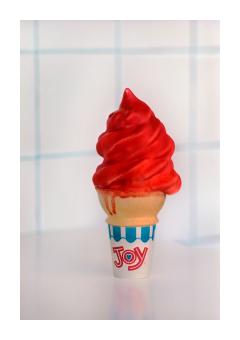
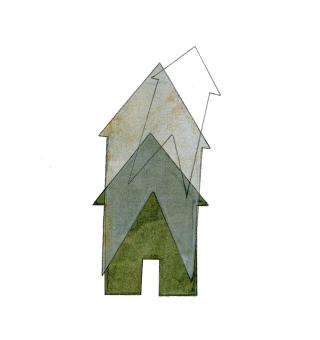
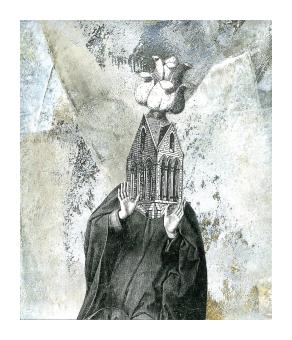
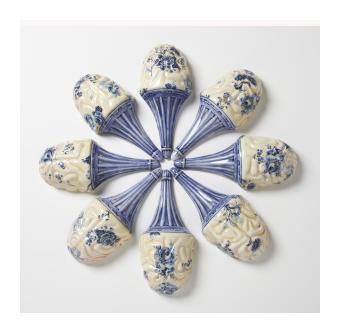
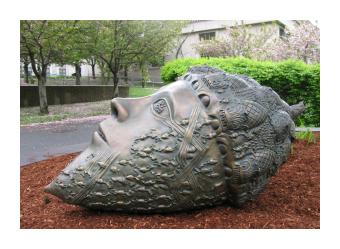
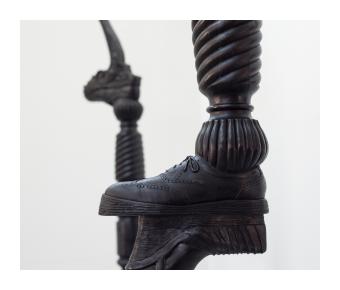
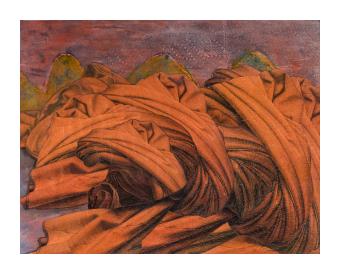
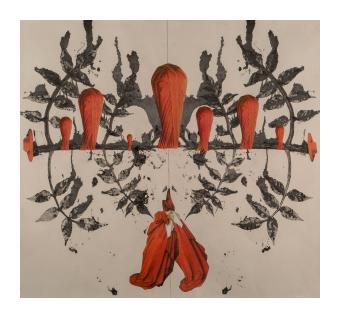
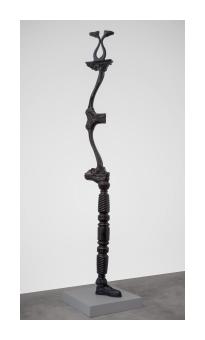
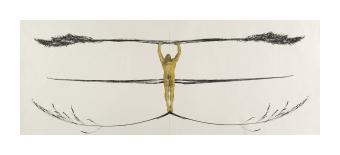
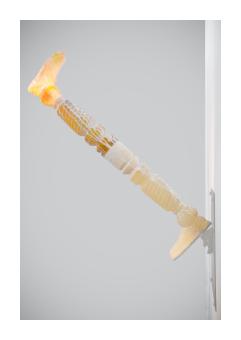
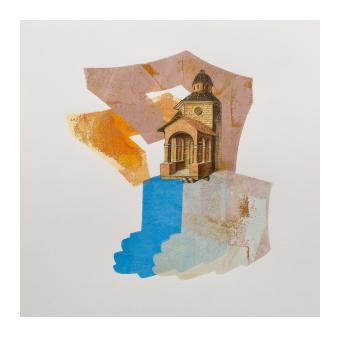
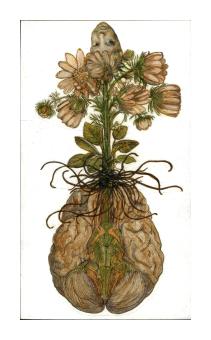
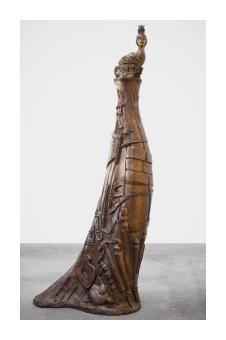
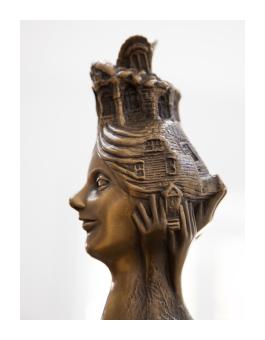
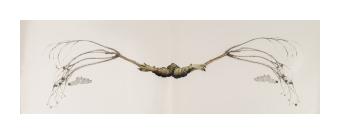
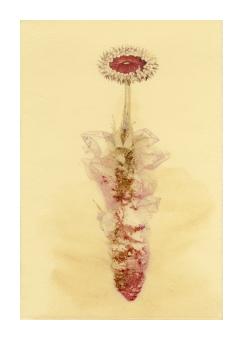
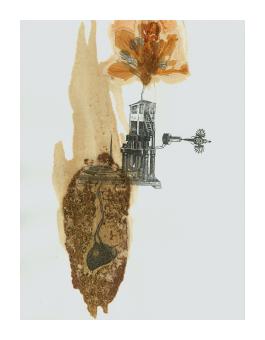
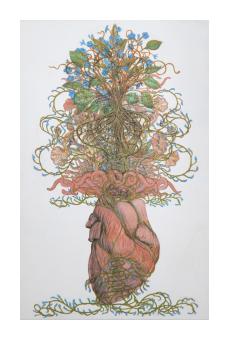
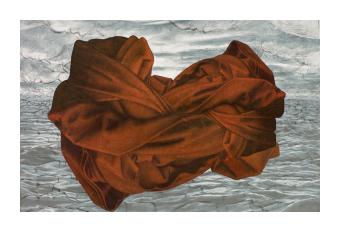
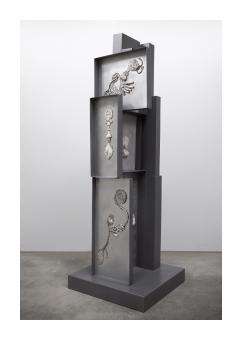
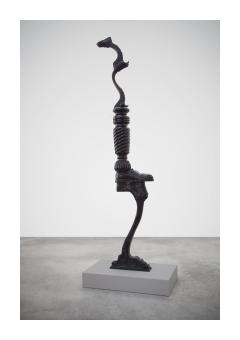
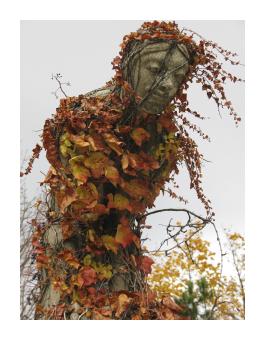
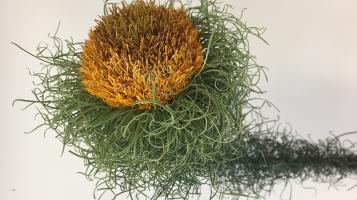
Adrienne Ginter
My approach to my artwork is that of an exploration into the reoccurring oddities and subtle fascinations of the natural world. The uniqueness of it all provides me with aesthetic inspiration, and I draw parallels between these narratives and the stories of human beings- whether from ancient myths, history, or my own personal experiences. Every scene in nature tells a million little stories, and I work to incorporate an extreme amount of detail to tell not only the macro, but the micro stories in a scene. This gives the viewer a greater sense of depth, not only visually, but narratively, depending on how close they choose to engage with the piece. Adrienne Ginter is a Vermont-based artist working in various mediums from her studio at the Whetstone Studio of the Arts in Brattleboro. She received a BFA in painting from The University of New Hampshire in 2003 and a Masters in Fine Arts with a concentration in painting from Boston University in 2008. She has since exhibited her work in galleries throughout the United States. Adrienne was juried into the League of NH Craftsmen in the summer of 2014 and her work is displayed in their numerous stores. She has been published in Studio Visit Magazine volume 24, volume 26, International Contemporary Artists volume 5. In November 2014, and was interviewed by "Other People's Pixels" in February 2014. Adrienne received a partial grant for a month-long residency at the Vermont Studio Center in Johnson VT. Adrienne is a board member of the Arts Council of Windham County where she participates and volunteers in board-organized community events. She is also a member of the Crafts Council of Vermont and participates in their bi-annual Vermont-wide open studio tour. Adrienne is also a member of the Printmaking Society of Los Angeles. Currently Adrienne is concentrating on extremely detailed, nature--inspired hand cut paper pieces. The work was featured in numerous solo gallery shows- including Outerlands Gallery in Vergennes VT, and “Wilderness Kingdom” at the Tower Hill Botanical Gardens in Boylston Massachusetts.
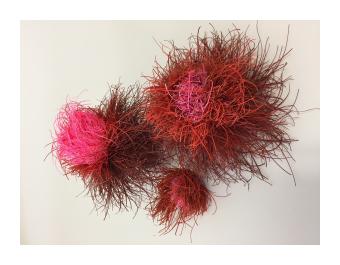
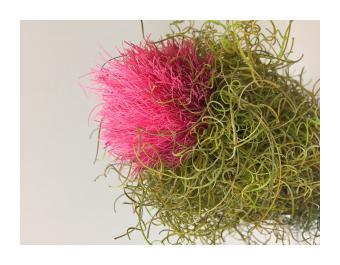
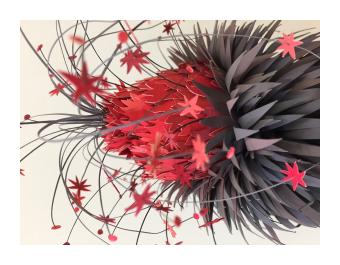
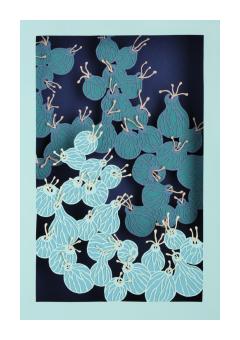
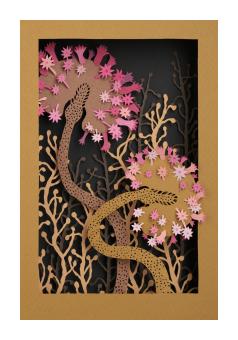
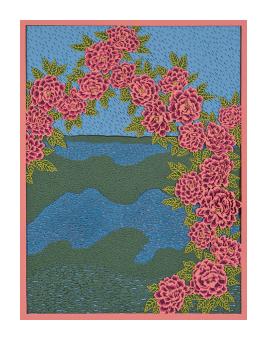
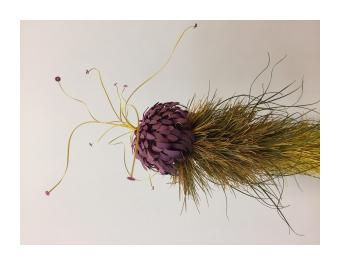
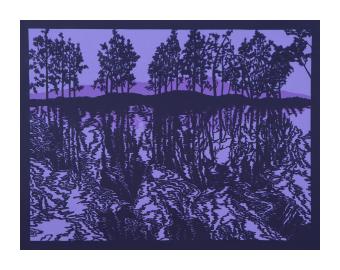
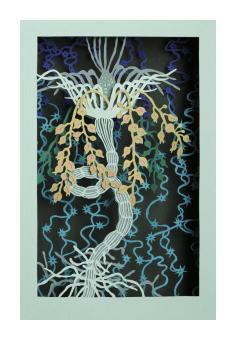
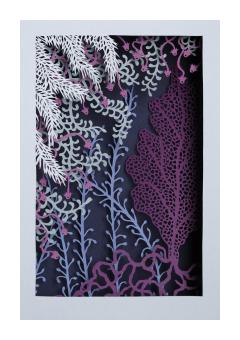
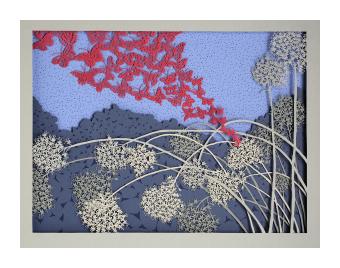
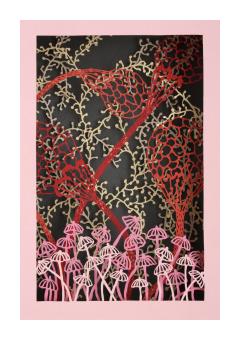
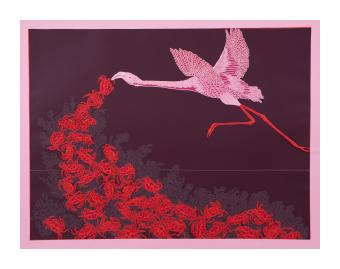
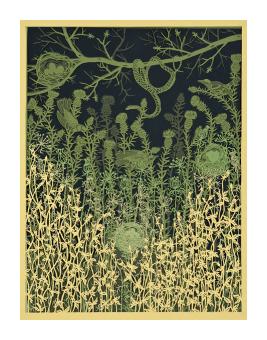
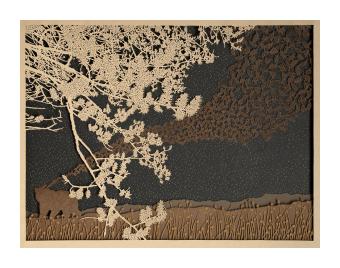
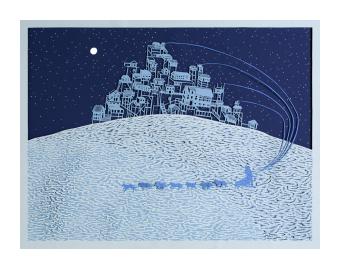
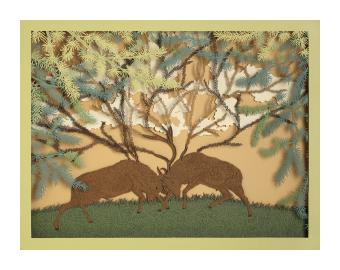
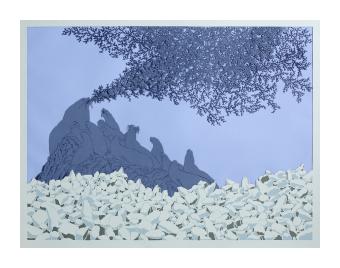
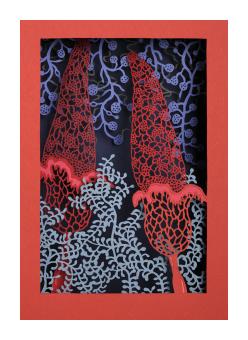
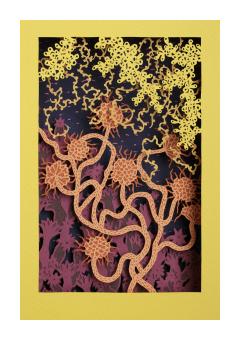
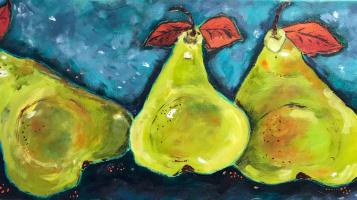
Kathleen Grant
Kathleen Grant grew up in Stamford, Connecticut . Her love for art started at a young age. After taking numerous art classes in high school she then attended Johnson State College to pursue her dream of becoming an artist. Kathleen then found her calling; she wanted to share her love andenthusiasm of art through teaching. At the age of 27 she became a K-8 art teacher. Kathleen found while she worked with the children , they were bringing more inspiration to her art. After teaching for thirty years Kathleen has retired from her teaching career to work as a full time artist and jewelry designer. She resides in the beautiful Green Mountains of Shelburne, Vermont with her husband, Doug and three cats. She also has three beautiful children of her own, Ashley, Kaitlyn, and Nicholas. As an artist, she finds there are no boundaries when sticking to a specific artistic medium. In her paintings, she works in a wide variety of media including: water colors, pen, oil sticks, acrylic paints, colored pencils, and ink sticks. Kathleen’s Jewelry designs specialize in wirework and cold connections (a technique that does not involve the use of heat or flame). She loves to make jewelry with Lake Champlain and Cape Cod beach stones. She also has a passion for upcycling trinkets and vintage treasures to create unique, wearable art. Clay also fits into Kathleen’s eclectic art, mainly focusing on hand building. She enjoys making function pieces including bowls, platters, vases, and garden art. Kathleen loves to create; she also loves to share her passion, and hopes to inspire her viewers, peers, students, friends and family through her art.
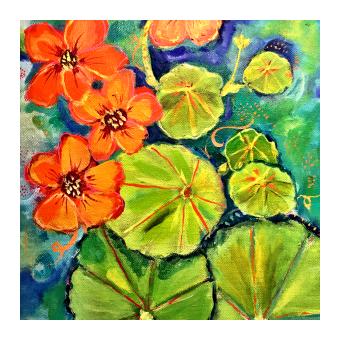
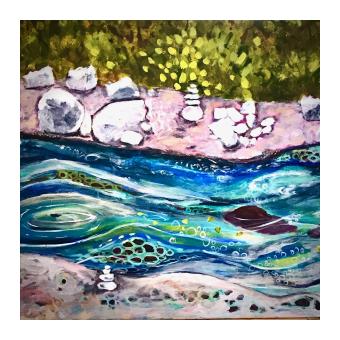
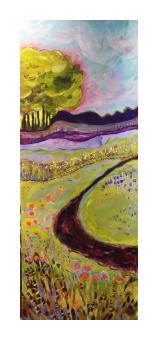
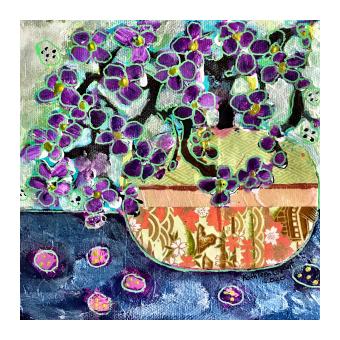
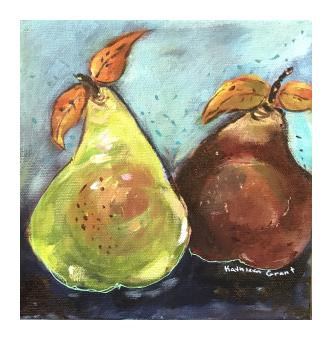
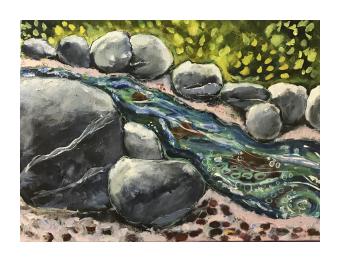
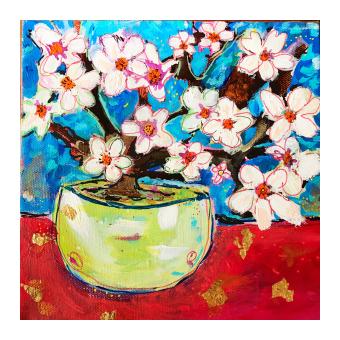
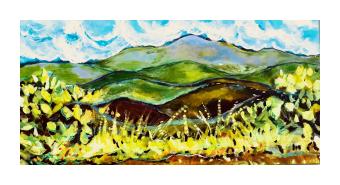
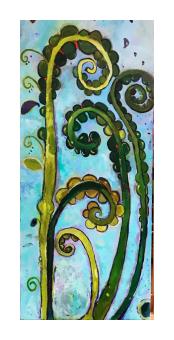
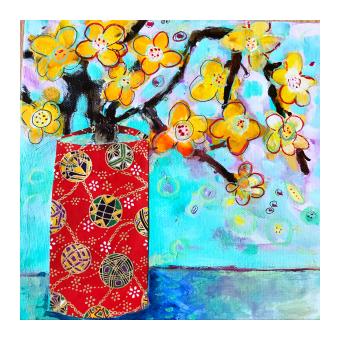
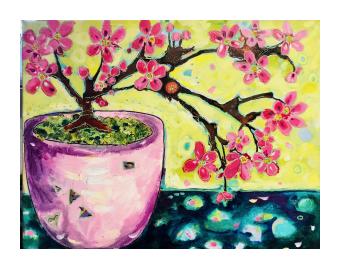
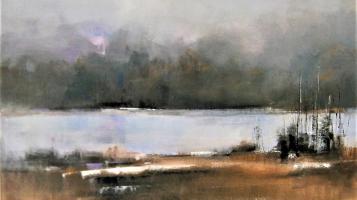
Barbara Greene
Barbara Greene is a landscape painter who lives in Williston, Vermont. She’s one of the founders of the Jericho Plein Air Festival which debuted to great reviews in 2011 and continued for eight successful years, and she continues to be actively involved in the art community. She started painting seriously as a teenager, and though she’d always envisioned a career in the arts, life got in the way, and for many years, painting necessarily took a back seat to other professional work and family responsibilities. About 12 years ago, with joy (and occasional frustration), Barbara picked up her brushes again and painting has since been her primary focus. She studied painting with Philip Shumaker and Lawrence Hirsch in New York, did studio work and studied art history as an undergraduate at the University of Chicago, and subsequently pursued coursework at the Cleveland Institute of Art as a non-degree candidate. Barbara’s paintings are in private collections around the country and she has exhibited her work in a number of galleries in Vermont. I work in oils, most often outdoors from spring into early fall and in the studio during the rest of the year, though I’ll frequently complete indoors a painting begun outside. And most often I paint landscapes. I paint to communicate—to translate onto canvas with color and shape and brushstrokes my impressions of a place or a moment, to tell a story. I want to capture the play of light and color on structures and the land itself, and specifically to paint not only what I see but how I feel about it. And a passionate sailor, I’m drawn to the water, to reflections of the land and the sky on water, and reflections and bridges often find their way into my work. Not quite abstract yet not quite representational, my paintings reveal the basic elements of an approachable, identifiable context, but not the details. I try to create a sense of place, and a painted place may be readily recognizable or may just feel familiar. Working with color, light and shapes, I invite viewers to share my visions of my subject matter—or to step into my paintings and create their own.
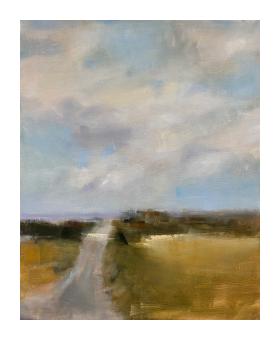
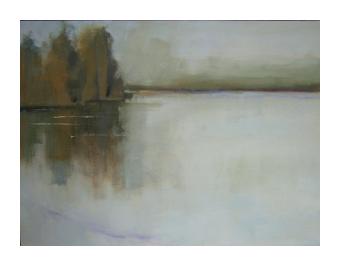
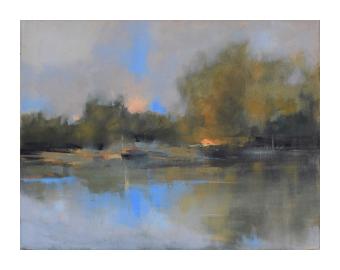

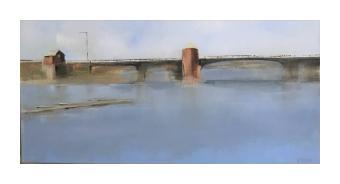
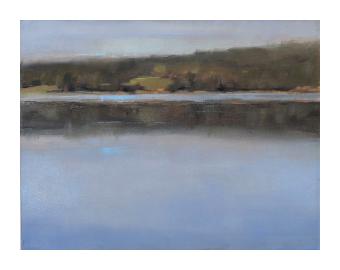
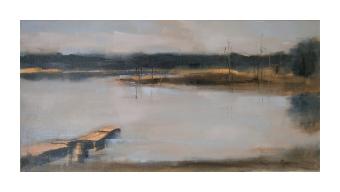
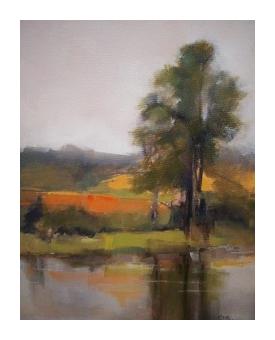
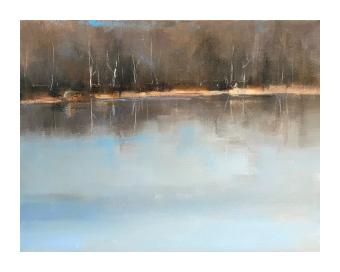
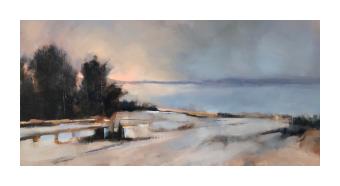
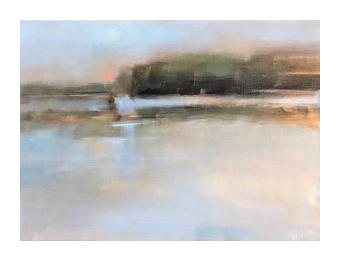
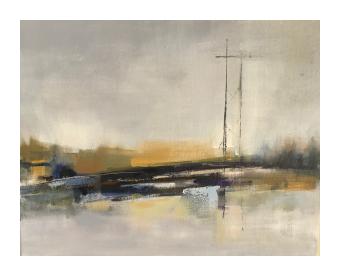
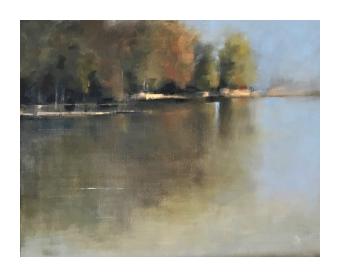
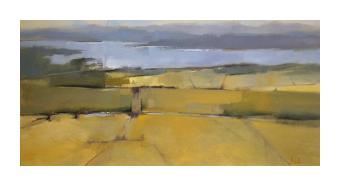
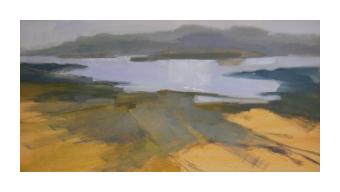
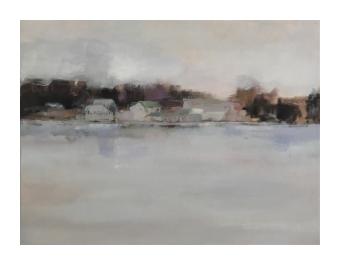
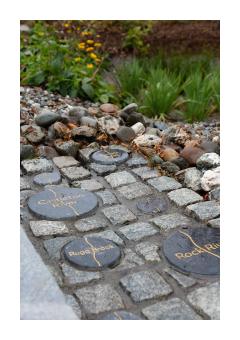
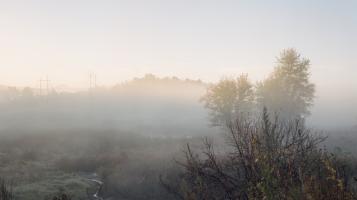
Renee Greenlee
With time and space, most matters of the heart can be resolved. In the midst of healing, the way forward is unclear, as if walking through a fog. Following my move to Vermont, I faced an unknown future in a new landscape. I spent my time in the state’s river valleys and along the shores of Lake Champlain when the air was thick with fog, walking through it despite my discomfort of not being able to see what lie before me. Taking along my Rolleiflex and rolls of color film, I watched for the changes and nuances of light around me, diffused by the atmospheric haze. On these walks, I found I could see my way forward just enough to create a new path and find some peace in the unknown.
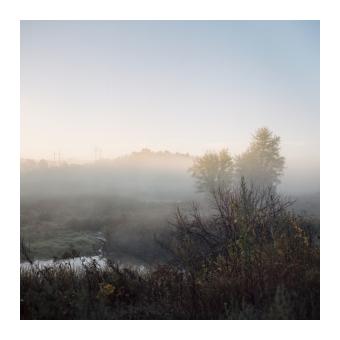
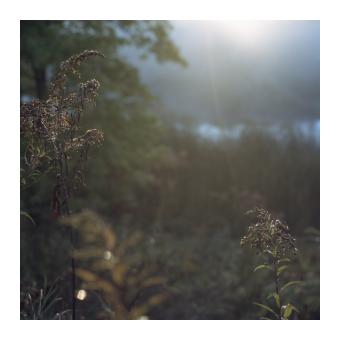
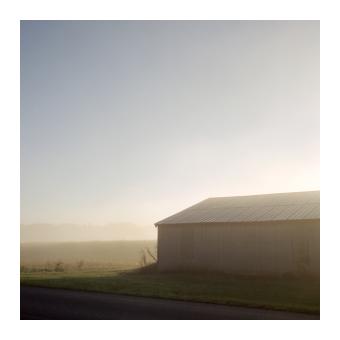
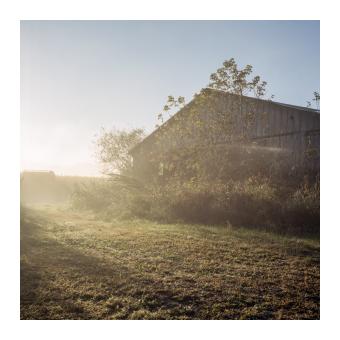
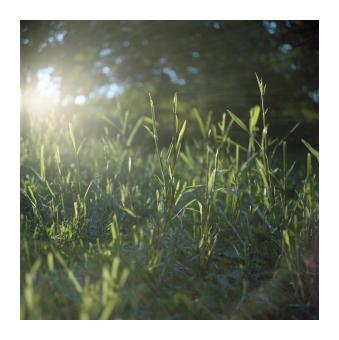
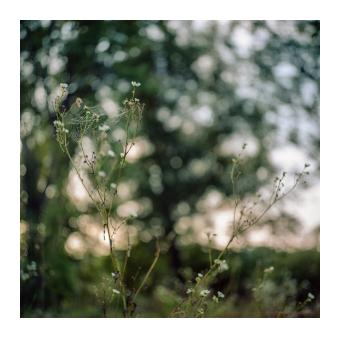
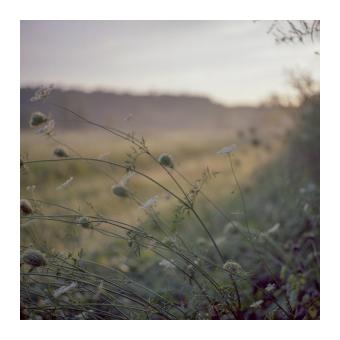
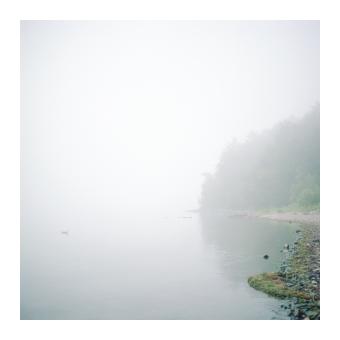
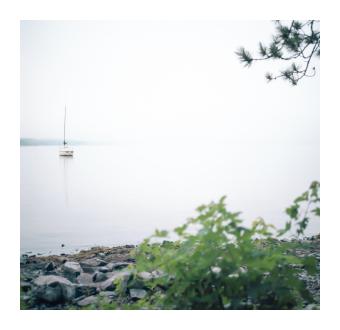
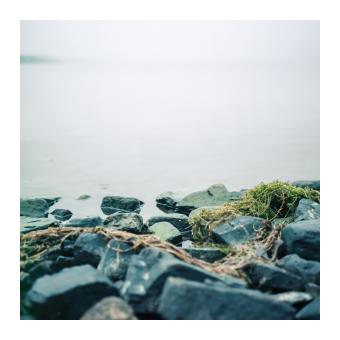
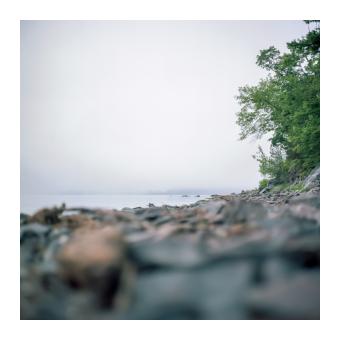
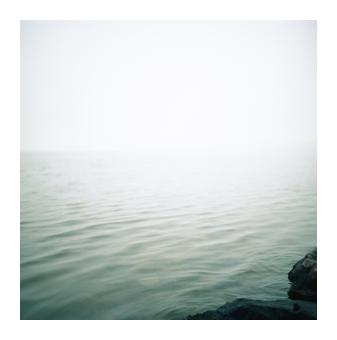
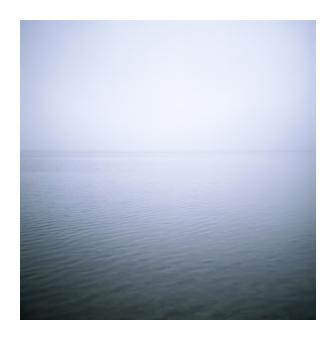
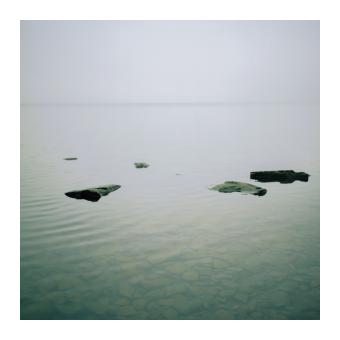
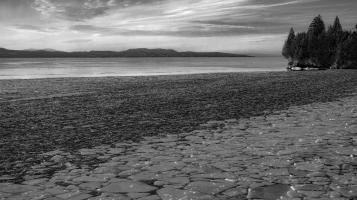
Gary Hall
Gary Hall is an internationally published fine arts photographer specializing in architecture and interiors and is known for his luminous black & white landscape prints. He was educated in fine arts photography at Southern Illinois University where he studied with Charles Swedlund – a student of Aron Siskind. A native Vermonter, he has been exploring with his camera, in and about the Champlain Valley for over forty years. I am attracted to landscapes that have a timeless appeal. I am drawn to the movements and reflections of water as a liquid, it’s sculptural pulse as snow, it’s ambiguity as fog as well as it’s abstract qualities while frozen. Rock and stone – once in a liquid state under great heat or bent by intense pressure, leave lasting impressions. Evidence of glaciers in the form of lakes and boulders left behind, present a recurring theme. Guided by the light created by various weather phenomenon, it is the interaction of these seemingly primordial states, along with the various signatures of man, that intrigue me.
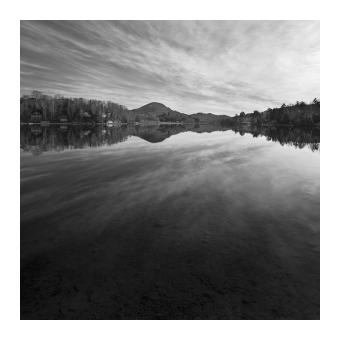
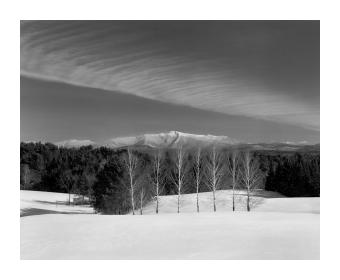
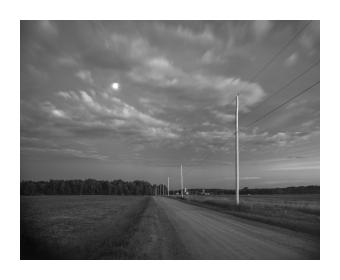
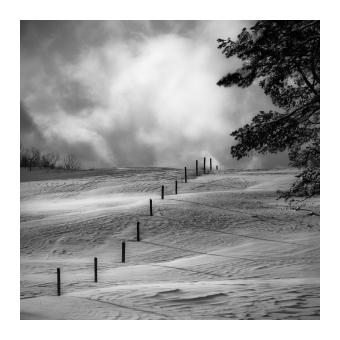
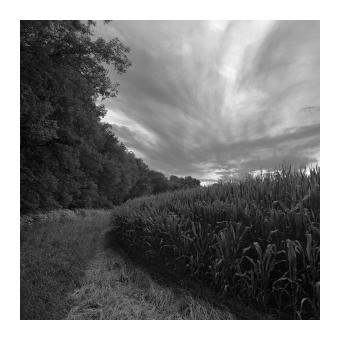
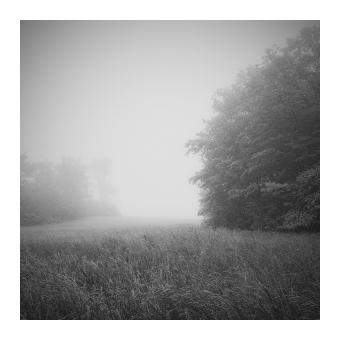
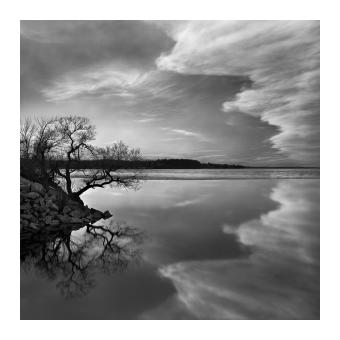
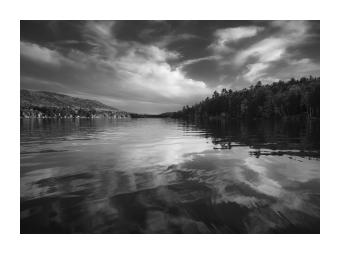
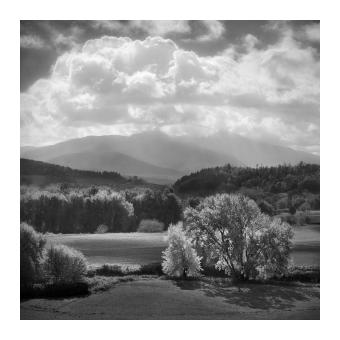
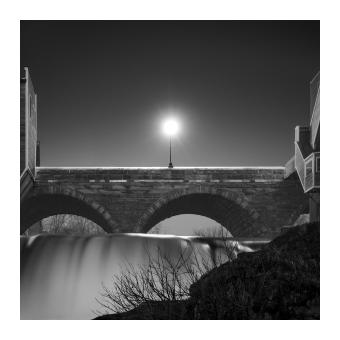
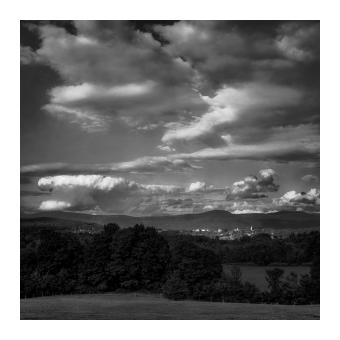
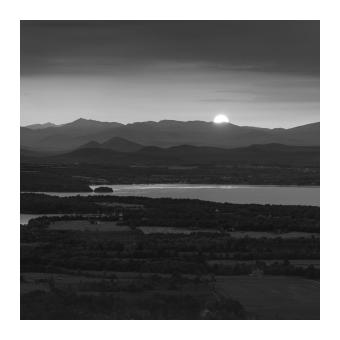
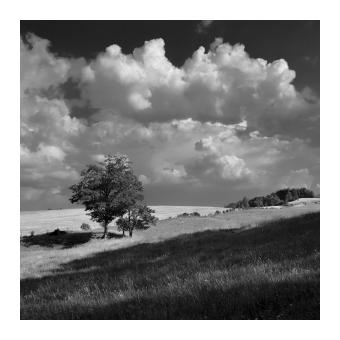

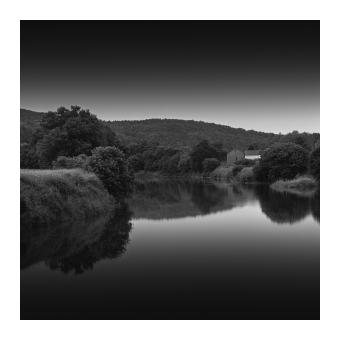
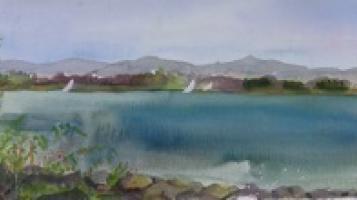
Maurie Harrington
Plein air painting is her passion, especially her favorite subjects, House Portraits, Landscapes, Snow Scenes, Barns and Buildings, and Florals. Maurie’s deep-seated love of nature captures that beauty with her special artist’s touch. From mountains vistas and quiet forests, to vibrant flowers, Maurie captures their unique beauty. While her studio is located in Killington Vermont, Maurie Harrington exhibits widely throughout New England. Her work is hanging on walls around the world. She is well known for her watercolor workshops held at her studio, as well as other locations. Her work illustrates nationally published books. From the quiet, muted tones of soft flowers, to the vibrant blast of color displayed by the flashy set, Maurie uses a variety of techniques to convey and explore nature’s offerings. Her ability to capture the mood is unique.
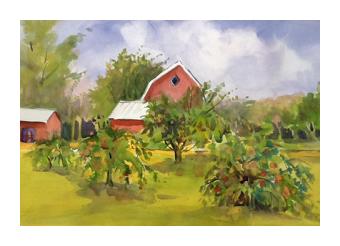
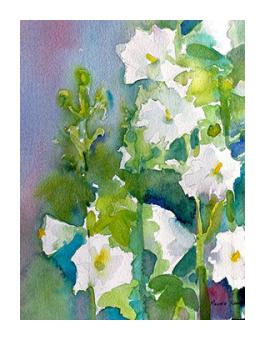
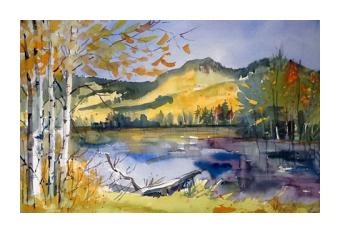
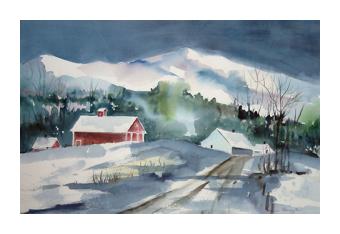
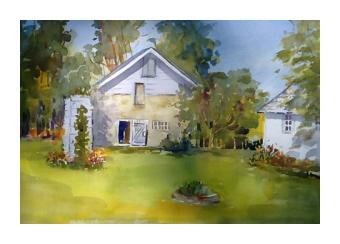
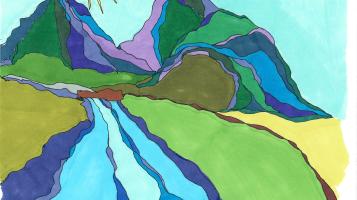
Felicity Haselton
I was raised by holy people and artists. This informs the way I experience the world and consciousness, and through art, I share what I see. I am as invested in the energy of the work as I am in the outcomes.
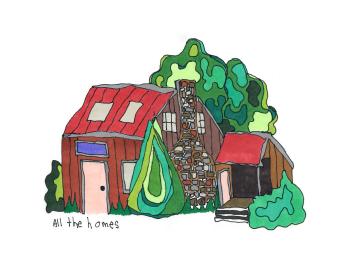
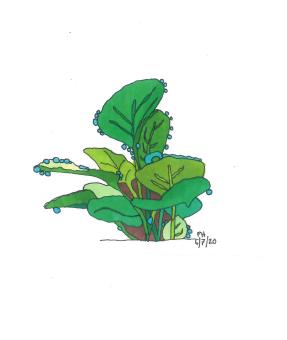
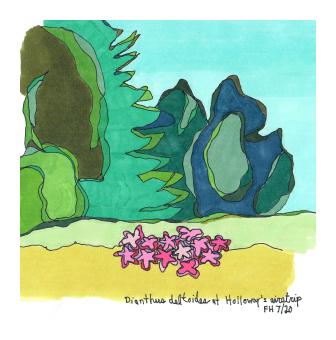
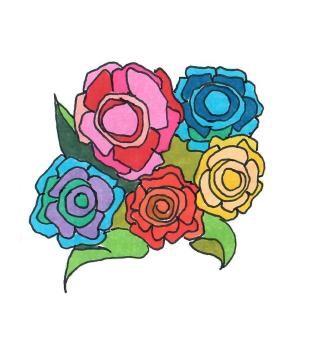
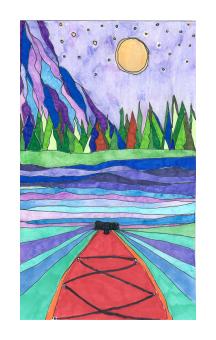
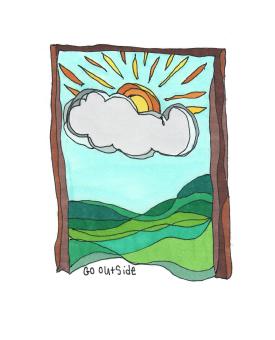
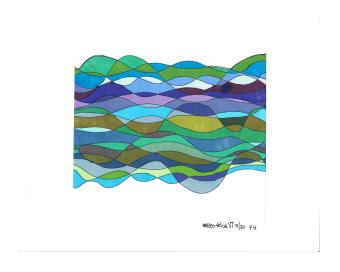
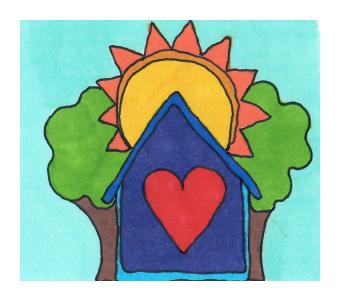
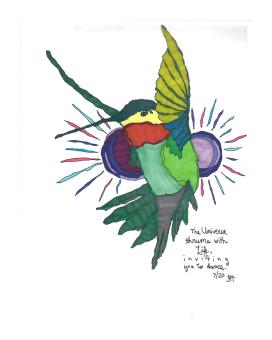
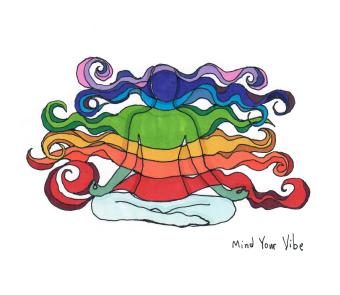
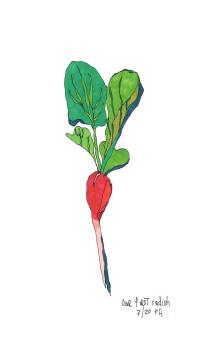
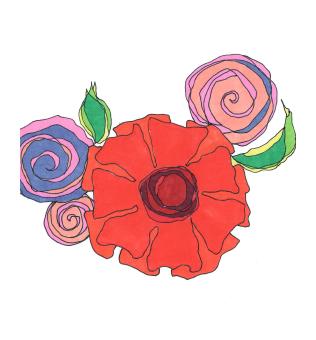
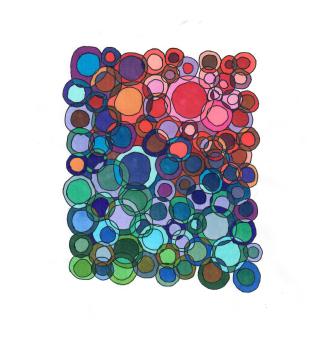
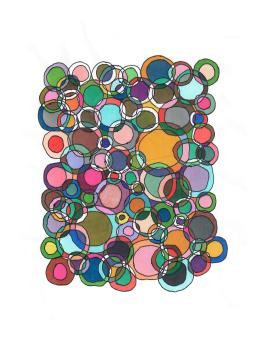
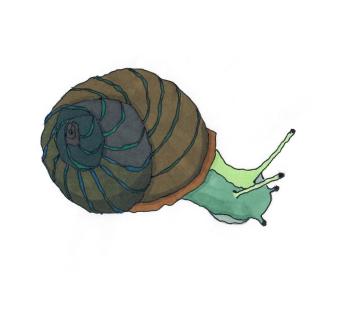
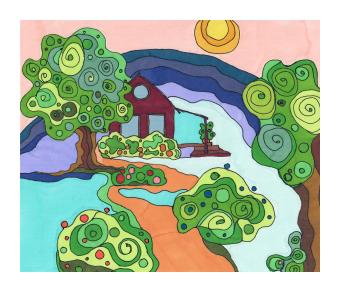
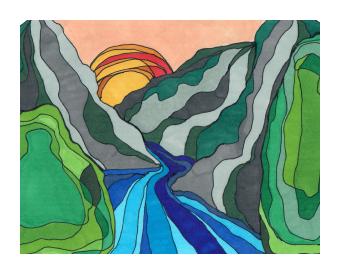
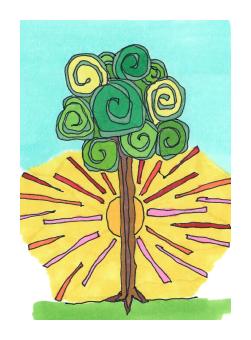
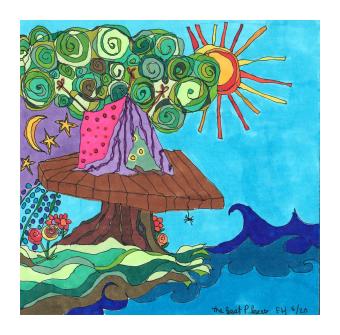
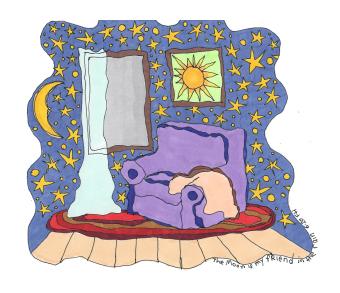
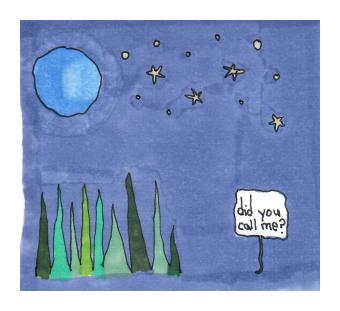
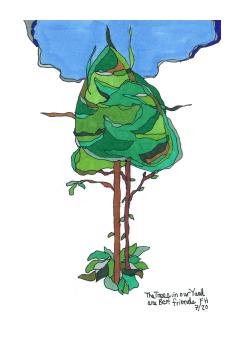
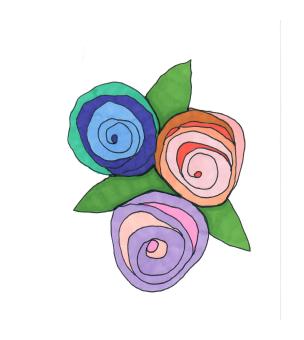
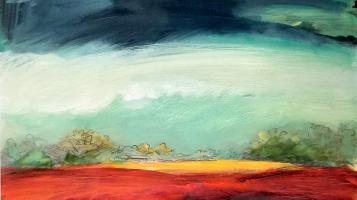
Judith Hawkins
Water, with all its varied dimensions, fascinates Hawkins. She is drawn to and inspired by its simplicity and changing nature - from the pond pebbles on the bottom through layers of water, to surface tension, reflection, water splashes and ripples. Minute color relationships and a sense of place have her diving into her oil paints. She remarks that she is continually learning something new whenever she puts brush and color to canvas, each experience bringing a new perspective and vocabulary to her work. Her paintings are inspired by country drives looking at favorite marshes, fields and ever changing Vermont skies. She expresses her recollections in new paintings, exaggerating key highlights, beginning a painting at the top and work ng down, quickly establishing mood through color and composition. She allows the paint, drips and accidental color combinations to guide her vision to create the drama of weather, skies and water. Finished paintings often don't resemble their beginnings; they go through a continual process of change.
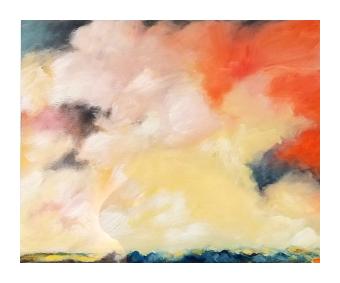
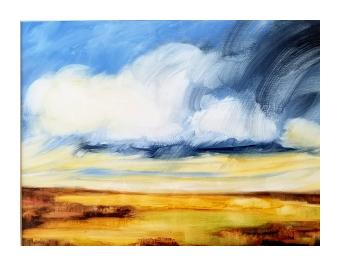
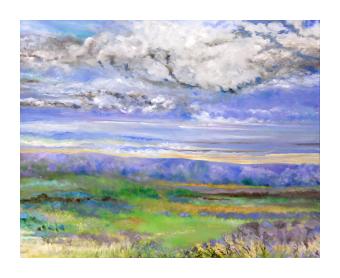
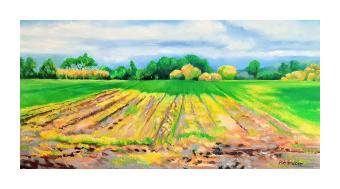
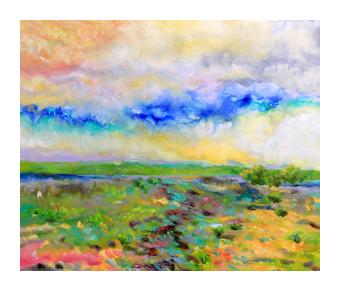
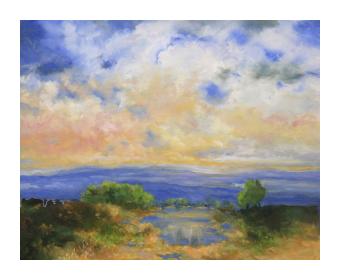
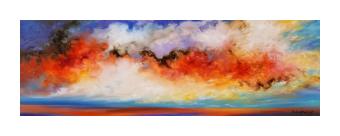
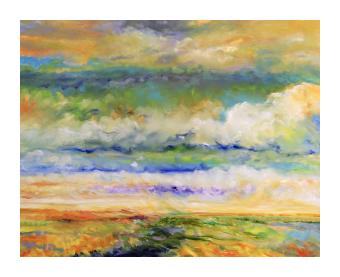
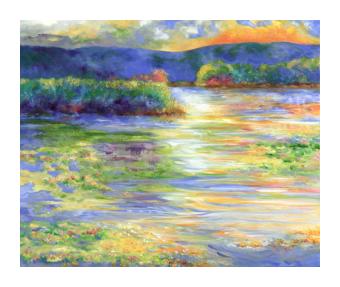
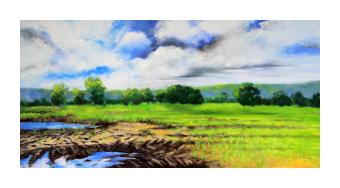
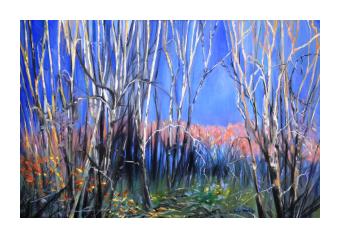
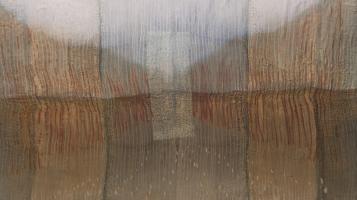
Karen Henderson
Karen is a fiber artist living and working Montpelier, Vermont. Her work explores the connection between self, place, emotion, and time. Seasons, atmospheres, and the time of day are of special interest to her. She tries to recreated these natural occurrences, through the use of color, line, and texture. In her work she used different dye techniques (batik, shibori, color removal, rust print) as well as sewing with custom weavings and fabric pieces and hand stitching. Her techniques are contemplative, encouraging introspection while other processes are spontaneous and unpredictable. Henderson successfully balances the two approaches, hoping to capture those ephemeral, fleeting moments of time that inspire her.
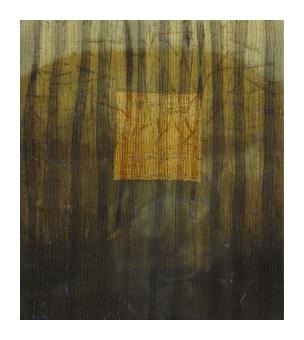
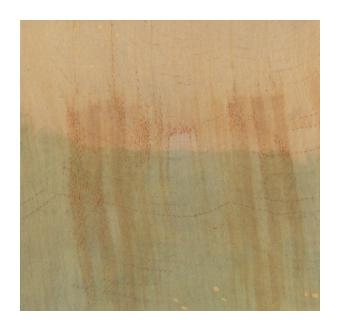
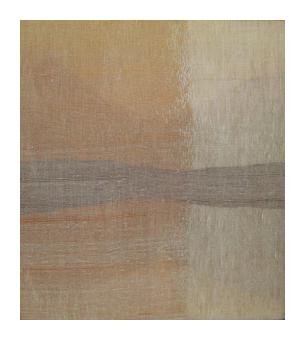
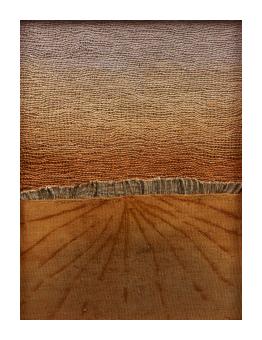
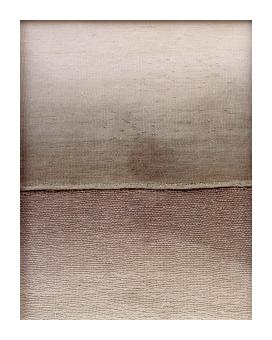
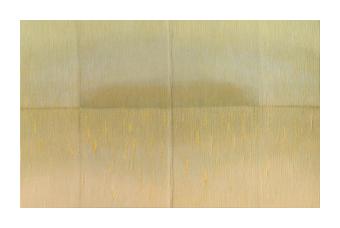
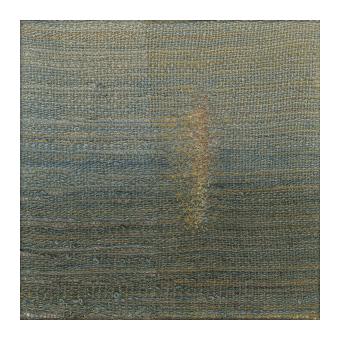
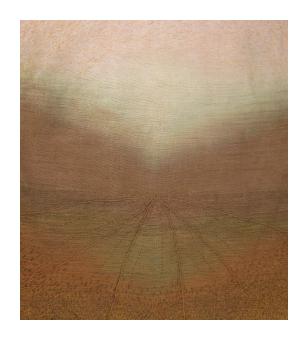
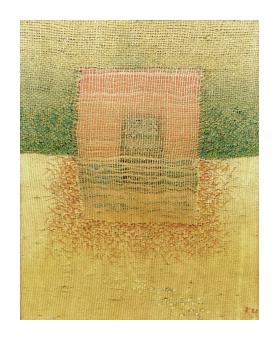
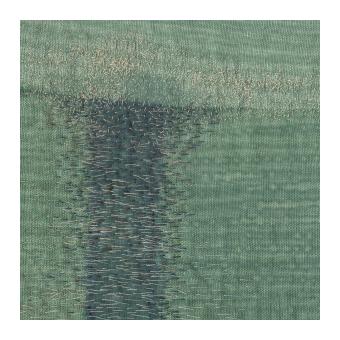
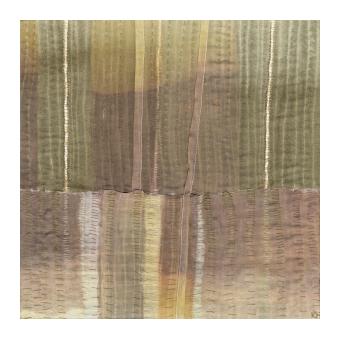
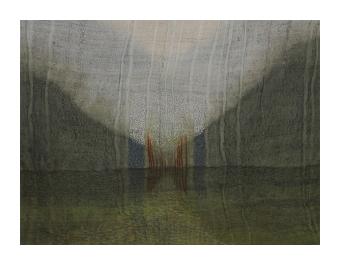
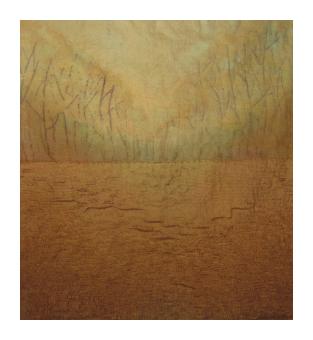
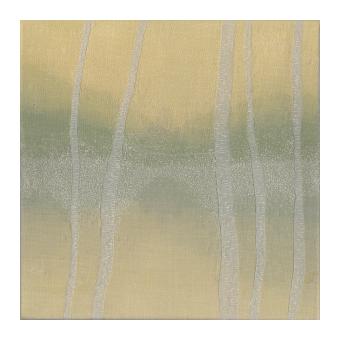
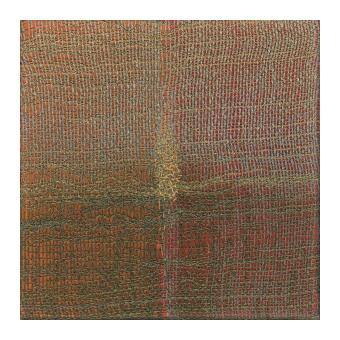
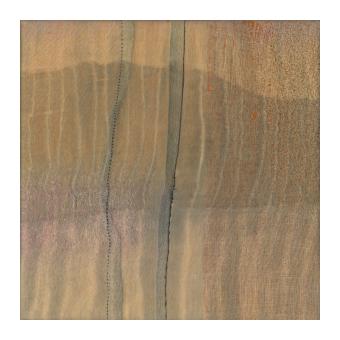
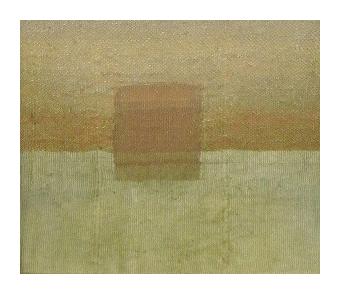
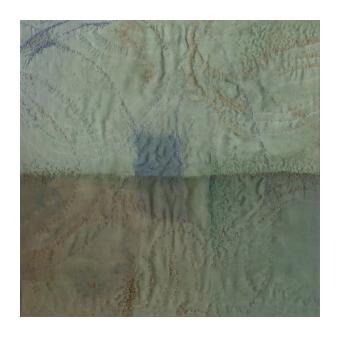
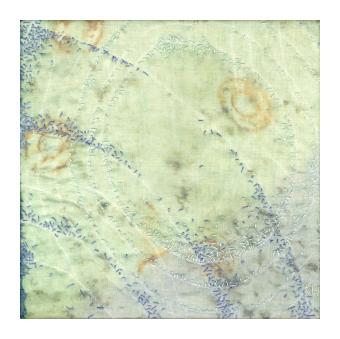
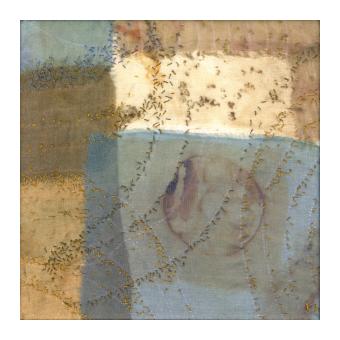
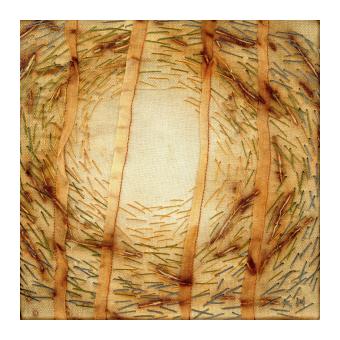
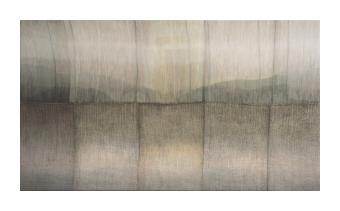
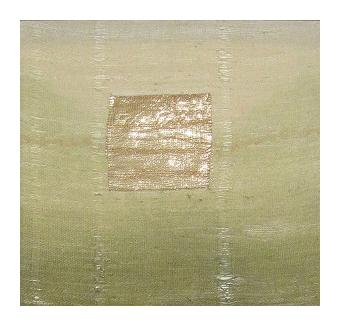
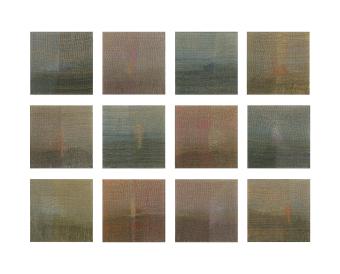
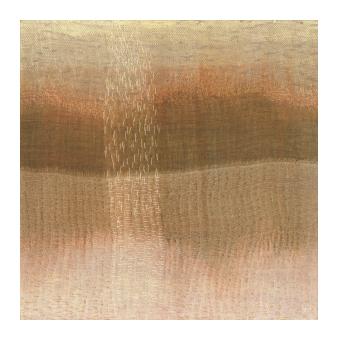
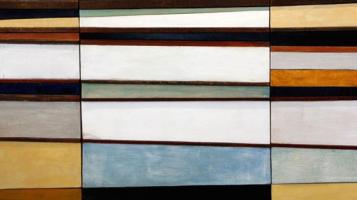
Phil Herbison
The combining and re-combining of materials and objects is nothing new to the art world. From aboriginal folk art to the 'combines' of Robert Rauschenberg, unpredictable forms of expression have often sprung out of serendipitous or provocative juxtapositions of scrap materials and unwanted objects. For the past ten years, this has been my primary medium: found objects, rags, wood scraps and paint. They speak to me visually and draw my attention to new aesthetic possibilities. A haphazard array of such elements strewn about my studio will often grab my attention and start me on a journey where I explore formal relationships that want to take on a life of their own. An un-expected color palette may come out of elements that have been painted, sanded, re-painted, sawn and re-shaped. Contrasting textures emerge while tensions in form and color converge. The work evolves until it stands on it's own as a new aesthetic proposition. Whether through the use of photography or purely digital painting and collage work, I continue to explore the world of printed imagery. As with my ‘Compositions In Wood’, my approach to making art through print media is also ‘formalist’ in nature. I am somehow driven to capture and work with visual elements of my immediate world. I find and photograph natural occurrences of juxtaposed colors and shapes or patterns of light and dark that, when composed in a certain way, maintain a visual energy that lasts.
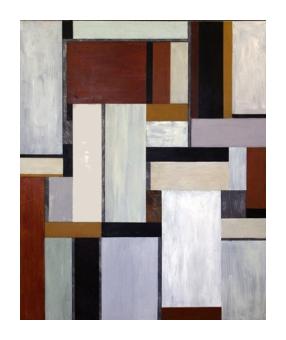
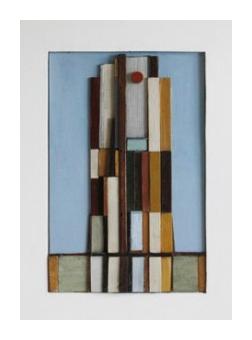
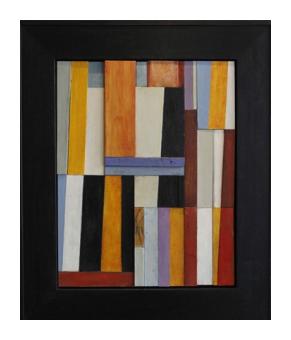
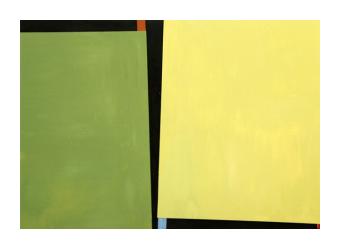
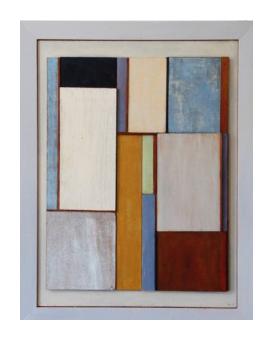
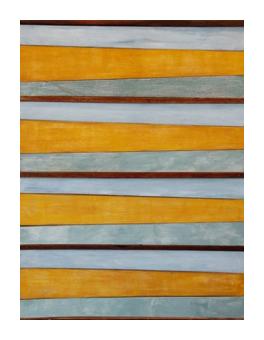
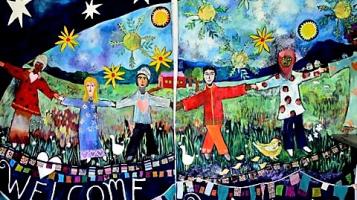
Mary Hill
I love pattern and textile design. The abstract paintings are a way for me to organize color and form in an intuitive way. My hand moves and chooses paint color. I think the abstracts hint at overall decorative design...and then wander into other territory. An adventure into the unknown: I like that. The landscapes were created when my kids were teenagers. I was working on using a lighter color palette (analogy for “lightening up” myself…”chillax” Mom.) I painted them in response to a challenging few years, adding white to a palette that was usually thick with dark, rich colors. I work with many colors of paint spread out on a tray. I like using acrylic because of the easy clean up. I work from images in my head: when I set out to paint something I think up a design. What I paint that day depends on how I am feeling. I never have knowledge of the exact outcome of the work. Painting makes time disappear. I feel like I have created a little bit of peace in my corner of the world after I have been painting.
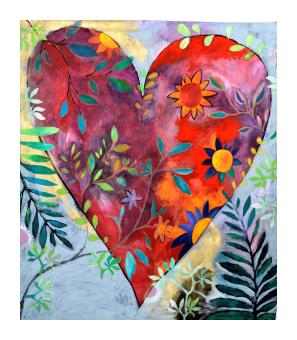
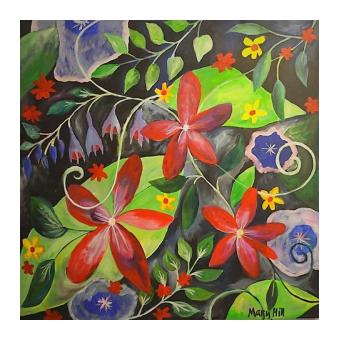
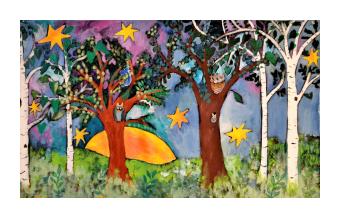
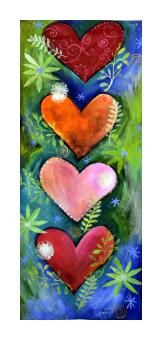
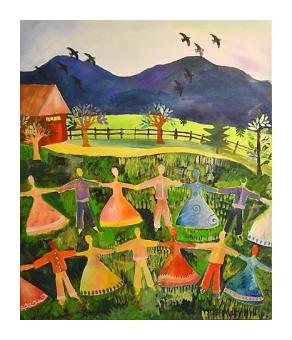
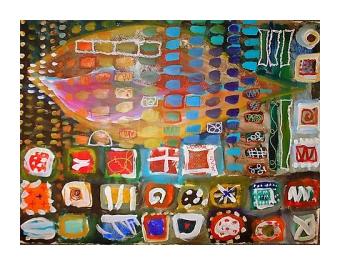
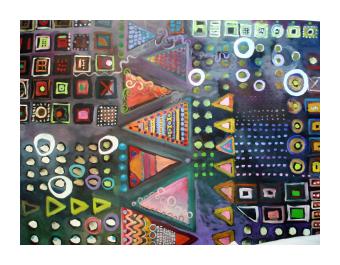
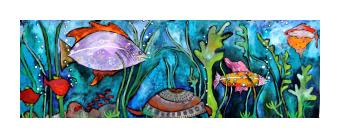
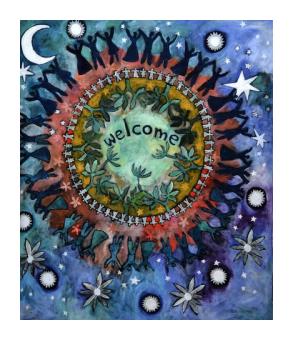

Robert Hitzig
Robert Hitzig loves that the meaning and intent of abstract geometric art is not immediately evident. It allows people to generate their own relationship to the work, create their own questions, and find their own meaning. It doesn’t hit you over the head with ideas about what to think and how to feel. It creates space for wonder, questions, and dialog, whether internally or with others.
For Hitzig, that is the point. To use art as a vehicle to explore, question, and, most importantly, to not know. Because not knowing helps us to break down our hardened beliefs in absolutes, in black and white. With irony, he loves the idea of using random shapes and colors to help people see the world in shades of gray. In this way, he hopes his art can create an opening for the viewer, providing an unexpected path for seeing the world in a less rigid way.















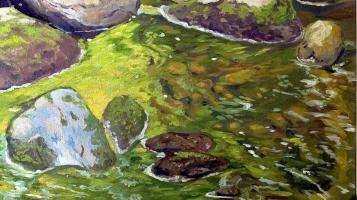
Jennifer Hubbard
Jennifer Hubbard grew up in Baltimore, Maryland, where she studied painting and drawing at the Mitchell School of Fine Arts, and Maryland Institute, College of Art. She moved to Vermont in 2009. My work has always been primarily focused on portraiture. When I moved to Vermont, where the landscape is such a powerful influence on daily life, I decided to move my subjects outside, into the environment. I was interested in capturing the interaction between people and the outdoors, particularly as the seasons change. Formally, I try to capture the spirit of the snapshots I use as my references, including the abstraction caused by the camera. I noticed, when doing the landscapes behind my portrait subjects, my brushwork becoming looser, and that I was developing a new painting style. I replaced some of the figures with barns, and other architectural elements, to pin down the painting in a scale and space, and then worked away from the horizon, playing with my paint strokes. The resulting paintings bring to mind both Impressionism and Photorealism, and offer a contemporary perspective of the people and landscapes of Vermont.
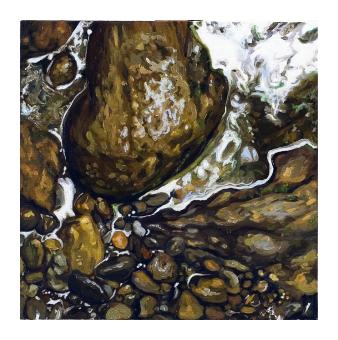
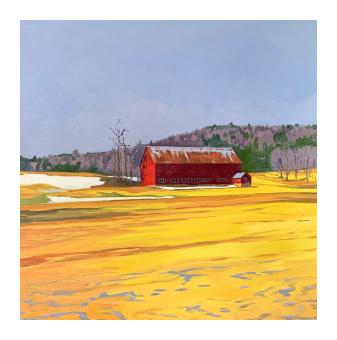
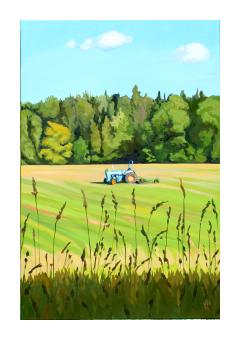
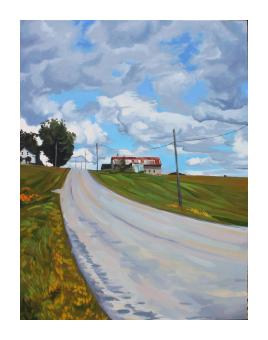
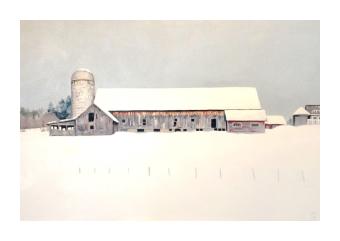
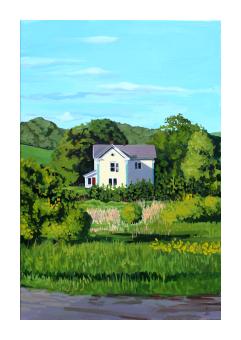
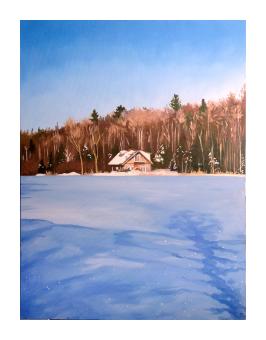
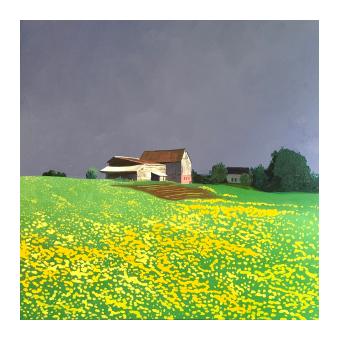
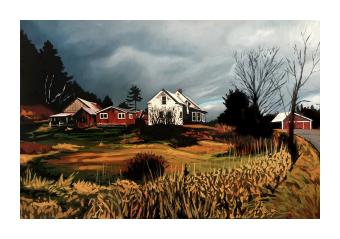
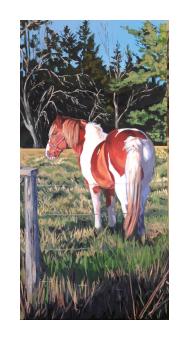
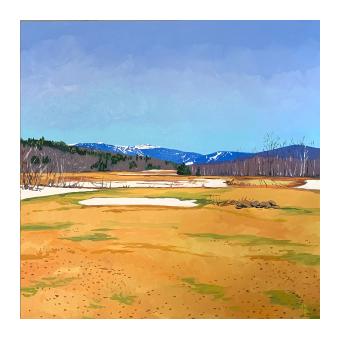
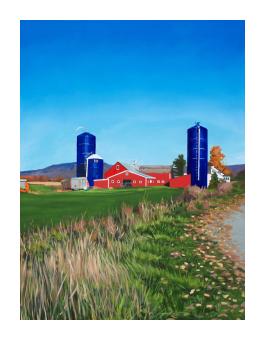
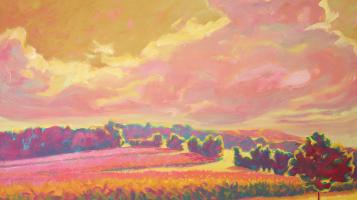
Joy Huckins-Noss
Joy Huckins-Noss is a contemporary artist whose love for nature is seen in her vibrant canvases. Joy’s paintings feature tiny spots of color which combine optically. Her style is similar to pointillism, but has a fresh contemporary edge. She applies color in multiple layers to create a uniquely textured surface of color and light. Joy’s paintings focus on our relationship with the natural world. Landscapes of trees and bodies of water, plants, and objects found in nature, draw viewers into a deeper relationship with our environment. Joy’s art relies on the perceptive ability of the eye and mind of the viewer to mix the color dots. Her surfaces are rich, intense and seem to vibrate. “I love to work with the color to make the paintings glow. I want to bring the feelings and sensations of being outdoors into the painting” Joy began her art studies at Drew University, and then continued at the University of New Mexico, earning her BA in art. Joy participated in two residencies at the Cape Cod School of Art in Provincetown, where she studied painting in the tradition of the Impressionists. Huckins-Noss has exhibited extensively around Vermont, New York and New Hampshire, Cape Cod, Florida, and Arizona.
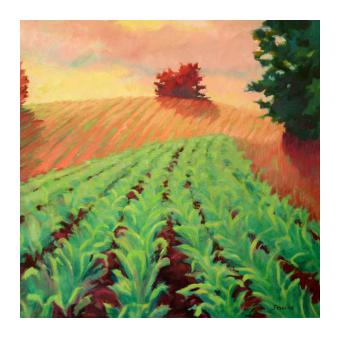
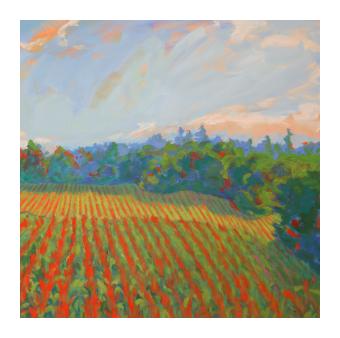
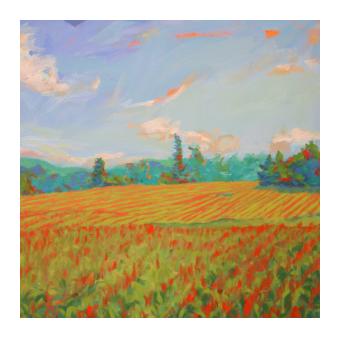
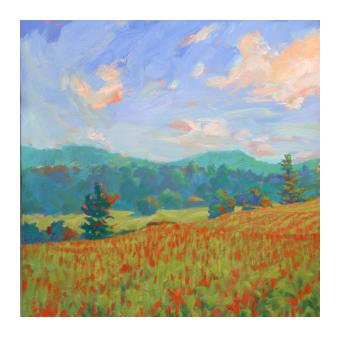
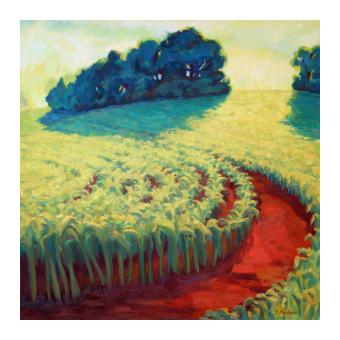
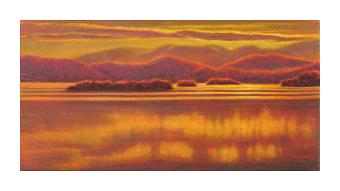
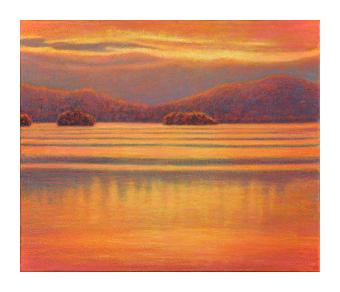
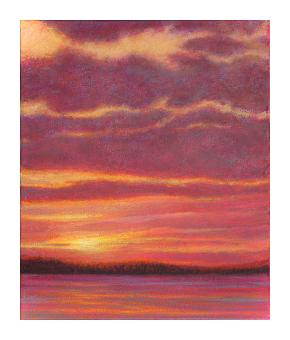
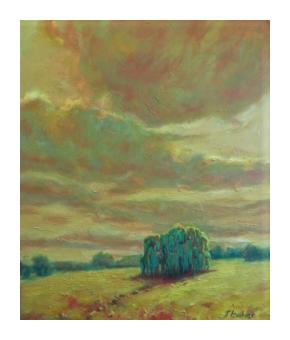
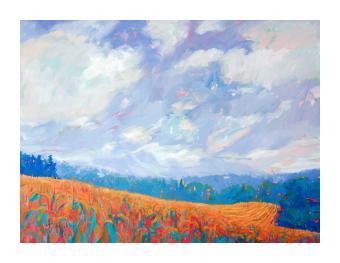
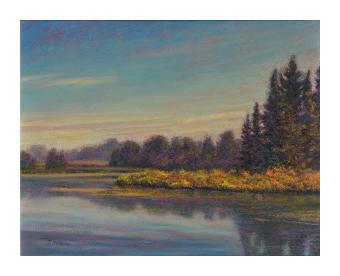
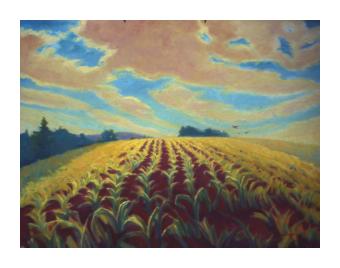
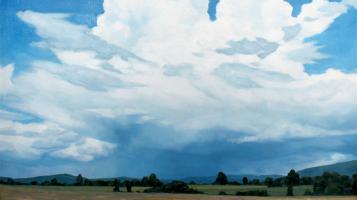
Rory Jackson
As long as I can sense a progression in the development of my work, Painting will remain a central part of my life. I think Robert Henri best states my feeling of what it means to move forward as an artist when he says, “All outward success, when it has value, is but the inevitable result of an inward success of full living, full play and enjoyment of one’s faculties.” I watch both my sons continue the artistic interest in bringing to life these moments we observe. It is a joy to have the privilege to create, and to watch my own children follow their creative intuition, allowing a story to manifest reassures me that I am moving in the right direction. Rory spends time between his home in Lincoln, VT and the beach of Cape Three Points, Ghana. While painting the landscape of Vermont, he focuses on the dramatic light, and space around the mountains and valleys, pivoting on his favorite Mountain of Abraham. In Ghana Rory spends time studying seascapes, village scenes, boats and the reflective light and movement of the sea and the life that depends on its abundance. “All honest observation absorbs into my successes a true vibrancy of life. The balance of the two places keeps my interest in subject matter fresh, while marking each year’s progress in two very different seasons.”
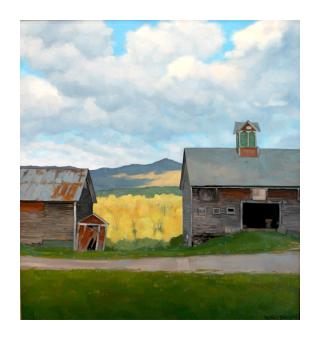
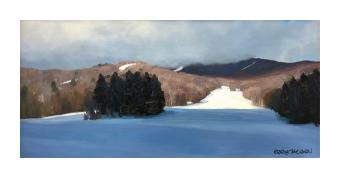
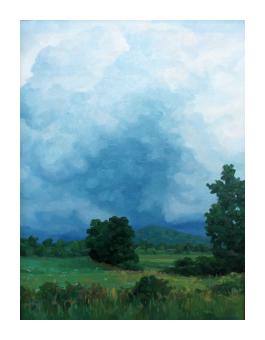
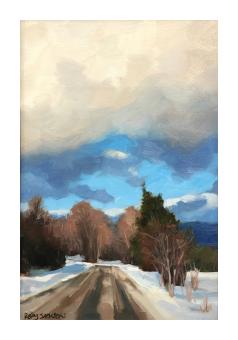

Amy Jelen
After working in stained glass for many years, Amy Jelen found inspiration in a local collage artist’s work and began experimenting with paper as a medium. Her collage art mimics, in some ways, her stained-glass style, with the use of tiny pieces creating larger scenes. Inspired by the colors and textures she sees in the natural world, she uses paper from the pages of magazines to create abstract pieces, imagined landscapes, and recognizable Vermont scenes. The goal of her artwork is simple: connecting with community, stirring a feeling in a viewer, and creating works that communicate serenity and quiet the mind.








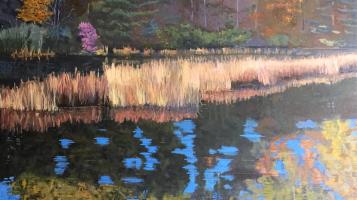
Nils Johnson
My painting is about color. I employ stacks of associated colors that breathe through each other to create a vibrant, textured surface that is fun to investigate. I start by creating what is essentially a color negative, the under-painting. To determine the proper color for the large masses of the first layer, I stare for 30 seconds at the color I want to end up with and then gaze with unfocused eyes at a white sheet of paper. A “ghost” image appears—for instance, a ghost cerulean blue shows up, having stared at a cool red. A grove of pines in full sunlight start out dark brick red; yellow aspen begin their graphic life violet. By allowing the under-painting to peak through by not completely over-painting, the eye blends the push-pulled colors, lights and darks, and places objects in space in a fascinating and unique way. A second concept: The most effective paintings, the ones that sparkle and catch your eye contain warms, cools and earth tones. They also have light lights and dark darks. (There is nothing worse than a “flat” painting.) Shadows hold cool purples and blues, as well as warm darks. Brighter passages hold warms, but also subtle cools. Paintings are not photographs. A landscape must show, not what is there, but what the artist feels about what is there. I show my passion for life and art by creating exciting paintings with stacks of complementary colors, salt and peppered with warms, cools and earth tones—with plenty of value contrasts between them.
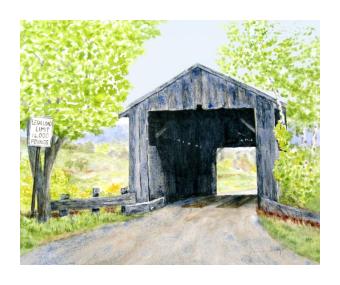
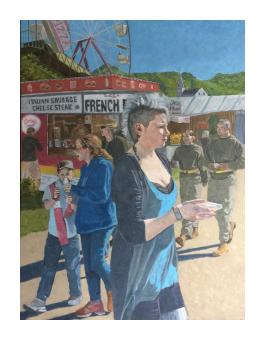
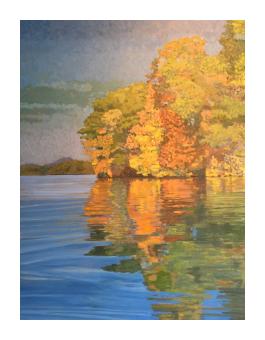
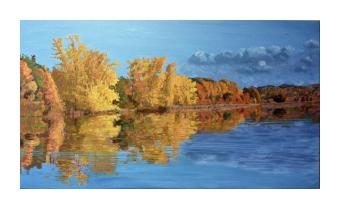
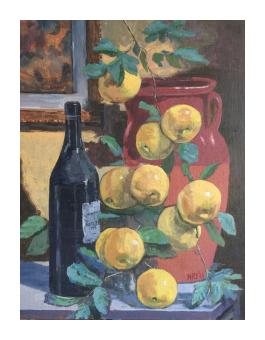
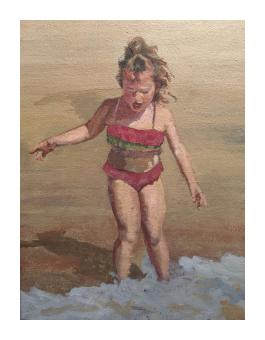
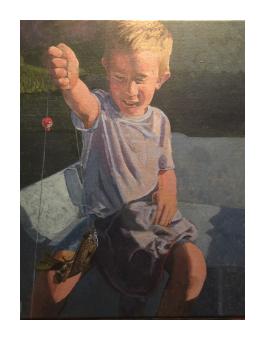
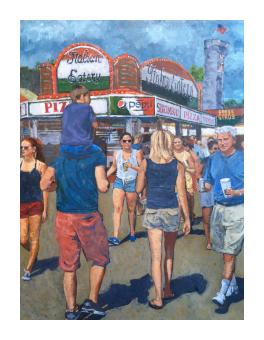
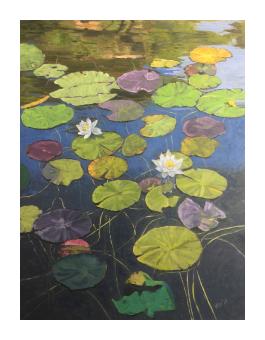
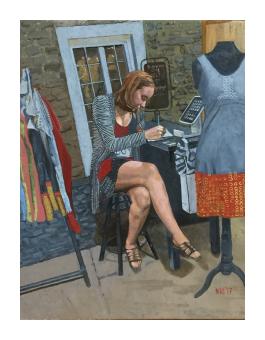
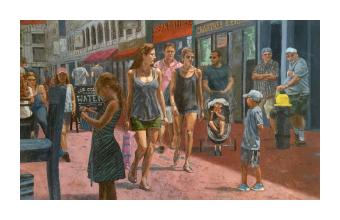
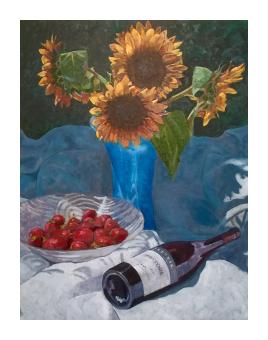
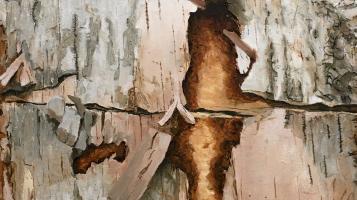
Peter Joslin
I endeavor to render paintings real and authentic from direct observation of the subject. A painting’s pictorial language determines to what extent this authenticity is validated or not. In the Spring of 2018 I began paintings based on tree bark, fascinated by the color, layering, texture and design. These layers mimic paint layers in beautiful ways and my intention has been to bring the physicality, color and pattern of the bark to paint. These paintings are done from the subject in my studio.
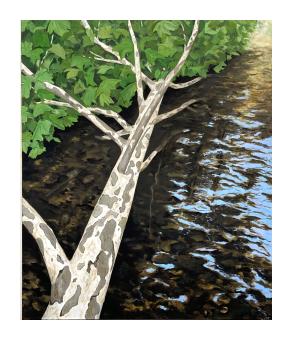
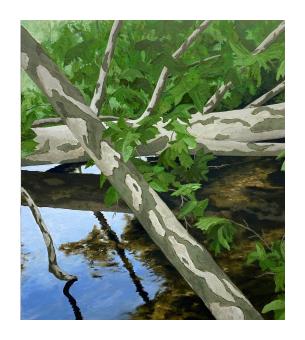
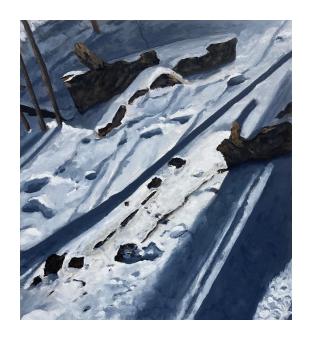
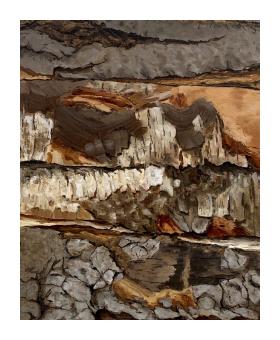
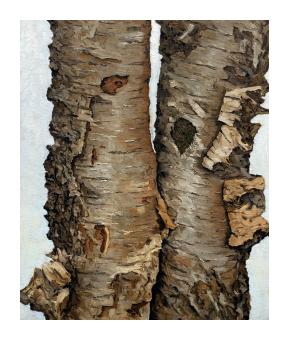
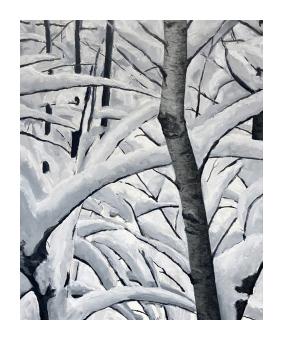

Amjed Jumaa
Amjed Jumaa was born in Basra, Iraq and lived his whole life with disability. He found that drawing was the only way out of the psychological conditions that almost killed him in his youth because of his disability. He started drawing when he was 10 years old and in 1992, he obtained a professionalism from the Iraqi Artists Syndicate.
Jumaa came to America in January 2021 after a long journey seeking freedom. He loves expressive and symbolic painting because he finds himself in it. He paints using acrylic and oil on canvas. He loves painting the beauty of nature in Vermont.












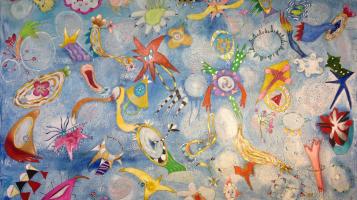
Cecelia Kane
Lately I’ve been using self-portraiture in a variety of media to attempt to answer the question, “Who Am I?” My method is to create visual mechanisms for clarity, and courage. I’ve exhibited widely across the Unites States, with about twenty-five solo shows since obtaining my MFA in Drawing and Painting in 1997 from Georgia State University. Some of these venues are Ruby Green Gallery in Nashville, TN, Hallwalls in Buffalo, NY, The Schwartz Center for Performing Arts at Emory University, the Atlanta Contemporary Art Center, Soho 20 in Chelsea, NYC, Gal and Ruth Bachofner Gallery, Los Angeles. Locally I’ve exhibited at Northeastern Vermont Regional Hospital, Studio Place Arts in Barre VT, AVA in Lebanon NH, The Chaffee Art Center in Rutland VT, The Chandler Center for the Arts, Randolph, VT and the Gilmore Gallery in Peacham, VT. I’ve been a gallery curator, visiting artist, guest college lecturer, performance artist, community artistic project director, teacher and graphic producer. I’ve held numerous residencies and been the recipient of several grants to produce artistic projects, particularly for The Hand to Hand Project, an expansive collaborative work incorporating eight years of daily artistic commentary on the Iraq War, with 2,000 artworks by 195 national artists at fifteen venues coast to coast. I live and create in Peacham, Vermont.
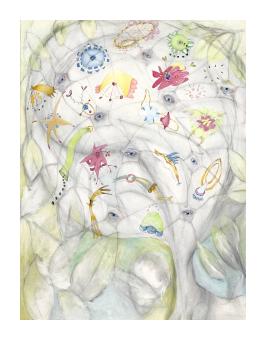
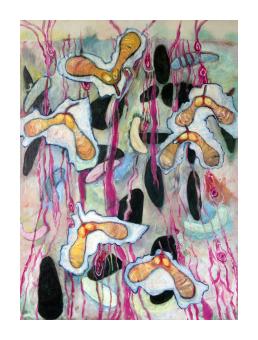
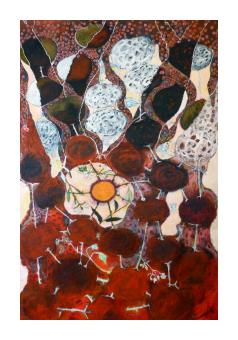
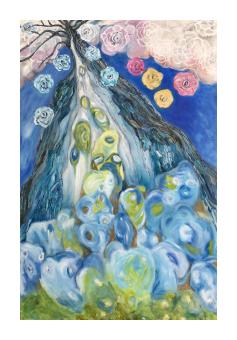
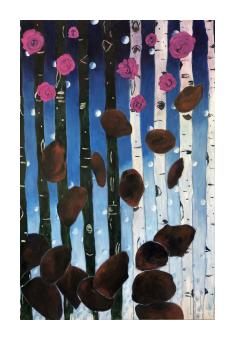
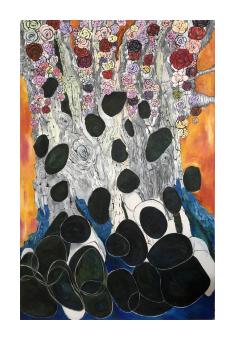
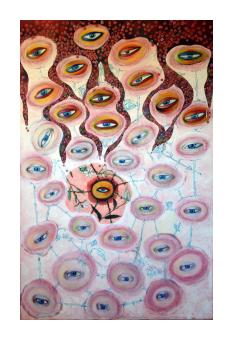
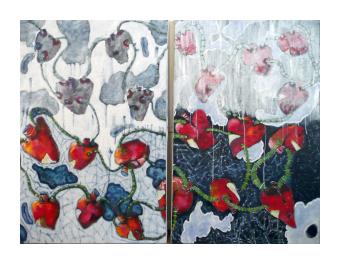
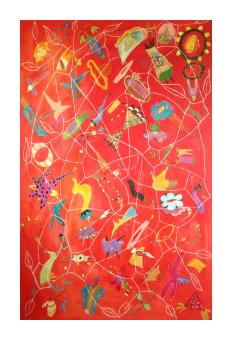
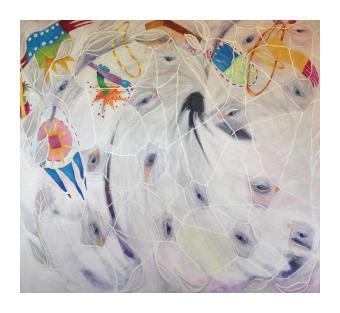
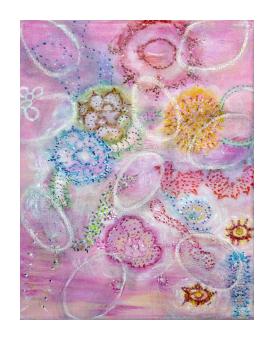
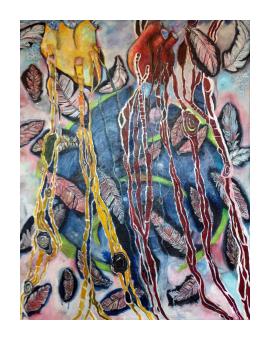
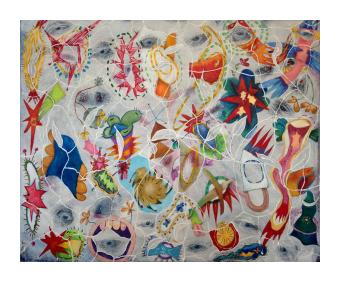
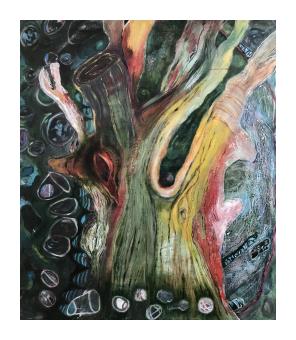
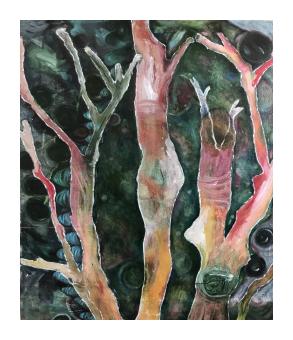
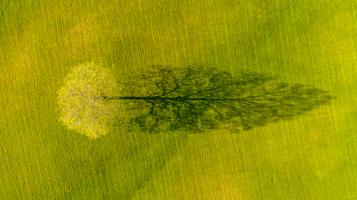
Caleb Kenna
Caleb Kenna is a freelance photographer and certified drone pilot based in Middlebury, Vermont. With more than twenty years of experience as a photographer and writer, Caleb’s photographs have been published by The New York Times, Boston Globe, Wall Street Journal, Los Angeles Times, Frommer’s, Vermont Life, National Geographic, Yankee, Smithsonian, Sierra, Seven Days, Rutland Magazine, The Chronicle of Higher Education, Lonely Planet, Education Week, The Vermont Land Trust and many other commercial and non-profit organizations. Caleb loves to create dynamic photographs of people and places.
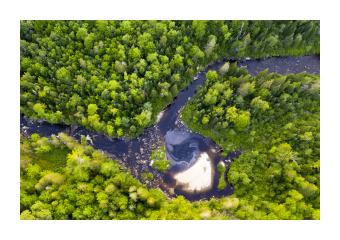
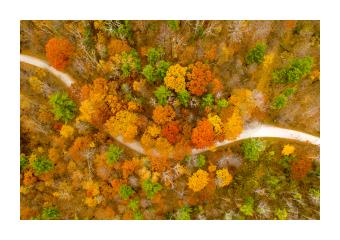
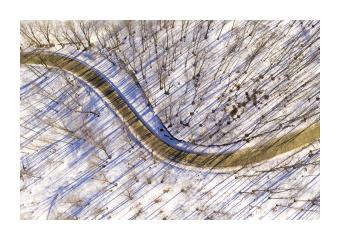
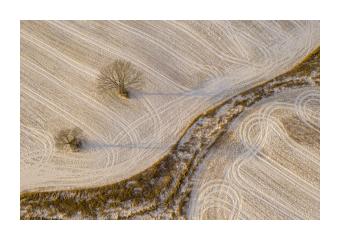
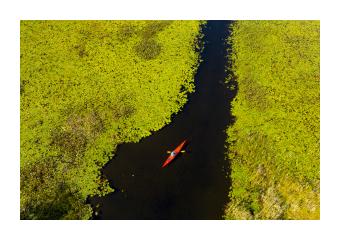
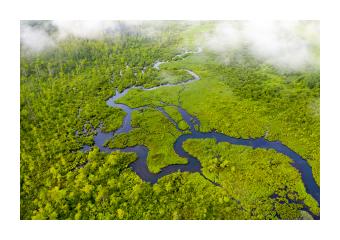
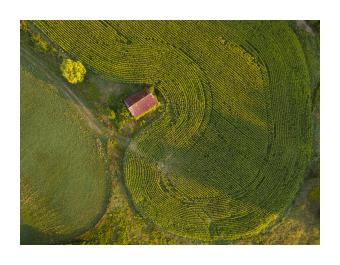
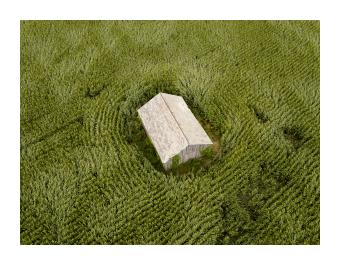
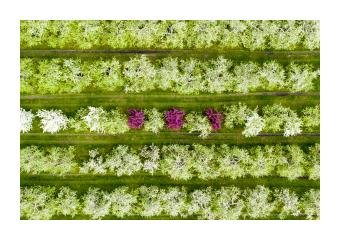
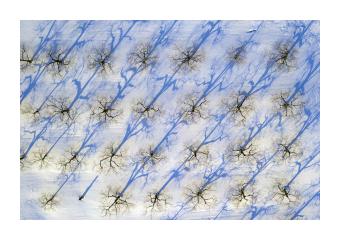
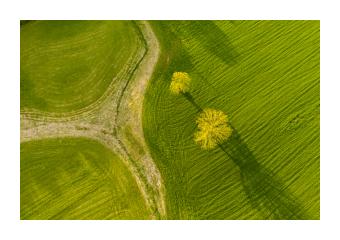
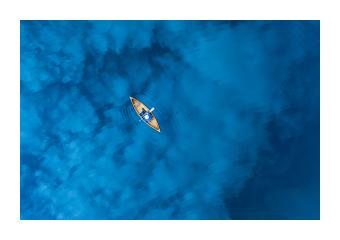
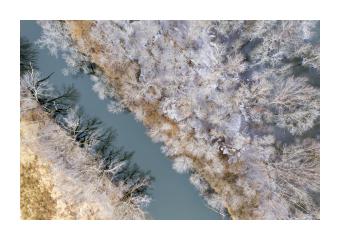
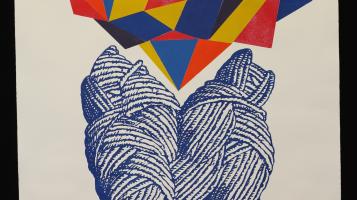
Jennifer Koch
Jennifer Koch is an artist working Burlington, VT. She has been working on three extended series of works; Specimen a collection of construction made with found objects, Marriages of Reason a series of collaborative print made with Gregg Blasdel, and Scissor Drawings collages made with and inspired by a 1925 Funk & Wagnalls' dictionary. Jennifer Koch owns and operates Frames for You and Mona Lisa, Too, a custom picture frame shop in Burlington.
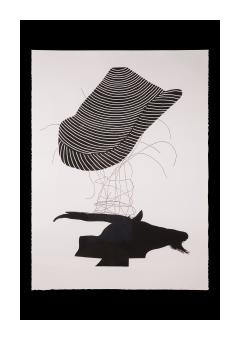
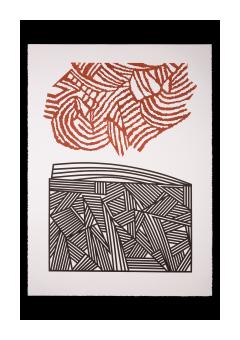
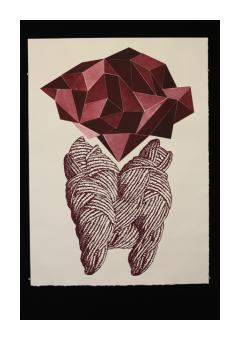
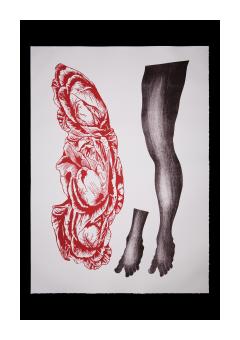
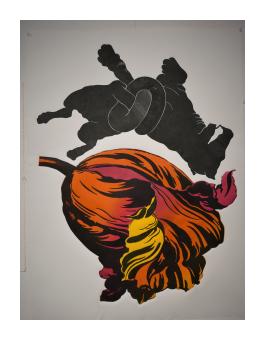
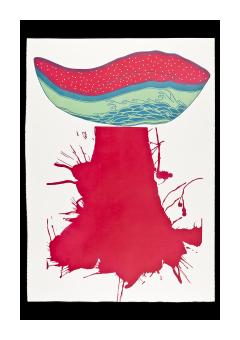
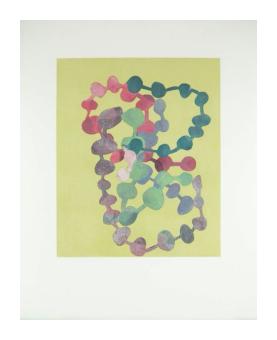
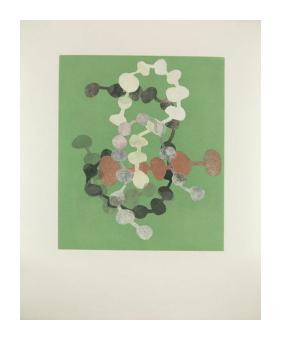
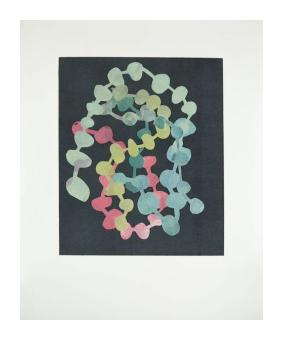
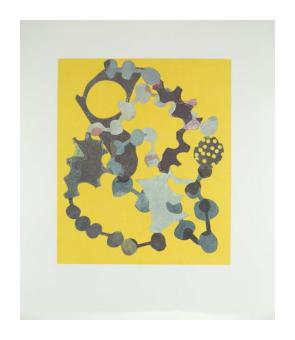
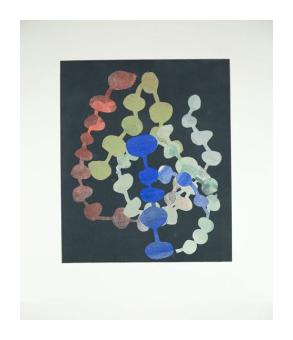
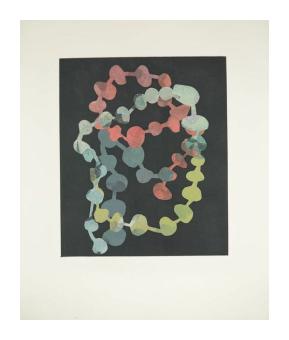
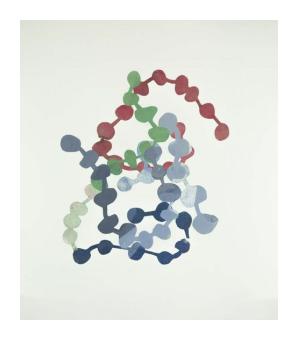
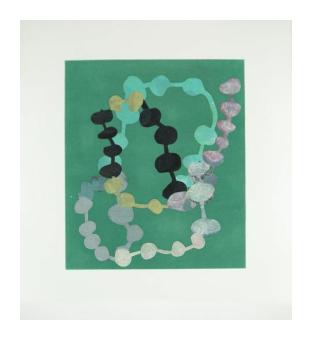
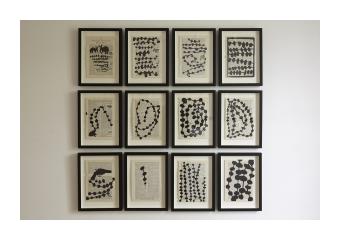
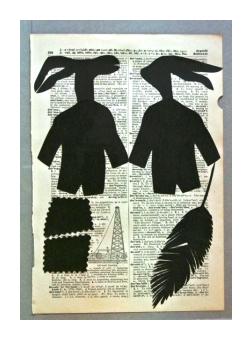
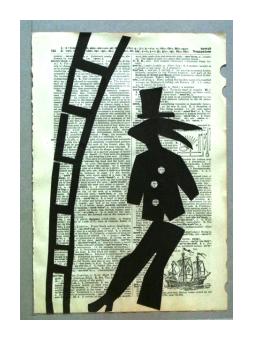
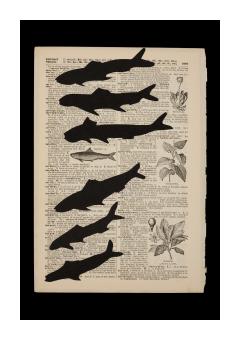
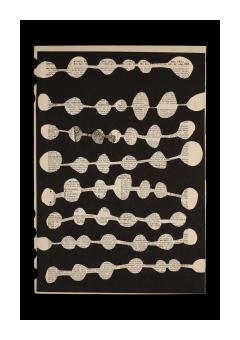
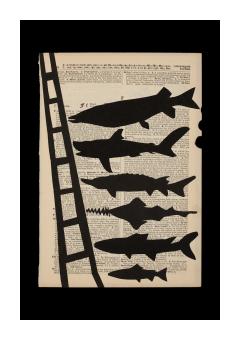
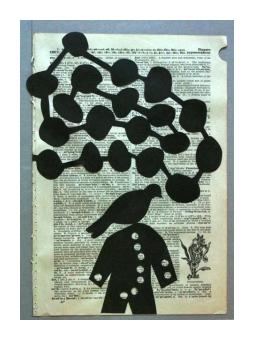
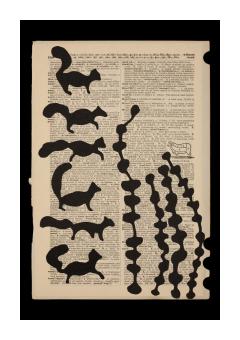
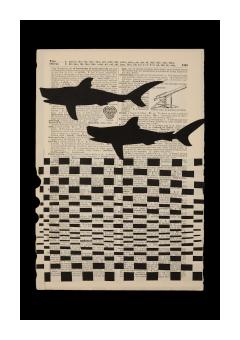
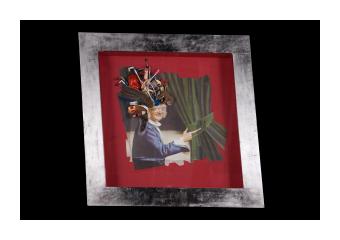
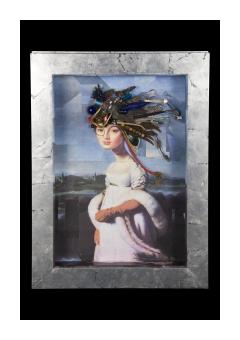
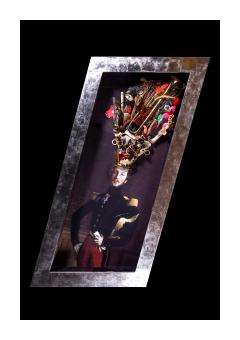
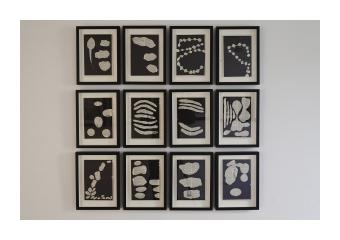
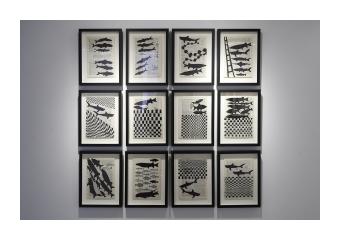
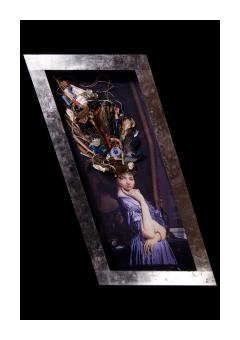
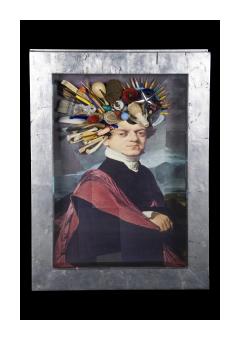
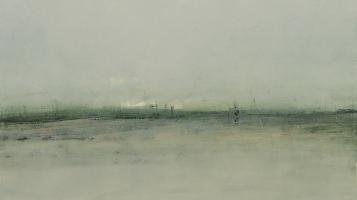
Stephanie Kossmann
Stephanie specializes in monotype printmaking and uses etching inks and oil paint to express complex emotional themes. She’s focused on creating abstract atmospheric portraits and landscapes that facilitate healing. Her artwork holds space for reflection, free from judgments and without historical images or context. Feeling compelled by her own healing journey, a diagnosis of Complex PTSD, and a desire to serve others through art, she began exhibiting in 2017. Stephanie grew up on the south coast of Massachusetts and lives in rural northwestern Vermont. She completed her bachelor’s degree at Boston University in landscape geography and studio art. She is completing a graduate certificate program in Positive Organizational Development at Champlain College. I am in love with monotype printmaking. It whispers of nostalgia, intoxicates like oil paint, and shares wonders and spontaneity. We understand each other as mature couples do. Our mutual discovery is appreciative, intense, and flowing. We share secrets. My colorful abstract portraits and landscapes hold safe space for non-judgmental reflection and rejuvenation. There is an expectation placed on artists to articulate what they believe they can best achieve visually. I strive to keep my descriptions lean; to gently guide viewers with a title or a theme. My imagery is derived from my own experiences in anguish and healing, a background in physical landscape geography, and self-hypnosis. It emerges from an appreciation that arts and sciences are related through observation, analysis, and creative problem solving. I judiciously combine etching ink and oil paint, using brayers, pallet knives, rags, squeegees, and found objects. The materials allow me create subtle, powerful, atmospheric images and to express complex emotional themes.
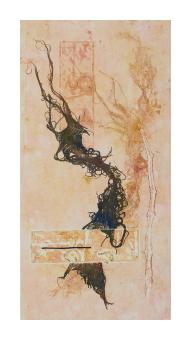
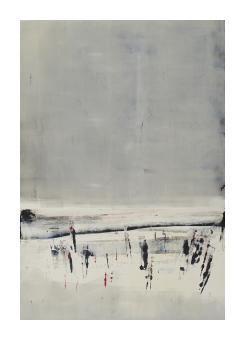
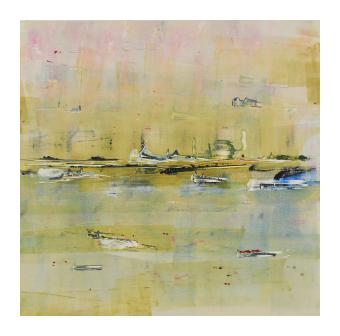
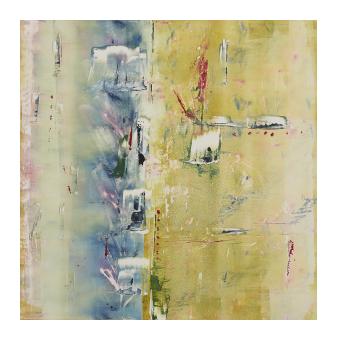
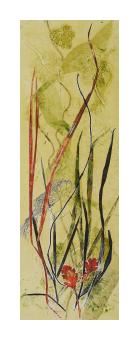
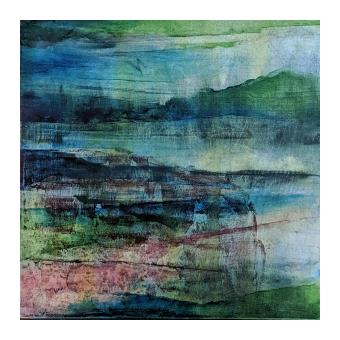
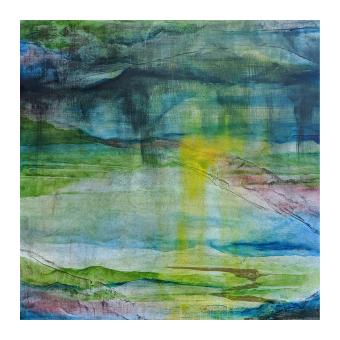
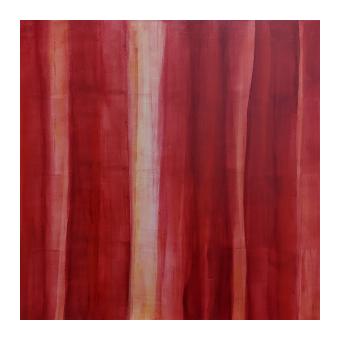
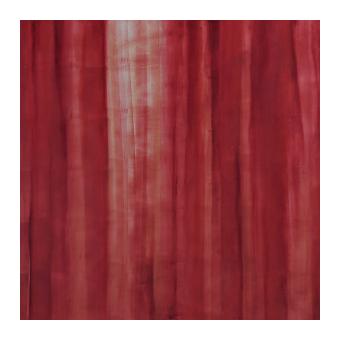
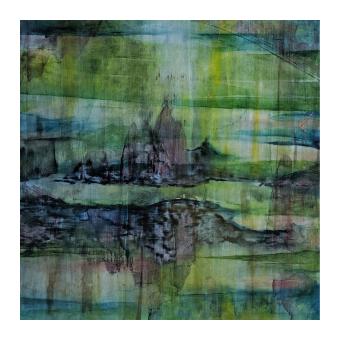
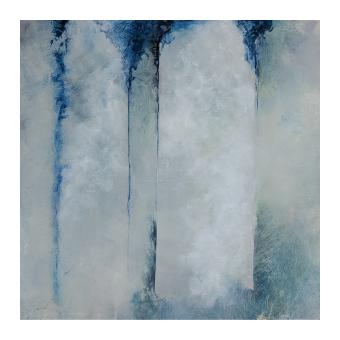
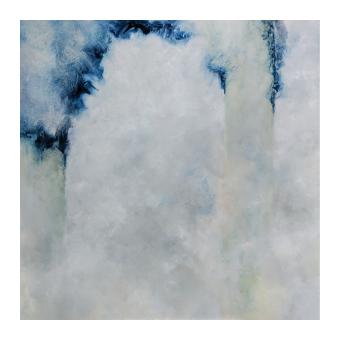
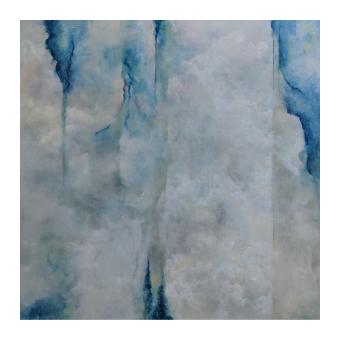
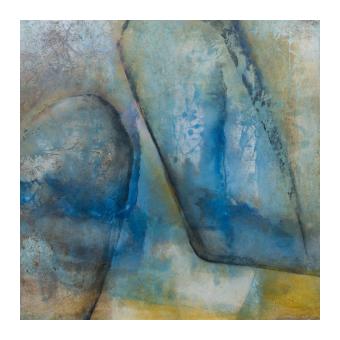
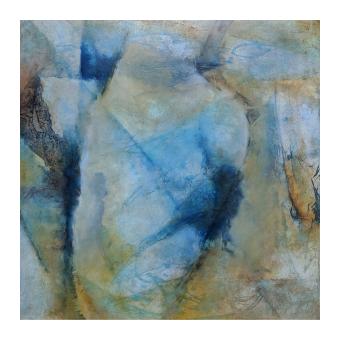
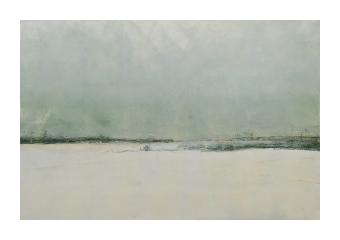
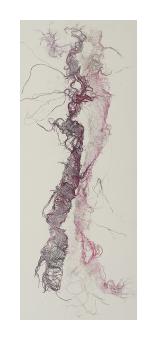
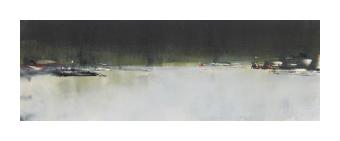

Nikolas Kotovich
Nikolas Kotovich is an artist and naturalist whose work explores how these two disciplines can inform and enhance one another. At a young age he traveled around the United States with the National Audubon Society, American Birding Association and the Vermont Institute of Natural Science. He majored in studio art at Bard College and Wildlife Biology at the University of Vermont where he co-taught classes in field-ornithology and participated in field studies on the conservation of New England birds. He also began working with architects and interior designers to produce custom artwork based on natural history. After graduating in 2014 he worked with the Smithsonian Institute and the Nature Conservancy. He has been commissioned to produce custom artwork by the Burlington Harbor Hotel, Burlington Hilton, Topnotch Resort and Spa, The Lodge at Spruce Peak, Treehouse, White Mountain Hotel, Snake River Sporting Club and Sylvan Lodge.







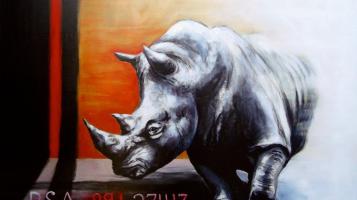
Leif Kruse
For years I thought my constantly changing subject matter took away from my identity as an artist, but over time I’ve realized that it actually helps define my style. Although I revisit past subjects and ideas frequently; they are never re-made in the same style that was previously used. I see it as a frequent evolution, and a necessary path forward. I will continue to follow this path until I find that one process that I might stick to. Combining acrylic paints and charcoal is one of my preferred mediums. I’ve always found black and white tonality very satisfying, but in need of a simple color addition. At times, these color additions become more prominent, but most of my work still has heavy use of charcoal throughout the layers of paint. I prefer to have a gritty and raw application of materials that can coincide with much more finished and softer areas. Perhaps this is inspired by the extremes of so much in daily life. Subject matter comes from many places, but I’m mainly inspired by the outdoors, and how we as humans interact with the natural world. As we continue to change our surroundings, I will continue to change my process and ideals. Through thick and thin, the desire to create still burns bright. Thank you and enjoy!
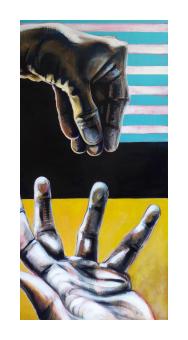
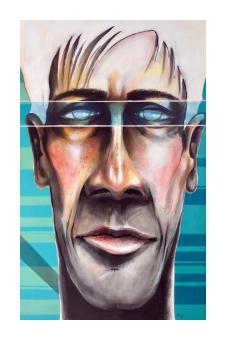
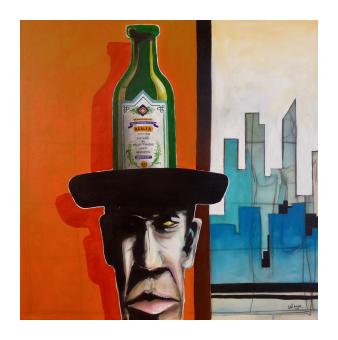
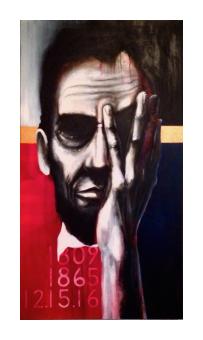
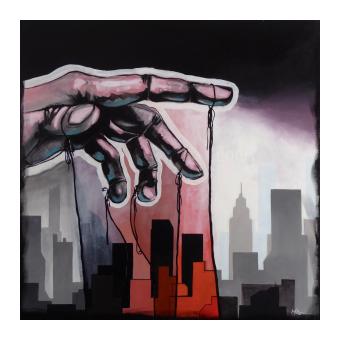
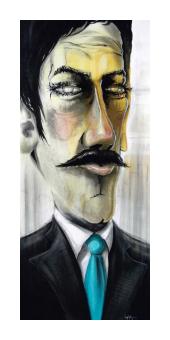
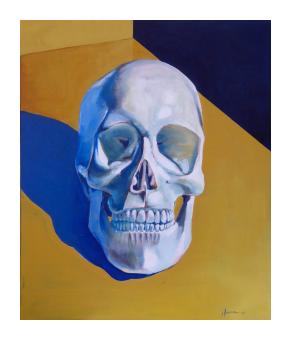
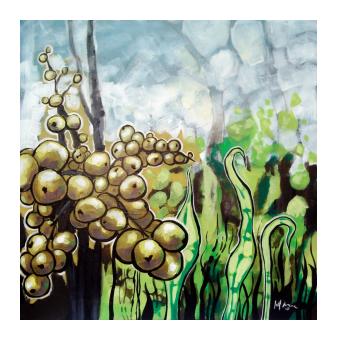
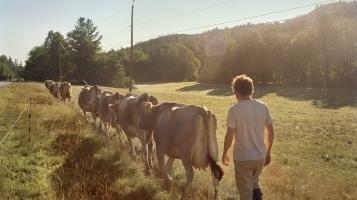
Mark La Rosa
Mark has been a fine art photographer since studying at the International Center of Photography in New York in the mid-1990s. A heightened awareness of how space and environment play an outsize role in our perceptions of ourselves is central to Mark's work. He is a bit of a traditionalist and still shoots medium- and large-format color film for all his fine art photography. His past work has focused on graffiti-covered trees, the interiors of anonymous cars, and the beguiling border-industrial landscape just beyond the boundaries of Jersey City, New Jersey. He fully embraces the landscape, flora and fauna of Vermont in his current work, and is also working on a long-term project in the Adirondack Park. Mark grew up in Michigan and now lives in Montpelier, Vt., with a with a 22-year layover in New York between the upper Midwest and Vermont. He made a living during his New York years photographing architecture and interior design for numerous architectural clients and was on the faculty of the NY School of Interior Design. His work in this realm has been published widely and graces the pages of a comprehensive book on residential interior design published in 2018 by Clarkson Potter and NYSID. Mark's fine art photography has been exhibited in the U.S. and abroad.
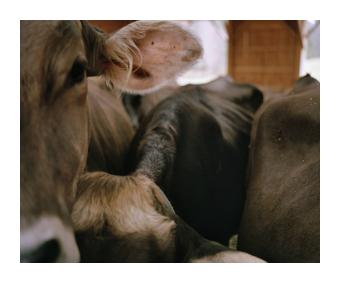
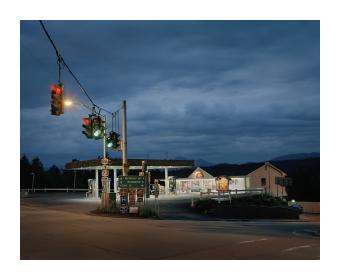

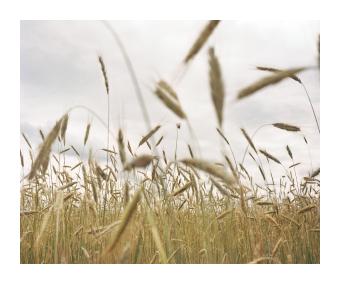
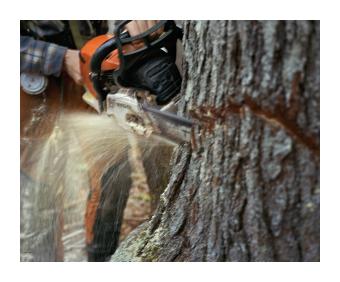
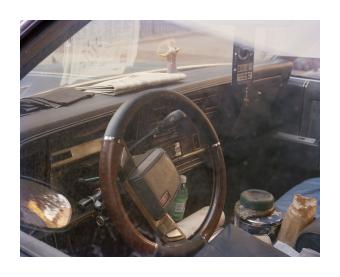
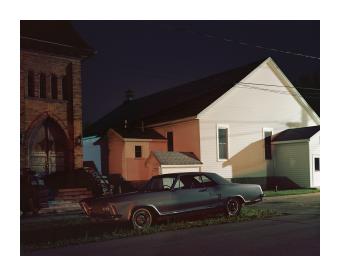
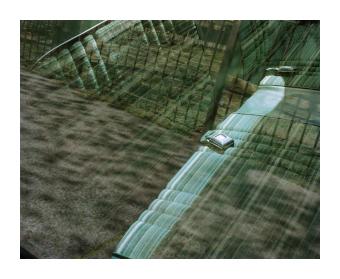
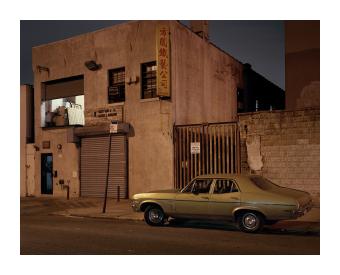
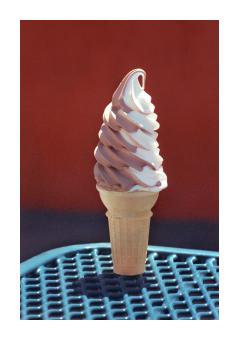
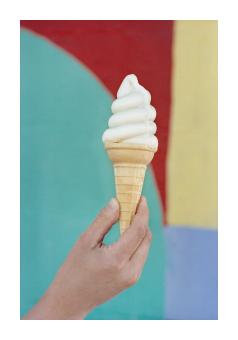
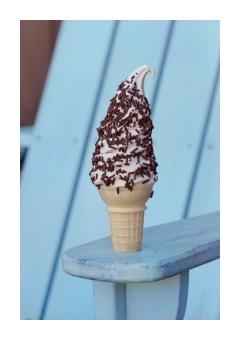

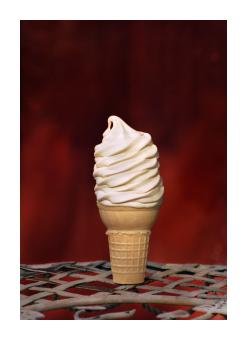
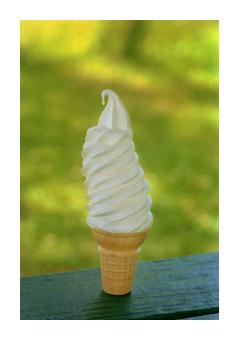
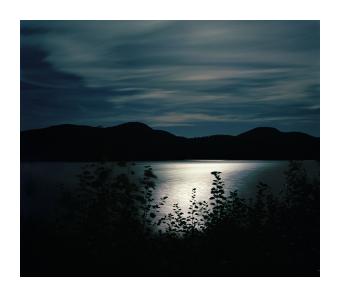
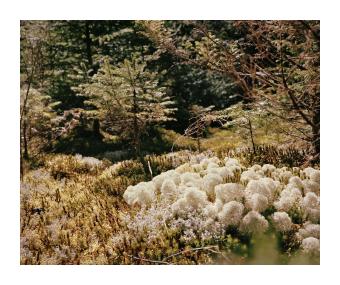
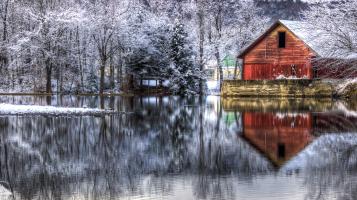
Connor Lahiff
Originally hailing from the Garden State, over 20 years ago Conor Lahiff transplanted to Vermont to attend college and for the love of snow and mountains, and never left. He now lives in Jericho in Mount Mansfield's shadow, with his Vermont native wife and two sons. Conor has always had a love for photography and art. His mother was an art teacher and has always been an artist, and his great uncle was a published photographer in New York City, specializing in flowers (more specifically roses). Though his education always focused on the sciences, his love for the arts has always been an undercurrent. Conor's full time "day job" is a meteorologist at the National Weather Service in Burlington, wherein this position, he spends most of his time at a computer focused on scientific models of projected weather patterns. To escape the deck he satisfies his love for nature through landscape photography, and experiencing the outdoors through snowboarding or hiking, riding his motorcycle through Vermont's mountain roads, and working on his wife's classic 1966 Mustang in the driveway. Everywhere he adventures within Vermont and beyond, he almost always has his camera within arm's reach. Once the photographs are taken from the camera, a little bit of editing is almost always applied. The intent behind most of his work is to add a touch of the surreal to the existing beauty that exists in the subject at hand. Sometimes this includes high-dynamic-range imaging (HDR) and tone mapping, other times it's simply adding his watermark. At this point, photography is only a hobby for him, but as with many photographers, he has a strong desire to share his work with others. Check out his portfolio at conortlahiffphotography.com.
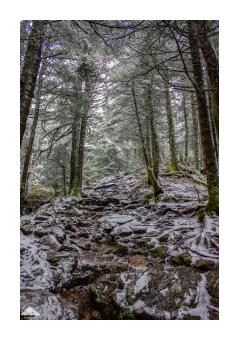
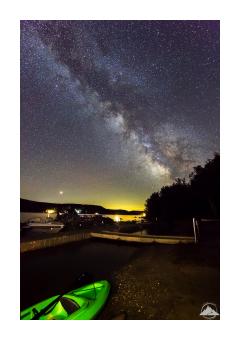
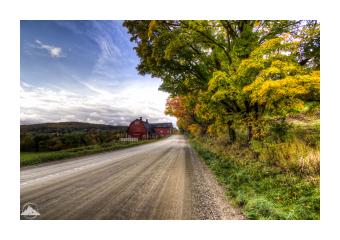
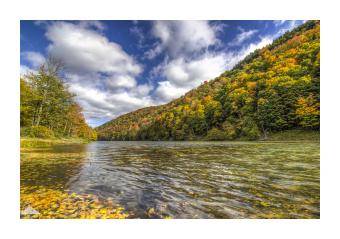
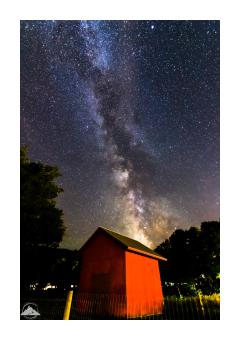
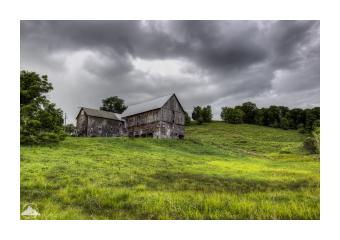
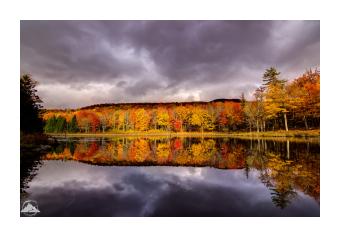
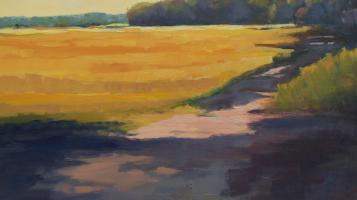
Susan Larkin
I have been making art since I was a small child, spending hours drawing, teaching myself to draw, and going on to earn my BFA at the Maine College of Art. For the previous 25 years, I had been working as a ceramist, most recently producing Raku Pottery and teaching ceramics and fine art. In 2001, I entered a Master’s in Teaching program at Bennington College, in Bennington, Vermont. I had continued to paint and draw over the years for personal enjoyment, but it was during this time that I became serious about painting. After graduating from Bennington, I left ceramics behind and began painting on my own, as often as possible, while teaching art to middle and high school students. In 2007, I left my job teaching middle school art, and moved to Isle La Motte, Vermont, smallest of the Champlain islands. I have been painting full time since 2007. I paint primarily in and around the Champlain Islands, where I live, with an occasional trip to the east, towards Mount Mansfield and the surrounding farmlands and rivers. My primary motivation is to record the effect of light on land and water. I think of my paintings as expressive impressionism. My paintings are very personal; through them I am trying to communicate what daily life is like living on an island, with the landscape illuminated by the reflection of the lake. I try to communicate what the day felt like to me, the air, the sounds, the light, colors, and conversations with my painting companions. I want to capture what exactly it was that made this view, this day, to shine for me. The magical something that made my mind say, “Look at that!” My attempt is to keep in the forefront that essence of the scene and communicate this through the painting to the audience. As I continue to work on the paintings in the studio, they become a narrative of my memories of that particular day in my life.
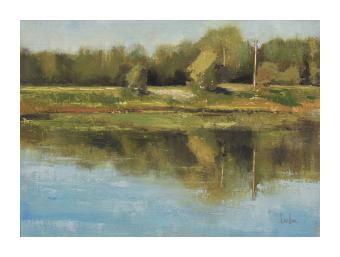
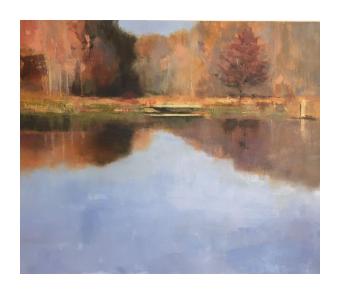
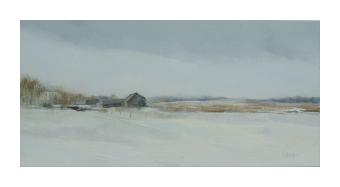
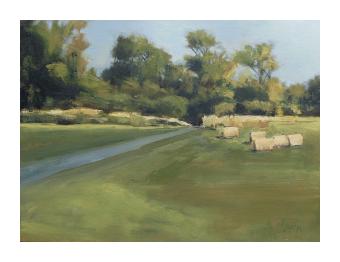
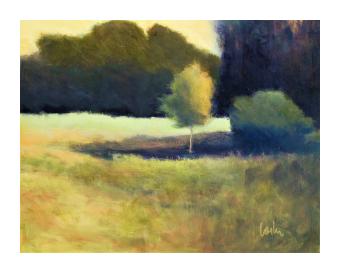
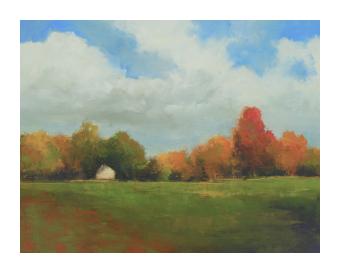
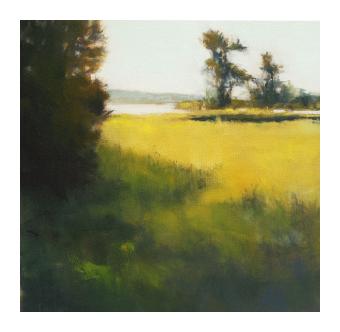
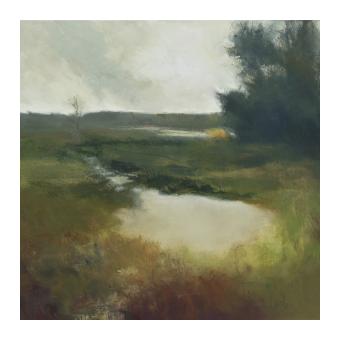
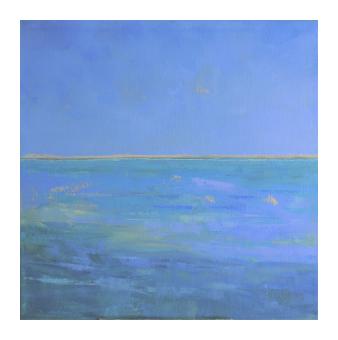
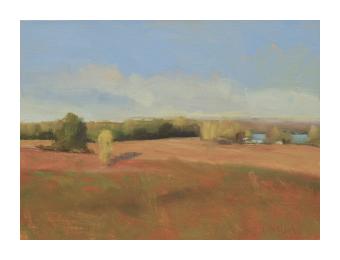
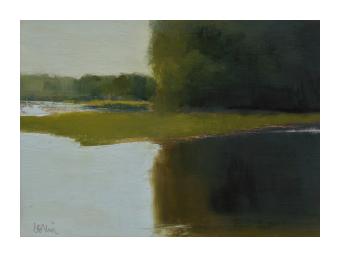
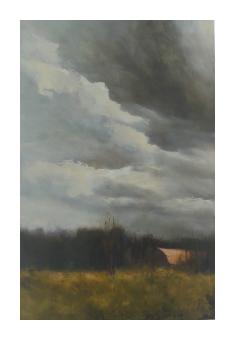
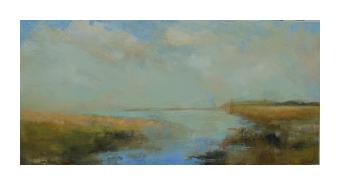
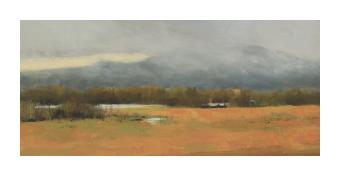
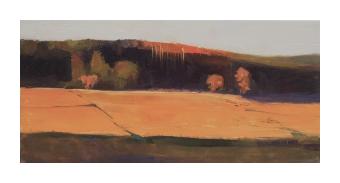
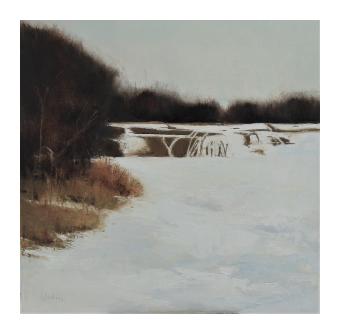
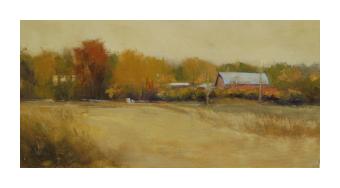
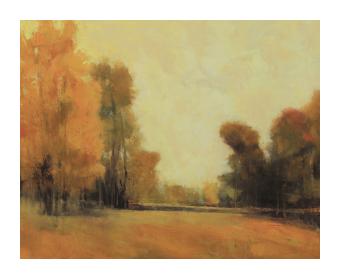
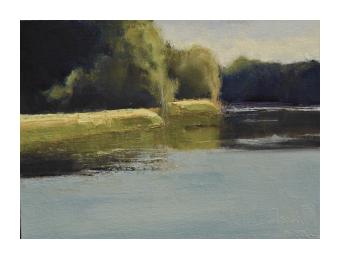
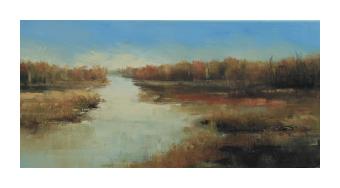
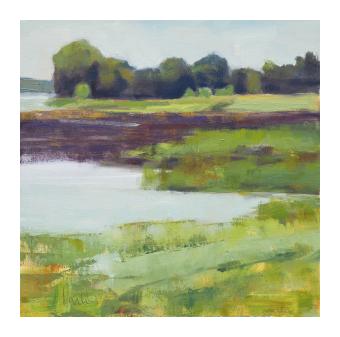
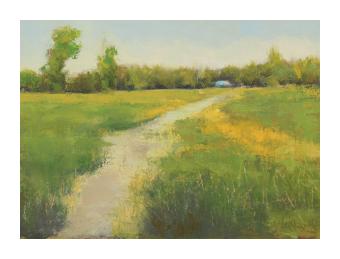
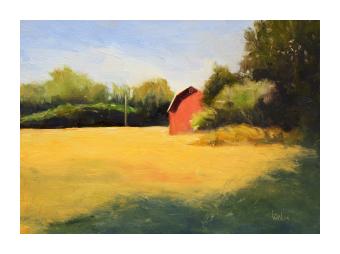
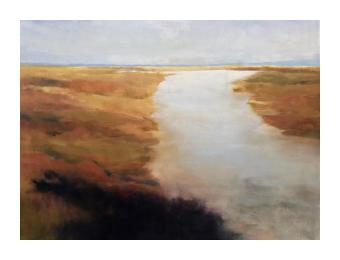
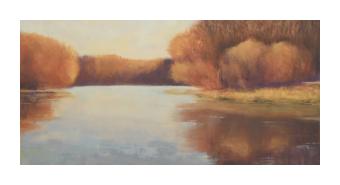
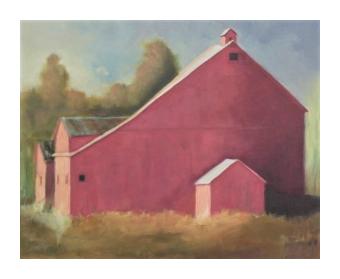
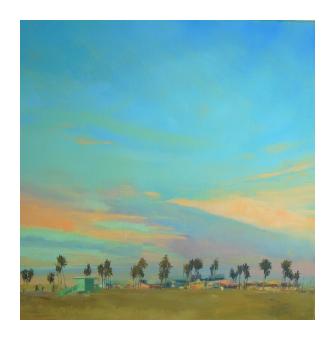
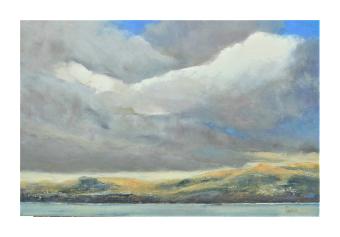
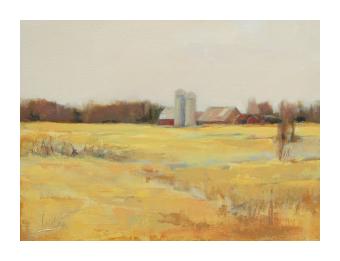

Matt Larson
Matt Larson’s work is inspired by the shifting mosaics of ecological patterns that contextualizes our passage through time and place. The artist strives to balance randomness and accident with order and reason in a manner that emulates natural processes, altering and obscuring what came before, and leaving glimpses of initial conditions visible through the overlaid patterns and juxtapositions of subsequent events. Through this he seeks to facilitate the emergence of abstractions of the natural world that embody the connections between ourselves and the landscape.











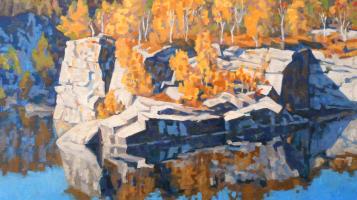
Phil Laughlin
Phil Laughlin was born in the Finger Lakes region of New York. Like most kids, he enjoyed drawing, but you wouldn't have guessed from his childhood that art would become his passion. At home, the idea of a career in the arts was never discussed. School offered one art course in 12 years of public education. The prevailing attitude was "Okay… We've checked the art box on the curriculum form, let's move on to the real business of life." His academic strengths were math and science so it seemed like engineering would be a good course of study at college. This seemingly straightforward plan collided with the social upheaval of the late 1960's. In the second year at SUNY Stony Brook he began to question his career path in the counterculture style of the times. Doing something in the creative arts seemed more meaningful than building rockets, so he switched majors to studio arts. When he graduated from Worcester Museum Art School, Abstract Impressionism was relinquishing the spotlight. Several other art movements emerged in rapid succession. The ones dealing with formal abstract geometric qualities were of most interest. He moved to New York City and continued to paint. The need for employment pushed him to study applied arts and work as a graphic designer. Creatively, commercial design work wasn't very fulfilling, but the opportunities presented by the city itself and the exposure Manhattan offered to new ideas and new standards of artistic professionalism were their own reward. World class galleries and museums were everywhere. He passionately consumed it all. On a fateful shopping trip to Pearl Paint’s, a popular Manhattan art store, he saw a large set of Senelier pastels showing hundreds of bright colors spread out on display. The appeal was irresistible, he bought them and has been a devoted pastel artist ever since. In 1986, Phil moved his family to the beautiful green mountain state of Vermont. At the same time desktop computers hit the scene. After a period of experimentation, he found himself gravitating towards illustration software, rendering product and technical subjects. Painting time had to share with work time while he raised his family. Children grew, moved out, and he gradually rebalanced his schedule to once again favor the landscape painting. Along the way he discovered the rich tradition of New England subjects that has inspired generations of artists. Casting aside the last bit of guilt over leaving the formal concerns of modern abstraction behind, he joined the mass of contemporary artists working with and extending that tradition. Currently, he paints daily at his rural home in Williston, Vermont. I take color and shape, raw materials with no intrinsic value and assemble them into something coherent that has the power and purpose to speak. If there ever were societies without art, we don’t know about them. It’s artists, through their art, that tell the future who we are.
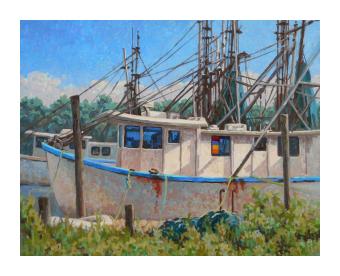
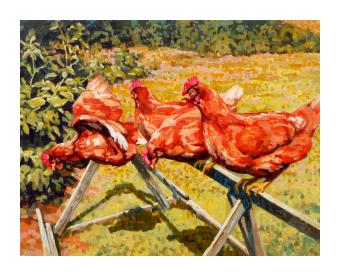
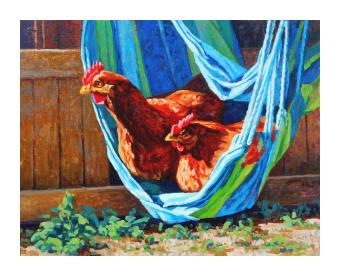
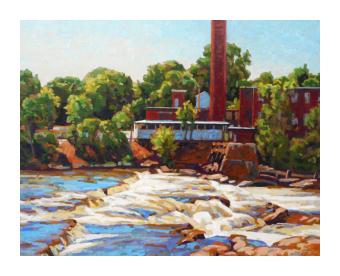
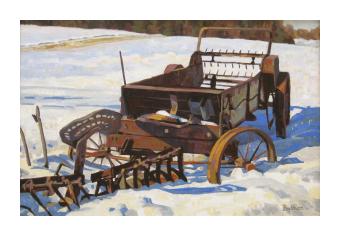
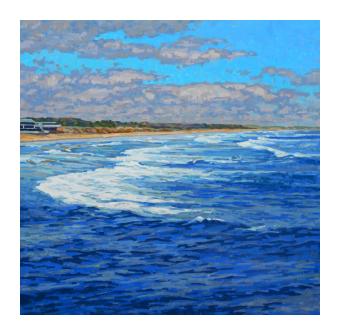
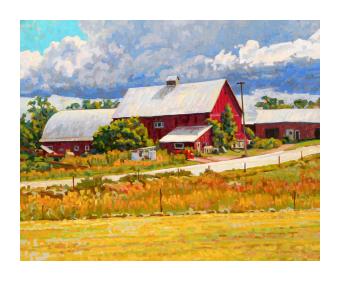
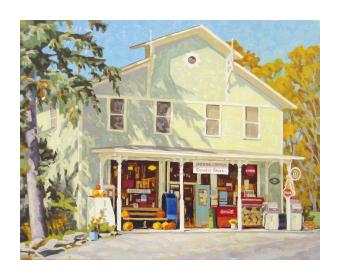
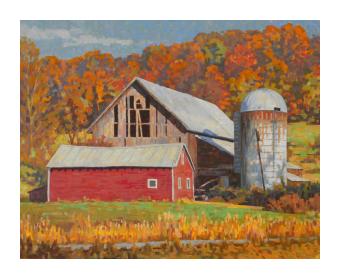
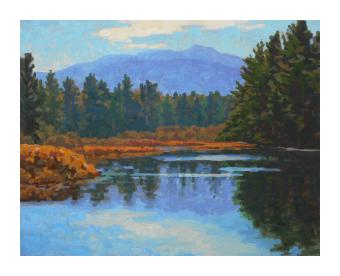
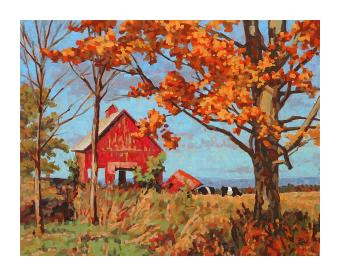
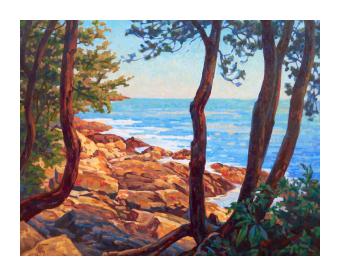
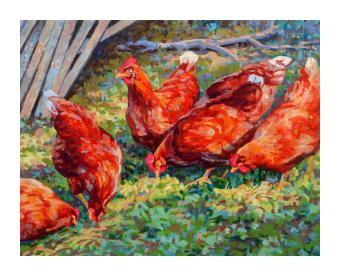
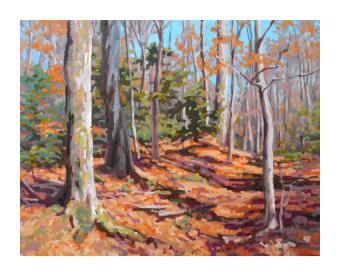
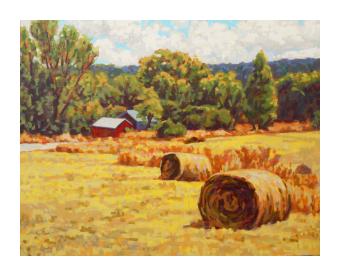
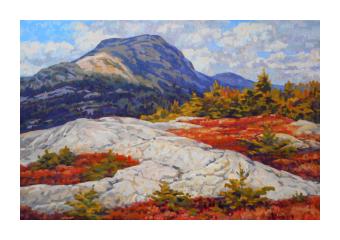
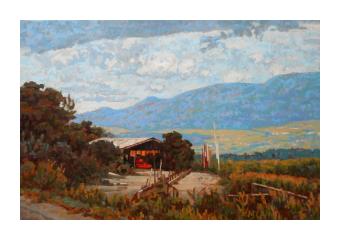
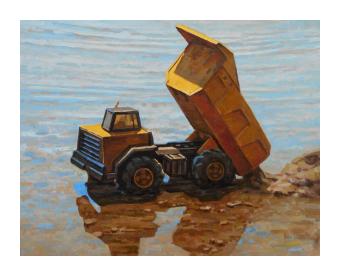
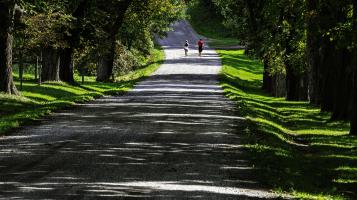
Robert Linder
In the past 40 years, I have been primarily involved in a journey as a psychiatrist and a forensic psychiatrist. That has been a mission to alleviate suffering, to assist people in finding and achieving their goals and to seek justice for the mentally ill. Even before that journey began, I had been engaged in a separate effort through photography to capture the spontaneity of a moment or to witness and document our constantly changing world. This has led to travels around North America, Europe, Southeast Asia. More recently, this desire has inspired visiting the polar regions. In the north: Svalbard, Iceland, Greenland, Nunavut, the Canadian Arctic and Alaska. In the south: Argentina, Antarctica, South Georgia and the Falklands. While being awed by the magnificence and pristine beauty of these environments. I have worked to establish photographic markers of these vulnerable and threatened ecosystems. As glaciers increasingly calve and recede due to environmental alterations, the everchanging landscapes captured here provide a bipolar warning of the challenges ahead. I have moved from the dark room in the 1970s to the digital dark room today. The aesthetic has been altered with this technological shift, but it has provided new tools to allow a more personalized imprint of the experience. The photographs shown here are a sample of available prints. Images are pigment printed on archival papers.
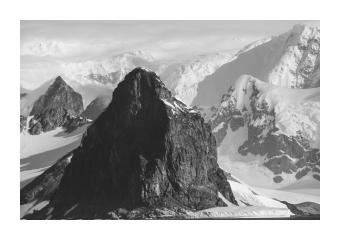
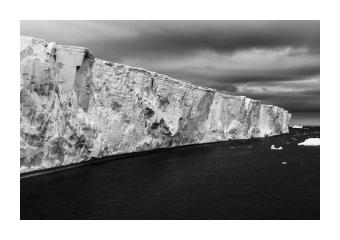
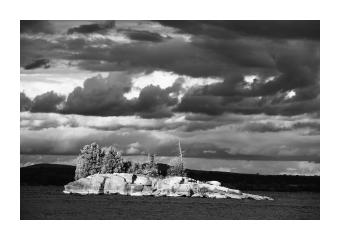
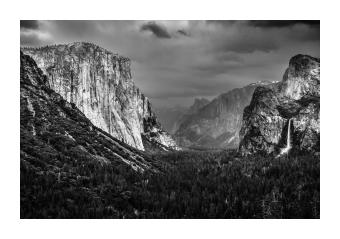
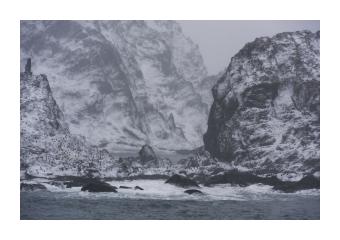
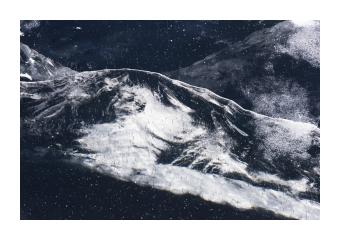
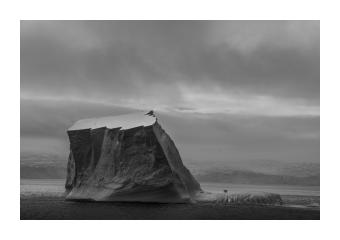
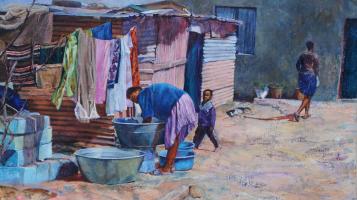
Sally Linder
Born in the United States, Sally Linder was educated in the US and Canada. A strong foundation in drawing enables her to move seamlessly between representation and abstraction, determined by her subject’s desire to be recognized or left to the imagination. Inspired by Earth’s beauty and the social, environmental and political issues that confront humankind, each of her artistic endeavors has sprung from a deep commitment to Earth and all living beings. This love of life with its contrast and balance of agonies and ecstasies prompts both activism and playfulness in her work. The paintings chronicle a quest for a better and more conscience driven world and her passion becomes their purpose and content. Painting in series provides the opportunity to be immersed in each subject’s distinct, emotive language conveyed through choice of color, form, and mark. Particularly in the more representational work, this immersion is linked to considerable research for each series involving historical, scientific and spiritual elements. It is from this deepening well that the layers of paint emerge on the canvas, paper or drafting film. The images that are inspired become symbols of a compassionate, participatory commitment to life. This vision provides us with the opportunity to turn around so that we may know who the others are and our connection to them. So evolves an intimate partnership between artist, subject, canvas, and viewer.
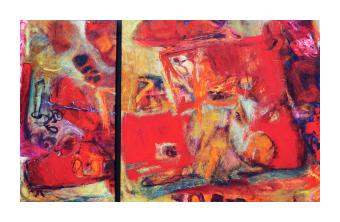
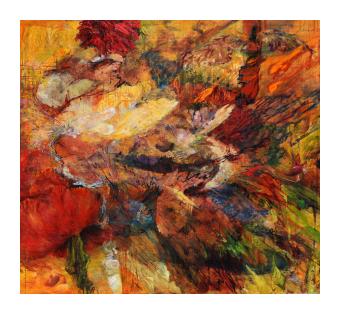
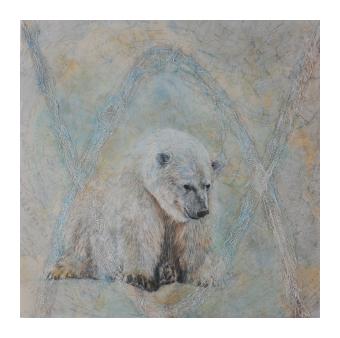
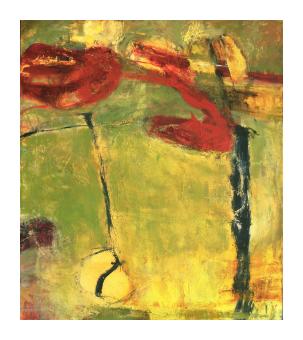
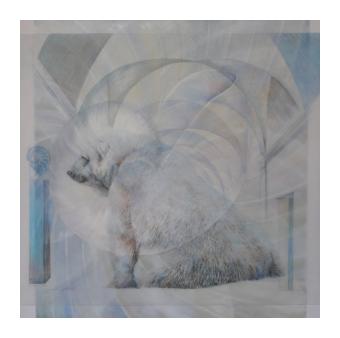
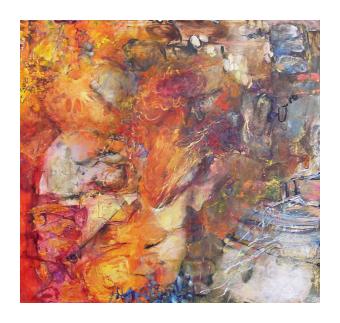
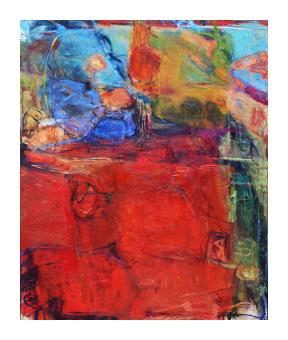
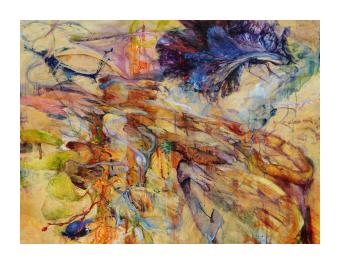
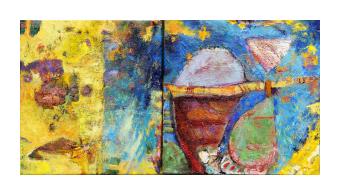
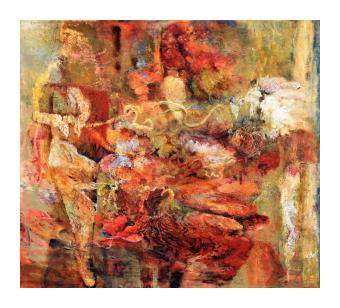
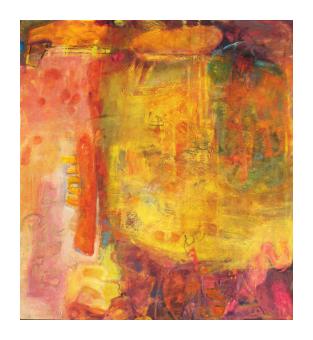
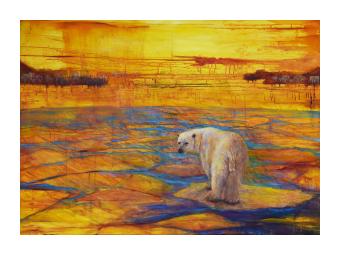
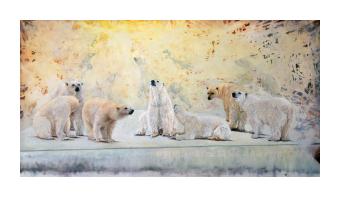
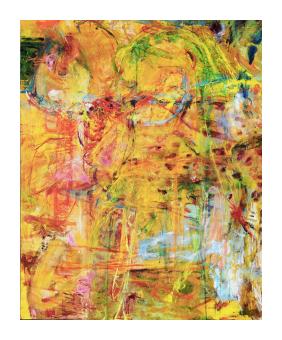
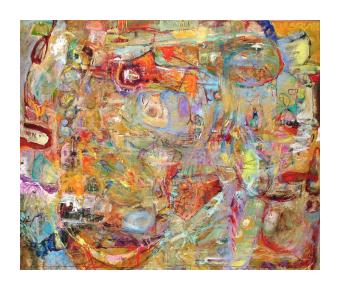
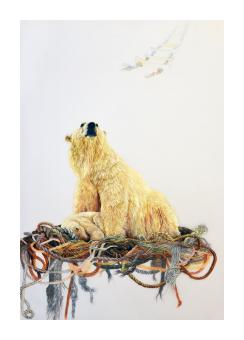
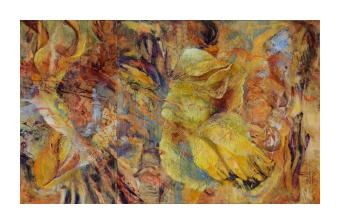
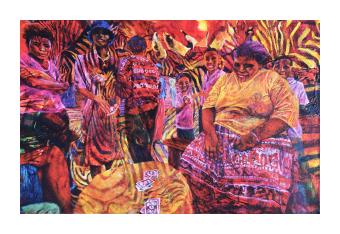
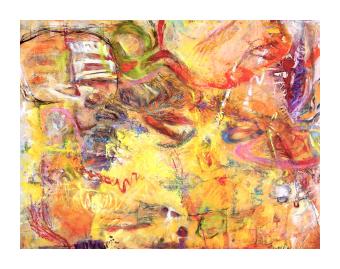
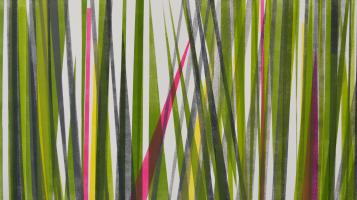
Katie Loesel
Katie Loesel grew up on Lake Erie in Erie, Pennsylvania. She has a Bachelor of Fine Arts in Printmaking from The Cleveland Institute of Art in Cleveland, Ohio and a Certificate in Museum Studies from Tufts University in Medford, Massachusetts. She is also a sailor, crafter, gardener, hiker, cyclist, and lover of local food and drink. After living in Thailand and Boston, Katie recently moved to Vermont to focus on her art. She tends to make prints, drawings, installations, and books, as well as creations on her sewing machine under the guise of Windy Seas. She recently completed a month long artist residency at Vermont Studio Center. Events occur constantly, simultaneously; inside and outside of our consciousness. They are unaffected by aspects of space and time. Whether or not these events occur in reality or in the context of the mind, memory is the only thing that secures their existence. Memory can be seen in gesture, mark, and pathways. My work is what records these events, anchors their memory, and allows them to grow. The cause and effect of each event are interconnected, nothing is totally alone. These connections build and pile up on one another, sometimes balancing, floating, or falling. Space and place, forces, passageways, landscape, layers, and marks depict the journey of connections and events over a period of time.
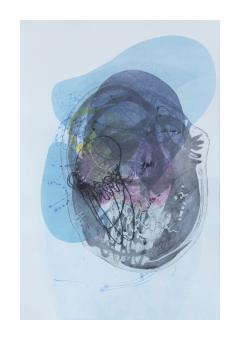
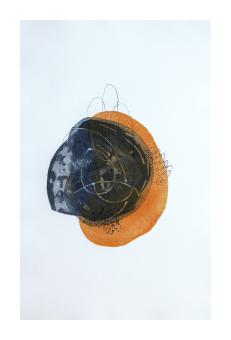
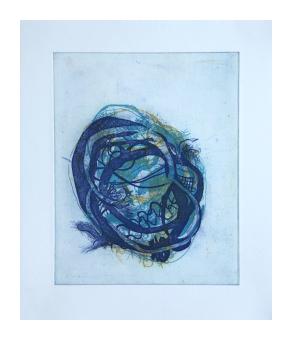
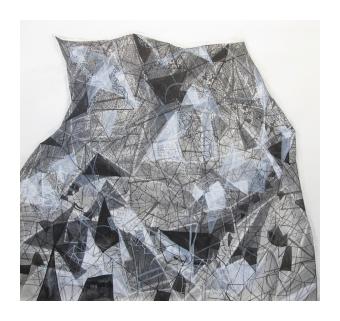
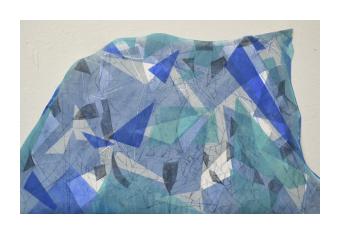
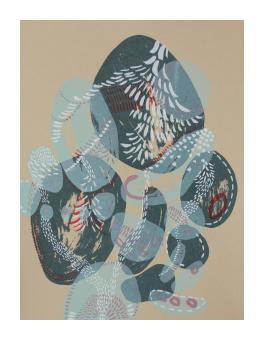
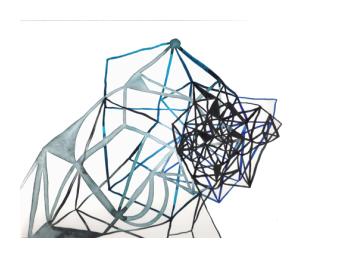
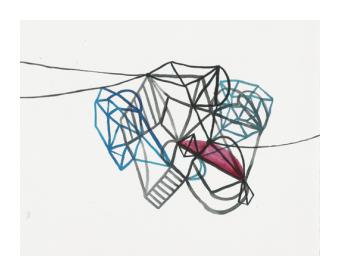
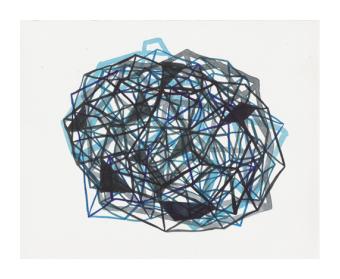
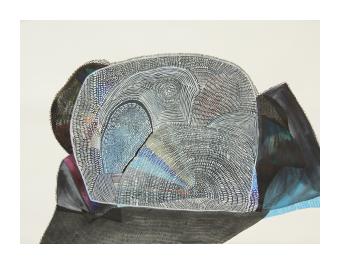
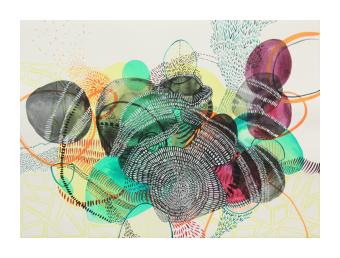
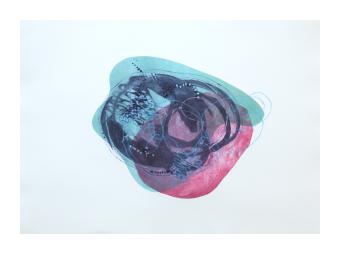
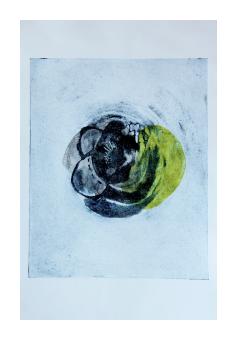
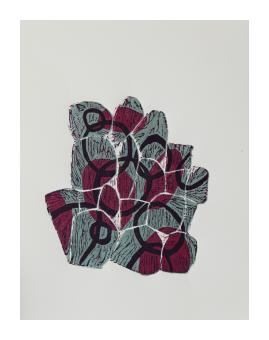
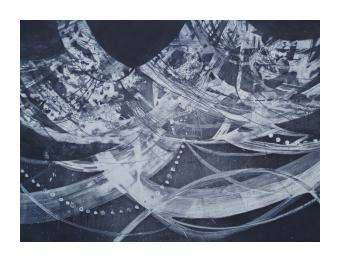
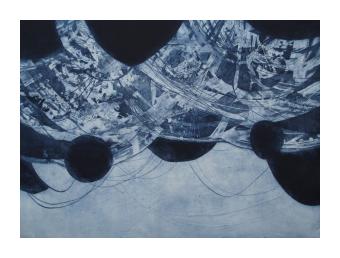
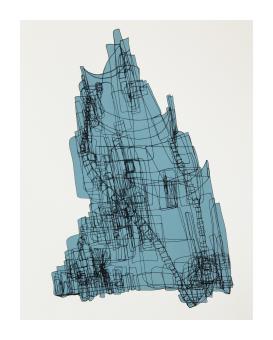
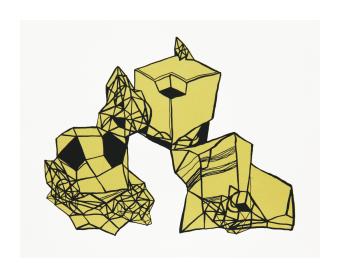
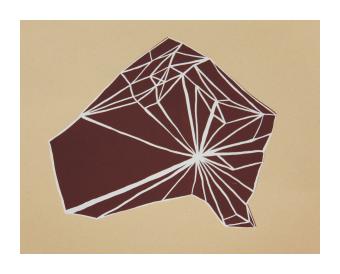
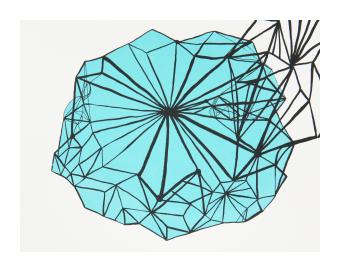
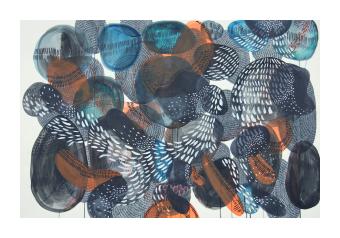

Brecca Loh
Brecca Loh is an expressive abstract artist specializing in colorful and emotionally rich expressionist paintings. Utilizing acrylic and mixed media, her paintings reflect the harmony of colors and the feelings that they provoke.
To her, colors have a language. They speak to one another. Her goal is to create a dance of colors that invoke a sense of intimacy and wonder for the viewer. By painting in a non-representational way she allows the viewer to bring their personal feelings and experiences to the work. The painting then becomes theirs not hers.









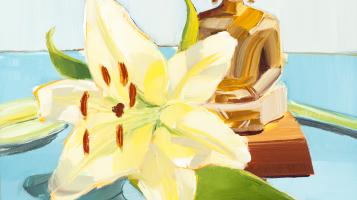
Kate Longmaid
Born outside of Philadelphia, Kate Longmaid has always been drawn to art. She obtained a Bachelor of Arts in “Psychology and Art: Theory and Practice” at the University of Michigan, graduating with high honors and high distinction. Relocating to Brooklyn and then Maine, she continued her studies at Parsons School of Design and the Portland School of Art. Longmaid went on to obtain a doctorate in clinical psychology from the University of Virginia. In 1994, she moved to Shelburne, Vermont and resumed painting, inspired by the beauty of the Vermont landscape. Longmaid’s paintings have been exhibited in galleries and museums on the East Coast and in Canada and are held in private collections throughout the United States. She was the recipient of the Shelburne Farms Vermont Studio Center Residency Award at her first juried show. Longmaid’s work was featured in the traveling exhibition “Women to Watch 2010: Contemporary Figurative Painting” curated by the Vermont Committee of the National Museum of Women in the Arts in Washington, D.C. This exhibition visited galleries throughout Vermont, including the West Branch Gallery, the Christine Price Gallery, the Amy Tarrant Gallery, and the McCarthy Arts Center. Longmaid was one of eight women selected for the 2010 exhibition “Body of Work: New Perspectives on Figure Painting” at the National Museum of Women in the Arts in Washington, D.C. This exhibition was part of the museum’s biennial exhibition series Women to Watch which features emerging artists from the states and countries in which the museum has outreach committees. Through a contemporary approach to portraiture, I explore the rich terrain of individual identity and what is revealed in the intimate moments of seeing and being seen. Working in the alla prima tradition, I paint largely from life, seeking to capture a sense of immediacy, freshness, and depth in my portraits. From the privileged position of witnessing the other, I seek to convey the unique presence of each subject as well as our shared humanity. Following the Women's March, I awoke with a vision of graffiti scrawled across a portrait. The vision translated into a body of reworked portraits featuring slogans from recent political events and quotations. The act of writing over the portraits has been empowering and liberating. The portraits move from the singular to the universal, merging image with voice. The work is ultimately about freedom of expression and the importance of speaking on behalf of those who cannot speak or are at risk of being silenced.
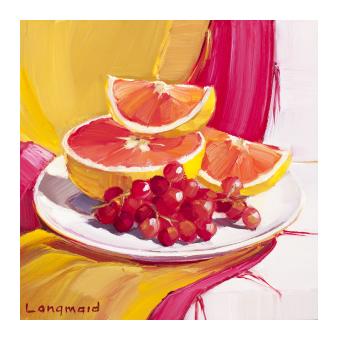
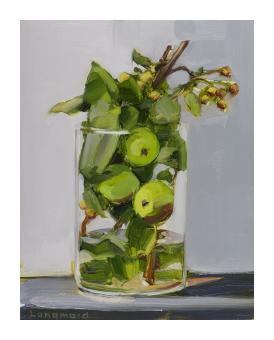
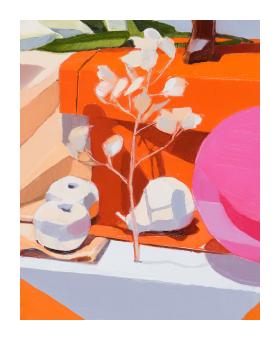
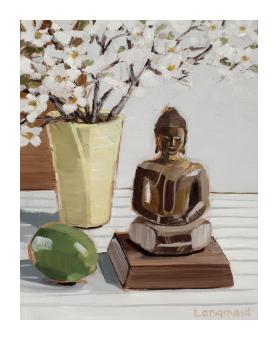
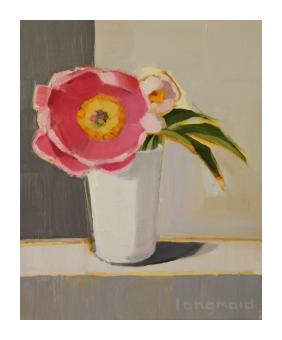
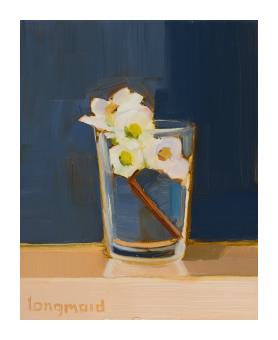
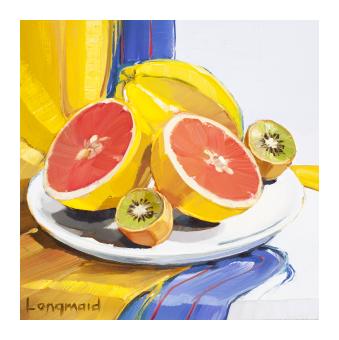
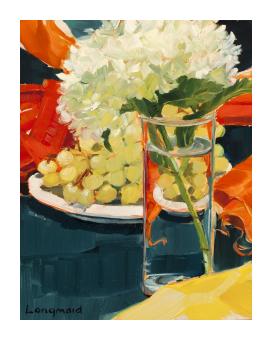
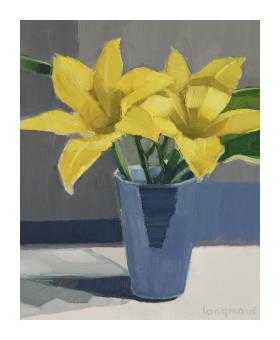
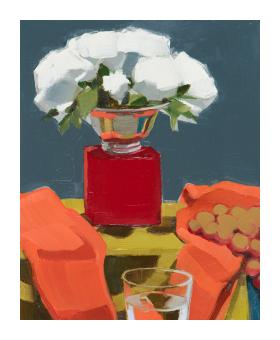
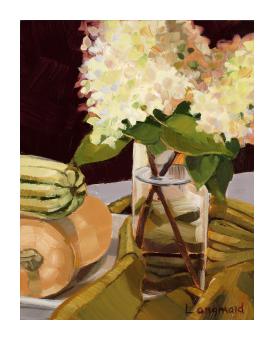
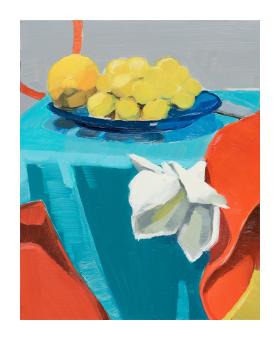
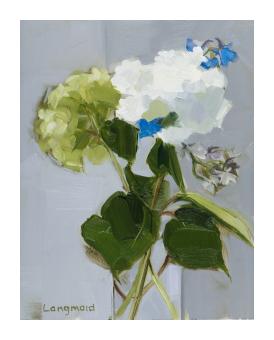
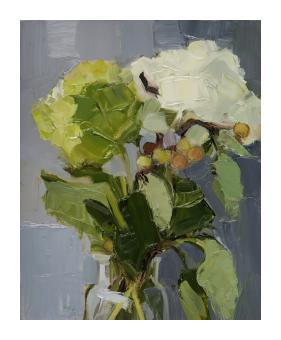

Sam Macy
Sam Macy’s love of the outdoors and the natural beauty of each species of tree inspired his vision to create wood shadow boxes representing Vermont’s iconic landmarks and landscapes.
His first-ever collection celebrates one of Vermont's most loved and iconic places: Shelburne Farms. As born-and-bred Vermonters who grew up enjoying the farm's acres of hiking trails and other notable features, the farm epitomizes "home" for Sam and his wife, and was a natural first choice for his premier collection.












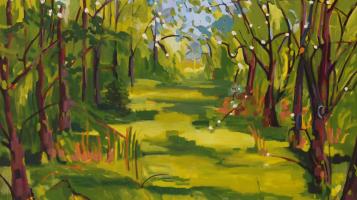
Jill Madden
Jill Madden grew up in coastal Rhode Island and currently lives in Weybridge, Vermont. She received a BA in East Asian Studies from Middlebury College, attended the New York Studio School, received a post-baccalaureate degree in Fine Art from Brandeis University and an MFA in painting from Boston University, where she held a Constantin Alajov Scholarship and studied with John Walker and John Moore. While a resident at the Vermont Studio School she studied with Lois Dodd, who remains an important influence. Jill has been a fellow at the Jentel Foundation, the Fairfield Porter Foundation, the Baer Art Center and the Pouch Cove Foundation. Madden paints primarily onsite, observing seasonal and climatic shifts.
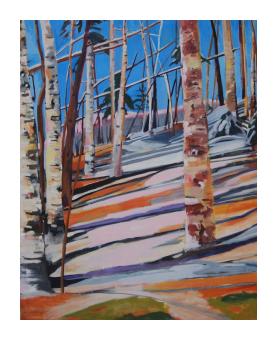
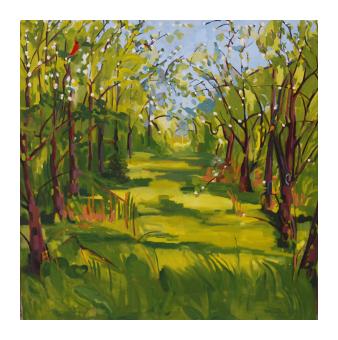
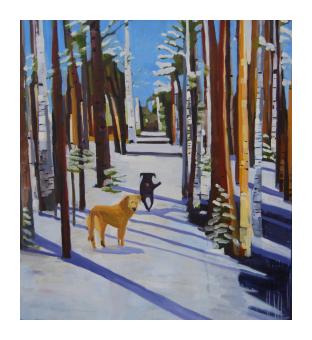
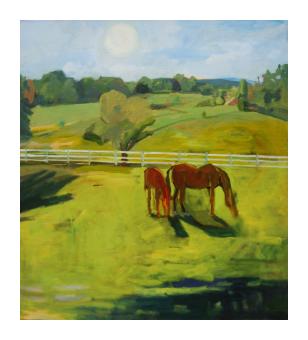
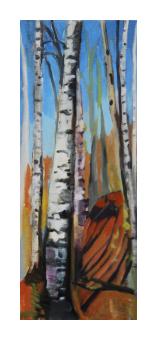
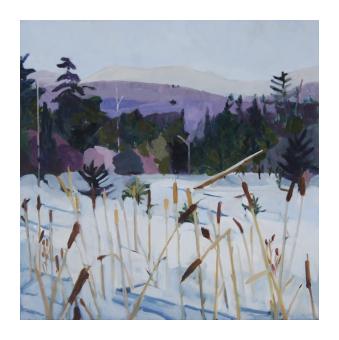
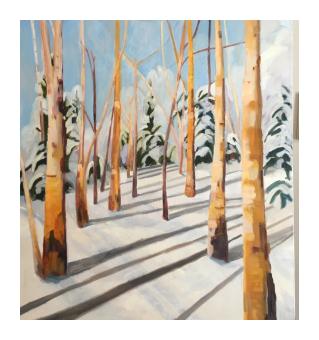
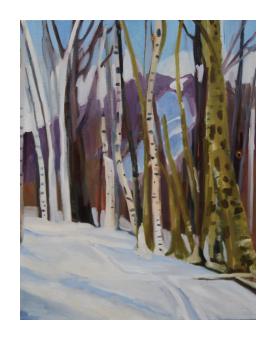
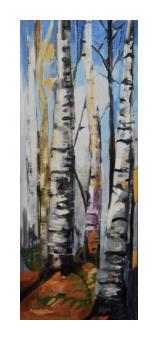
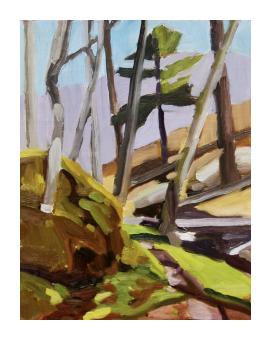
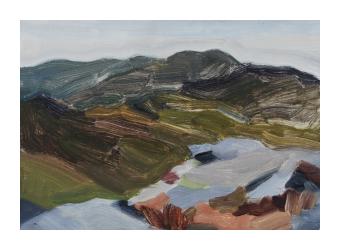
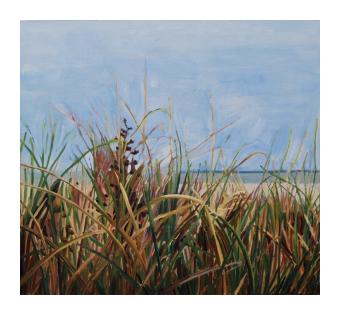
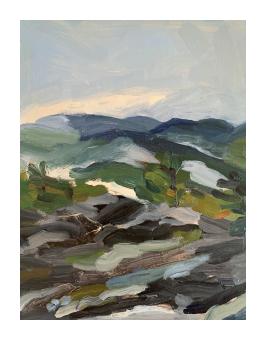
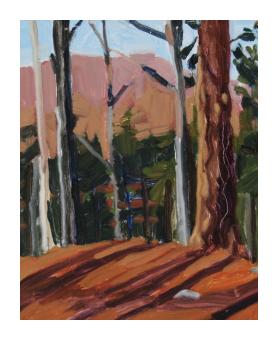
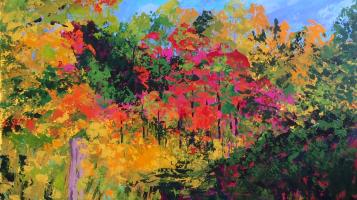
Lorraine Manley
Lorraine has been fascinated with art since she was a young girl in St. Albans, VT, when she devoted every spare moment to exploring forms of creative expression. The natural beauty of Lorraine’s native Vermont has been the greatest influence in her art. She especially enjoys painting the landscapes near her home in colors vivid, lush, and intense. With intuitive and energetic use of a palette knife and brush, Lorraine looks for those spontaneous “accidents” of oils and acrylics to capture nature’s seasons in textural painting both impressionistic and exciting.
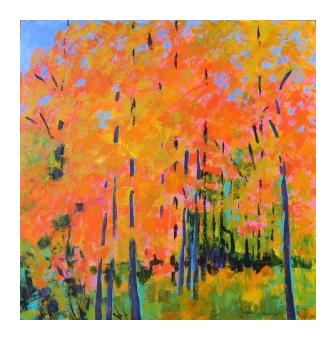
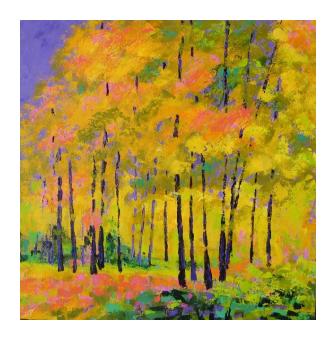
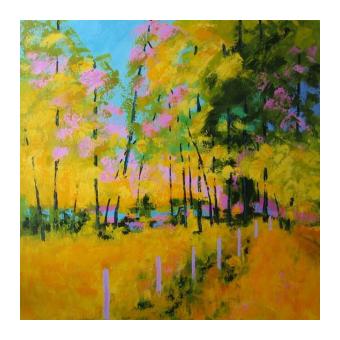
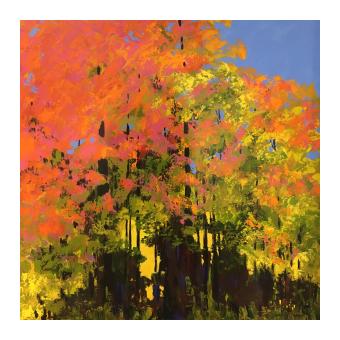
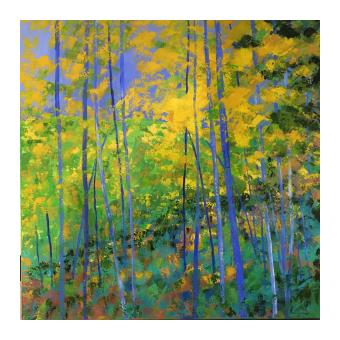
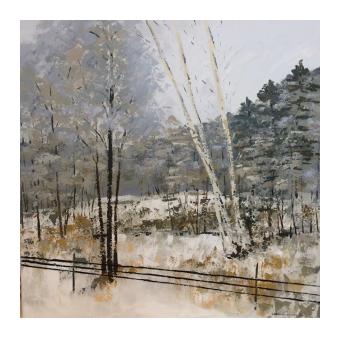
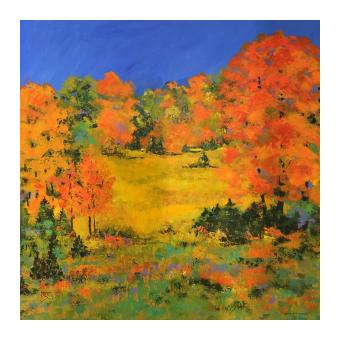
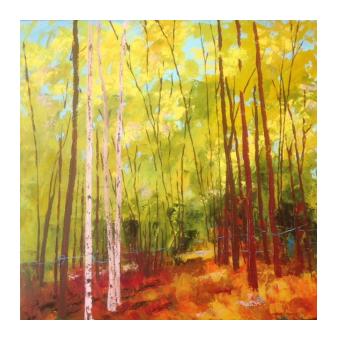
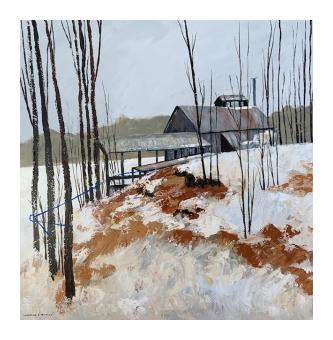
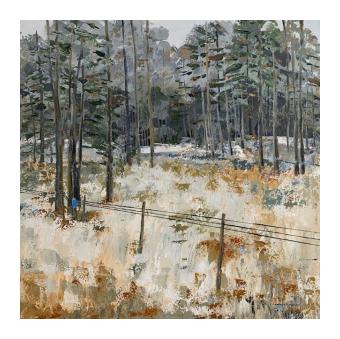
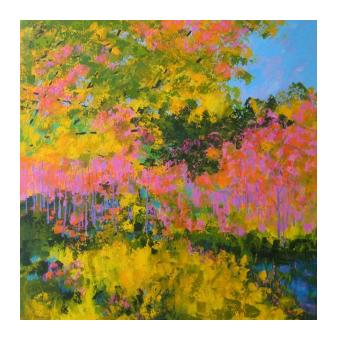
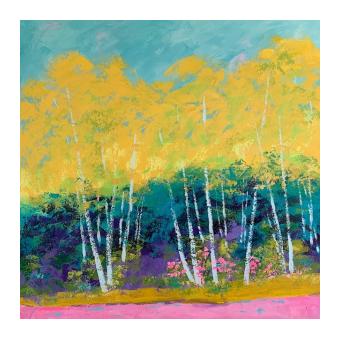
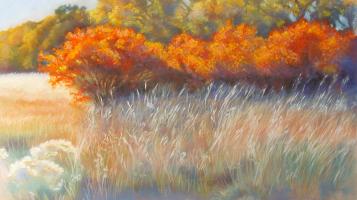
Angela Manno
I’ve been a practicing artist for forty years. Over the decades my expression has taken many forms, creating in pastel, oil and encaustic, egg tempera and gold leaf, batik on silk and cotton, mixed media and photography. I select my medium based on what will best represent the subject matter. One predominant theme in my work is nature, a radiant Nature from all perspectives: the Earth from orbit and outer space, from on the ground, stationary and while in motion. The objective is always to bring my viewer along to see the world as I see it, and the way it fascinates me. What I see is numinous Beauty and my wish is to convey my sense of reverence for the natural world to you.
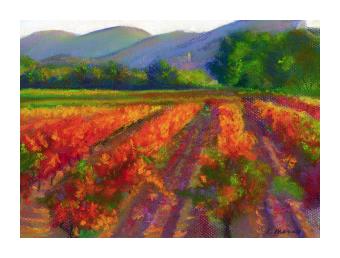
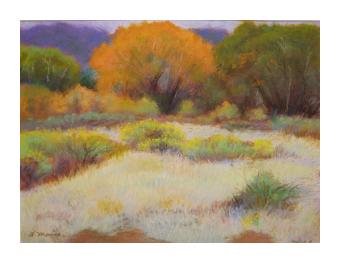
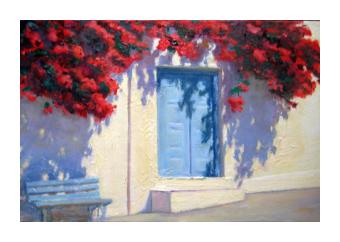
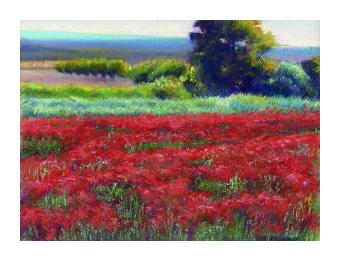
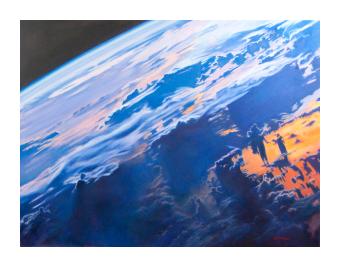
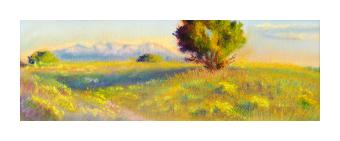
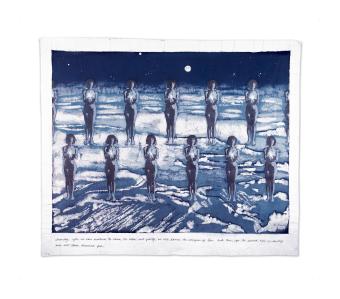
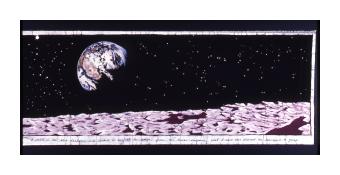
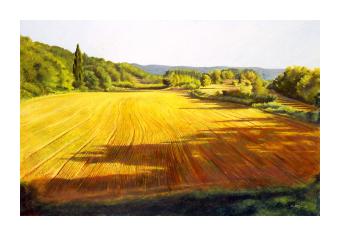
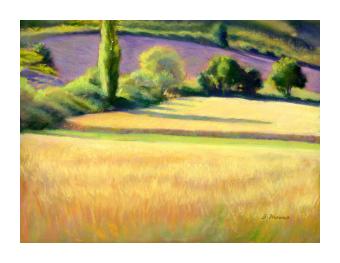
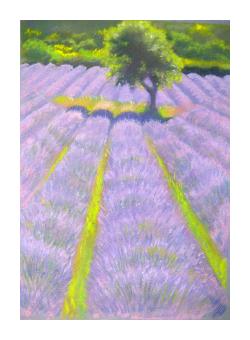
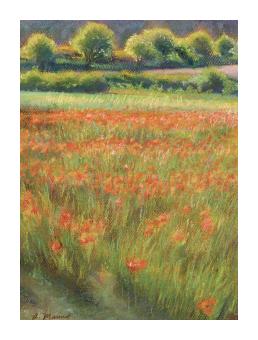
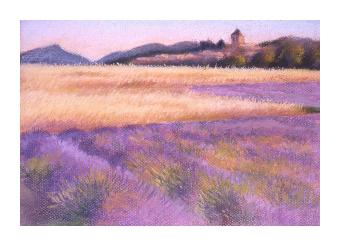
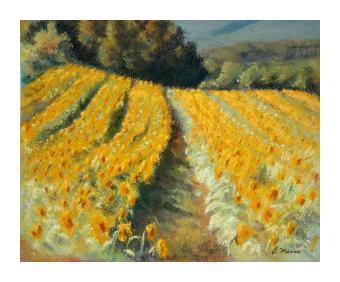
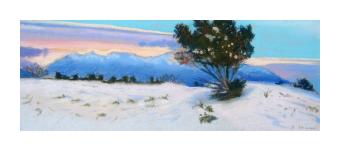
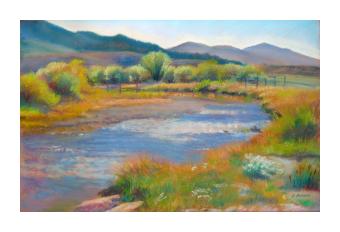
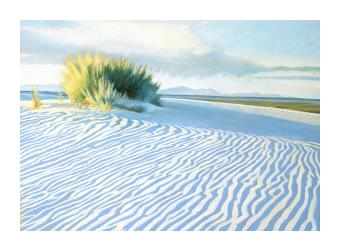
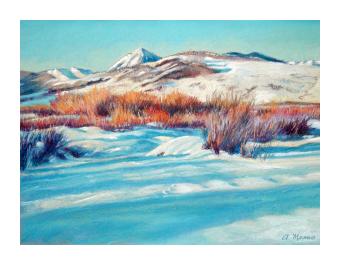
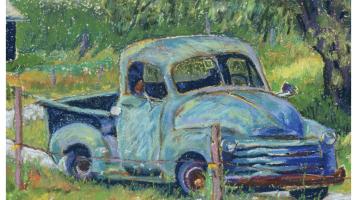
Belle McDougall
I am a student of color, light and value. I feel that pastel is the perfect medium to explore the landscapes of Vermont and Cape Cod where I spend a lot of time. Wherever I go... Skiing at Stowe, exploring Nova Scotia, the Coast of Maine, the NH White Mountains, the Champlain Islands of Vermont...I am always looking for beautiful scenes to paint and to share. I snap photos a lot! Hopefully my website brings you into my world of color and light and takes you to these places. I am an active member of the Vermont Pastel Society (100 members strong!) and I enjoy participating in local shows and juried exhibitions when possible. In 2017 I enjoyed attending the annual IAPS convention in Albuquerque, NM. I attended workshops and demonstrations throughout the week and the annual exhibition was inspiring.
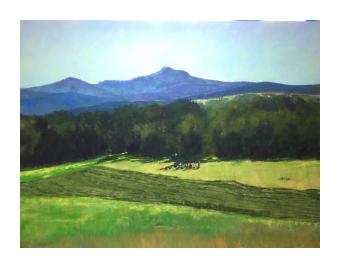
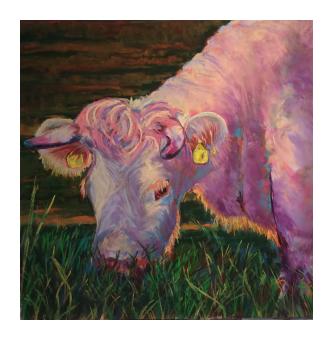
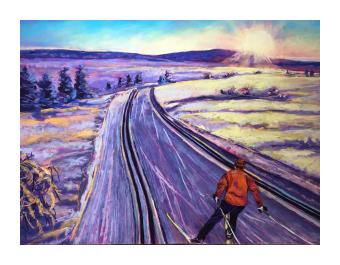
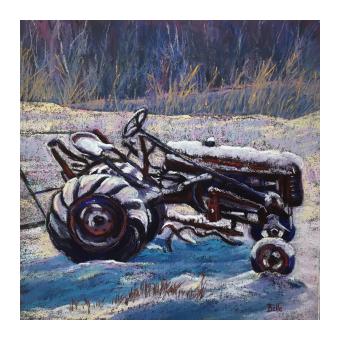
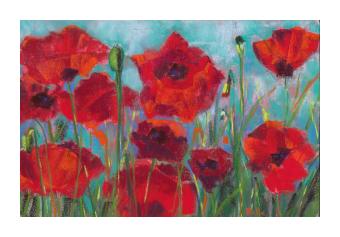
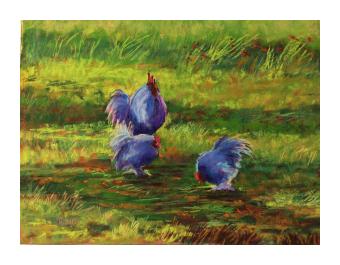
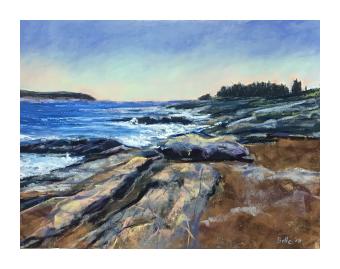
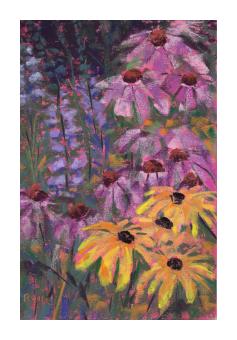
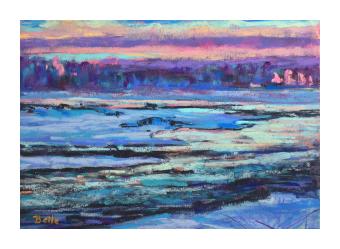
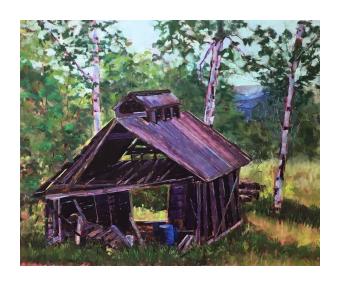
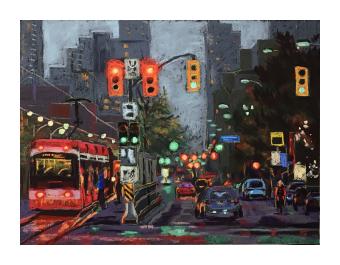
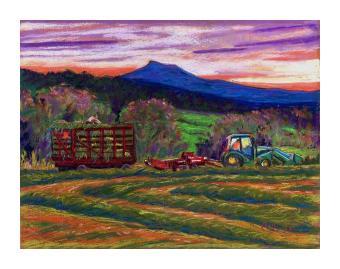
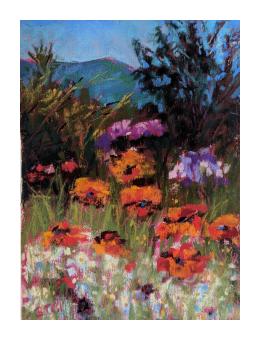
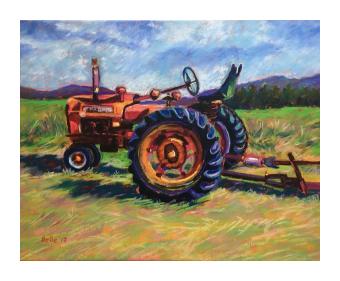
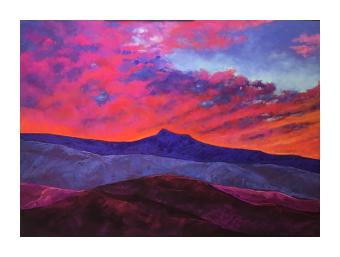
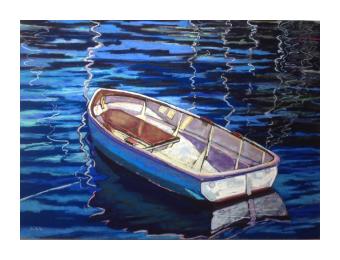
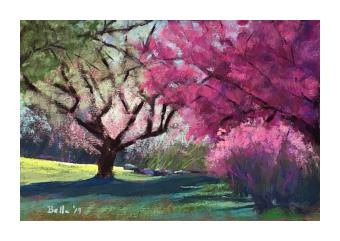
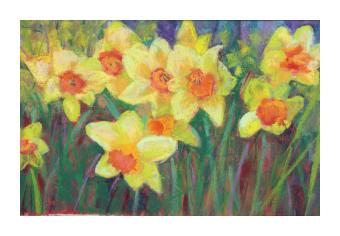
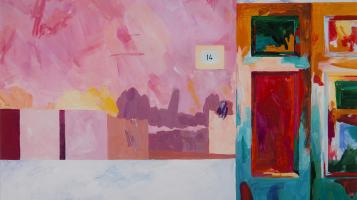
Lynda Reeves McIntyre
Lynda Reeves McIntyre was trained as a painter and a dancer at the University of Massachusetts, Hunter College and Yale University. She holds a Doctorate in Aesthetics and weaves her training in painting, dance, Buddhist study and aesthetics into her art making and teaching. McIntyre had her first major show in New York at 21. She has since received numerous awards including those from the NEA, the MacDowell Foundation, the JFK Center, the ICCE, the VCCA, the Ossabaw Foundation and the Getty Foundation. She has been awarded art fellowships abroad to Australia, the former Soviet Union, China, Vietnam, Bhutan, Cuba and Italy where she teaches in the summers. Her work is shown throughout the U.S, Europe and the Pacific Rim. Her works are held in corporate and private collections in the U.S, Europe and Australia. McIntyre is a Studio Art Professor and formerly the Chairman of the University of Vermont Department of Art and Art History. McIntyre is a painter whose acrylic and watercolor works find their sources in personal, visceral and visual experiences. McIntyre often works outside, backpacking to sites in all weather conditions, taking notes from ocean, desert, and mountain and built environments. Many of her works find inspiration in the sensuous liquidity of the sea, surfacing toward the sun, toward "the light," arising beneath a wash of azure. Some paintings are poured onto canvas or cotton, worked with one's hands as if swimming or dancing in the sea. Other works examine the changing dynamic tension between airs, sea, land and sky whether it be raw craggy cliffs clawing at a viciously blue desert sky or an ominous yet gentle glow at the water's surface before a storm at sea. Others invite the viewer into a pentimento of man and nature, a ritualistically cultivated hillside or multi-layered architecture. McIntyre focuses on visceral transitions but her clues may be as subtle as a cast of light crossing a rock face or the painted history of an ancient wall.
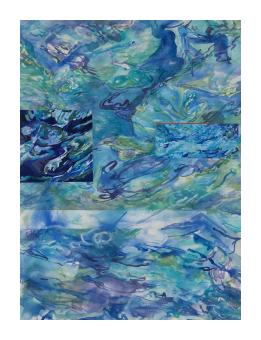
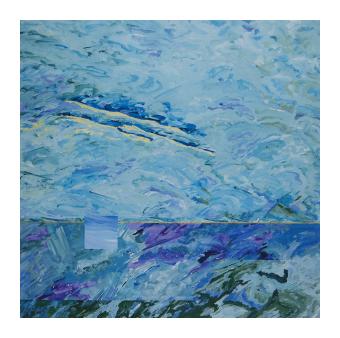
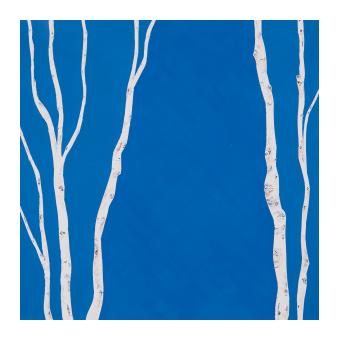
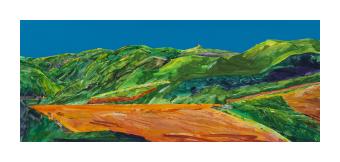
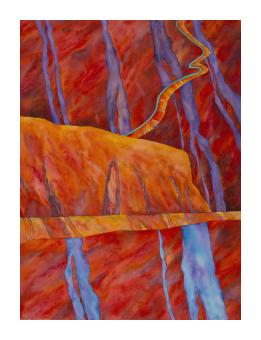
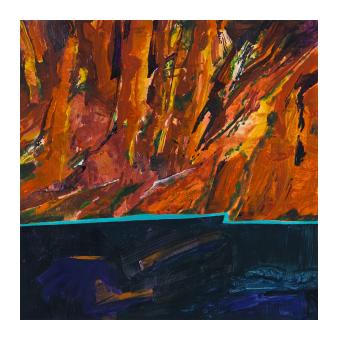
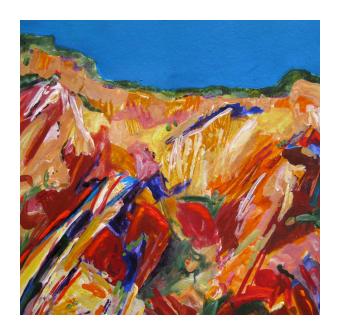
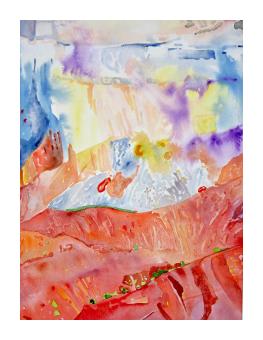
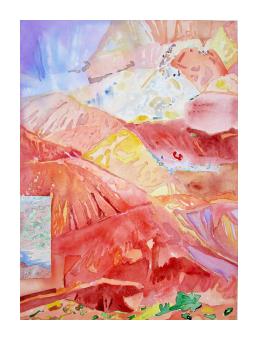
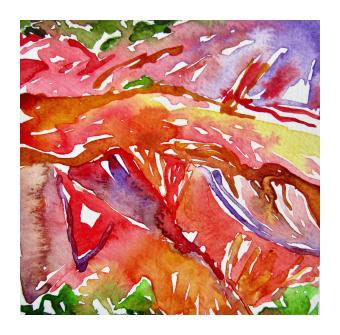
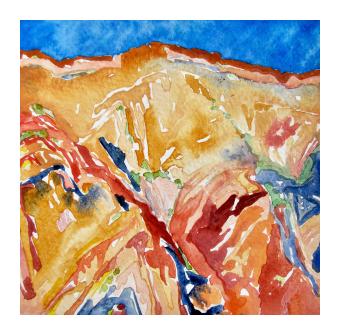
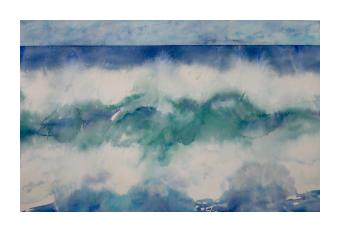
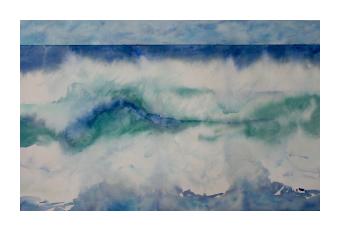
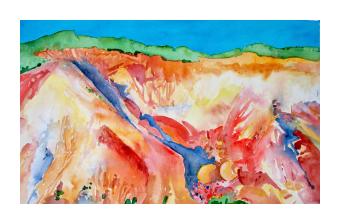
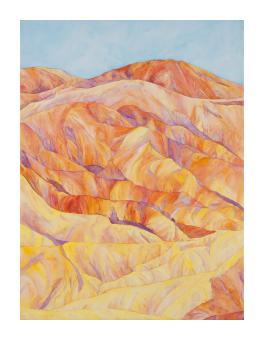
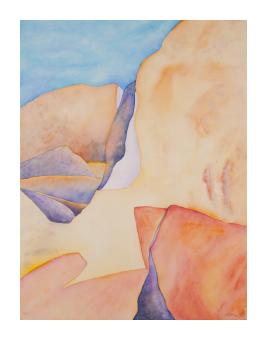
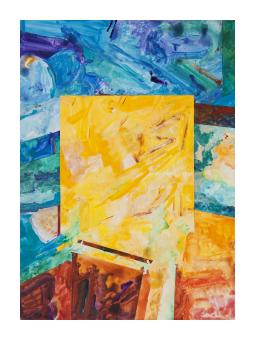
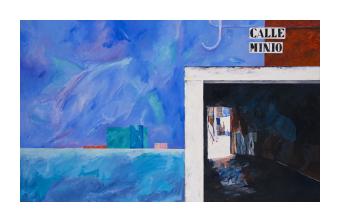
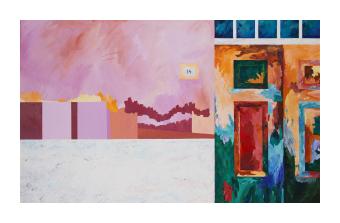
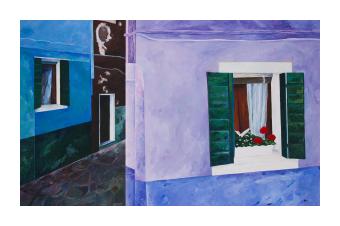
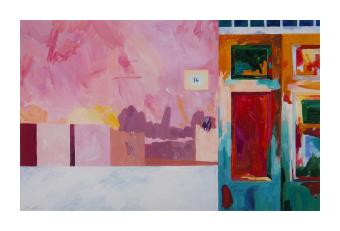
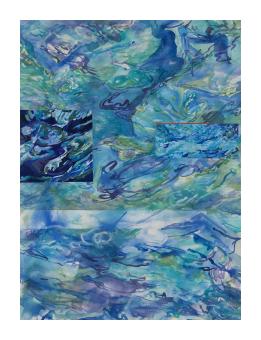
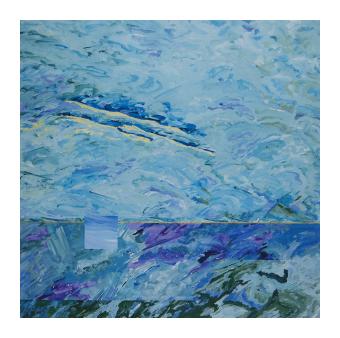
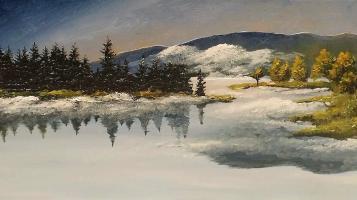
Kari Meyer
As an artist I see art as a form of communication that has a power beyond that of words. Through imagery I attempt to portray ideas that words cannot, like the archetypal beauty that connects all things. I attempt to create a positive experience for the viewer, while also hoping to make a positive commentary on the world. My imagery demonstrates an abstraction of nature. My inspiration comes from nature and the Japanese ideals of wabi-sabi, a prominent philosophy of Japanese aesthetics. For me wabi-sabi changes the worldview of western civilization. Things we normally view as negative become beautiful. Loneliness, old age, and death become beautiful because they are inevitable and represent the constant flux of the universe. I attempt to address this idea of the movement of eternity, of everything either coming from or returning to nothingness. My work urges the viewer to contemplate the relationship between oneself, nature, and the universe.
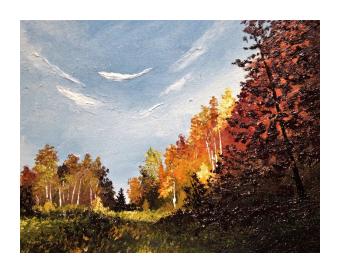
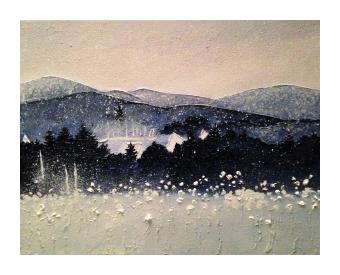
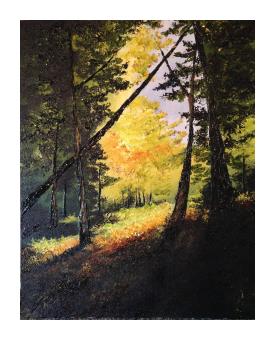
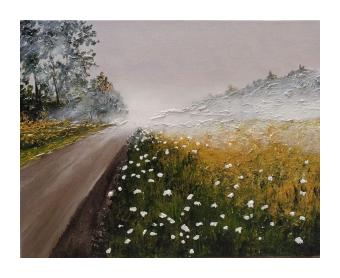
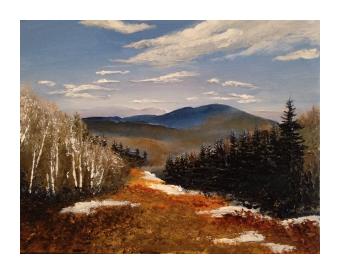
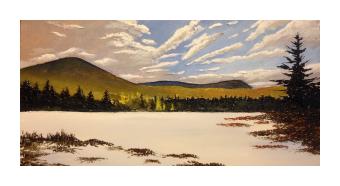
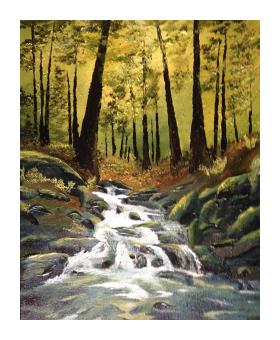
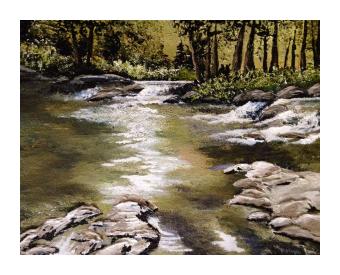
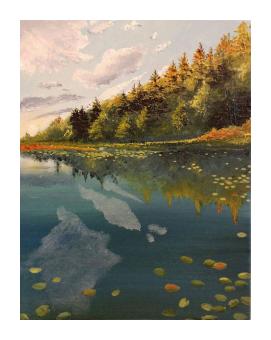
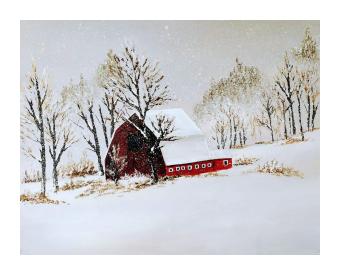
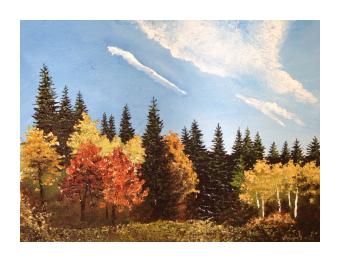
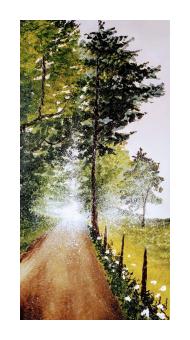
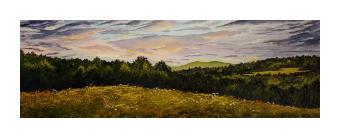
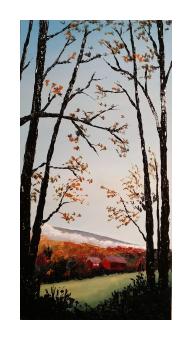
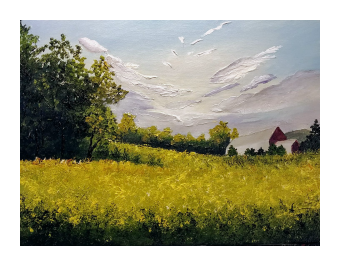
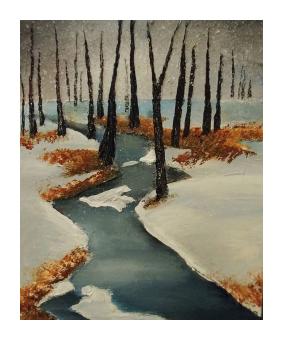
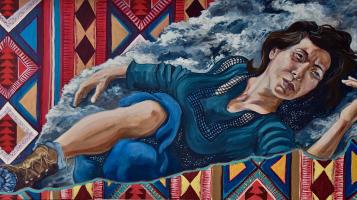
Dierdra Michelle
In 2010 at the age of 44, she found the courage to finally embrace life as an artist. Though holding no academic training in art, she quit all her jobs to enter the studio day after day to become a painter. The attendance of two portrait painting classes a year of at Burlington City Arts with Gail Salzman coupled with the sheer tenacity of approaching the canvas daily, has aided Dierdra in building her skills in portraiture and figurative painting. Dierdra now identifies herself as an artist and has great faith in the life her art is mapping out for her
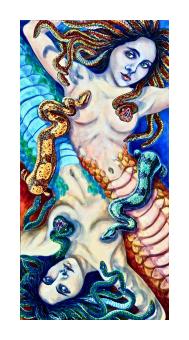
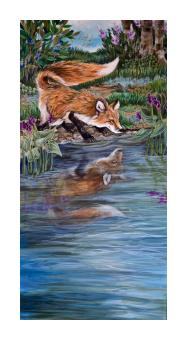
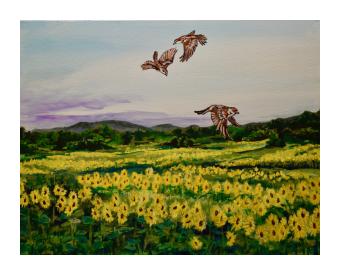
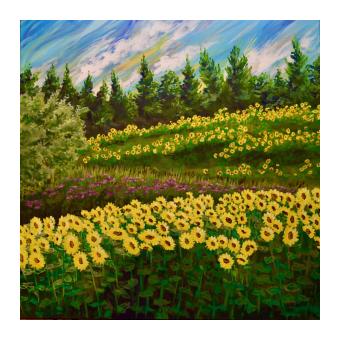
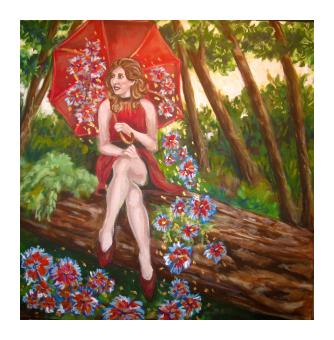
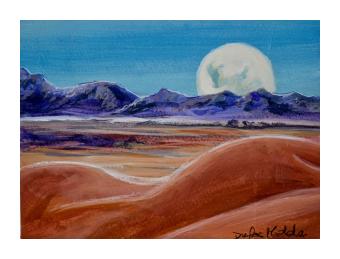
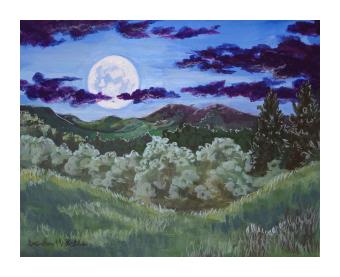
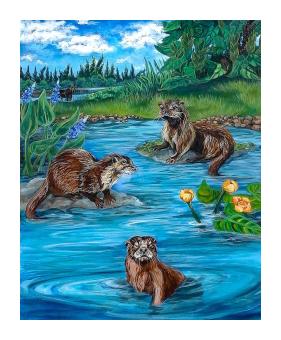
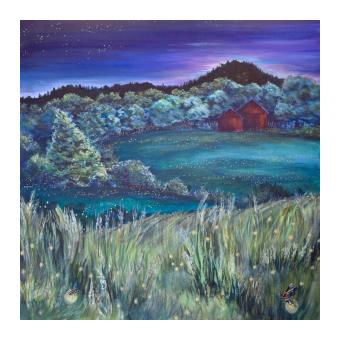
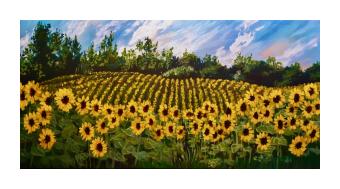
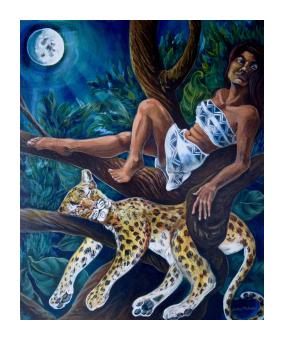
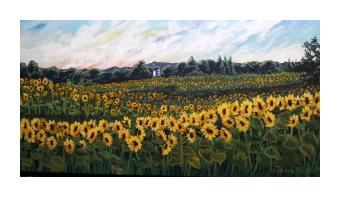
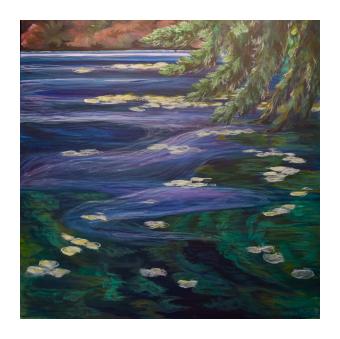
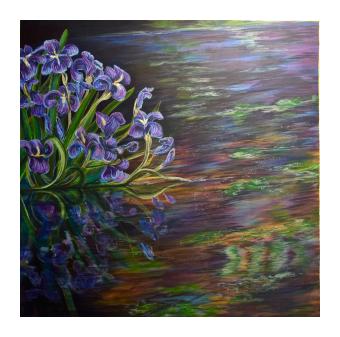
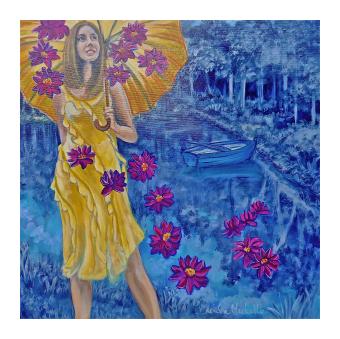
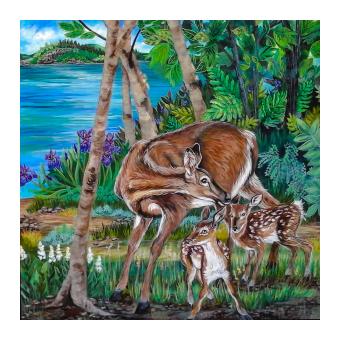
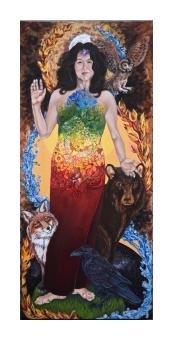
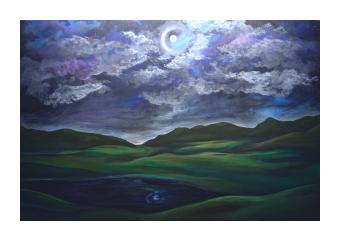
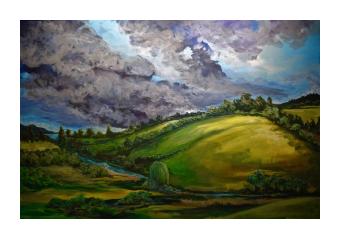
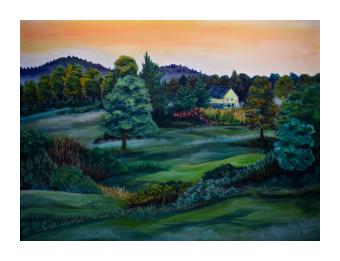
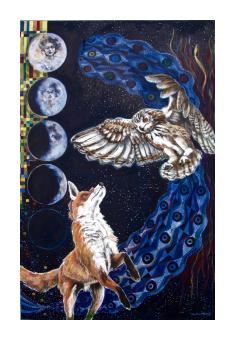
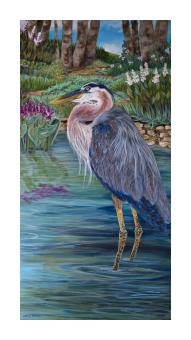
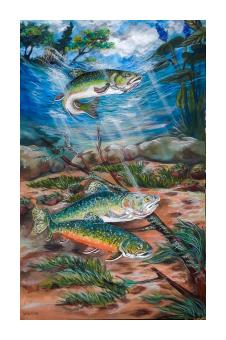
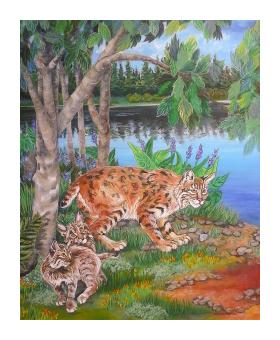
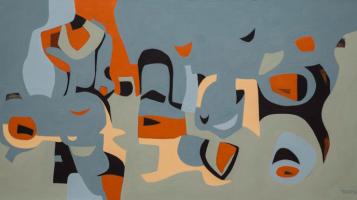
Mareva Millarc
Mareva started her journey of artistic expression viewing the world through her own lens at a very young age. Specializing in abstract paintings, Millarc has been painting professionally since 2007. Born in Hollywood, California, daughter of artist William Millarc, she draws inspiration from the works of Richard Diebenkorn, Arshile Gorky, and her father, viewing art as a sense of unity between mind and spirit, merging the imaginable with the unimaginable. Painting with oil, acrylic, ink, or mixed media, her avid use of bold line-work, organic shapes, and vibrant colors highlight the multiple layer designs often found in her work. Moved by the creation of the unknown, Millarc loves abstract art because it allows her to convey what motivates her; from mood, to music, to the imagery and sounds that surround her.
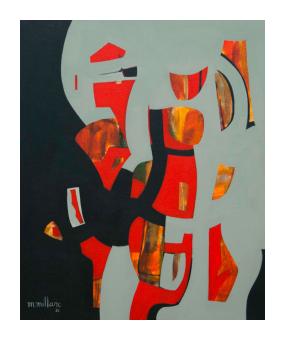
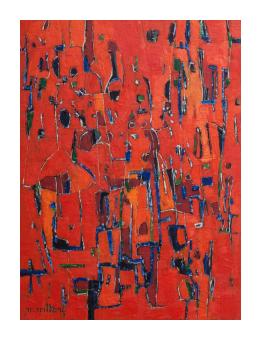
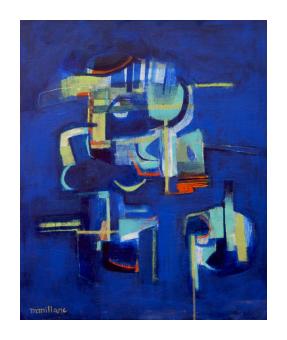
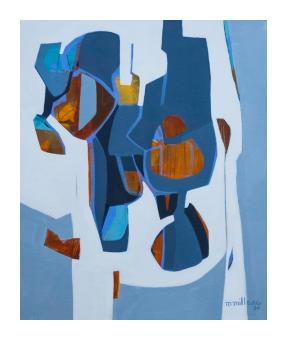
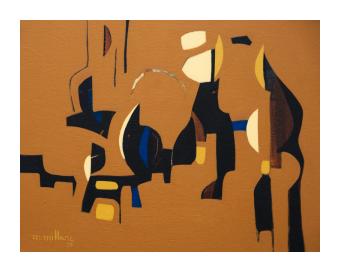
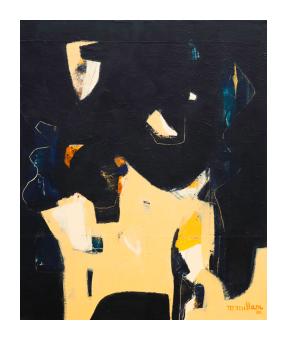
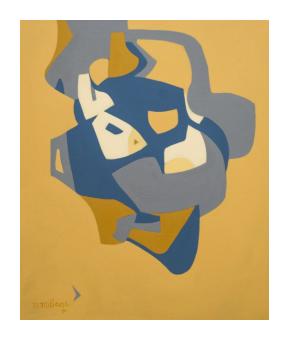
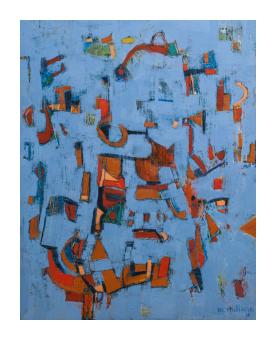
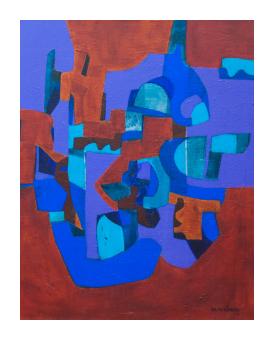
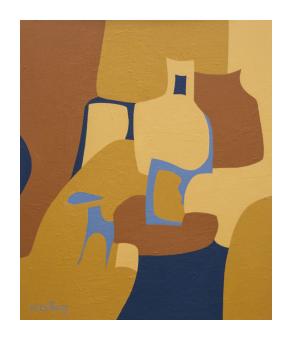
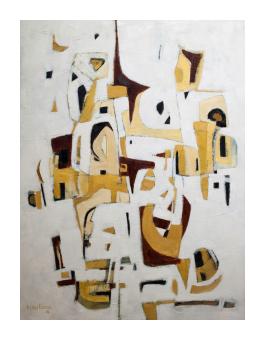
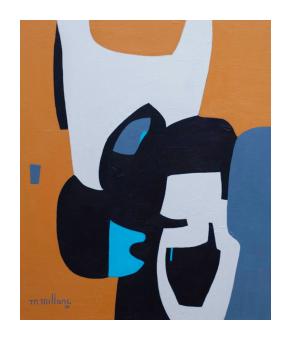
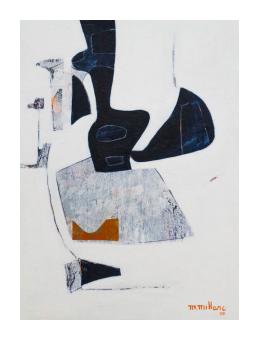
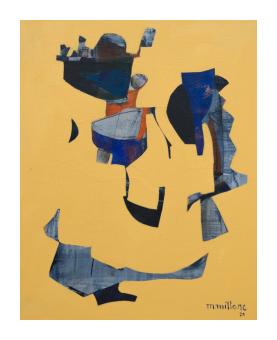
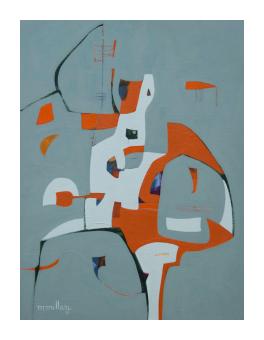
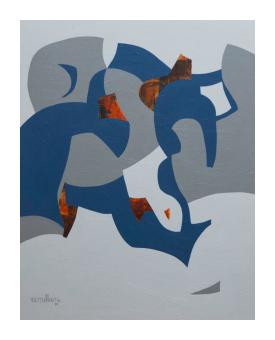
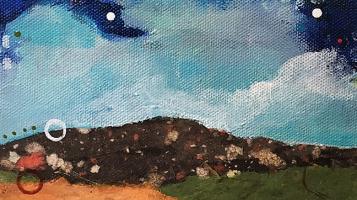
Emily Mitchell
Emily Mitchell's work is a vibrant celebration of nature, relationships and narratives. Through the development of many layers of paint and marks on the canvas, she weaves a story. Her works are done in acrylics, but she also creates smaller monoprints, watercolors, and collages. Mitchell received her Masters of Art Education from the University of Massachusetts, Dartmouth, with strong influences from Peter London and John Crowe who impressed upon her the importance of letting go of what art is “supposed to be” and allowing play within the art making moment to steer creative discovery. Emily completed her undergraduate degree in Studio Art, Art History and Theatre at Wheaton College in Norton, Massachusetts, where she graduated magna cum laude in 1994. Mitchell has had numerous solo exhibitions in New England and is included in several galleries around the country. Her work has been reviewed in Art and Art Deadlines, where she was featured as “Artist of the Year” in 2015.
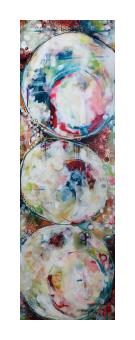
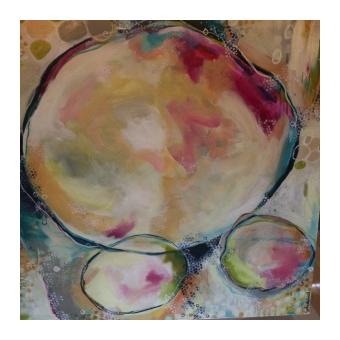
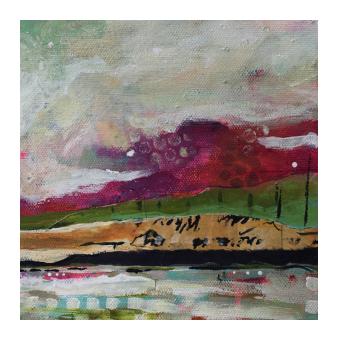
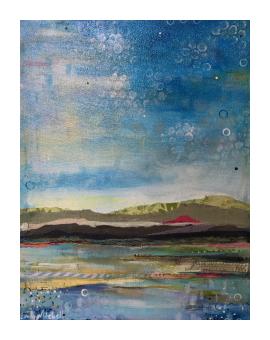
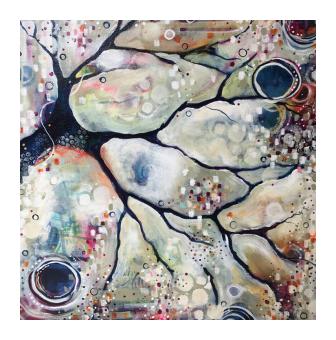
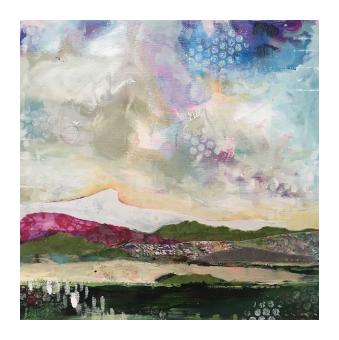
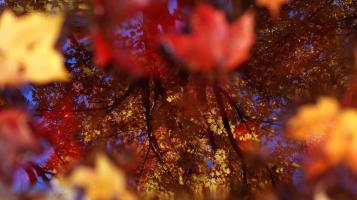
Katrina Mojzesz
Katrina Mojzesz is a 1992 graduate of Moore College of Art and Design where she received a bachelor of science in Photography. She then proceeded to photograph interiors and architecture for many leading Philadelphia firms. Being mostly sequestered to the interior world, every August, Kat took off for a month long camping adventure to a new part of the country each year by herself to dive into the great outdoors. It is here where her love of abstraction of nature took hold. Her work has won awards from museums, like the Mass MOCA award, and has been exhibited in several states along the north east corridor. Transforming nature into moving objects of art. I use motion to turn everyday scenes into something more reminiscent of painting. Each strand of color slips across the image like a paint brush blending forms into color and light. Manipulating the world around me, here is a glimpse into a moment of time when motion is simultaneously frozen and captured.
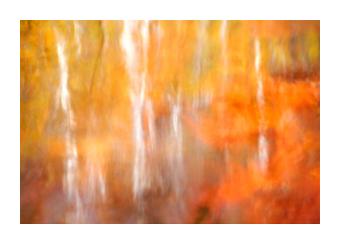
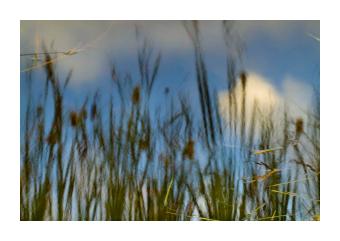
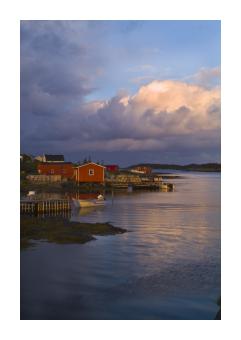
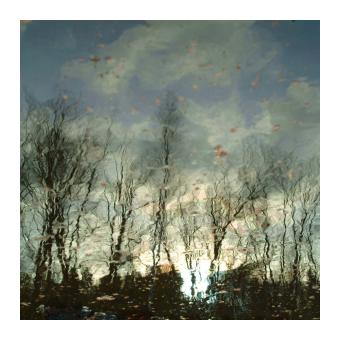
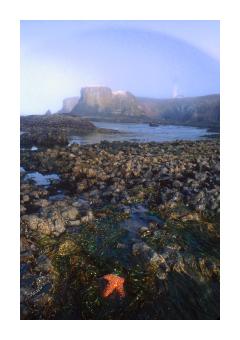
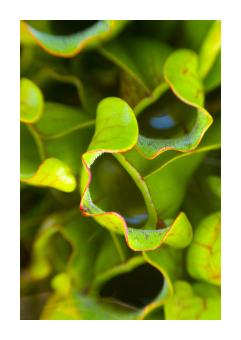
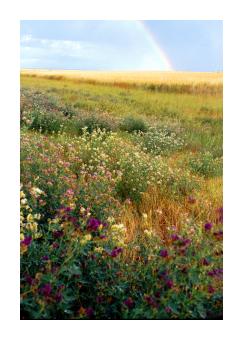
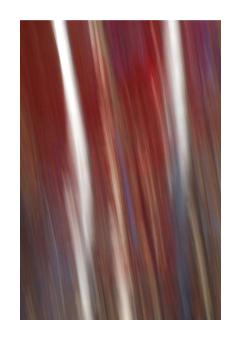
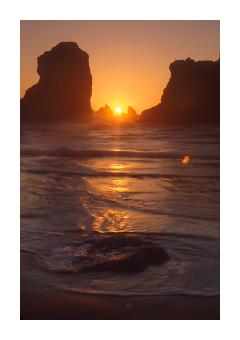
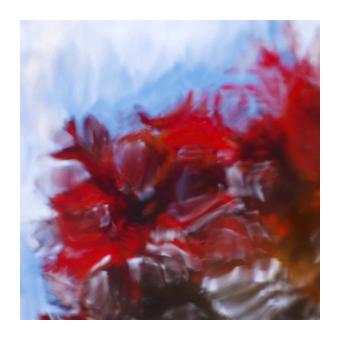
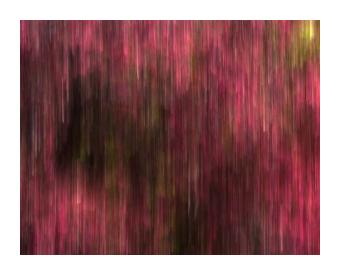
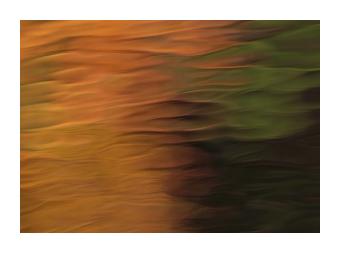
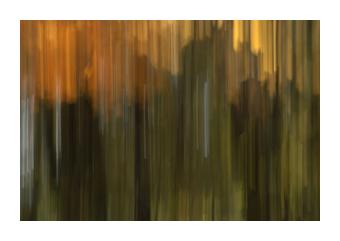
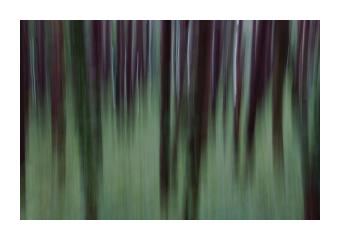
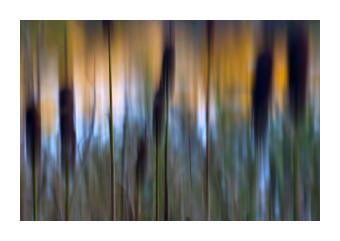
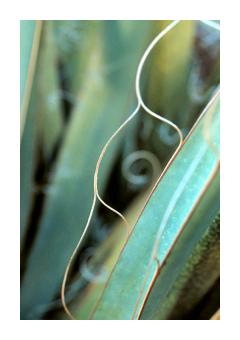
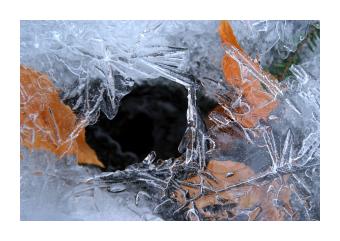
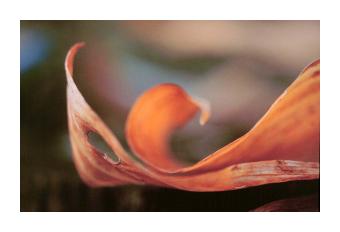
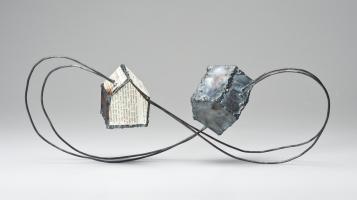
Amy Morel
My practice has been to collect material from all aspects of my life, reconfigure it, and use it to express thoughts, ideas and experiences. Steel serves simultaneously as the opposing force to and support structure for other materials. Steel’s strength offsets paper’s fragility; its hardness opposes the softness of fabric. Steel also becomes an armature on which hang both the tangible and intangible bits of our material world. Things otherwise used up or forgotten are saved. Small things are treasured, and find new meaning.
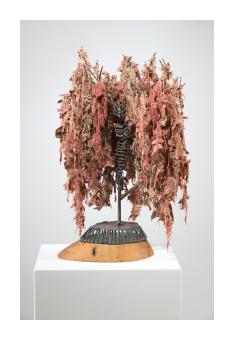
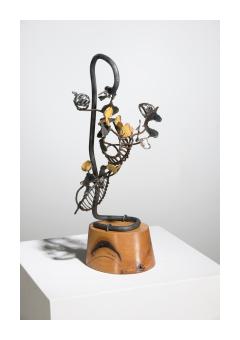
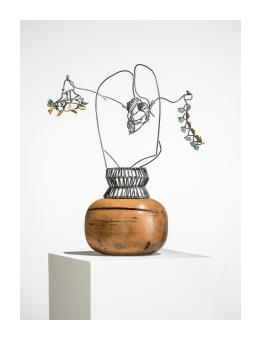
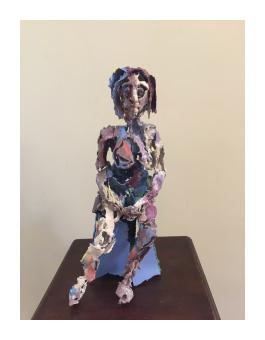
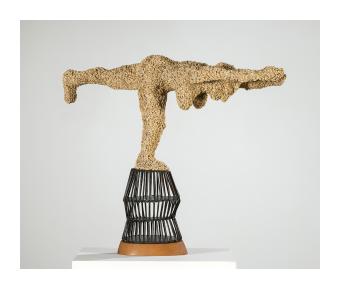
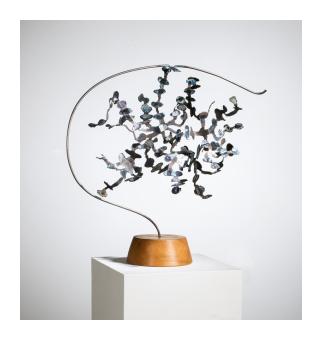

Brenda Myrick
Artist Brenda Myrick works with oil and acrylics primarily but was trained as a watercolor painter in the early years of her art career. This influence has helped keep her work loose and free.
She also has an animal communication practice, which she says keeps her returning to animal and nature subjects for her inspiration as an artist. The beauty and spirit of her subjects are celebrated and reflected in her paintings.
"I've always felt a deep connection with animals, the landscape, and also a sense of place. I use this as a point of departure for my studio practice."
Over the years Myrick has made visceral notations of her subjects. These spiritual notations from both her life today and from the past, have come back to her as aids. To her, they have come back in the form of memories. These moments fuel and help her build the paintings that she enjoys creating today. She explores the themes of nature and animals, melding realism with abstract design elements to create her paintings. Her goal is to highlight the intricate relationships within the natural world and evoke a sense of connection that is often lost in modern life. Through her art, she invites viewers to deepen their understanding and appreciation of nature, fostering a renewed connection with the environment and the beings we live with.


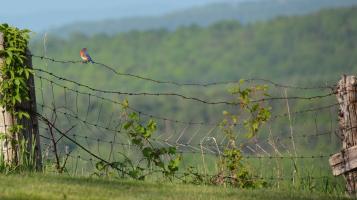
Boston Neary
Before Boston Neary moved to Vermont in 2011, all she knew about birds was trying to get birdies on the golf course. Her life changed when she moved to a house on Shelburne Bay in Shelburne. Every day she started seeing scores of different birds—including eagles, osprey and snowy owls. And each morning and evening during the summer she was wowed by incredible sunrises and sunsets. She knew that none of her friends from around the country would believe Vermont’s incredible beauty. She started ‘winging it’ at first by trying to take pictures of fast-moving birds with an iPhone—and quickly found that was impossible. Her first camera was a souped-up point and shoot that she soon found could shoot distance shots, but didn’t have the ability to shoot many photos quickly. The quest to find the right camera continued over the next couple of years. She became best friends with the local camera store as she continually upgraded to newer and different levels of DSLR’s (with bigger and bigger lenses). She has settled on two Nikons, and a mirrorless Olympus and--plenty of lenses including the ‘big mama’ 200-500mm to catch the long-distance shots. Where golf was once her driving passion, nature photography has taken over Boston’s life. Being outdoors and capturing these moments brings her incredible joy – and the what makes her incredibly happy is the ability to share it via social media – Boston Neary Nature Photography on Facebook – and at different public showings. She truly believes that Vermont has brought out the artist in her. She has a long list of bucket places to visit: Costa Rica, Galapagos and Iceland to name a few – but she also knows she is incredibly blessed to be able to walk out her front door to catch Vermont’s incredible beauty. Her photography has been featured on/in: WCAX-TV; Vermont Magazine; Burlington Free Press; capturemyvermont.com; Lake Champlain Committee; Lake Champlain Maritime Museum; Dragonheart Vermont and Best of Central Vermont Magazine. She is currently the publisher of South Burlington and Shelburne Living magazine.
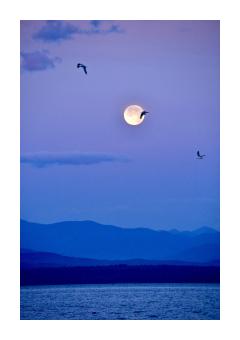
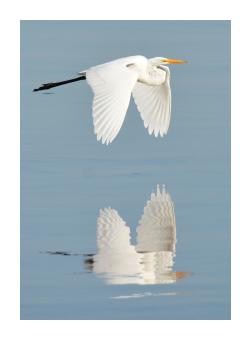
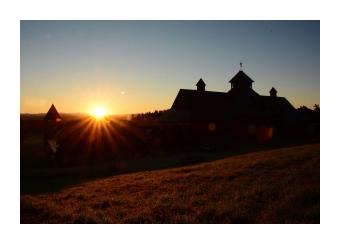
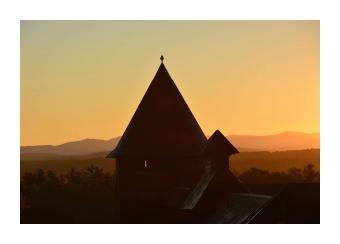
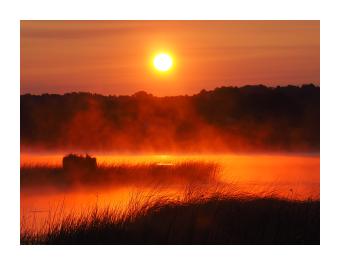
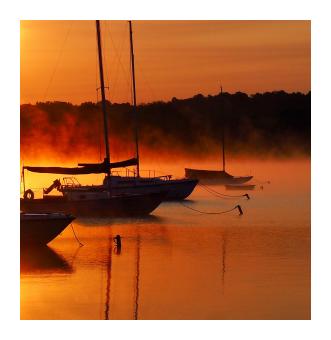
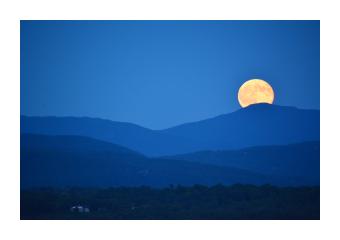
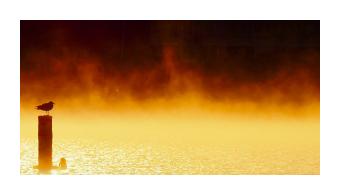
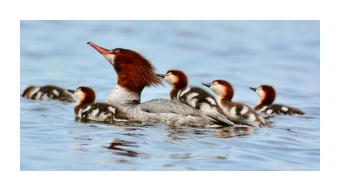
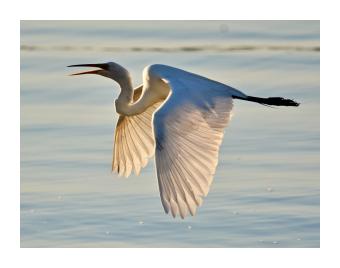
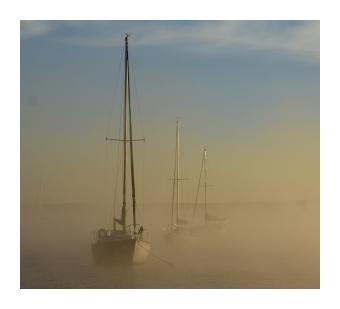
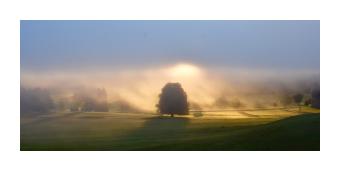
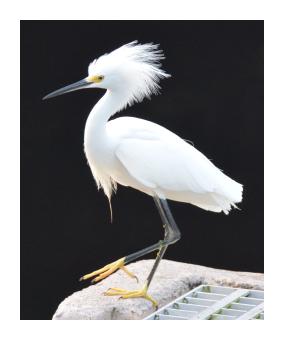
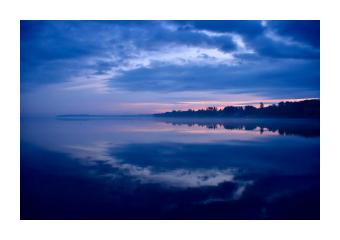
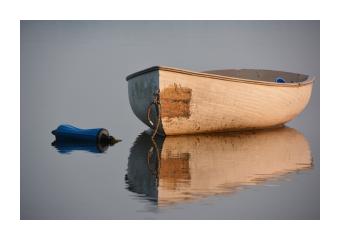
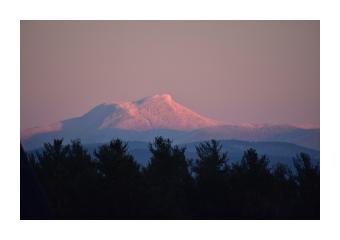
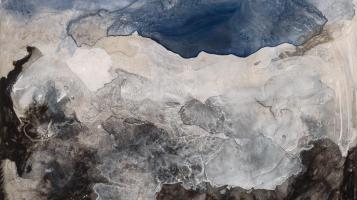
Elizabeth Nelson
The landscape in Vermont is central to Elizabeth's sense of place and it is part of her identity. The comfrotable view of mowed fields, healthy farms and barns in good repair, small villages nestled among the pastures and woods is now threatened by encroaching development, difficult economic realities for farms and villages and by climate change. Elizabeth strives to make people aware of this everday beauty, to treasure and guard it and not allow it to slip away through carelessness or greed. Elizabeth has been part of the working landscape of Vermont for forty years, raising children, gardens, chickens and sheep. She has been a dairy farmer, starting with ten heifers and ending with three hundred cows twenty-seven years later. She has been painting since she was six years old. Her work has evolved to be a kind of record of the northern farm landscape which challenges us with harsh weather, extremes of temperature and the long duration of a difficult climate, but it also rewards us with extraordinary beauty. She believes, these beauties are what inspires us who live here to endure, do the work, and even prosper. The approaches and mediums she has used over her long career are varied: abstractions, photo realism, emotional realism expressed in several scales in oils, acrylics and water colors. By building outward from the specific image/landscape, the particular experience is intensified by expansion. It can be biographical or fictional; either way, it is a search for meaning.
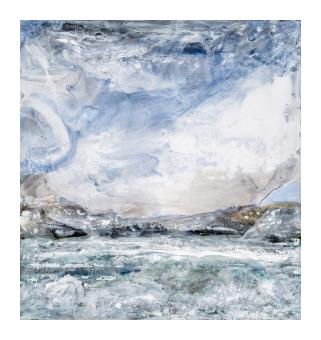
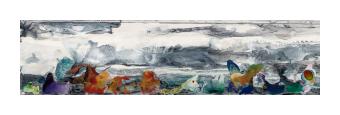
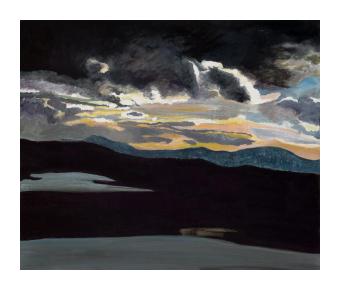
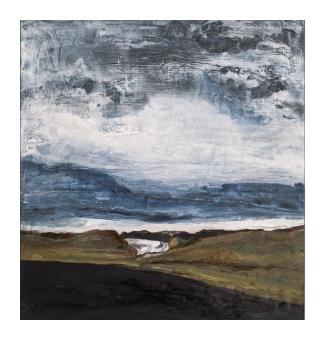
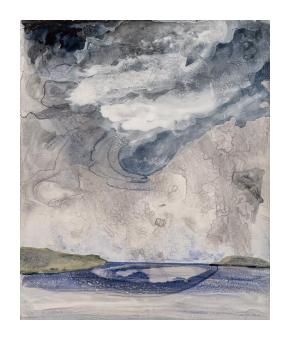
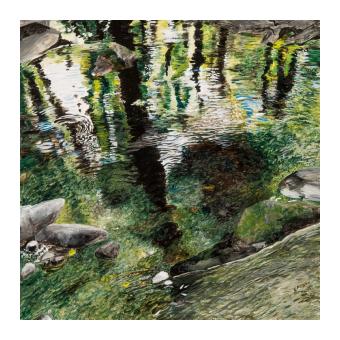
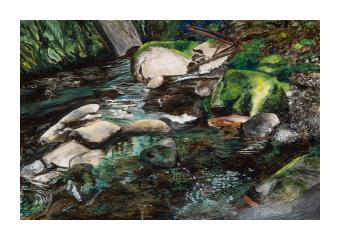
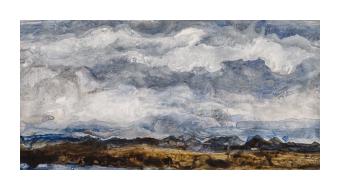
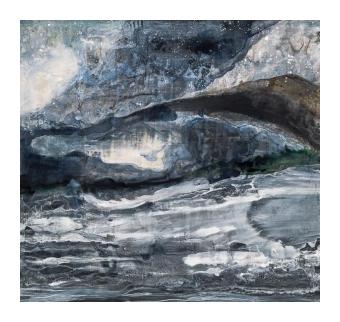
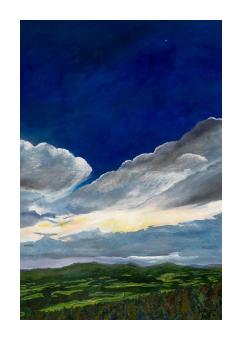
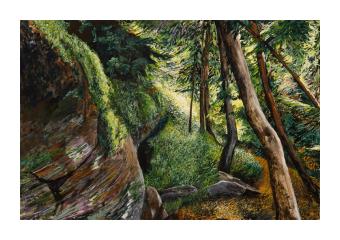
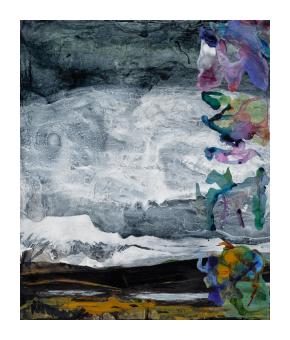
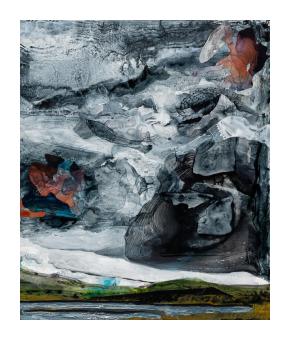
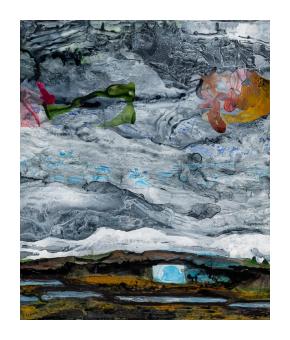
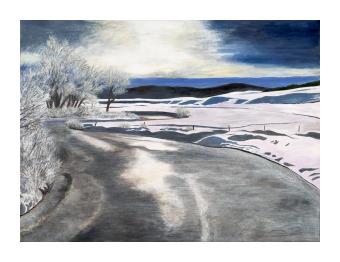
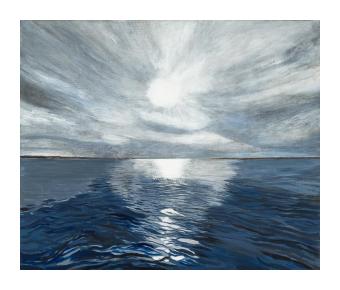
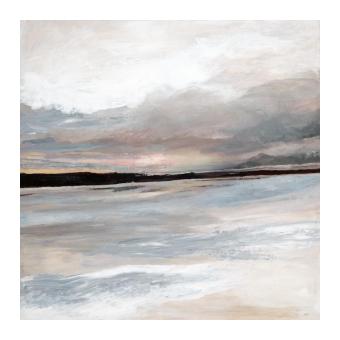
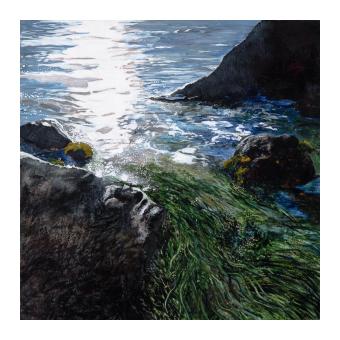
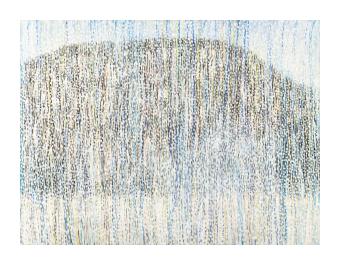
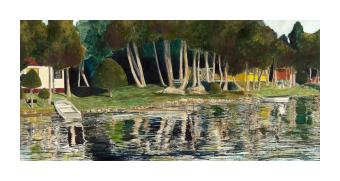
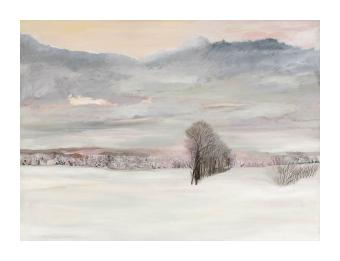
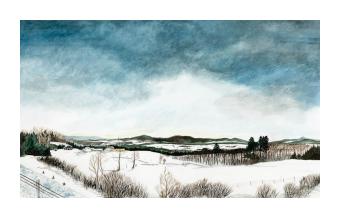
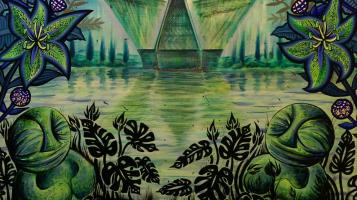
Shannon O'Connell
I'm focused on the detail and dreamlike color combinations. Many of my botanical paintings have phosphorescent and UV sensitive pigments mixed into the paint to allow secondary paintings to be revealed. I've always been enchanted by the magic in flowers. Over my years as an artist I have acquired a love for travel, exploring botanical gardens for inspiration. Having lived in Hawaii for 15 years my love for the ocean and flora shaped my art and the way I see color. Surfing, Skiing and Rollerskating puts my mind in a relaxed state, for me it's very much a meditation. The same feeling when I paint or create something. My first solo art show was in Roppongi, Tokyo, Japan. I have also done art for surf contest posters and trophies, commission pieces, surf apparel graphics and my Original paintings represented in Wyland Galleries on Oahu. My Studio in Vermont I'm able to work in a much larger scale and do more stencil work. My first project in Vermont was an 80' covered bridge, the floor stenciled by hand in red buffalo plaid. In my free time I teach art at Helen Day Art Center and enjoy seeing little artists making great art. My parents enrolled me at age 4 into a German Art and Language School, my years there gave me such a foundation in art. It was my kind teachers then, that inspire me to teach. When I finish a painting I hope it gives the viewer a genuine feeling of paradise. Balance in each painting is important for me, having the right amount of patterns and loose elements complete a piece. Sometimes the glowing, secondary painting represents how a bee would see a blossom, in ultraviolet. Many patterns remain invisible on flowers to the human eye. Subject matter is around every bend, every petal and my "Bee Series" is an homage to our planets flower keepers. When I create each series putting in the detail is out of respect and enjoyment.
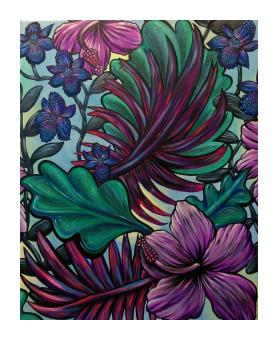
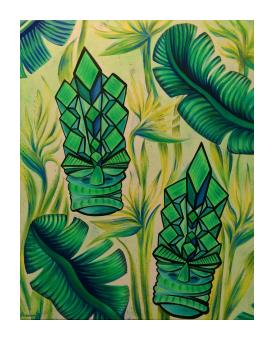
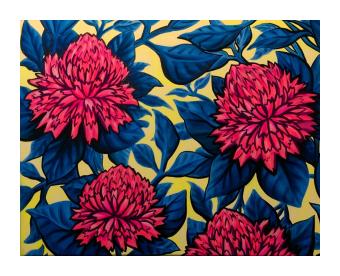
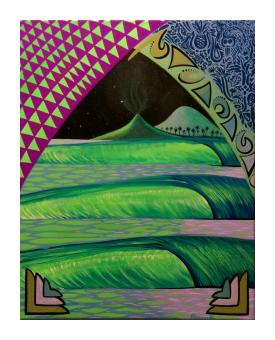
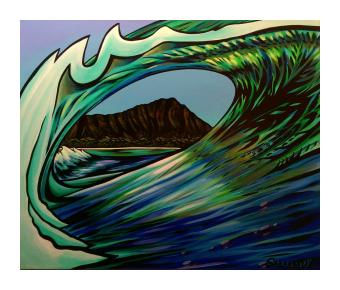
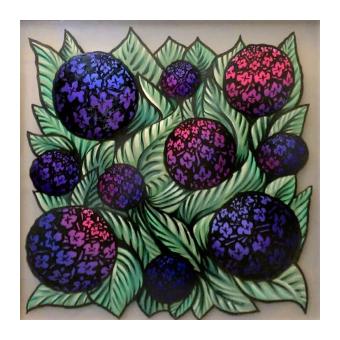
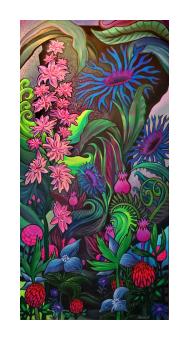
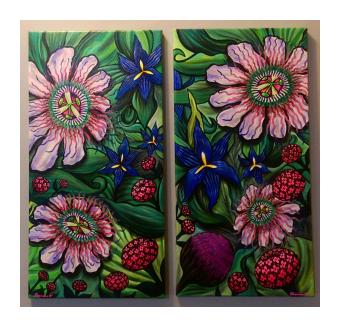
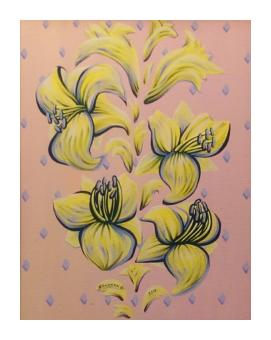
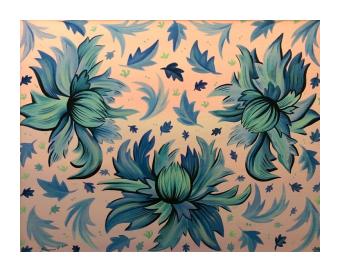
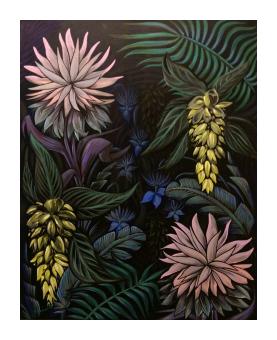
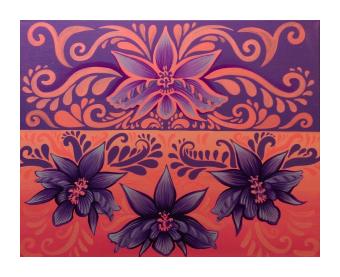
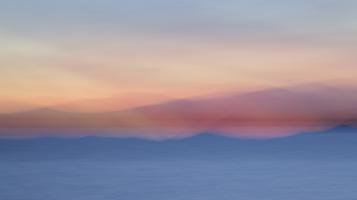
Kelly O'Neal
Photographer, traveler, data nerd, foodie, geographer, dog lover, sunset enthusiast: Kelly O’Neal creates ethereal, painterly photographs of the beauty of place. Unlike most photographers, she seeks to move the camera during exposure, relying on years of practice to create the look she wants on her digital film. Rather than documenting what your eyes directly see, she captures colors & shapes and seeks to evoke the essence of a locale and its quintessential moments. Kelly self-taught this technique beginning in 2007 in her basement apartment, combating the stress of a consulting job by photographing flower bouquets at midnight. Probably while drinking whiskey. Soon she expanded this technique to landscapes, and took the technique on the road during her travels. Kelly grew up in Jacksonville, Florida and is currently based in Vermont where her photographic assistant, Teddy Bear, gets impatient for his cookie while waiting for mom to finish shooting beautiful sunsets over Lake Champlain.
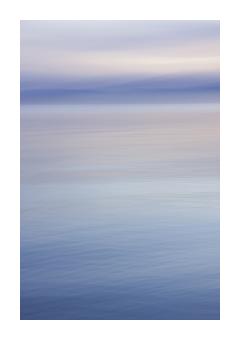
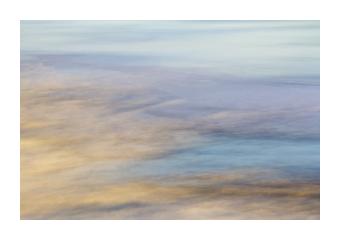
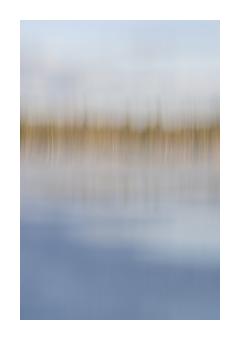
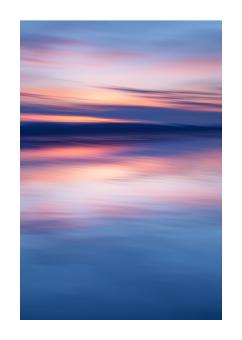
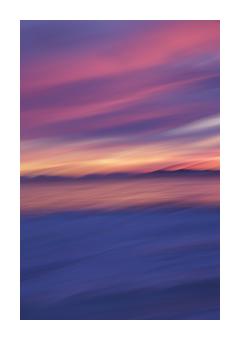
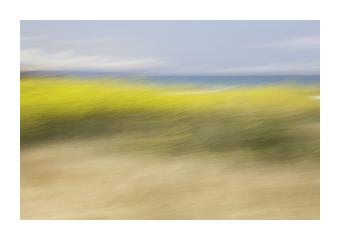
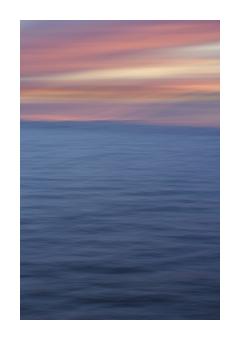
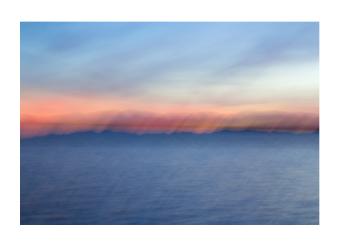
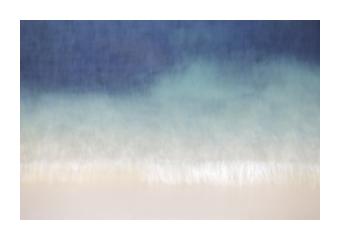
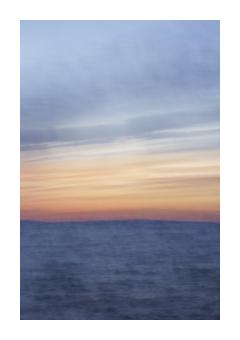
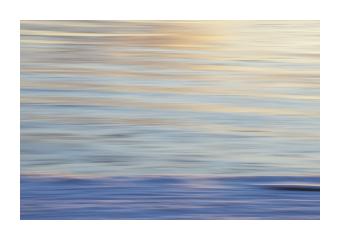
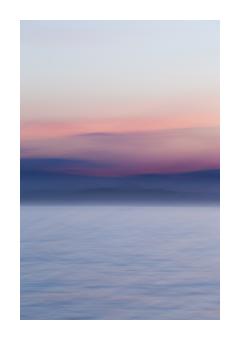
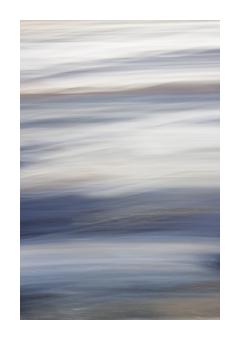
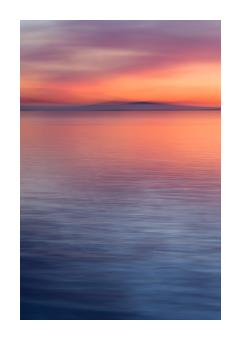
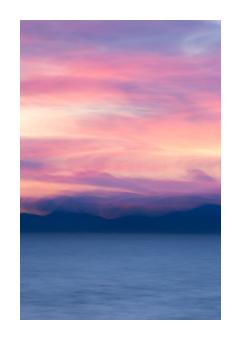
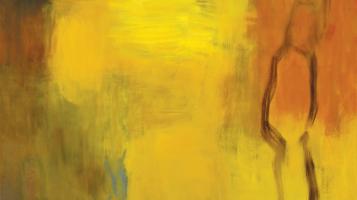
Susan Osgood
Susan Osgood is a painter, who also makes monotype prints and draws. The source of her inspiration is an innate curiosity, which allows her to experience the acts of painting and drawing as if they are travels, giving the sense of being in unfamiliar territory and the wonder of discovery. Her love of traveling, both literally and figuratively, takes her within as well as out into the world to far away places - something she yearned to do ever since she was young. Growing up in the woods of New Hampshire, she spent time in nature, indelibly marking the way she experiences through the senses. Upon completing her degree in painting from Rhode Island School of Design, her goal was to be able to make a living by traveling and making art. Touring Egypt in 1979, she acquired a taste for a foreign culture rich with layers of history and art. In 1985 she began working as an artist for the University of Chicago's archeological project in Luxor and has spent the last 25 winters there drawing the carved and painted reliefs of ancient tombs and temples. Leaving the dusty yellow winds blowing in from the desert, Susan returns home each spring. In her Vermont studio she translates these divergent worlds full of contrasts and similarities into abstract contemporary artwork. Osgood's work has been exhibited widely, including major cities in Germany, with a solo show most recently at the Museum August Kestner in Hannover and is in private and corporate collections around the world.
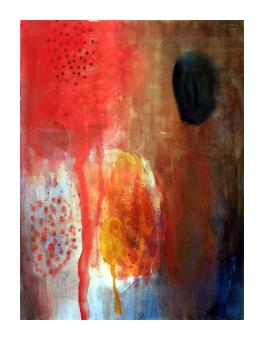
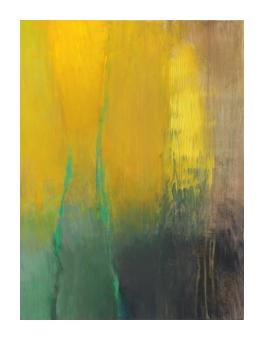
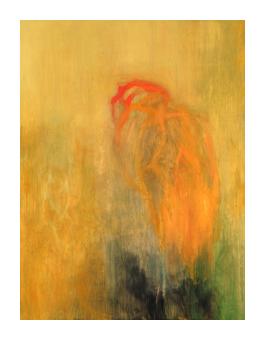
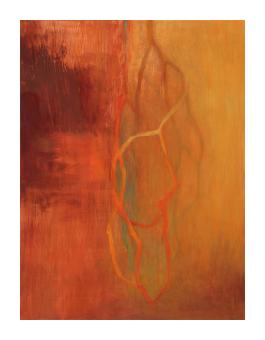
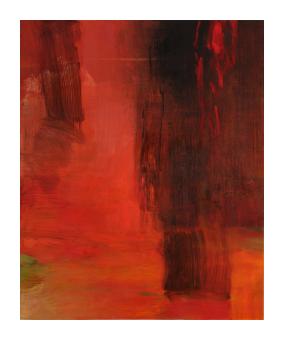
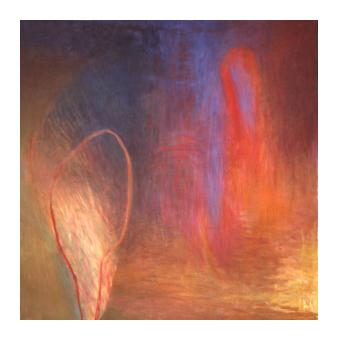
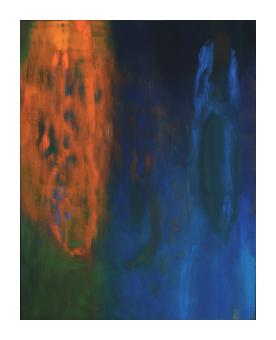
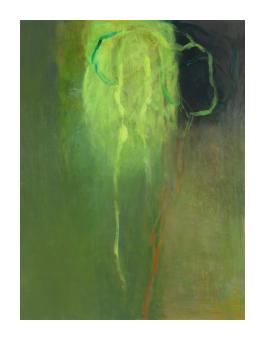
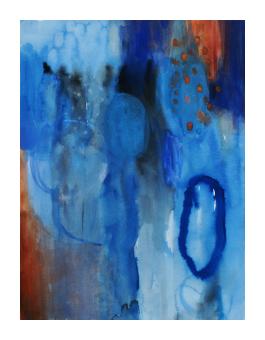
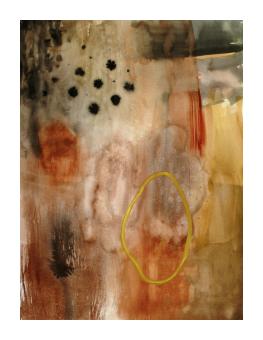
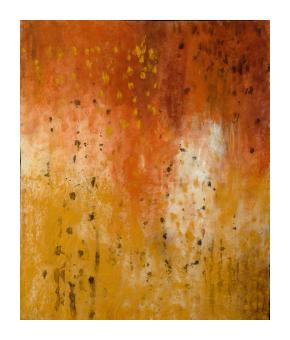
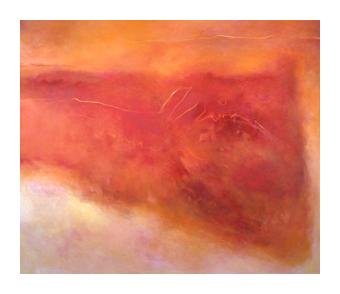
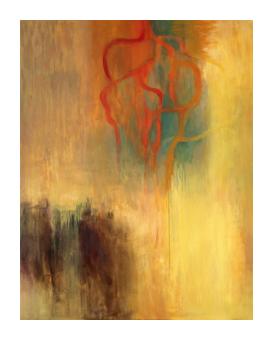
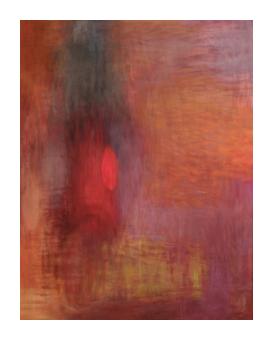
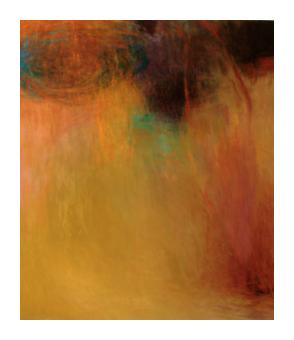
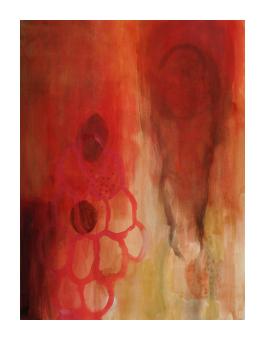
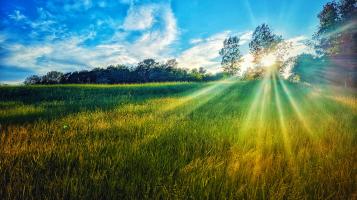
Kristina Pentek
Through her work, Kristina Pentek intends to capture beautiful and otherworldly moments as they happen, often in unexpected places. As with any photographer, color and light are of a particular interest to her. She is fascinated with abstractions created by the natural world and juxtapositions where nature intersects with mankind.
Pentek looks for beauty in her day to day by paying attention to the details. Sometimes a simple change of perspective makes all the difference. She feels her purpose as a photographer is to present the viewer with scenes that are absolutely real but look otherworldly, painterly, fantastical or abstract. Nonetheless, her prints are the result of real scenes. Nothing is ever staged and none of her images are ever retouched or superimposed, the only alterations are cropping and minor color corrections.
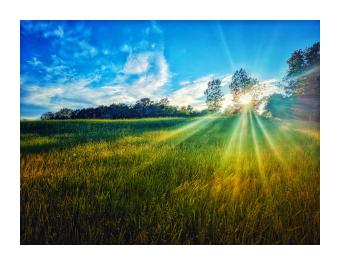
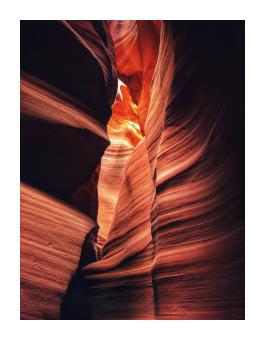
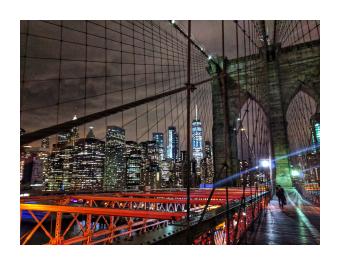
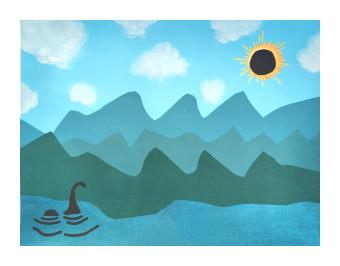
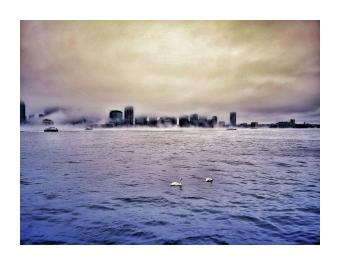
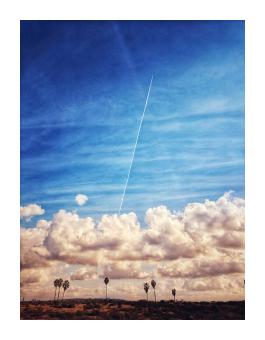
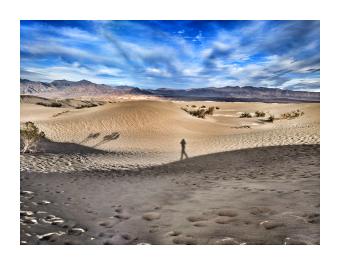
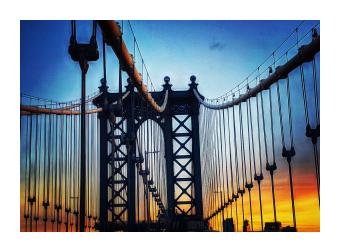
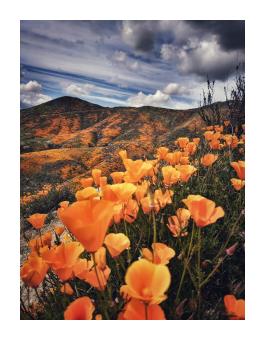
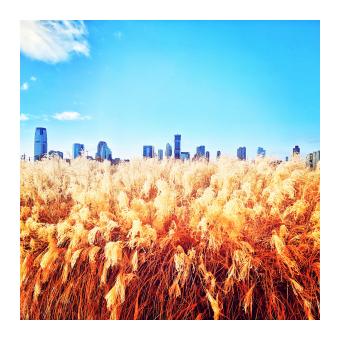
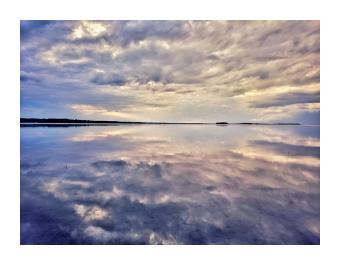
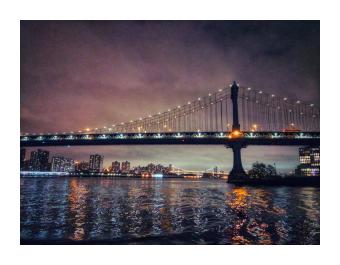
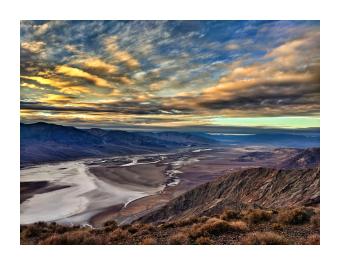
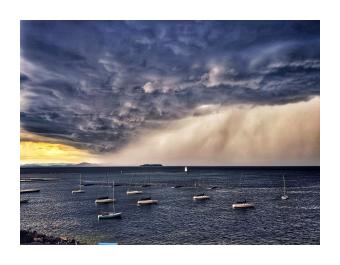
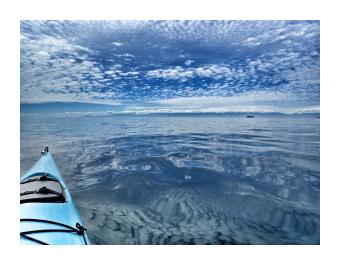
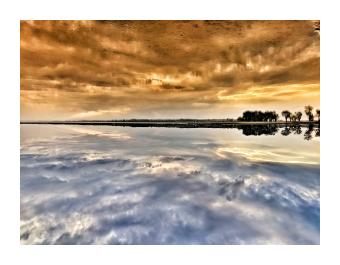
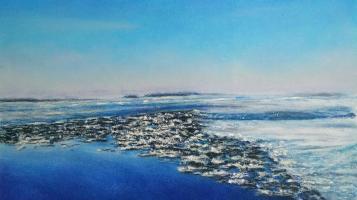
Alla Potashnikova
My name is Alla Potashnikova, and welcome to my world of pastel painting. Since childhood, I enjoyed sketching and doodling in the margins of my notebooks, always surprised and sometimes delighted by this act of creation. I continued this habit through high school and college as well as my adult years. About two years ago, I stumbled upon pastels, when my good friend, Jerry, bequeathed to me a beautiful wooden boxed set of pastels. Opening that lid for the first time proved to a be a magic moment in my artistic journey, and ever since I have been working exclusively with this, to me, perfect medium. Why do I feel this way? First, pastel is one of the most permanent media in existence, so a work in pastel, if properly cared for, has great longevity. I also love the softness and brightness achievable with this medium as well as the great range of tone and color. In fact, I find pastel so fascinating that I have created a special page for it on my site allapotashnikova.com, called Materials, that I recommend you read if you have an interest in learning more. I like painting landscapes and portraits of both people and animals. My passion for portrait painting brought me a Third Honorable Mention at the VT Pastel Society show this year. I paint, mostly, for my enjoyment, but recently I expanded to doing work on commission. Email me with any questions you may have, make suggestions, or share any thoughts that come to mind – alla@allapotashnikova.com I am looking forward to the opportunity of meeting you and to sharing my love of pastel with anyone who is interested. Thank you!
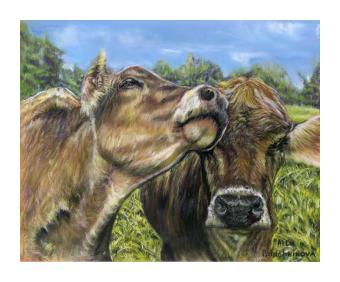
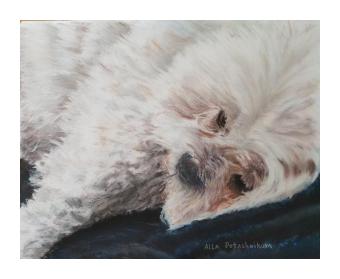
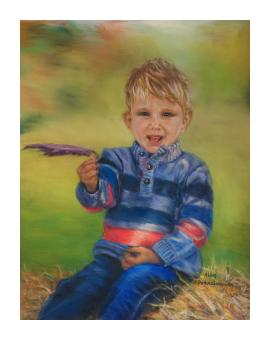
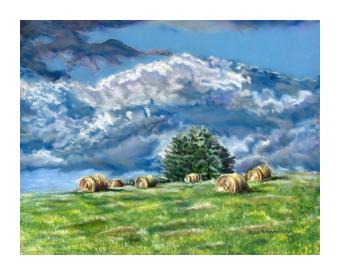
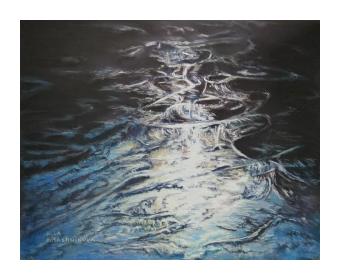
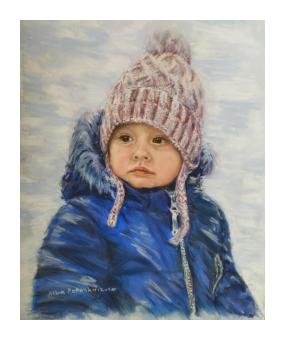
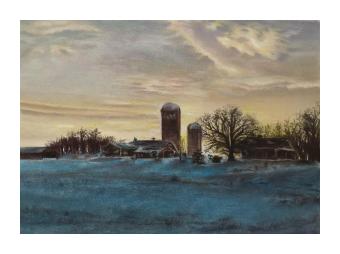
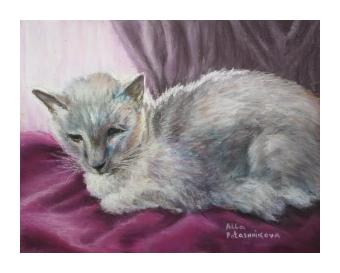
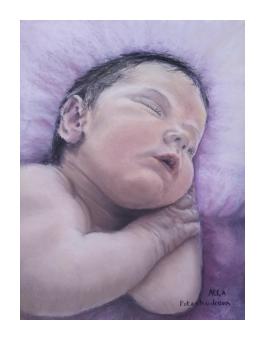
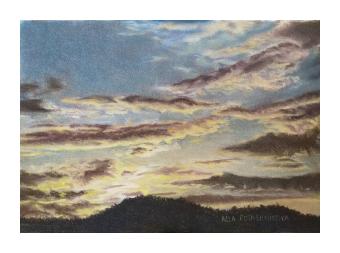
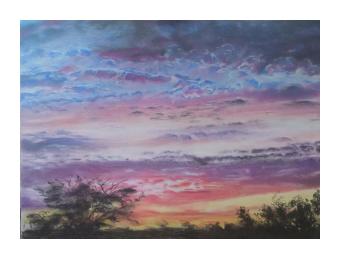
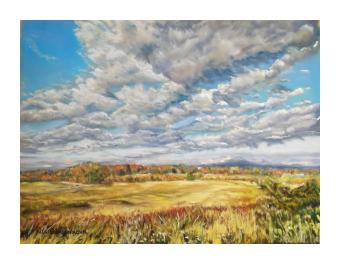
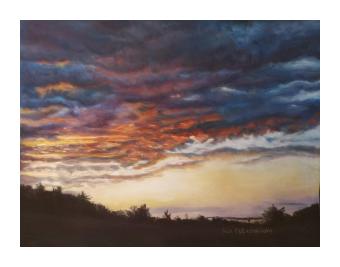
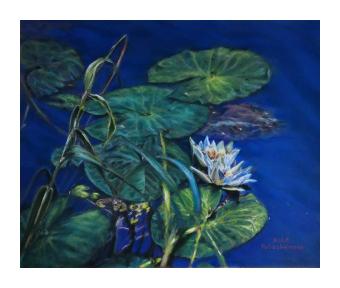
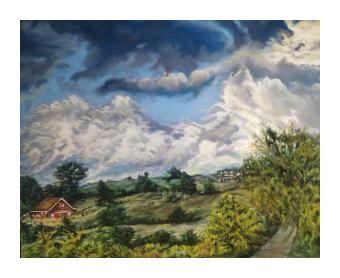
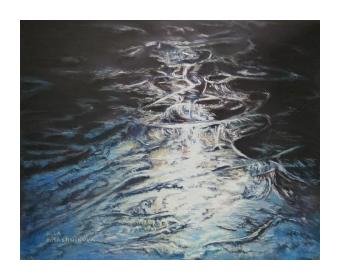
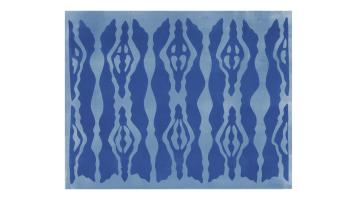
Elizabeth Powell
Bodily; suggestive and alluring, my work is often comprised of torsi-like forms complete with breasts, belly, and pelvis. The imagery comes from a lexicon of figures that I began developing when I was immobilized by an illness. Experiencing physical limitations, I instinctively began to draw and abstract the shape of my own body to reconnect and reclaim it. I now draw these forms automatically and obsessively. They now deviate far from the figure, yet remain cohesive and bodily. While I make overt references to the body, I also create shapes that resemble bones or organs; visceral and sinewy. The forms are unusual, riddled with bulbous protuberances, abject and grotesque. Yet, they are beautiful. Unexpected and sometimes disconcerting, the forms are not quite what they are expected to be from the first impression of beauty, symmetry, and patterning. They retain autonomy as they tease perfection with a pseudo-repetition. The empowered forms are somewhat contradicted by the overlying skeletal structures that often accompany them. The “cages” or “nets” entered my work when, on a quest for plain, utilitarian underwear, I was pulled into the abyss of online shopping. I became fascinated by over-the-top lingerie. I am intrigued by the way the fabric forces women’s bodies into a series of geometric shapes, as if packaged. Between the nets and figures, my work is able to begin exploring the perplexities of femininity created by the societal decorum of beauty and the conflation of expression and repression found in the female form.
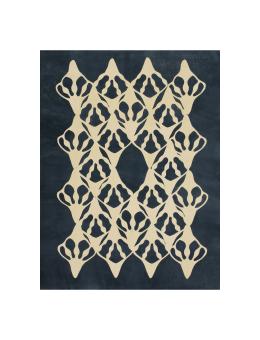
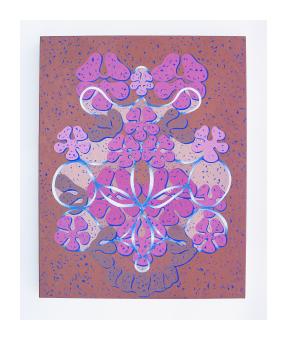
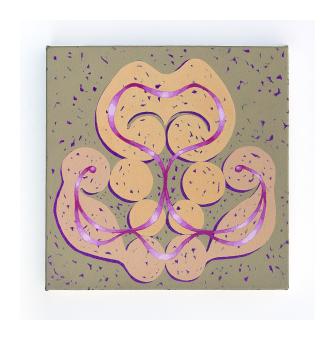
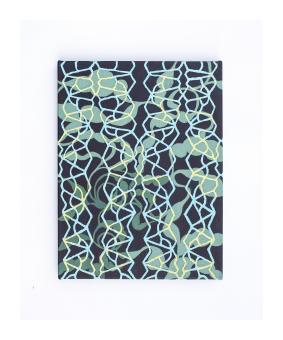
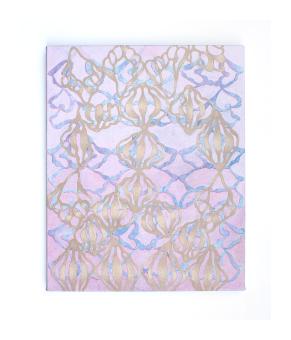
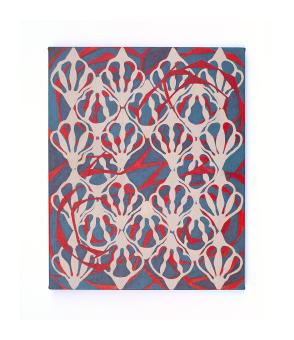
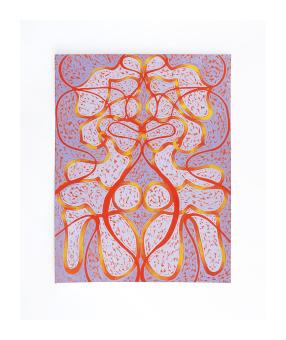
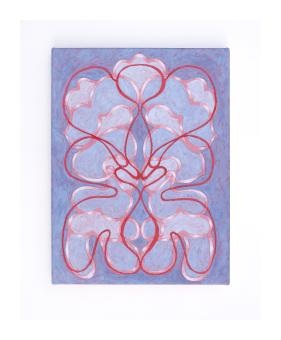
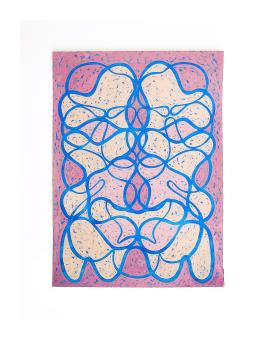
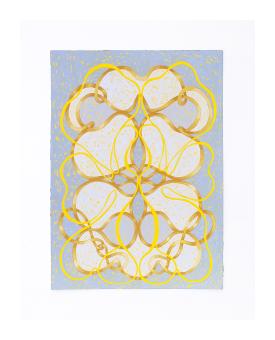
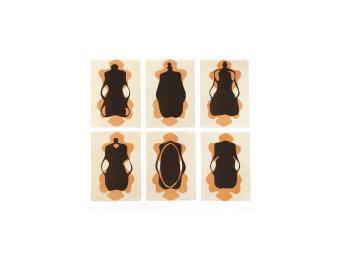
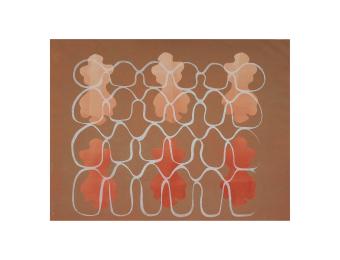
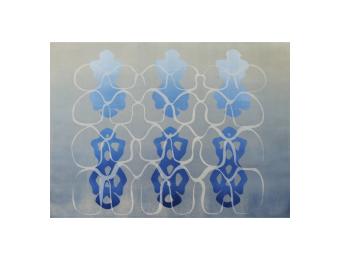

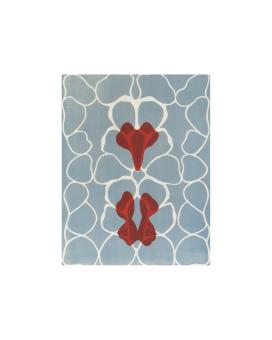
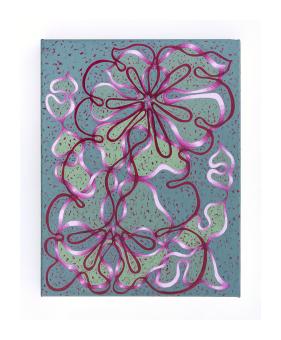
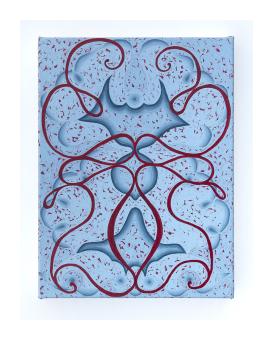
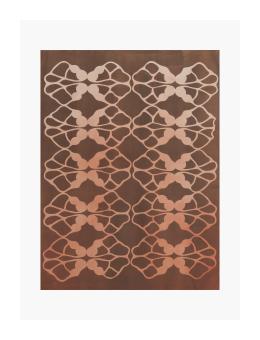
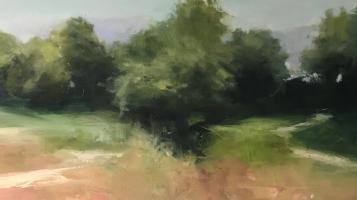
Julia Purinton
Julia Purinton spent her childhood in Virginia and Pennsylvania, graduated from Harvard College with a degree in Fine Arts, pursued a course of study at the School of Fine Arts in New York City, and settled in New England, first on Boston's North Shore, then in the Mad River Valley of Vermont. When I was a little girl, I wanted to be a princess. Spending hours pouring over lush fairy tale illustrations at my grandmother's house, I internalized a vision of the landscape inseparable from the drama of life. Climbing trees and running through the woods & fields of Pennsylvania and Virginia, I imagined trolls and unicorns around every bend, visualizing the settings of my favorite myths and novels. As an artist, I am immersed in the distillation of landscape with narrative rather than purely descriptive intent. utilizing a familiar vernacular of landscape imagery, I explore psychological passage and growth; finding joy, accepting loss, releasing regret. In the way that fairy tales dramatize elements of real life, my paintings illuminate aspects of personal endeavor. When the viewer is drawn to an image throughout the recognition of an emotion rather than of a specific site, there is the rewarding sensation of having shared both the mystery and the commonality of human experience.
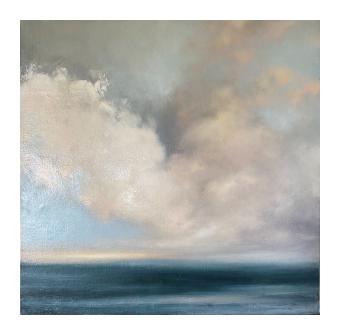
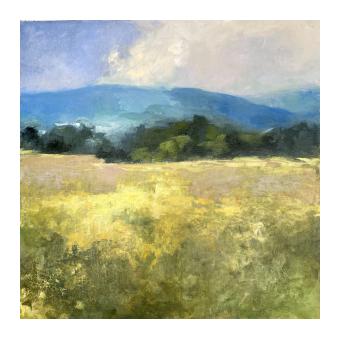
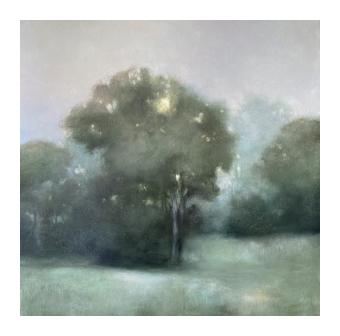
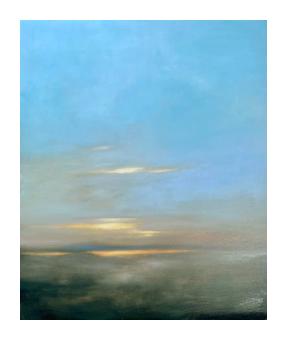
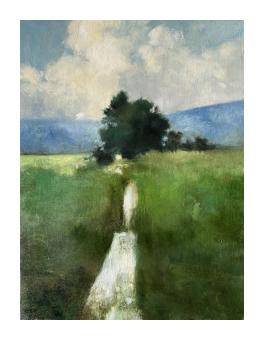
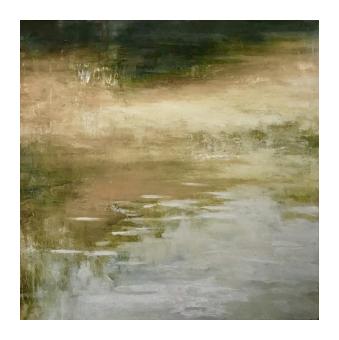
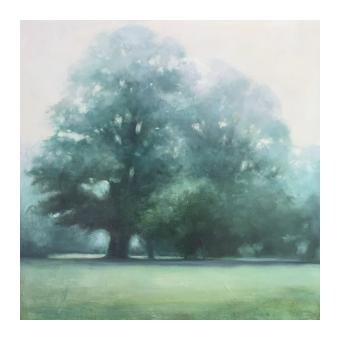
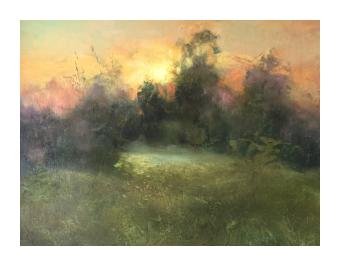
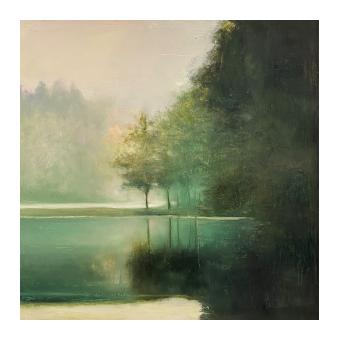
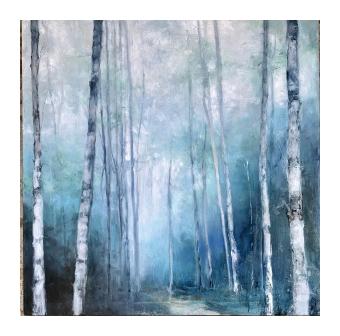
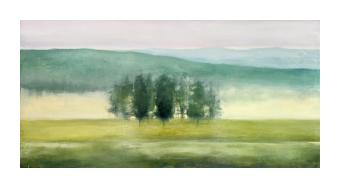
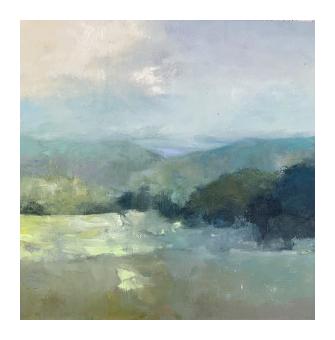
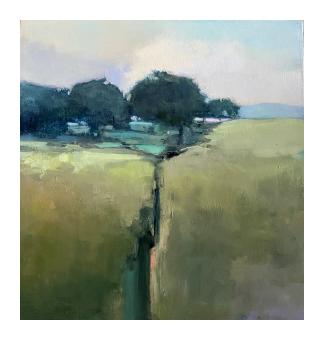
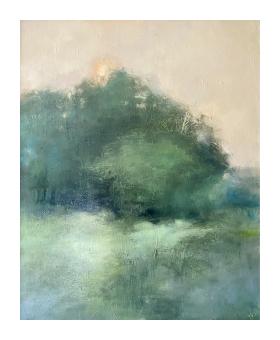
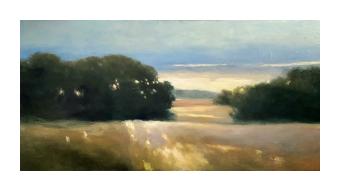
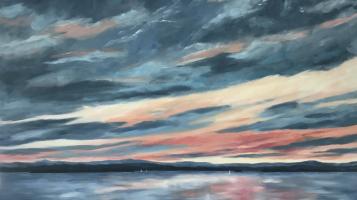
Sandy Reese
Sandy Reese is a landscape oil and watercolor painter from South Hero, Vermont. She discovered her love for painting as a child and remembers being influenced by her first art teacher, Rita Boyd of Winooski, Vermont. Over the years she has studied with many nationally recognized artist from around the country in both studio and plein air workshops, including her mentor, Lisa Beach of Stowe, Vermont. Her work is expressed in vibrant impressionistic style while retaining its representational roots. Much of her work reflects her love of Lake Champlain and the Champlain Islands that she now calls home. The pink hues of a morning sunrise and the gold and yellow afterglow of an exquisite sunset are forever inspiring her. To capture the beauty of the moment, she paints quickly and lets the paint capture that moment and memory in time. Sandy currently exhibits her work at her studio/gallery at On Island Studio, located in South Hero, VT. She has exhibited her work at the Champlain Island Art Organization’s annual July show, Open Farm and Studio Weekend and The Island Arts Gallery in South Hero, VT. Works in juried exhibitions include the SEABA Gallery in Burlington, VT, Chandler Gallery in Randolph, VT, Chaffee Art Center in Rutland, VT, Vision of Vermont Gallery and The Bryan Gallery both in Jeffersonville, VT. In 2012 she was awarded “Signature Membership” in the Vermont Watercolor Society. Currently she’s a member of the Champlain Islands Artists’ Organization, Island Arts, SEABA and Northern Vermont Art Association.
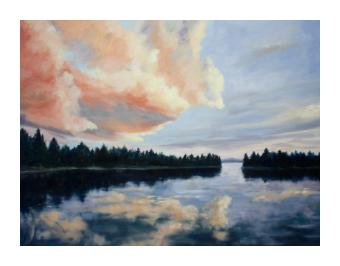
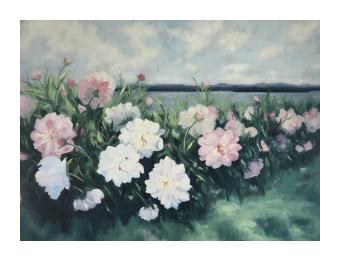
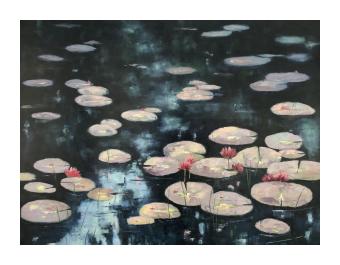
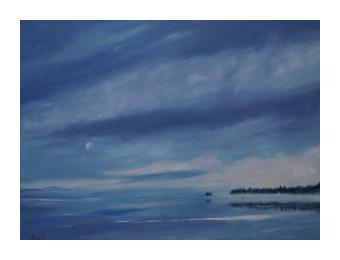
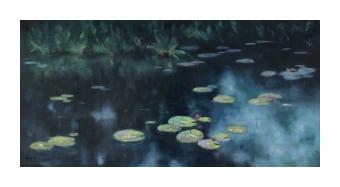
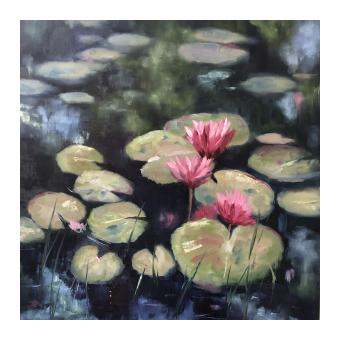
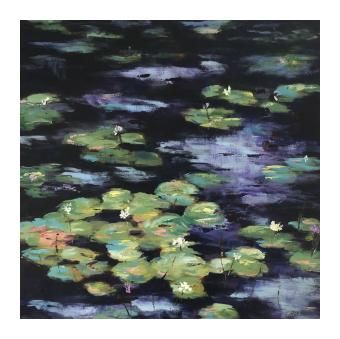
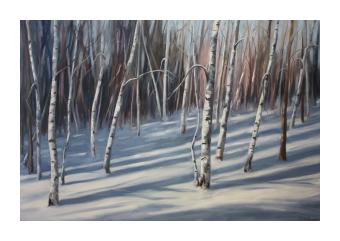

Susan Bull Riley
Susan Bull Riley’s large oil landscapes reflect her delight in how light, the ultimate designer, amplifies the beauty of Vermont’s landscape everywhere she turns. Each completed oil painting is the end product of multiple sketching visits to a location.
Her delicate watercolors are created in the tradition of botanical painting that flourished before the advent of photography. This art form, which is undergoing a renaissance today, requires many unbroken hours of direct observation so as to marry botanical accuracy with aesthetic concerns.
The source of her inspiration for both is the same: awe and delight in what she sees around her here in Vermont.










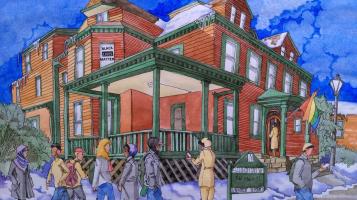
Mary Romary
Art has always been part of my life. I grew up in California but I have lived in Burlington, VT for 23 years. I was fortunate to have the opportunity to draw and paint during 15 years of travel in Europe. My most prolific work happened while I lived in France for 10 years. At the time, I was learning to speak French. Since I couldn’t communicate through language to the level that I wished, I expressed my appreciation for the kindness of the people and the beauty and simplicity of nature through my art..
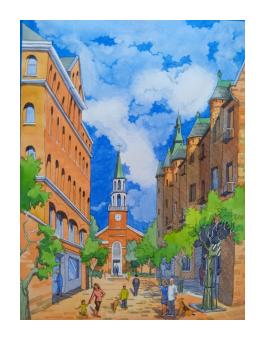
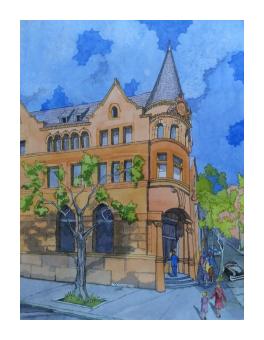
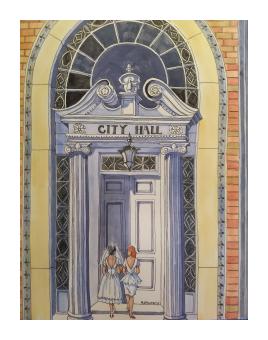
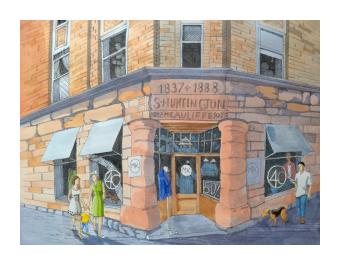
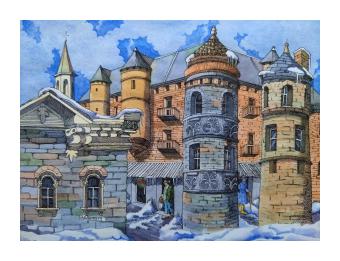
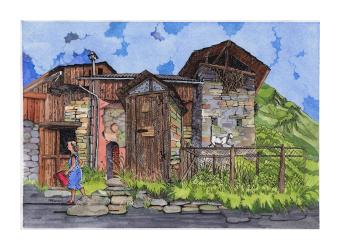
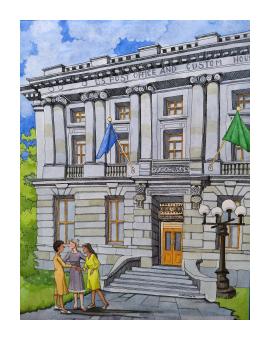
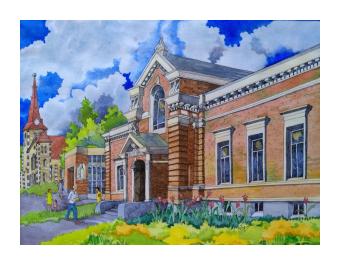
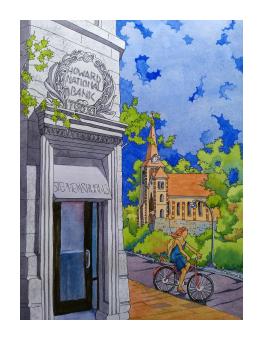
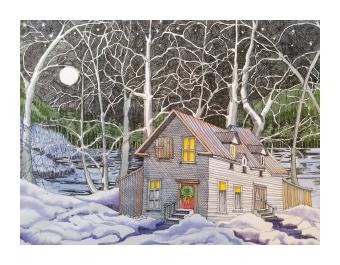
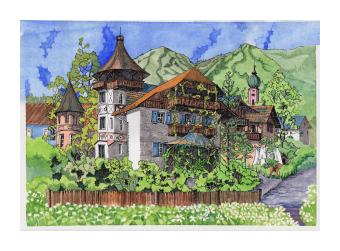
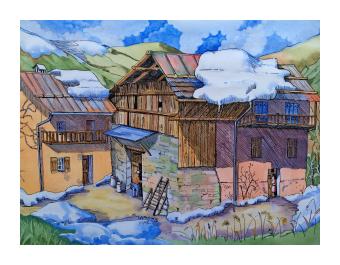
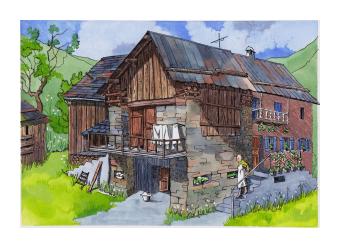
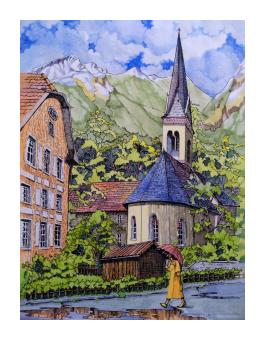
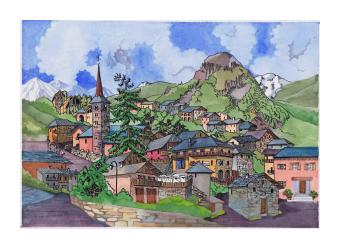
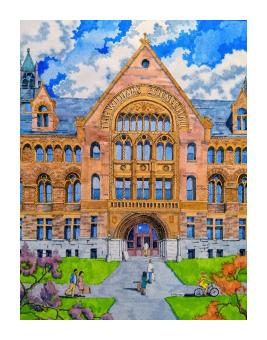

Kim Rosebud
Kim Rosebud's work is created intuitively and is guided by color, movement, and a strong sense of presence. Each painting evolves naturally, becoming a mirror that reflects energy through bold brushstrokes and color. She aims to create an open experience. Viewers are invited to respond freely, bringing their own emotions and memories into the work. Though the process is personal, it touches on something shared—a quiet connection beneath the surface that makes each piece feel both personal and universal.










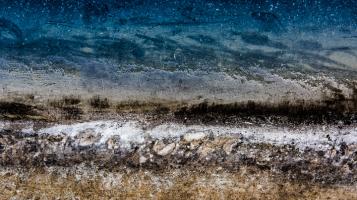
Carl Rubino
I began photographing with film, mostly in black and white, in my college years in the 60s, shooting predominantly in street and urban contexts. Unfortunately, I was forced by the pursuit of a "straight" job and family to put the camera away for several decades until pulling it out again in 2007 to use it to photograph guitars I was building. In no time I turned my attention back to photography as an art form and have continued my exploration since then, shooting mostly in the Adirondacks of Northern New York, where I live, and neighboring Vermont, with occasional forays to New York City, the Florida coast or anywhere else I happen to roam. I concentrate on creating interpretive, impressionistic and abstract images that relate my personal vision of or reaction to the subject matter that lies in front of me. Subjects includes people, landscape, abstract, street photography, and anything else that captures my interest and which I feel I can render with my own interpretation or point of view in a way that makes it distinct from how others have treated the subject. In short, I seek to capture and interpret life’s visual symphonies, one click at a time. I feel that, to a large extent, my photographs consist of three different points of view: the raw material that is the literal subject matter of the image that my camera captures; what I see and sense – and hope to portray – when I look at and experience that subject matter and interpret it with my camera; and what the viewer sees when looking at the image. Those may be three very distinct views of what is, essentially, rooted in the same thing. That, to me, is stimulating art. And that is the greatest part of what draws me to photography. I hope you enjoy viewing the work as much as I do creating it. Please feel free to peruse my Artist Statement for a more detailed discussion of my work.
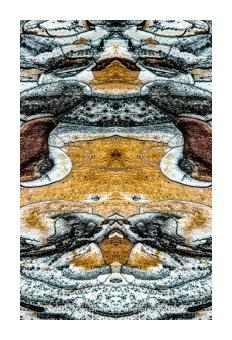
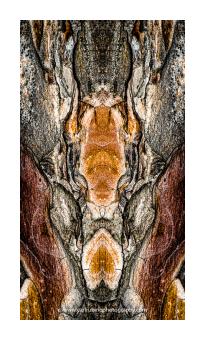
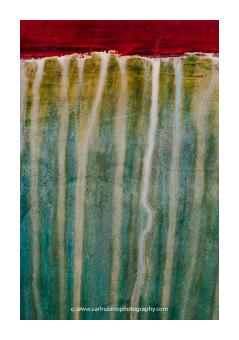
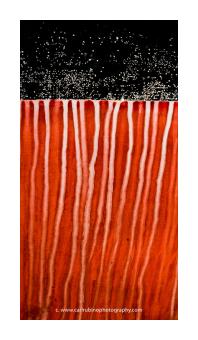
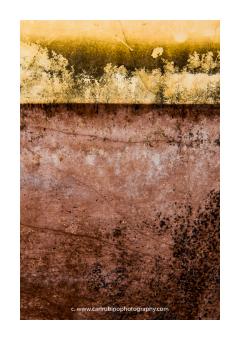
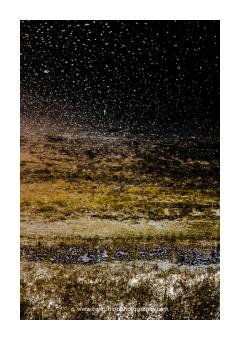
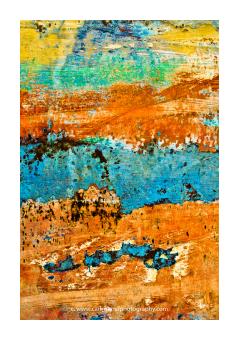
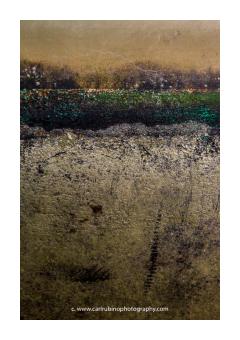
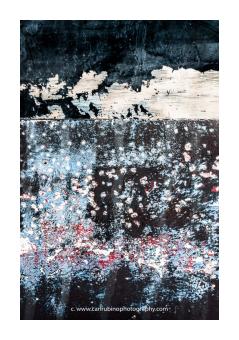

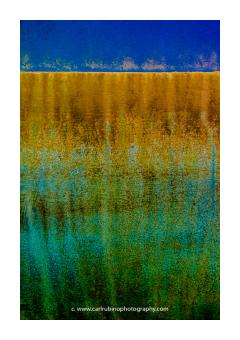
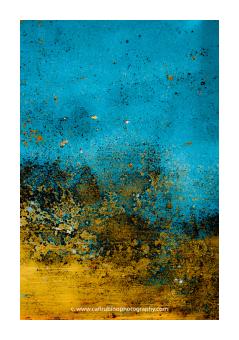
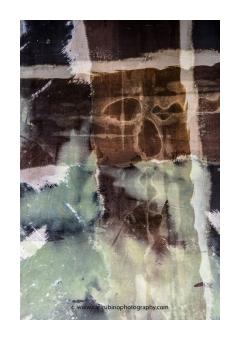
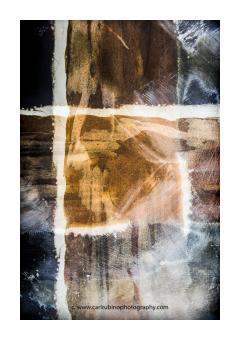
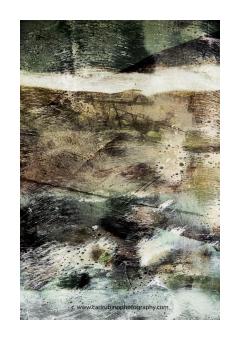
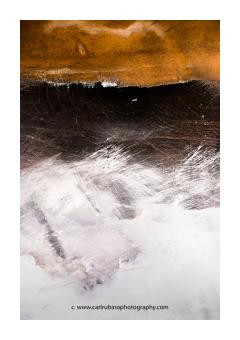
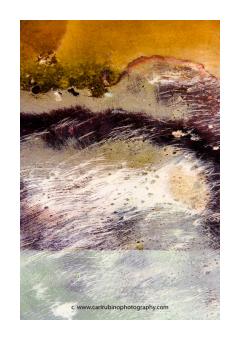
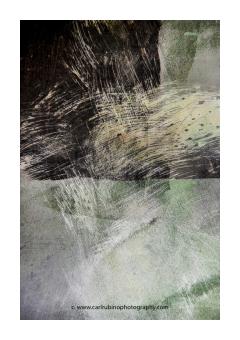
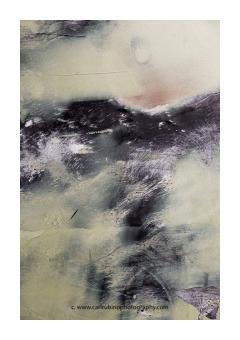
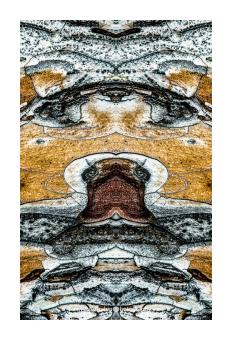

Kate Ruddle
Kate Ruddle is a conceptual fabric sculptor who moved to Vermont to create a sustainable “self-made life” with art at its center.
Drawings are the foundation of her artist practice. She uses drawings meditatively, creatively, and experimentally, using them to plan sculptures and play with ideas. They are an extension of her hand and a way to think. While her sewn sculptures and fabric installations can take weeks to complete, drawings are immediate. Almost everything she creates starts with a drawing or in some way is a drawing.
She loves fabric’s potential for movement and its ability to capture light. She always wanted to make a drawing that “came off of the wall” and fabric is a part of that process. Conceptually fabric is a flexible material: it can evoke the tangible with references to clothing, industry, and history, and it can evoke intangible; from light, to breathing, to air.
Ruddle has a BFA in Painting from Indiana University, Bloomington and an MFA in Sculpture from the San Francisco Art Institute. She has exhibited widely and taught fabric sculpture and drawing as a community educator and an adjunct professor for over fourteen years. More recently she completed a textile residency in Blönduós, Iceland and Vermont Artists’ Week at the Vermont Studio Center.





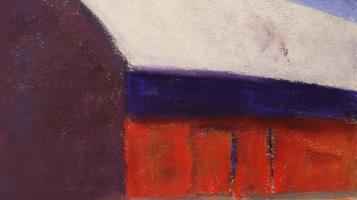
Ken Russack
Ken started his painting career as a freshman in high school under the tutelage of one of his early mentors, Maynard Sandol. He continued to paint and take classes during his underclass studies at Oswego State. He then took a 30 year hiatus, moved to Vermont, raised a family, and never got rid of his paints. One day he was drawn to the idea of plein aire painting and what became a minor obsession of grasping the nuances and complexities of this new found art. His work was supported by several key individuals including Fioanna Cooper, Carolyn Walton and Mark Boedges. The paintings on display today were painted primarily at the Burlington waterfront and in particular the freight yard. I was drawn to this urban landscape and how it subtlety interacts with our daily lives. The train yard offered a bigger than life backdrop which provided me an uncountable amount of opportunities to capture this urban landscape. I also saw the immense presence of the trains and the people that work this business in the heart of our downtown. Ken continues to paint the urban landscape, and the pastoral scenes whenever possible. His style is a compilation of the impressionist slant, with a bit of Hopper thrown in for good measure. Ken Lives with his wife and best critic, Janice Lara in Burlington Vermont. He has 3 daughters: Chloe, Vanessa and Charlotte and two grand children, Rowan and Hazel.
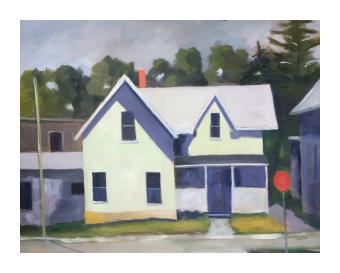
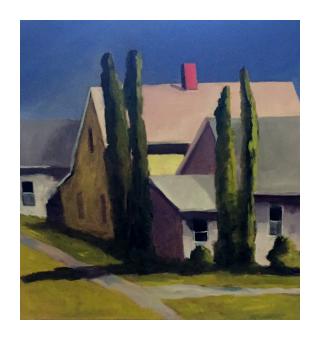
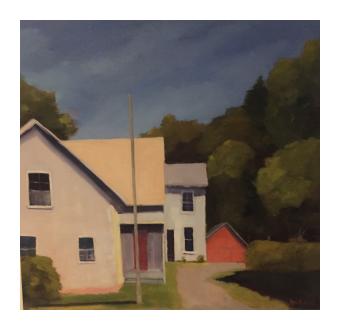
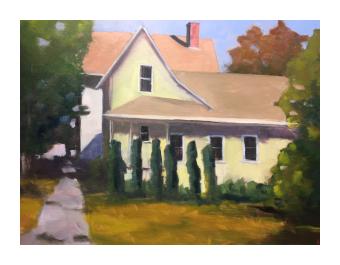
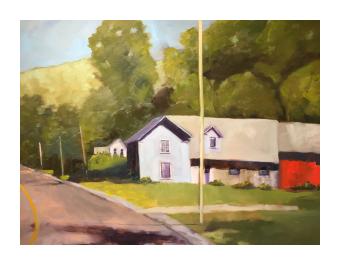
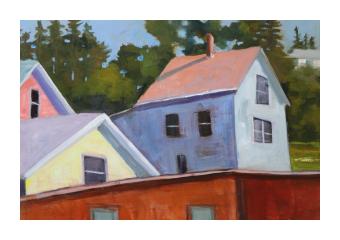
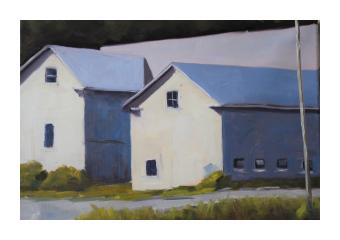
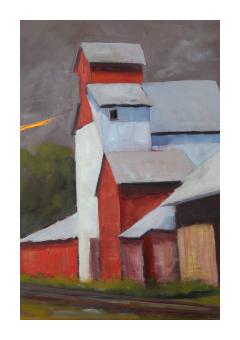
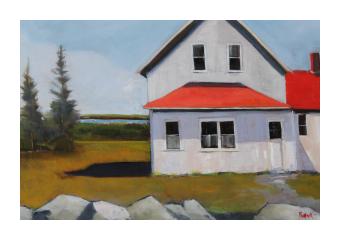
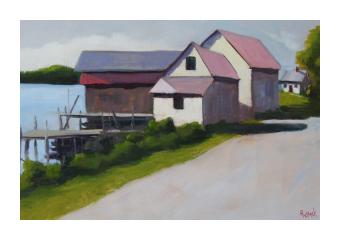
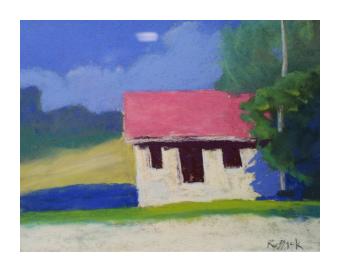
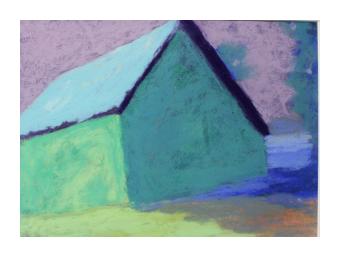
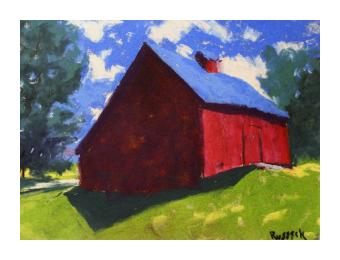
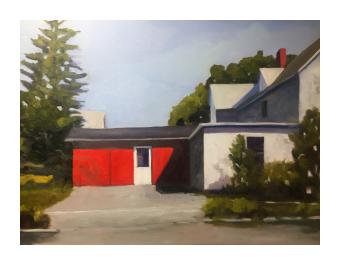
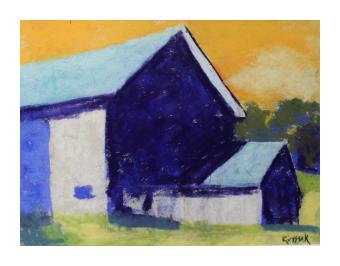
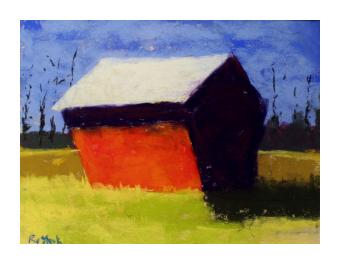
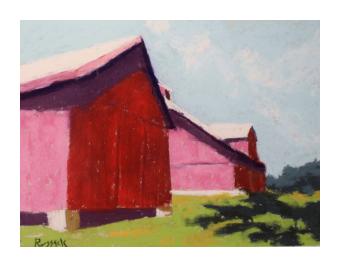
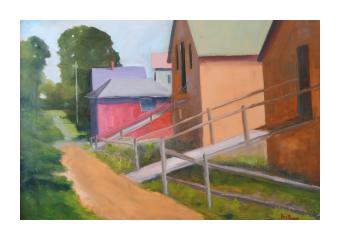
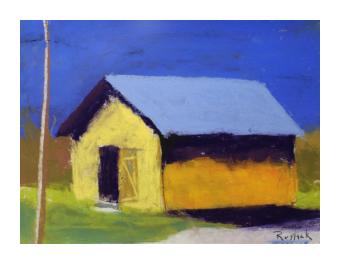
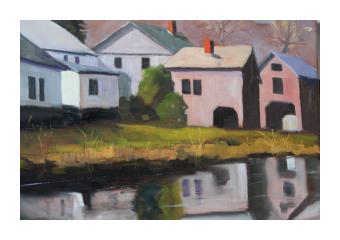
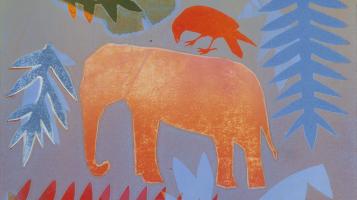
Erika Lawlor Schmidt
Erika grew up in a midwestern town located on the shore of Lake Michigan, north of Chicago. Throughout her youth she explored the ravines and woods by walking, became an avid beach comber and began making art objects from sticks, stones and other curious things that she found. Erika was raised in a family of theater artists and musicians. She was fortunate to receive her formal training in dance and music from several renown teachers in Chicago. Erika is married to Gary Schmidt, an accomplished pianist and composer. They have been collaborating for many years as artists and entrepreneurs and are the parents of 2 grown daughters. Erika's work as visual and performance artist is deeply shaped by investigations in to the relationship between Eastern philosophies /metaphysics and quantum physics. She received her M.F.A. from the University of South Florida in Tampa, FL.where she founded Vital Spark Performance Art Group ( now Vital Spark North.) an interdisciplinary performance ensemble that has traveled to major U.S. cities and throughout Europe. Erika's prints and collages are included in numerous collections and are widely shown in national juried and invitational exhibitions including: The Contemporary Art Museum , Tampa, Fl., Cork Gallery at Lincoln Center , New York, Polk Museum of Art, Lakeland, FL. Thompson Gallery, Lincoln, Mass. BIgTown Gallery, Rochester, Vt., EO ART LAB, Chester, Conn. ART CHICAGO, Allyn Gallup Contemporary Art, Sarasota, FL., Slater Museum in Norwich, Conn. Baymaro Studio, Duxbury Mass., NEW AMERICAN PAINTINGS, Burlington City Arts.
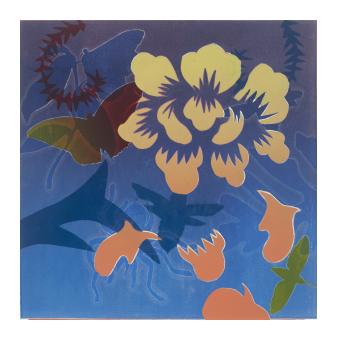
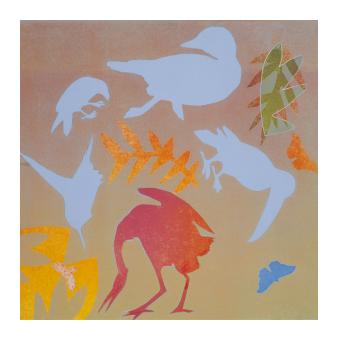
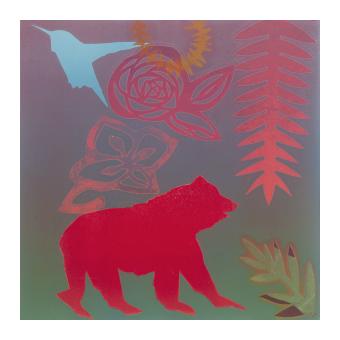
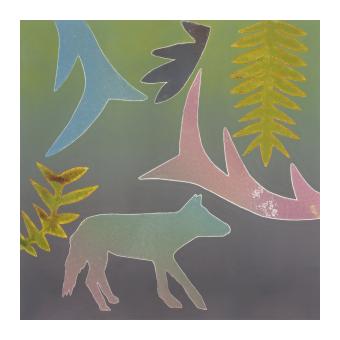
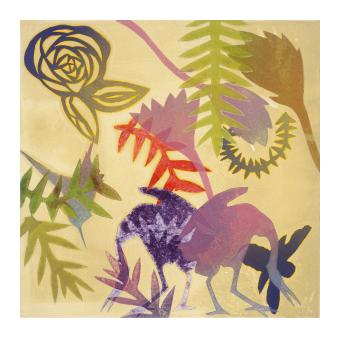
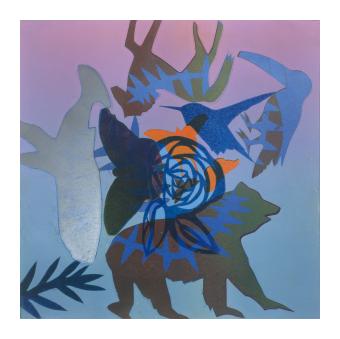
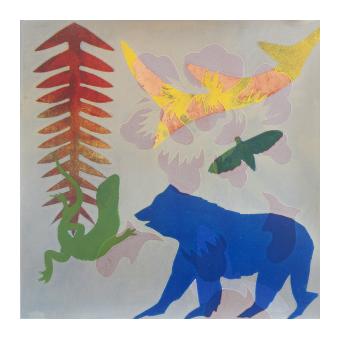
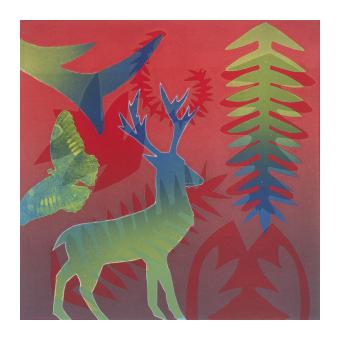
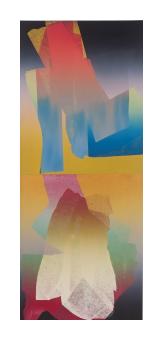
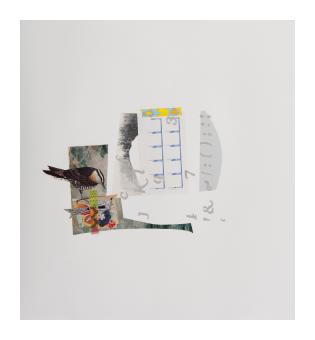
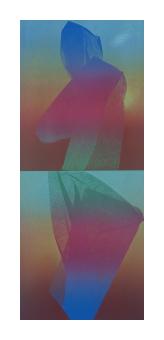
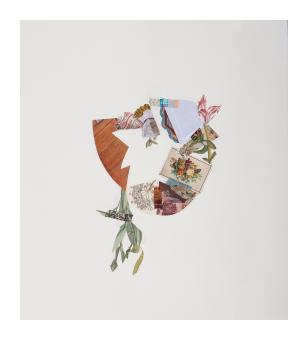
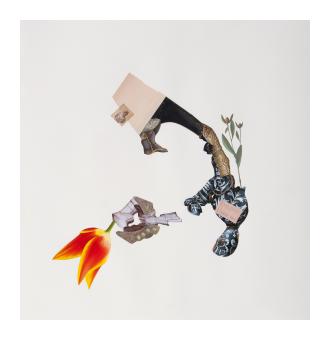
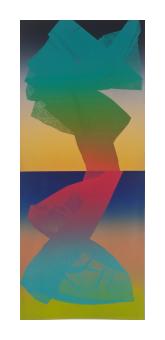
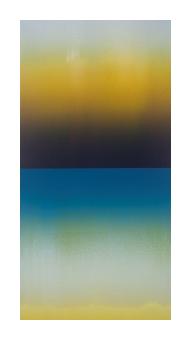
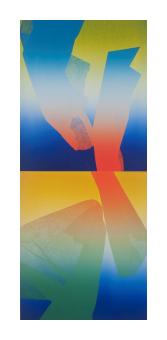
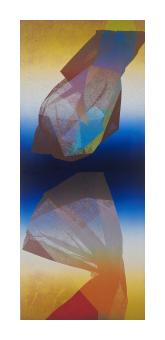
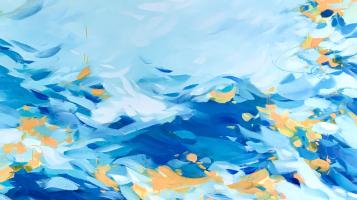
Cameron Schmitz
Cameron Schmitz grew up in Greenwich, Connecticut and spent idle time in her youth drawing. Encouraged by two artistic parents, including her mother who is also a painter, she learned at a very early age the joy and satisfaction of participating in the visual arts. Schmitz holds a Master of Fine Arts in Painting from the Pennsylvania Academy of Fine Arts and Bachelor of Fine Arts in Painting & Drawing from the University of New Hampshire, in addition to studying Art and Art History at Studio Arts Center International in Florence, Italy. Following a month-long artist residency at the Vermont Studio Center in 2006, Schmitz moved to Vermont after discovering Vermont's rugged landscape to be uniquely inspirational. Now located in the Brattleboro area, Schmitz actively exhibits her work regionally and nationally. Her work has been featured at Fitchburg Art Museum's biannual exhibition, Ne England/New Talent, Green Mountain College, Kyoto Seika University in Japan, Emory University, Northern Arizona University Art Museum, and Rogue Space in Chelsea, New York. Her work is represented by The Drawing Room Art Gallery in Cos Cob, CT and Furchgott Sourdiffe in Shelburne, VT, and she is an artist member of the Copley Society of Art in Boston. In addition to her painting practice, Schmitz is also the Gallery Curator of The Drawing Room Art Gallery and teaches painting at the River Gallery School in Brattleboro, VT.
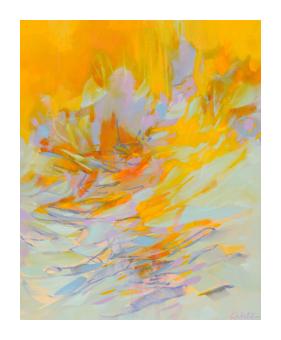
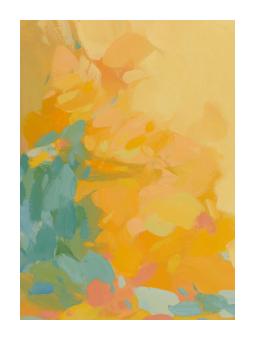
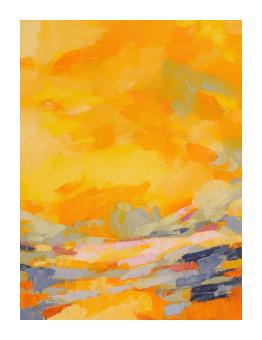
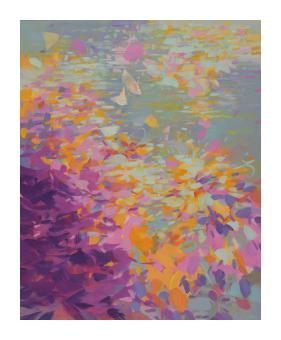
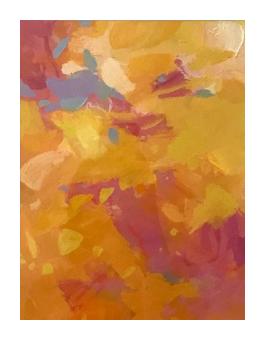
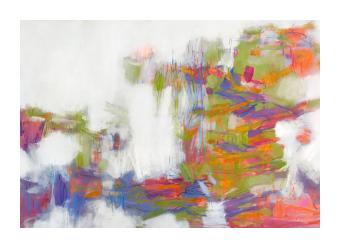
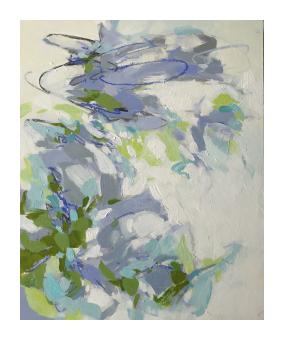
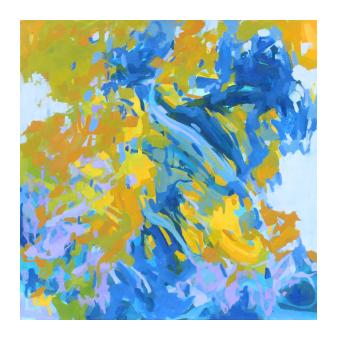
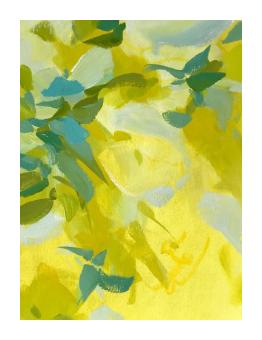
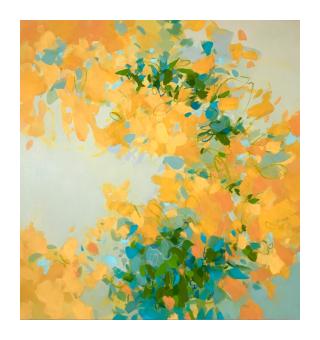
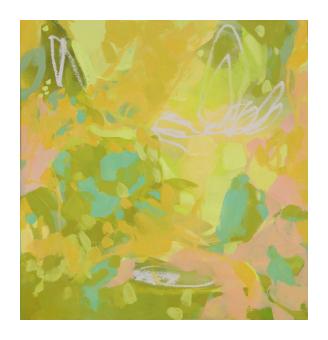
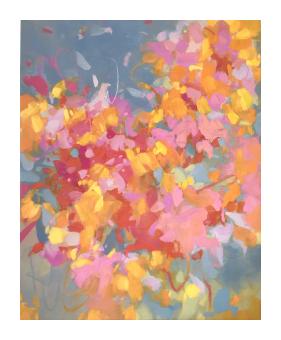
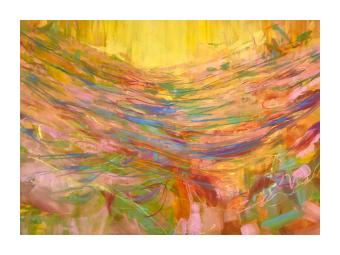
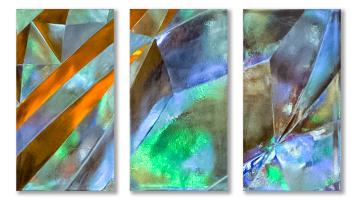
Jeff Schneiderman
I am a professional photographer specializing in portrait and fine art photography. I have been taking photographs for over 35 years, traveled extensively throughout the U.S. and the world and have made Vermont my home for the last 30 years. In the mid 1970’s after returning from a tour of duty in the pacific, my brother Dave gave me my first camera, a Canon AE-1 35mm SLR with a 50mm lens. I expanded my kit with several Nikon SLR’s including the F, FM2n, F3HP, F5 with additional lenses. While working at the Grand Canyon, Yosemite, Hawaii and San Francisco, I experimented with different films and techniques. I found that I preferred the look of Fuji slide film for landscapes/closeups and Fuji high speed print film for astrophotography. Many of the images in my gallery are shot with these films. In 2006 I bought my first digital camera and was at first, underwhelmed with the quality. But I did appreciate the benefits - instant gratification, easier to obtain the proper exposure, more latitude and less cost in processing, and no more boxes of slides and negatives! As the cameras matured, the quality and resolution finally exceeded slide film and I was on the way to 100% digital. My current digital cameras are a Nikon D4s, Fujifilm X-T2 and X100T.
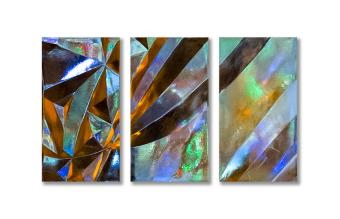
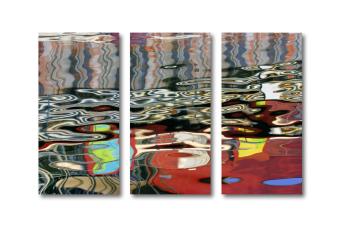
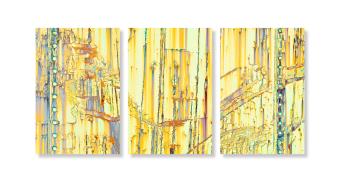
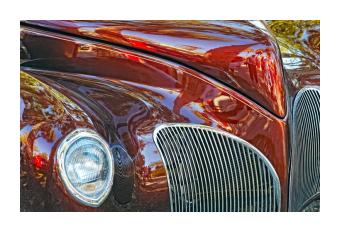
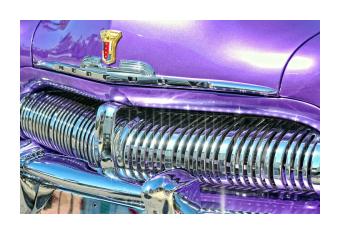
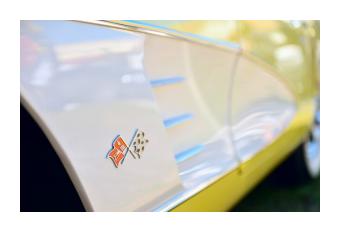
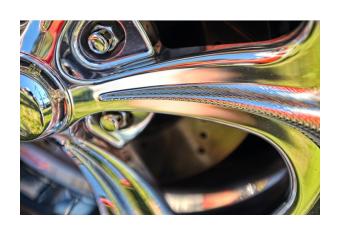
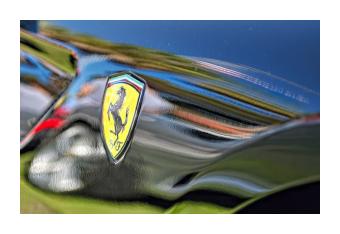
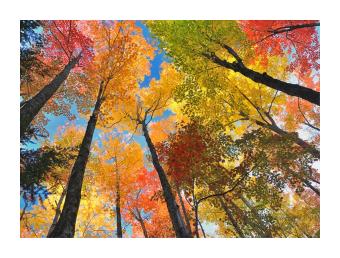
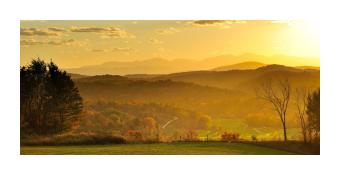
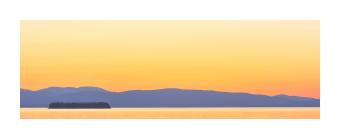
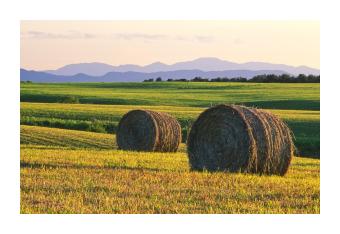
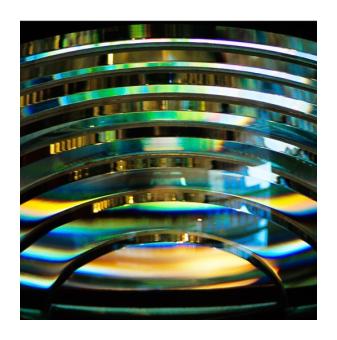
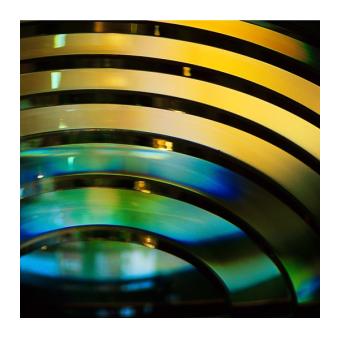
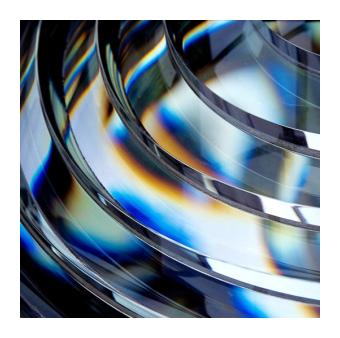
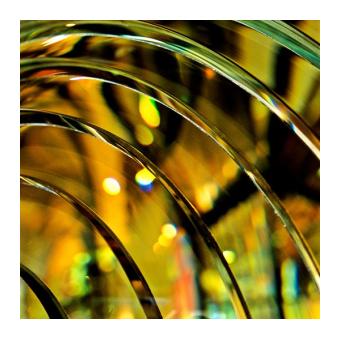
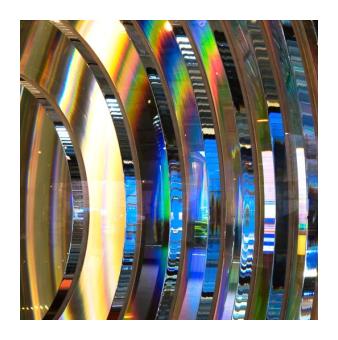
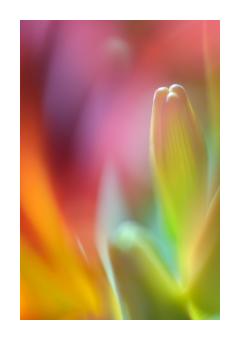
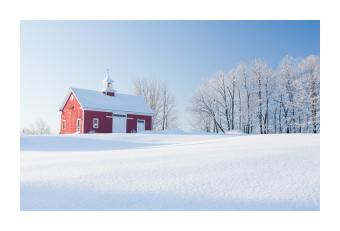
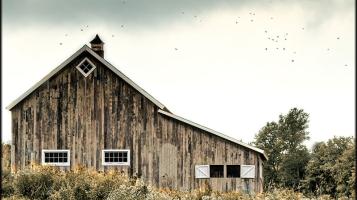
Marcie Scudder
Marcie Scudder’s artist's journey began almost two decades ago as a means of slowing down and recording the world thru her camera’s lens. As a self-taught photographic fine artist, writer and yogini – she believes in the transformative healing powers of daily practice as a means of connecting to the spirit that resides within. By yoking together the ancient teachings of yoga with her passion and love for the animal and natural world, Marcie’s art acts as a visual and verbal expression of simplicity, silence, solitude and self. Like life itself, her art is an ever-evolving process. She likens it to a vinyasa yoga practice, a continuous connection between movement and breath. Currently, Marcie lives and works in Stowe, VT. From her treetop studio, she finds inspiration in the changing seasons and majestic views of the mountains.
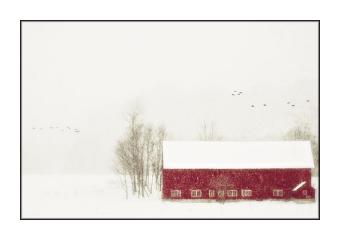
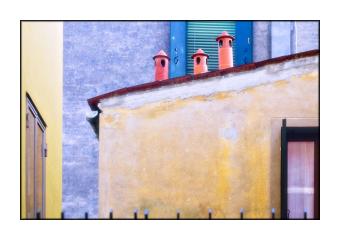
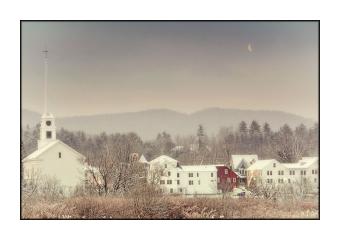
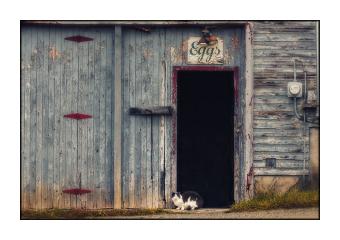
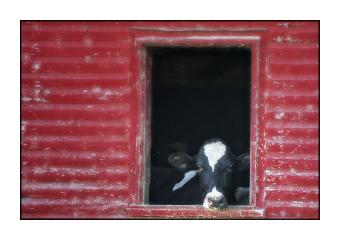
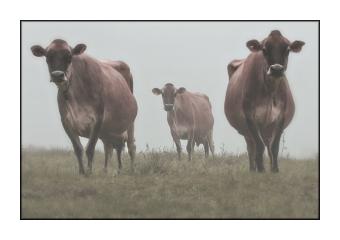
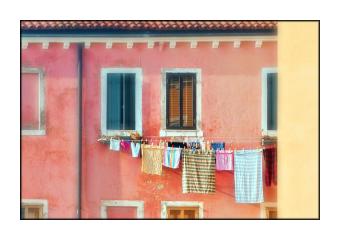
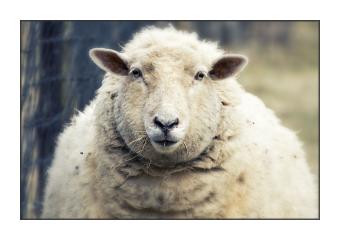
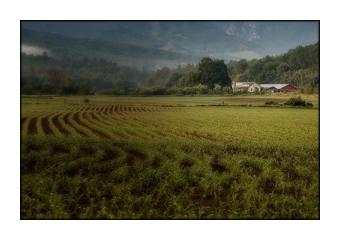
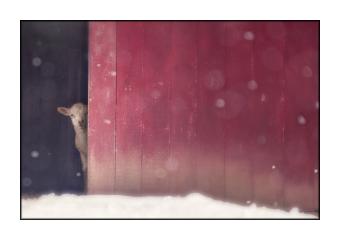
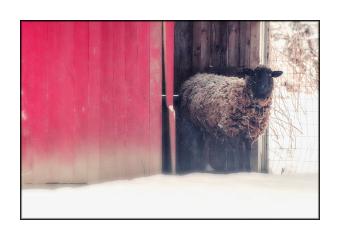
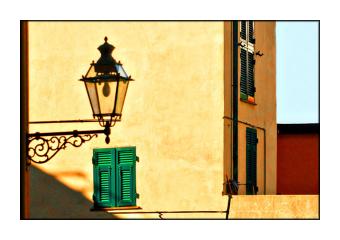
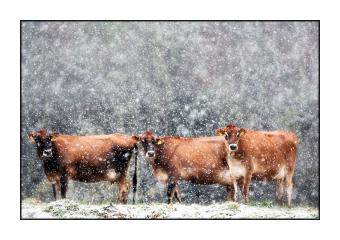
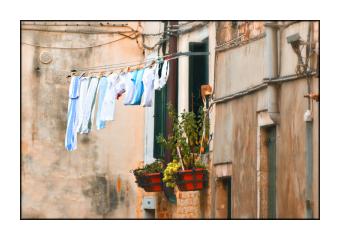
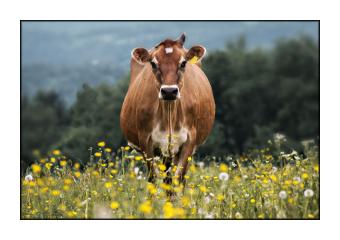
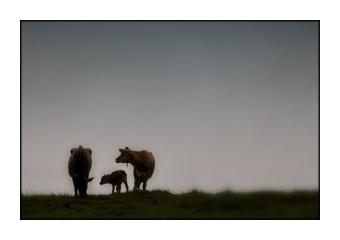
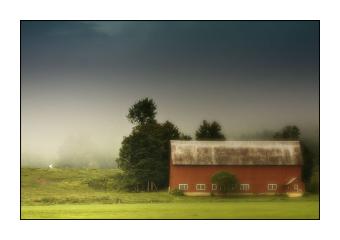
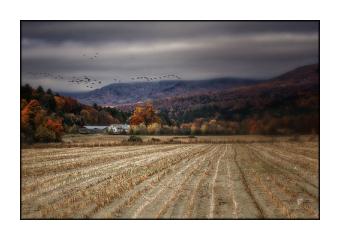
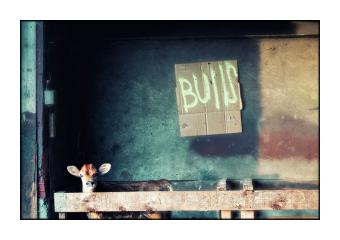
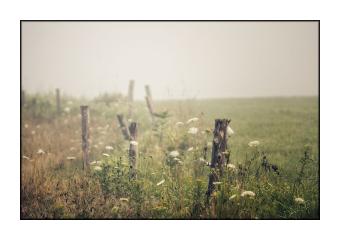
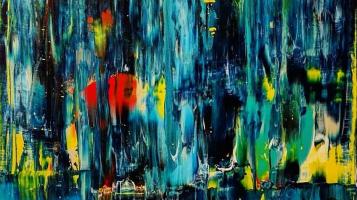
Stephen Sharon
Steve Sharon is an abstract painter, musician and mixed media artist living in Burlington, VT. He went to school for music at Goddard College in Plainfield, VT, and has been a musician since the age of 14. He started painting six years ago when he decided to shift some of his focus into making visual art. His paintings involve a deep and heavy process -- a method that he discovered through chance and through the drive of using the art of improvisation to create. The artist in Steve wants the viewer to look upon the paintings and come to their own conclusions as to what they see. The prices of Steve's paintings are geared toward being attractive for everyone. He believes that owning a painting and having it in one's home for one's well-being is more important than how much one has paid for it. The value of the paintings will change over time, but the relationship between the viewer and the painting only grows. Steve's work has appeared in a growing number of professional gallery shows; and has completed private commissions a many customers.
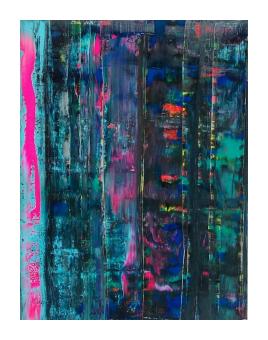
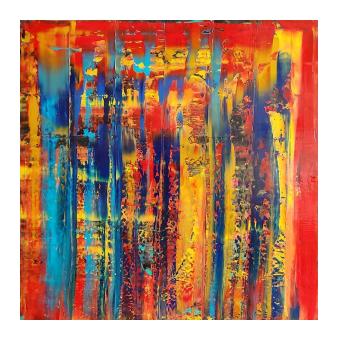
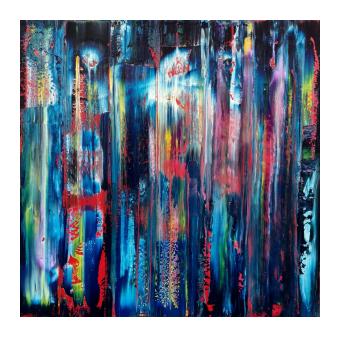
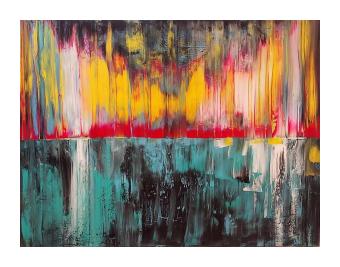
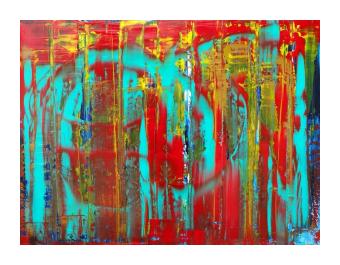
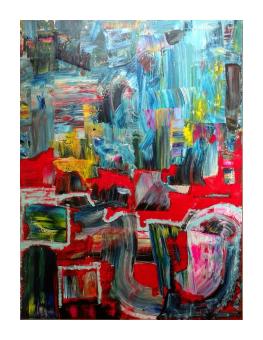
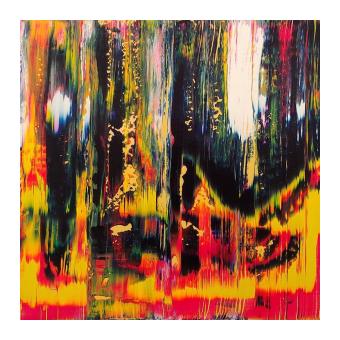
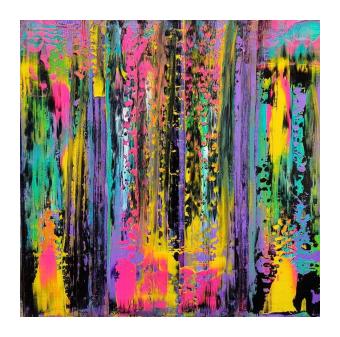
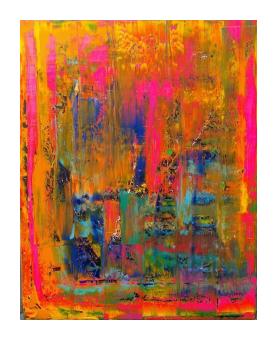
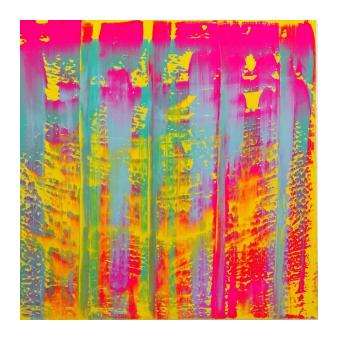
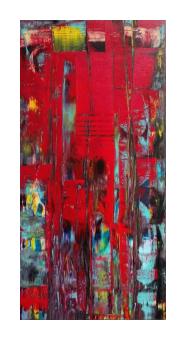
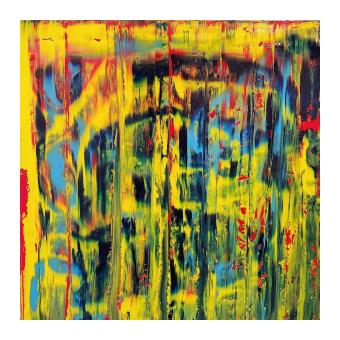
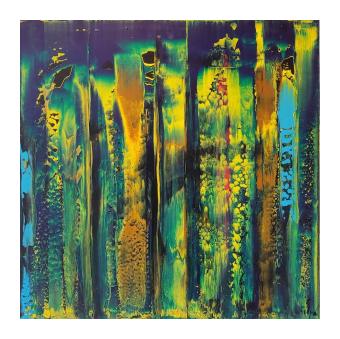
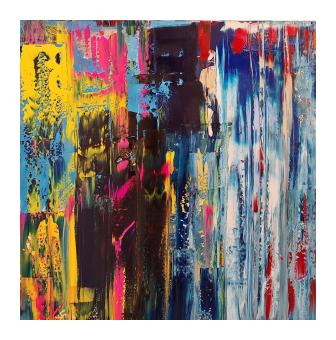
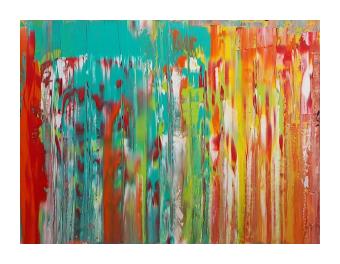
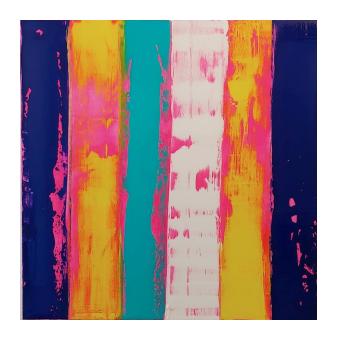
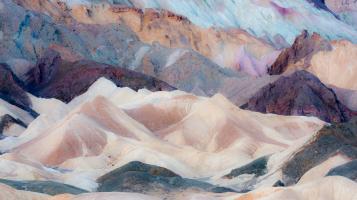
Sandra Shenk
I have always been drawn to the interplay of light and color; the special qualities that come with various weather conditions and times of day and night; the excitement of viewing an image that captures those moments. Photography for me expresses a moment of awareness or delight connected to the natural world around me. It becomes a way to explore nature’s mystery and beauty. I like to think of photography as painting with light. I use many techniques to express what I see including montage, camera movement, multiple images, long exposures and abstraction. After retiring from my job as a school counselor for 25 years, I studied at the Rocky Mountain School of Photography in Missoula, MT. I have taken workshops with Freeman Patterson, Kathleen Carr, Eddie Soloway, Brenda Tharp and Nevada Weir, all photographers with inspiring photographic vision. I have displayed my images in various galleries, stores and restaurants in northern Vermont.
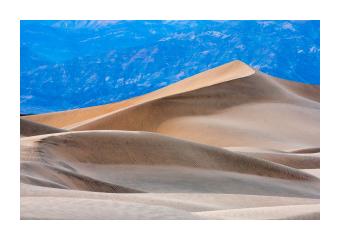
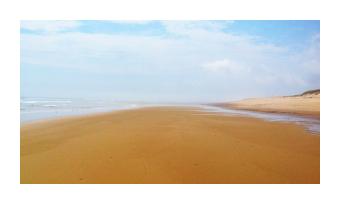
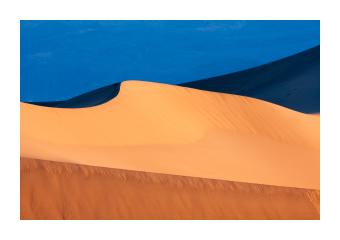
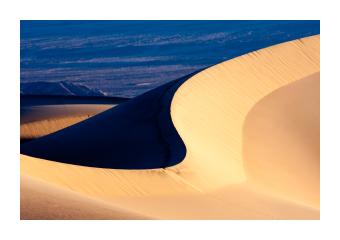
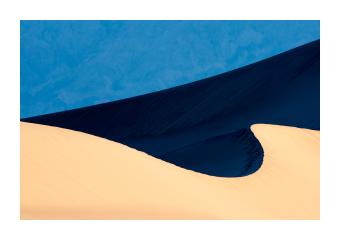
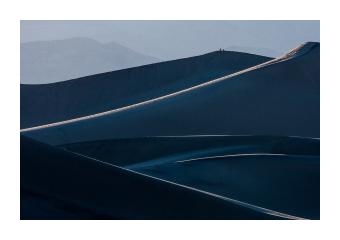
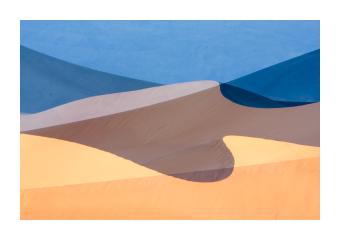
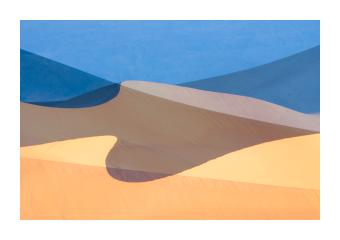
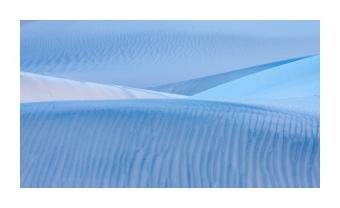
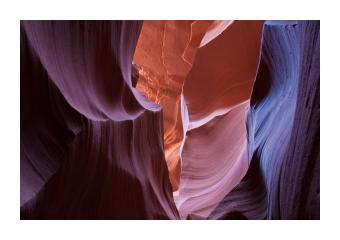
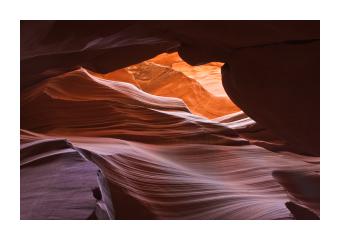
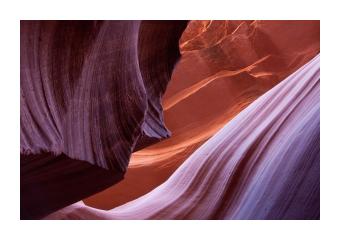
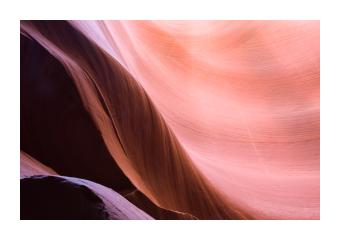
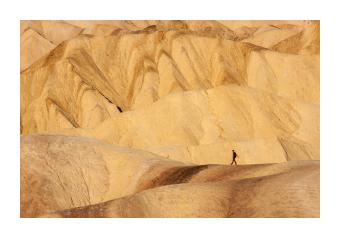
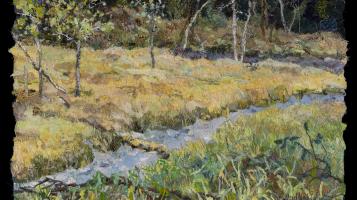
Dianne Shullenberger
Dianne Shullenberger creates intimate fabric landscapes, sculptures and colored pencil drawings. In her fiber artwork, Dianne uses hundreds of pieces of fabric and fiber scraps to convey the random beauty and mystery of nature. Her sculptures reflect the grace of natural shapes while incorporating elements such as feathers, rocks and sticks. A passionate outdoors woman, Dianne’s art reflects the places she loves. Numerous museums and galleries have exhibited Dianne’s work in both solo and group shows. She has been recognized with awards and feature publications. Her work is regularly commissioned and displayed in corporate, museum and private collections. Of particular note are: Vermont State Governor’s Gallery featured artist 2014; Winner-2013 Loeschner Art Competition Fredrik Meijer Museum, Grand Rapids MI; Art Institute of Chicago’s permanent collection The Woods, fabric collage, 1996; and Art Institute of Chicago, Contemporary Fiber Art of the 20th Century, 2009 Dianne has a passion for artistic re-use. She grew up surrounded by her mother’s fashion design work. Today, her collection of fabrics speaks of this history and provides a treasure trove for new works. A single collage may have hundreds of fabrics, including old ties and scarves, which Dianne manipulates by wrinkling, coiling, pulling threads and cutting through layers, constantly altering the fabrics. The images in her fabric collages are developed with small individual pieces that are meticulously pinned in place, then, top stitched with different colored threads. She machine stitches the pieces to the background, varying stitch patterns, techniques and colors to subdue shapes, soften edges and clarify the design. Dianne’s studio and the Shullenberger Gallery are located in Jericho Vermont. During the summer, she works at her tree house studio on the shores of Lake Michigan.
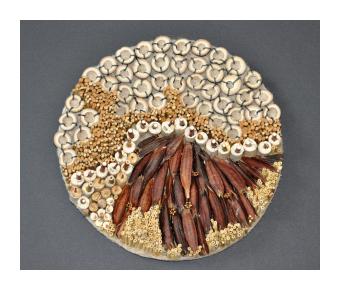
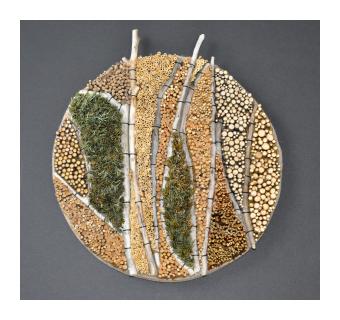
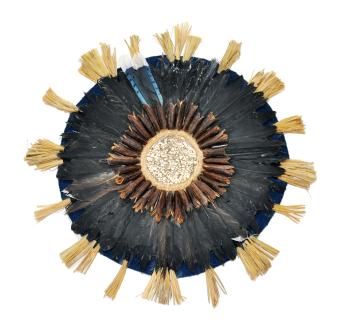
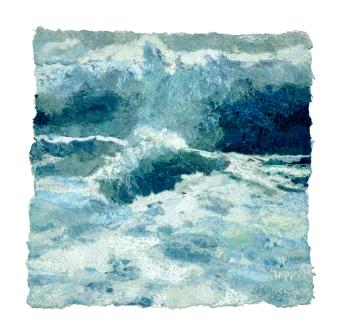
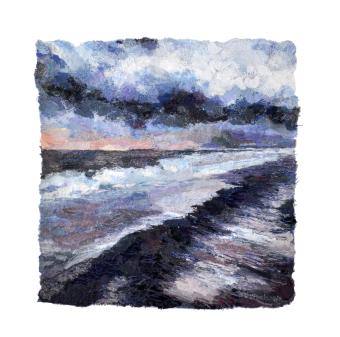
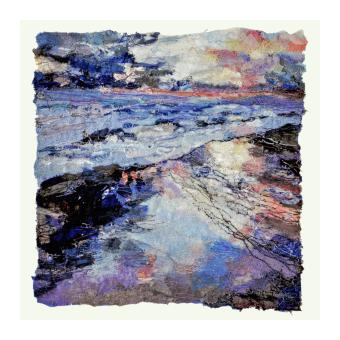
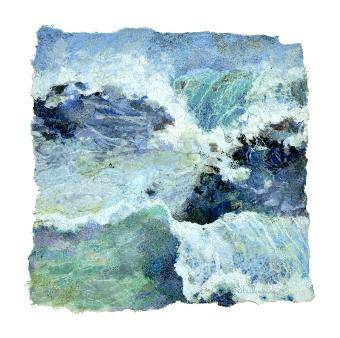
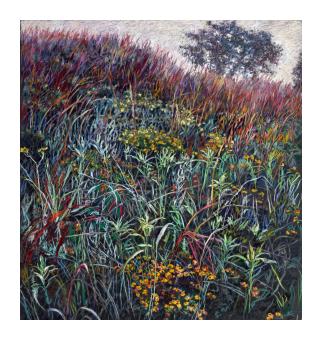
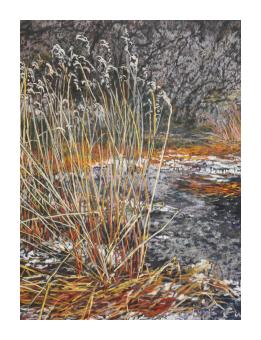
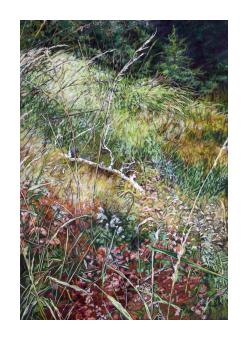
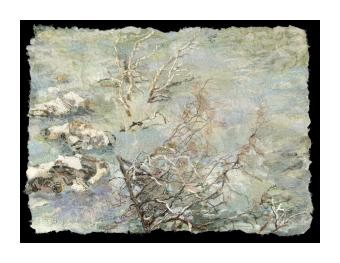
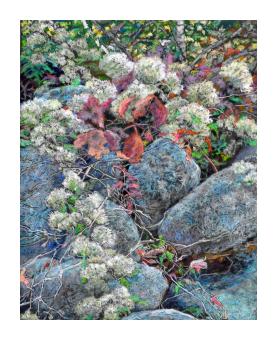
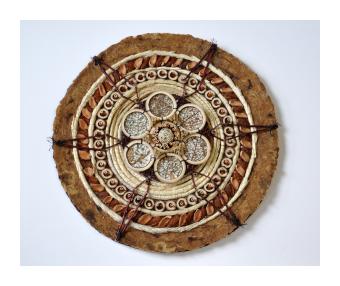
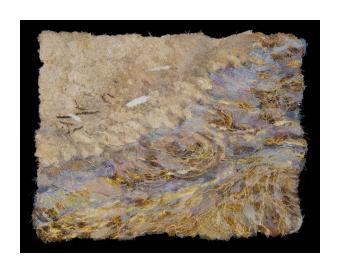
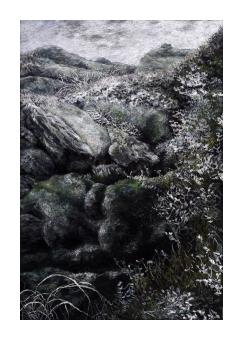
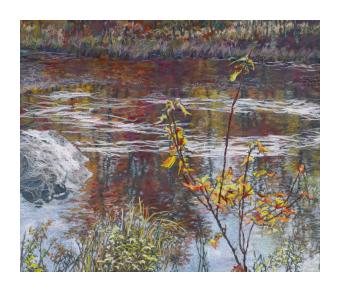
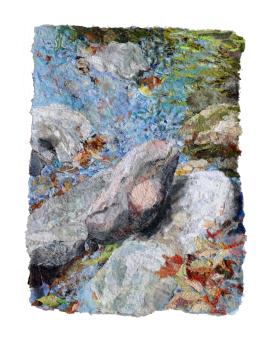
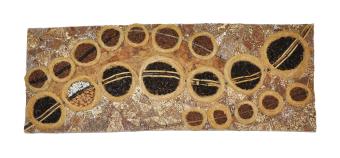
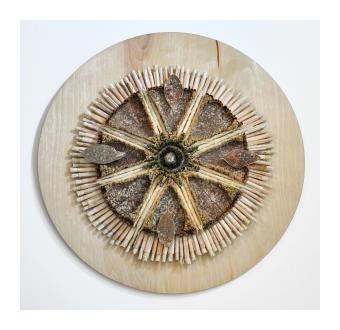
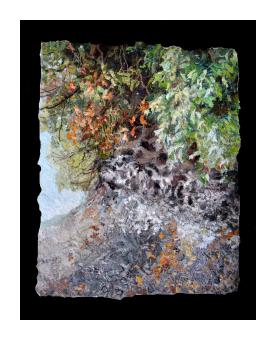
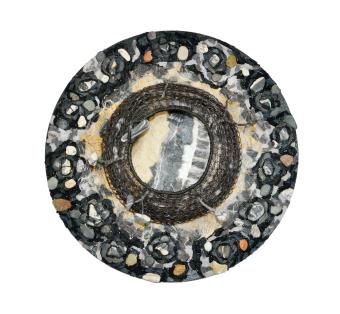
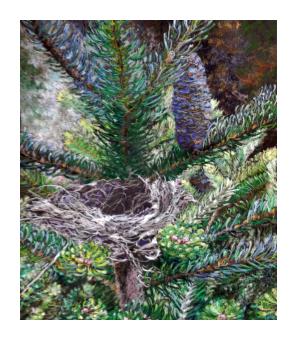
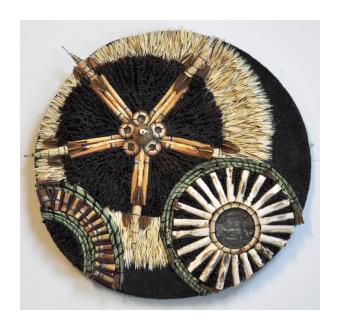
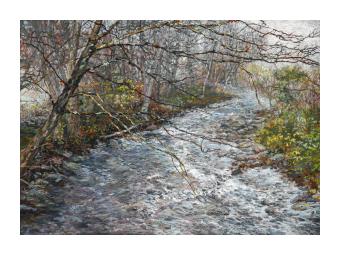
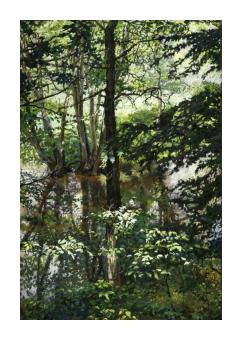
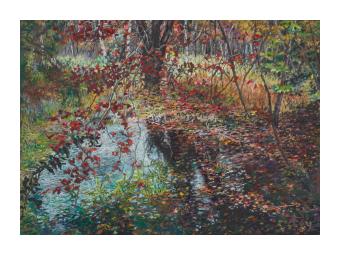
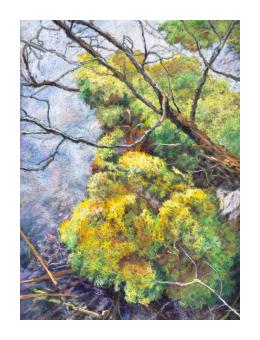
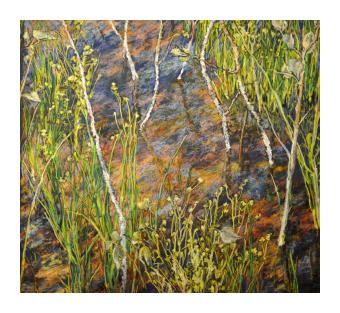
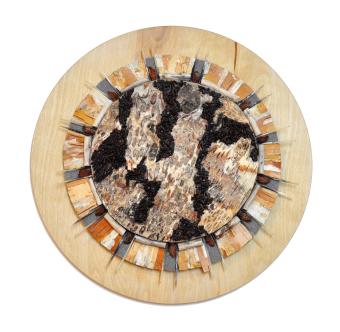
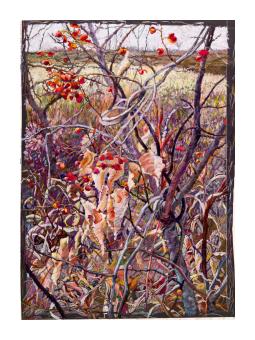
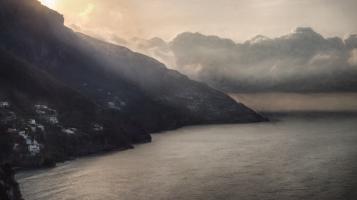
Mike Sipe
The Lake Champlain region is my unparalleled muse; the beauty of the lake, skies, mountains, valley and the people enjoying its splendor. I don't have to travel the world to find world-class beauty; it is here, in my own back yard. My ability to find the area's essence is evolving and it is exhilarating to me. I love to capture vistas with just the right light accenting a center of interest, the affects of natural elements and motion, and when I find a wide tonal range, the elegant impression of black and white. I have been a serious amateur photographer for over thirty years, gracing personal walls with images that have staying power. My objective is using natural light in capturing gifts of images, by being in the right place at the right time with the right equipment, which evoke a magical light and an interesting confluence of elements. Since my retirement from private practice as a Life-Wealth Planner in 2013, and completing the publication of my gift edition of ADVOCATE PLANNING, To Do What You Love To Do, I am driven with my passion for the Lake Champlain region to pursue photography full time. My goal is to offer carefully selected, large format prints to an audience that is also captivated by the beauty of the region and would like to enhance their home or office with a high quality print that reminds them of the exquisiteness just outside our doorsteps. The Lake Champlain Photo Project calls for a book, which will present my favorite images of the region, while connecting with people and stories of experiences with the land and water. Trevien Stanger, a talented writer and environmentalist has agreed to join me in the production of a fine-art publication of LAKE CHAMPLAIN, our basin of relations, with a focus on Lake Champlain and it’s watershed, and the relationship we have with nature, particularly water. My collection of visual portrayals of the region will be combined with stories that enchant the viewer, illustrating the essence of the Lake Champlain region: water, land and people.
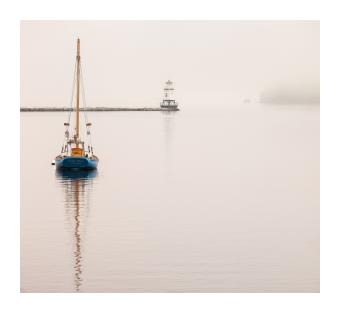
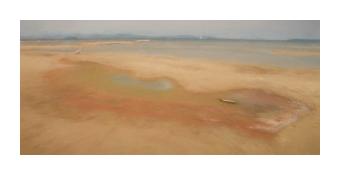
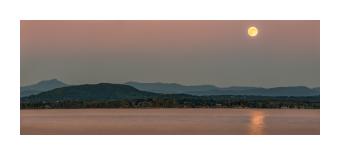
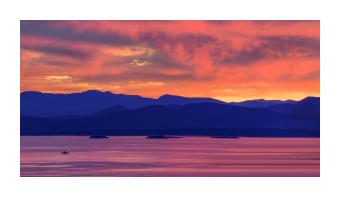
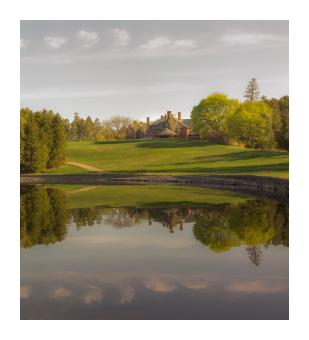
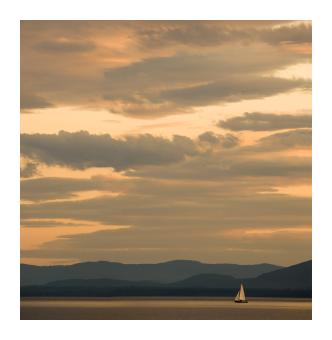
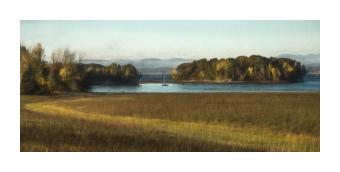
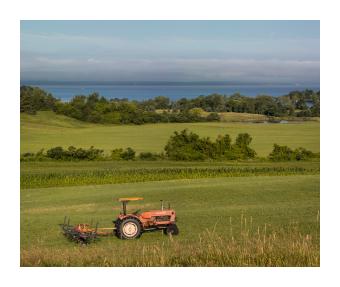
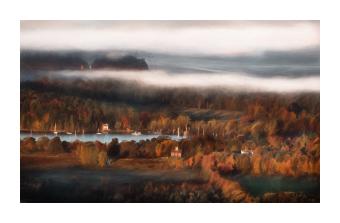
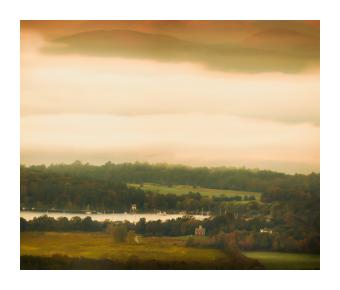
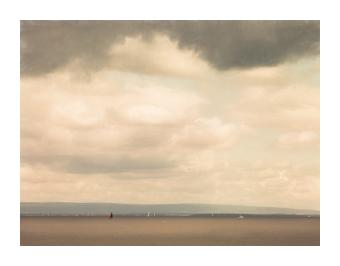
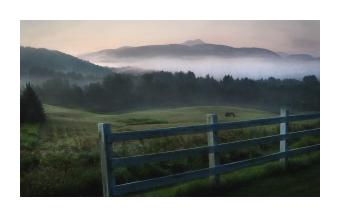
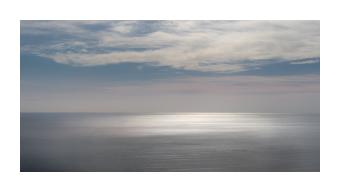
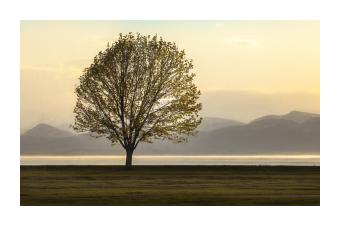
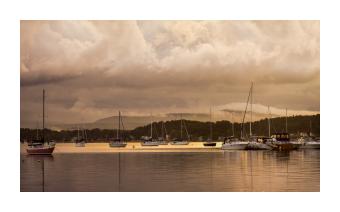
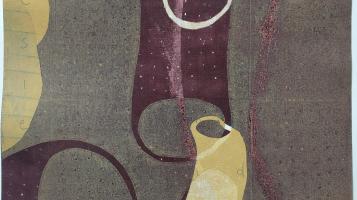
Susan Smereka
Smereka’s media include; installation, printmaking, photography, video, bookmaking and collaborations. Originally from Toronto, she has been a Vermont resident since 1989 and currently lives in Burlington. Her work has been featured in numerous solo and group shows throughout the region: solo exhibition of monoprints and paintings at the AVA Gallery, Lebonon, NH; installations and groups shows at the Flynndog, Burlington, VT; solo show of paintings at Rhombus Gallery, Burlington, VT; paintings at the Firehouse Gallery, Burlington, VT. Smereka has been the recipient of numerous grants and residencies: Development Grant from the Vermont Arts Council, 2009; Creation Grant from the Vermont Arts Council, Rotary International Group Study program in India, 2004; Kittredge Foundation Grant, 2002; Incentive Grants from the Vermont Arts Council, 2001 and 2002; three month residency in Taos, New Mexico, from the Helene Wurlitzer Foundation, 1998 and 2008; and a three month residency at the Vermont Studio Center, 1996.
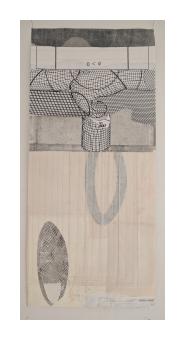
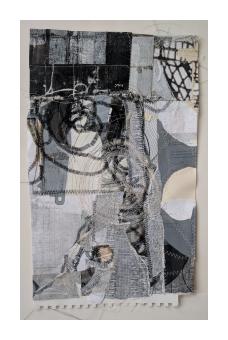
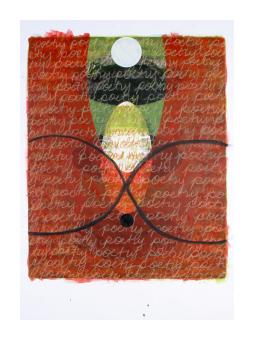
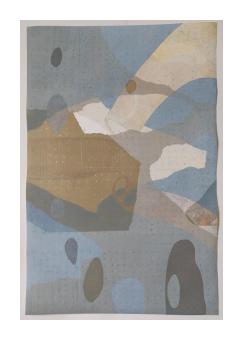
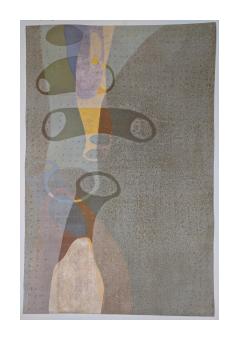
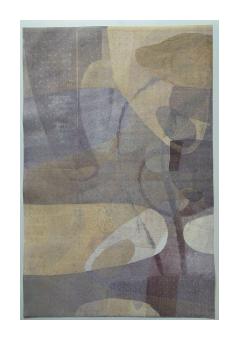
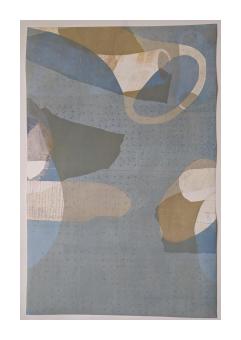
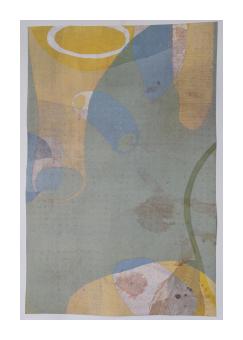
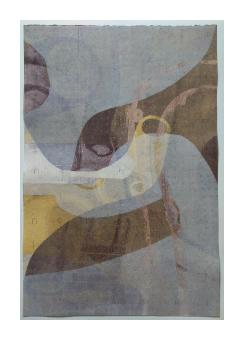
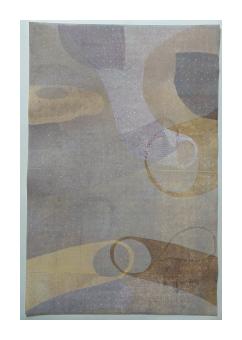
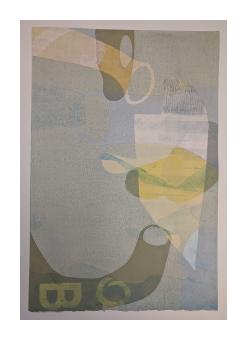
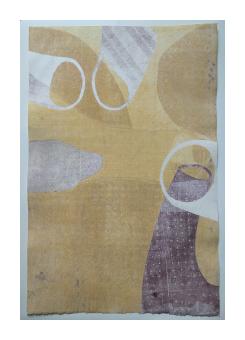
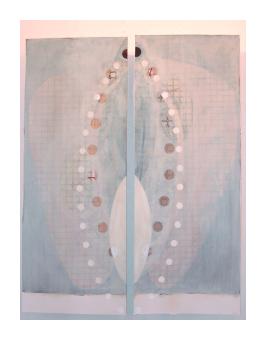
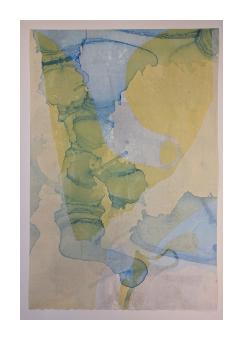
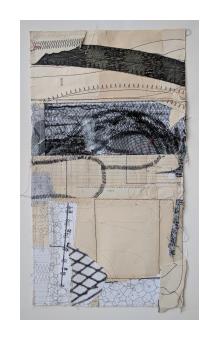
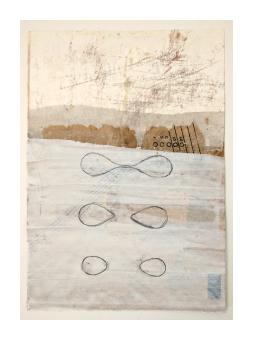
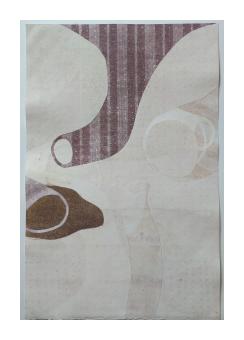
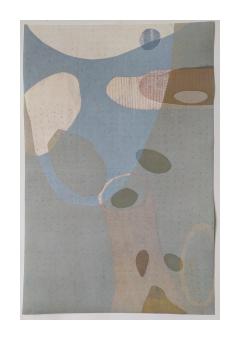
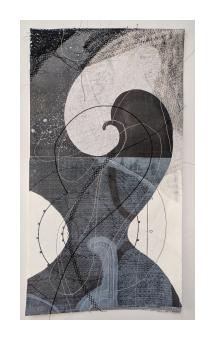
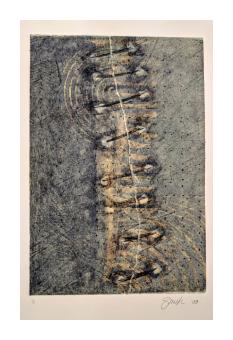
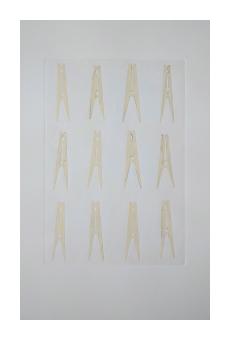
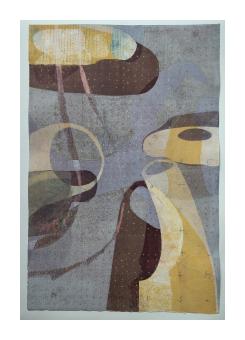
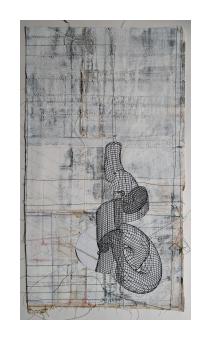
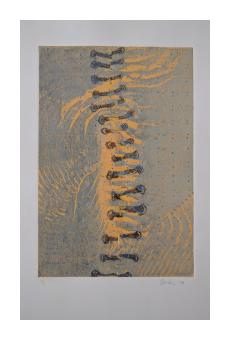
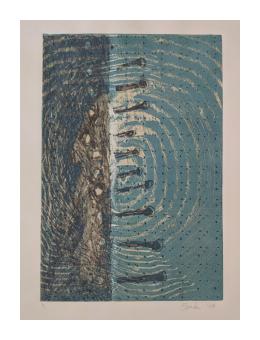
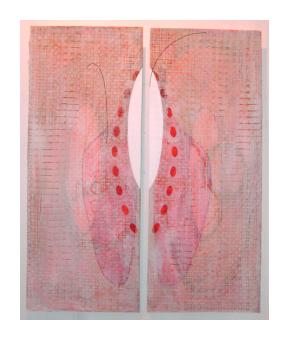
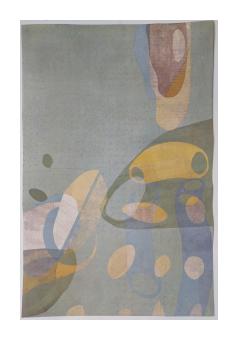
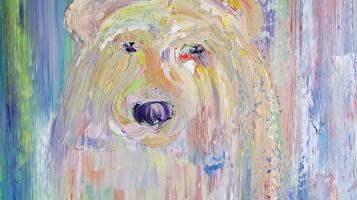
Jesse Snyder
Relatively new to the Burlington art scene, but no stranger to traditional art, Jesse Miles Snyder aims to deliver a fresh take on art in Vermont and goes well beyond Champlain Basin iconography to do it. With a portfolio full of technicolor animals, mildly disturbing anxiety paintings, gleefully fornicating food products, a lot of Jesse’s work walks the lines between gruesome and beautiful, and funny and sexual. He likes to let the viewer decide where his work lands in the end. When he’s not up for blurring the lines of decency, he’s often inclined to simply paint cute or majestic animals, as he finds the subject therapeutic.
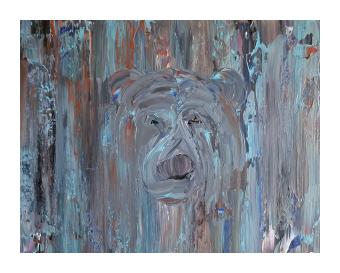
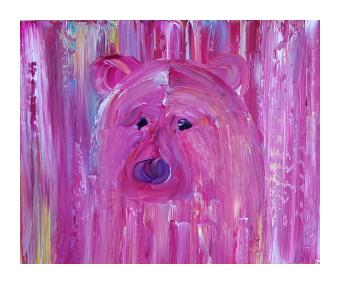
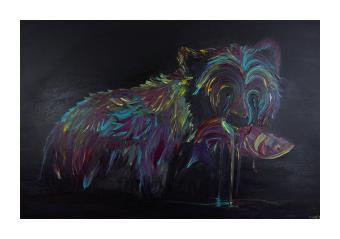
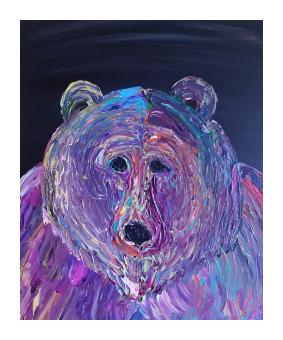
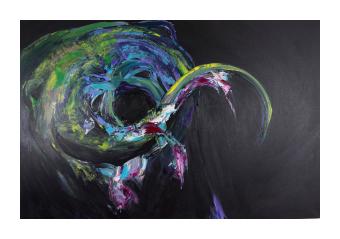
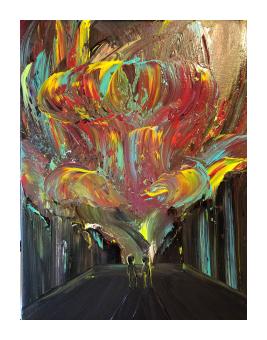
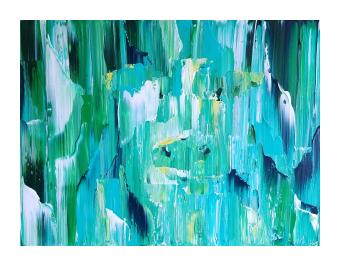
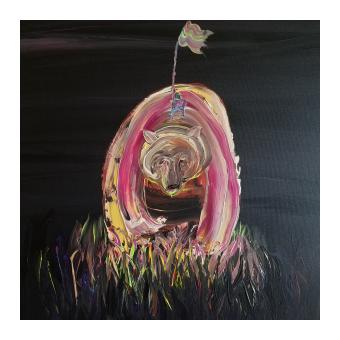
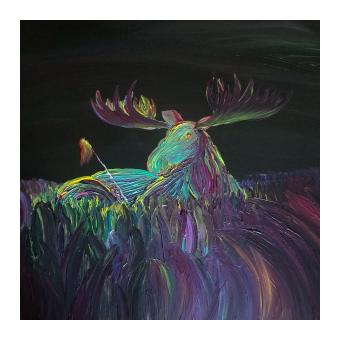
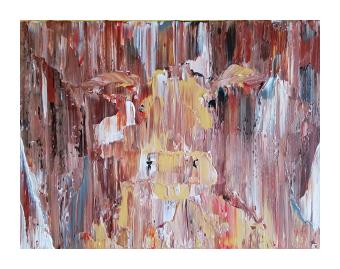
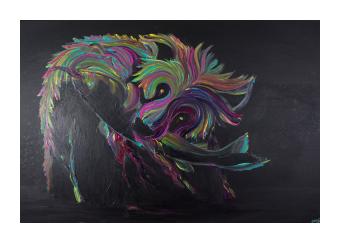
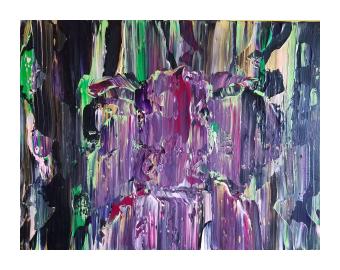
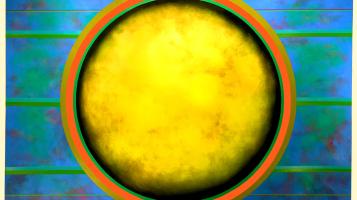
Sandy Sokoloff
Beliefs: I don’t believe in G - d. I believe in divine inspiration. Sephirot (The Quabalistic Spheres): I am not an observant Jew but have been strongly influenced by my cultural heritage. As a child, I loved to draw and color but early on I was told, “you may never create an image of G - d”. Still, Kabballah describes Sephirot as the manifestations of G - d th at allow Him to appear in both the metaphysical and physical universe. Archangels (as referred to by the Zohar, The Book of Splendor): Isaac Luria explains in his writings that angels are energies formed by the deeds of people. When someone is occupied i n acts of creation, the breath that leaves the mouth becomes a vehicle for these angels – through which they may reveal themselves. I paint this paradox: an image that both appears and does not appear. Emanation: My work had been exhibited in New York and Boston beginning in the 70’s and I taught at Wellesley College and Boston University during that period. The ‘Emanation’ exhibition at The Brattleboro Museum in Spring, 2019 was my first since the early 1990’s. I’ve taken these years to work in isolati on and explore a developing interest in spirituality. Now I know that Art is essential and is the response to our mortality.
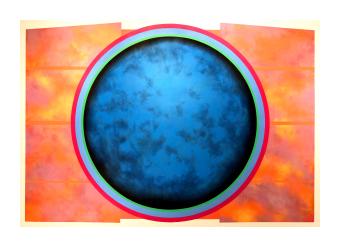

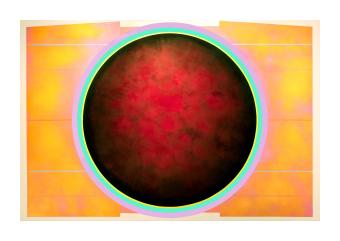
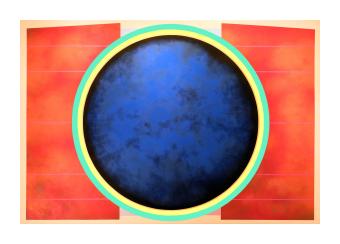
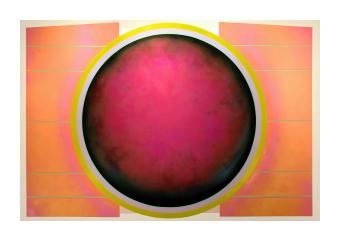
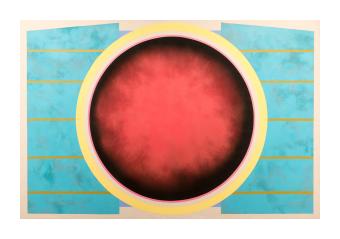
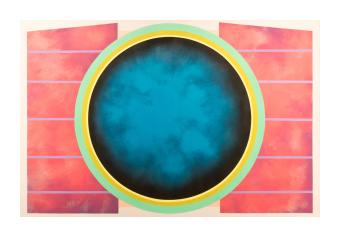
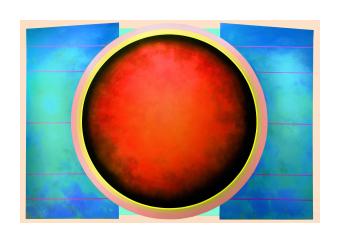
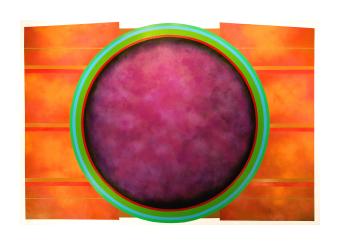
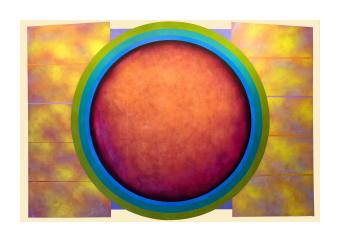
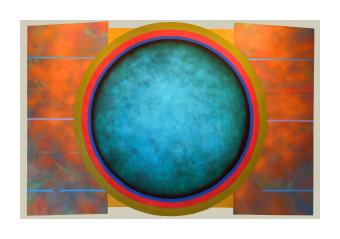
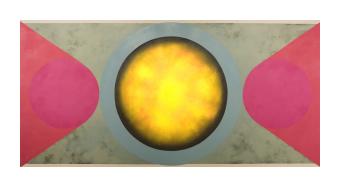
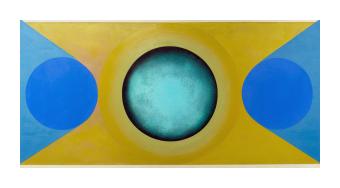
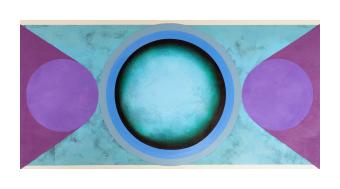
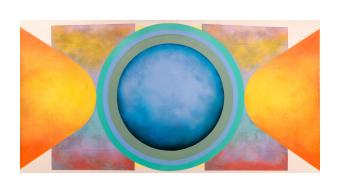
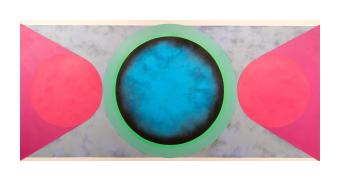
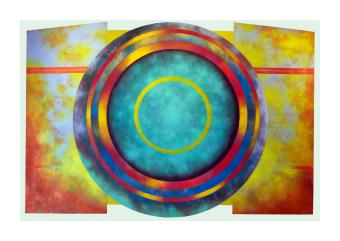
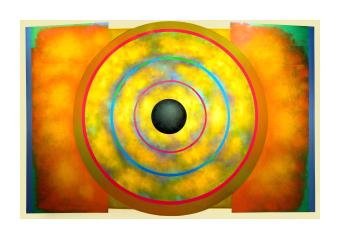
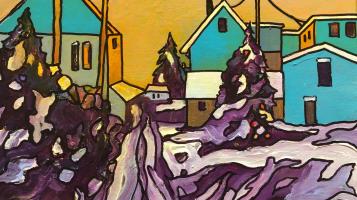
Mike Strauss
Strauss has been painting and drawing since his teens. After forty years as a professor of chemistry he began devoting full time to painting in 2003. His primary interest is in how color and value create the illusion of light and shadow. For example, when he paints landscapes depicting early morning or late afternoon, the light is often filtered by dust or moisture, resulting in a warm red-orange glow. In this circumstance, portions of objects lit by orange light reflect warmth in the viewer’s eye, even if the reflection is from snow. The cooler blue, purple and green shadows in these warmly lit scenes build depth. This is reinforced using linear perspective, which is most evident in the lines of lanes, houses, poles, trees and wires in his street scenes. Strauss’s work is strongly influenced by the Canadian and California colorists, both in style and subject matter. He is particularly indebted to Mike Svob, Nicholas Bott and Min Ma for inspiration in the subject matter and style of the paintings in this small collection. Like these artists, he sometimes uses bright, bold, color shapes, often with hard and sometimes black edges, to create interesting patterns and design. Though the colors and lines he uses are sometimes not found in nature, the resulting images retain the logic of light and shadow. He often tries to make the brightest objects seem lit from within as well as from incident light, to create an otherworldly glow, like electrified neon in glass. It is this luminous quality of saturated and impressionistic color that pleases him most.
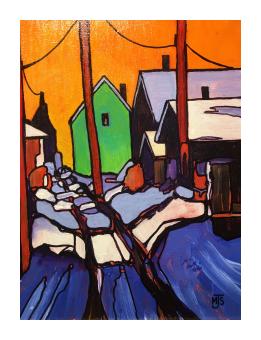
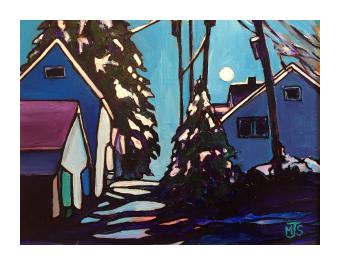
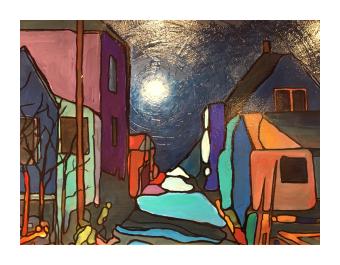
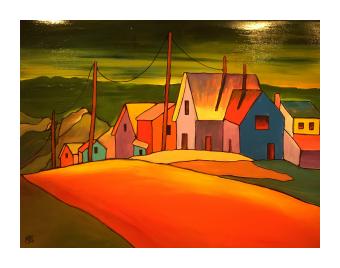
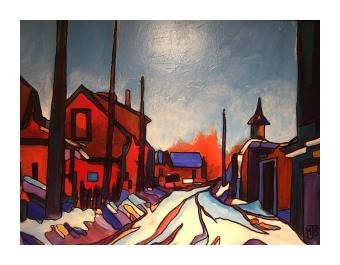
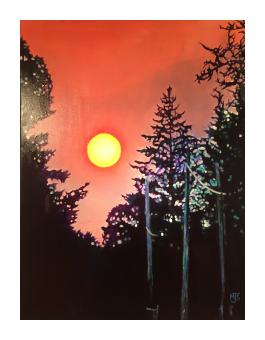
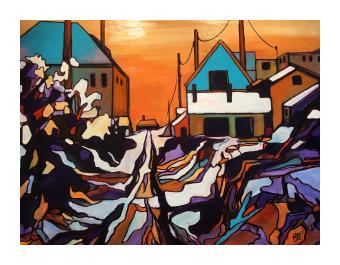
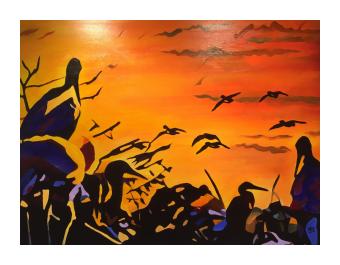
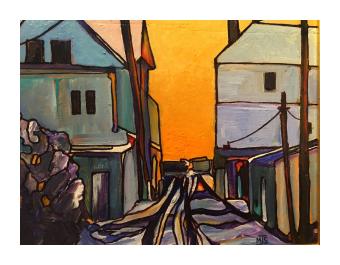
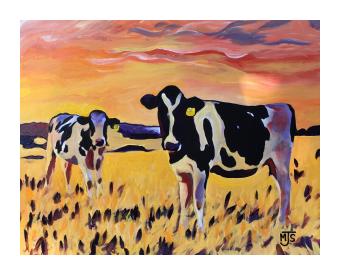
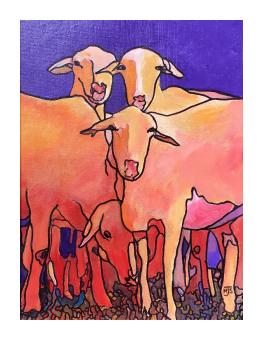
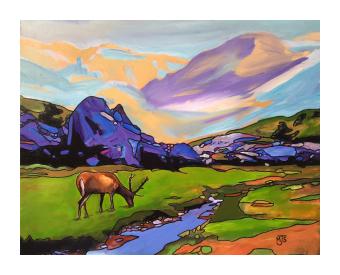
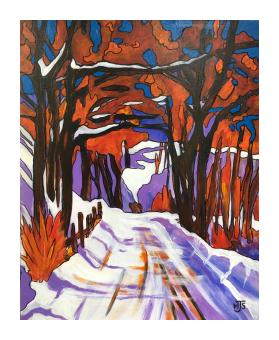
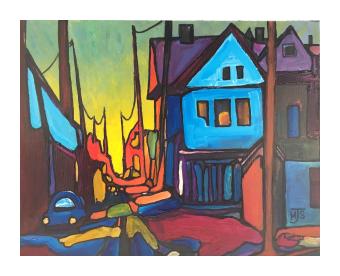
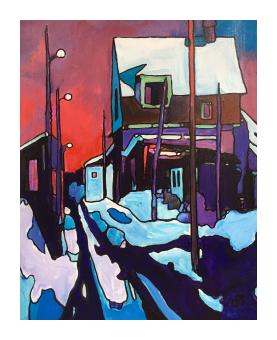
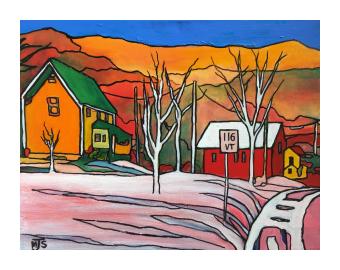
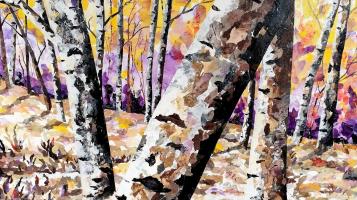
Jo Thomas
As with many artists, I find an escape from my ordinary life when I delve into the creative part of my brain. Time escapes me and my thoughts are lost in this process of communication. I’m letting light into a part of my soul, and releasing it out to the world. Or, perhaps I’m just trying to capture a moment in time. After decades of conventional painting, my artistic life transformed when I was introduced to tissue paper collage at a workshop in Georgia. I learned to mix acrylic paints with a gel medium and water. I pour the mixture onto white tissue paper and let it dry in the sun. I begin my “rip and tear” art form by tearing the paper into pieces and gluing them to a canvas. I also use bits of white birch bark and sometimes newspapers in my collages. I’m told they resemble mosaic sculptures as each one contains hundreds of pieces. After 16 years of dividing my time between Chattanooga, Tennessee and Norway, Maine, I made my home in Charlotte, Vermont last year. I worked as an artist, sculptor and art director for the Civic Arts League in Chattanooga for 10 years, and am a founding member of an en plein air group called, The Outdoor Girls. I have lived each summer in Maine since 1977, and am a member of the Western Maine Art Group. My work can also be found at the Main Street Gallery in Norway. My art has been featured in galleries and festivals in Maine, New York, Wisconsin, Tennessee and Georgia. Through the years, I have been fortunate to have won some honors and awards. I’m now looking forward to joining artists in Burlington to help make the world a prettier place!
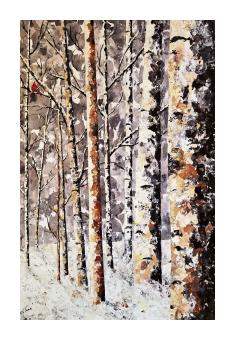
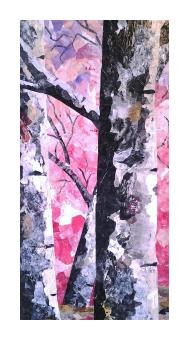
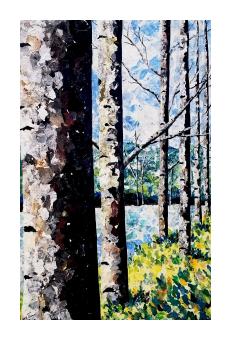
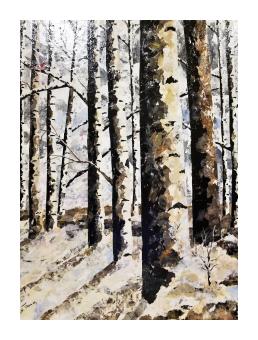
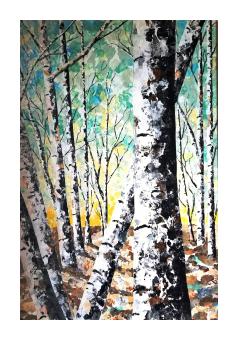
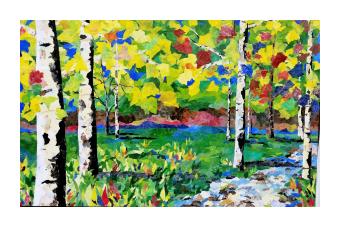
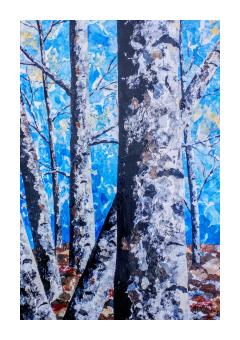
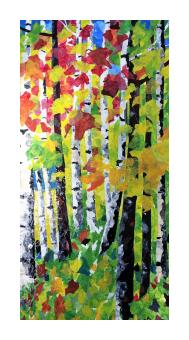
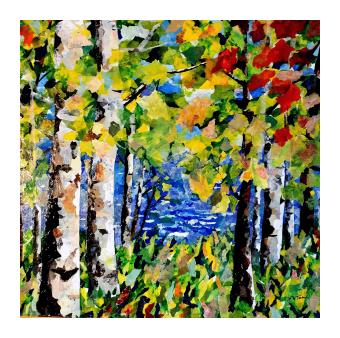
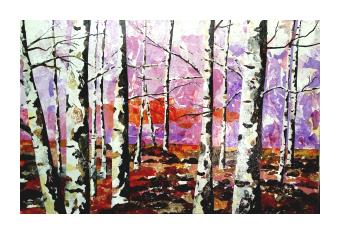
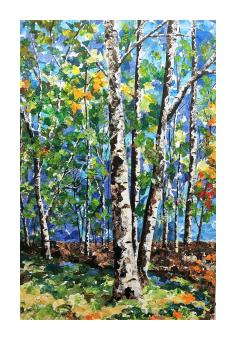
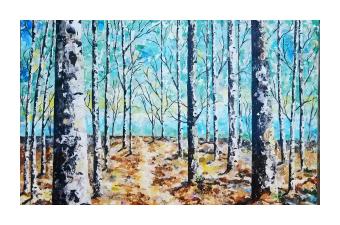
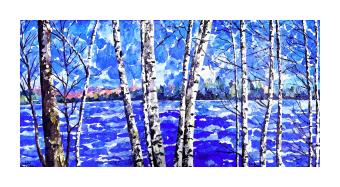
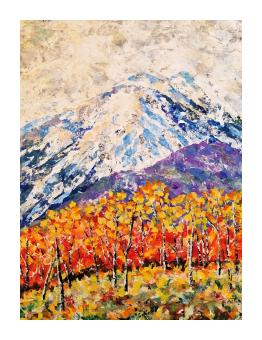
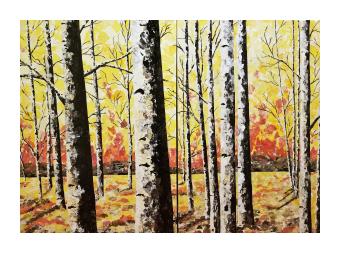
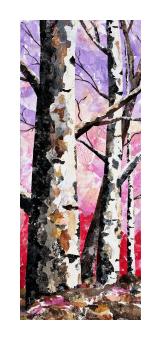
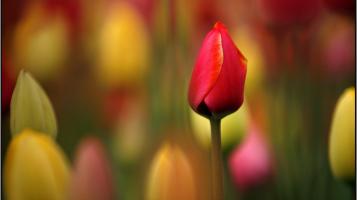
Annie Tiberio
I create color images that help me reveal what I feel about the natural world: its colors, shapes, textures, lines, and forms. My background in science supports my visual expressions where my goal is to make a connection between myself and the observer. I try to make familiar and simple things in nature acquire the elegance that I see through my lenses. I seek to inspire the observer, subconsciously or not, to develop special vision and see beauty where one might not even know to look. My lenses are my brushes and to create images that transcend the ordinary, I must know exactly how each will visually express the light that I see. My years as a photography instructor have helped me refine and express to my students myriad photographic concepts, thereby helping me to become a better artist. Although there are spectacular vistas everywhere, I also create abstracts or close-ups that share what I feel about each place. I see an invisible image in my mind’s eye and then endeavor to express it artistically. I study flowers from all sides and bring them right up to my lens, rendering only a small margin in focus. An abstract colorful shape emerges from a soft, foggy haze. The land can be quiet and subtle or grand and expansive. Sometimes to express the landscape in its scale, I use just a rock or a tree or other shapes and textures. My work focuses on nature’s different colors and music. The Rockies and the West could be characterized by The Halleluiah Chorus, hot southern swamps by The Blues, and les Verts Monts - a symphonic orchestral piece with a melody that sings the story of Vermont. The West’s craggy snow-capped peaks, the grand open Great Plains, dramatic rocky ocean sides, the startling quietness of a New England snowfall in the woods, the rich nuances of November’s colors, the palette of color swells in the short burst of fall foliage, the march of spring wildflowers, or the majesty that is Africa… all are my subjects. I appreciate, though do not seek to make, social commentary, editorial images, or contemporary statements, but rather to make beautiful paintings with my lenses.
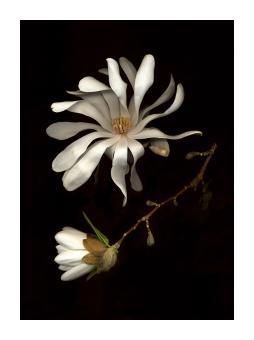
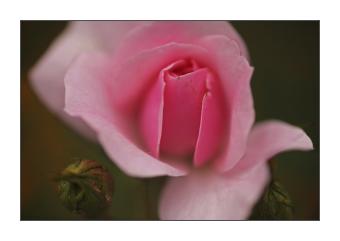
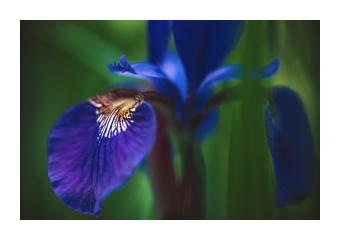
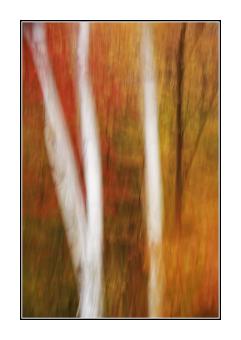
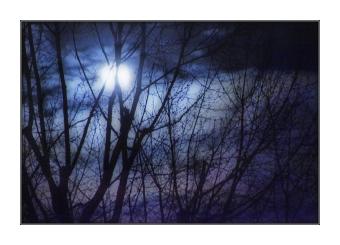
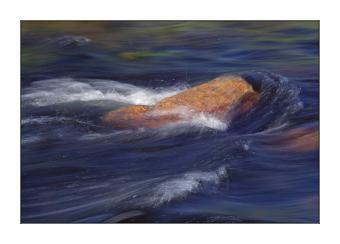
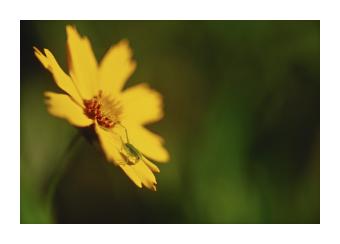
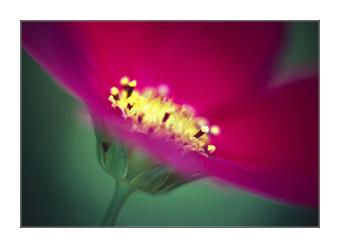
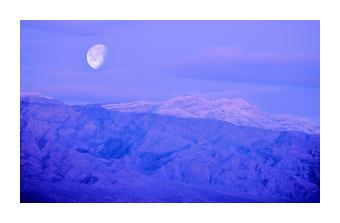
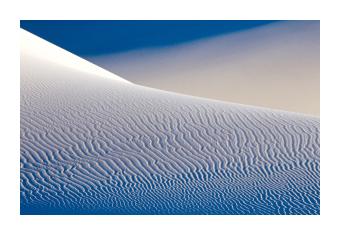
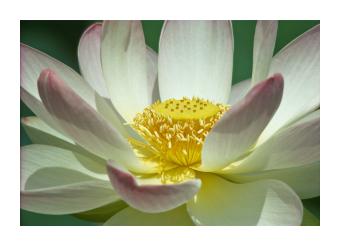
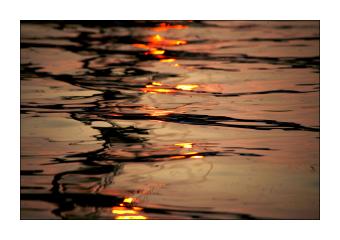
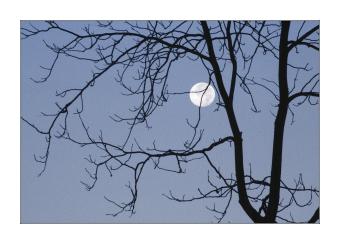
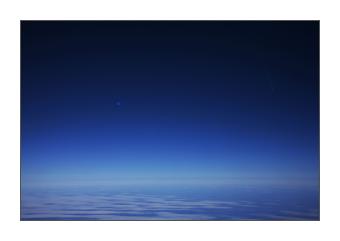
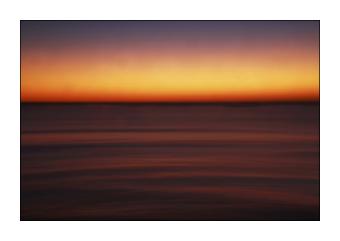
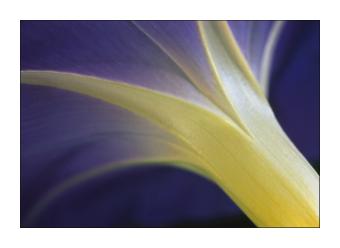
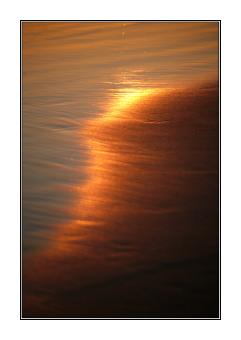
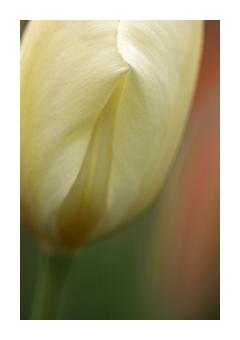
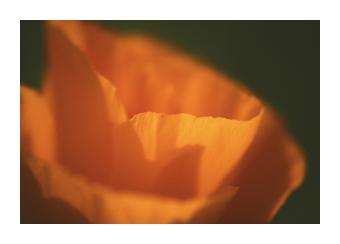
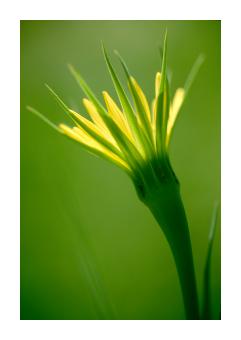
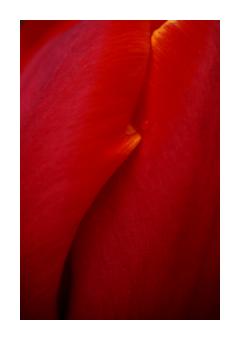
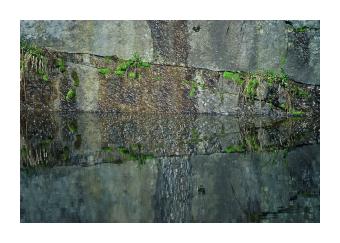
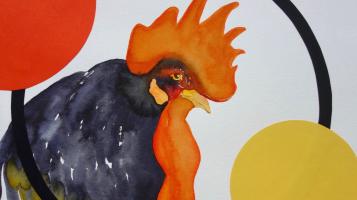
Nancy Tomczak
Birds of the Northeast, some with unusual encounters, are the most common subjects of my watercolor paintings. Combining the spontaneous flow of color and added anatomical detail has pooled with my love of watercolor painting for seemingly endless inspiration. Recently I have deconstructed paintings and collaged the images in order to push the boundaries of my compositions. Hand gestures are another fascination of mine which I have frequently incorporated adding a human element of interaction. Spirograph designs have evolved in my work leading to a less literal reference though suggesting the interplay of nature and math. Originally from Buffalo, I have spent most of my life in the snow belt areas of western New York and in the Finger Lakes region. A job relocation for my husband, James brought us to Milton, Vermont in 2008.
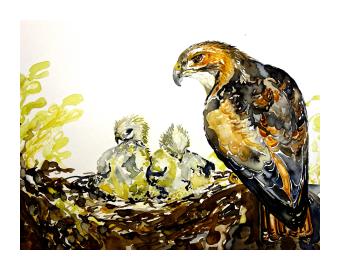
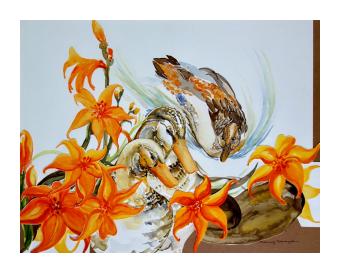
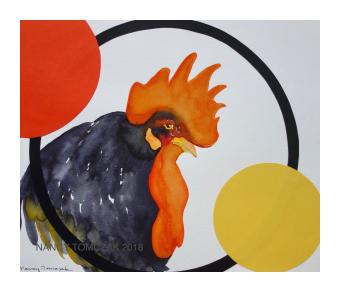
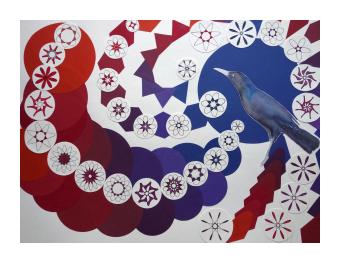
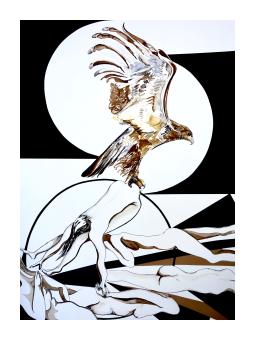
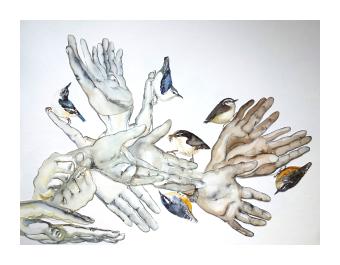
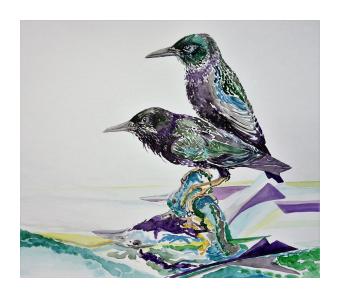
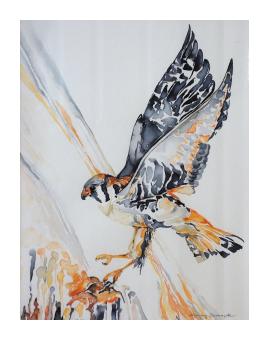
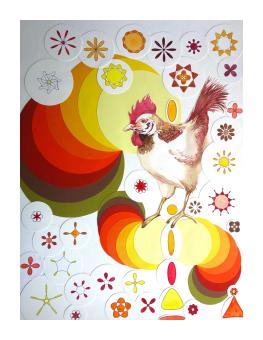
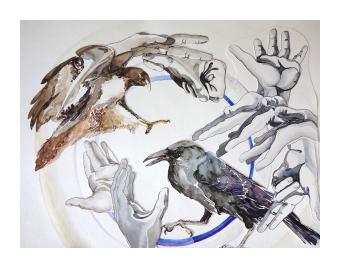
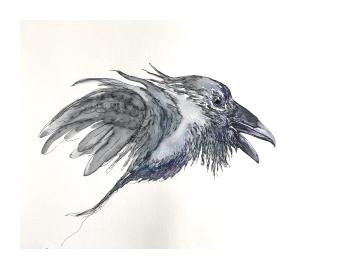
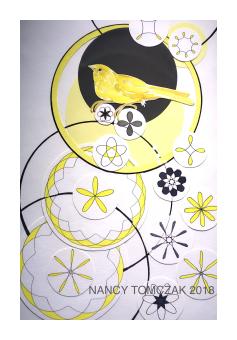
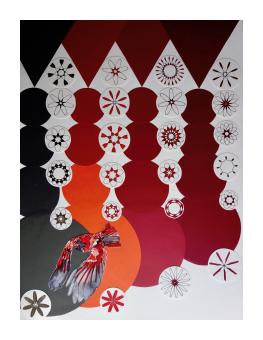
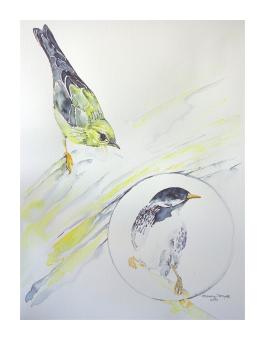
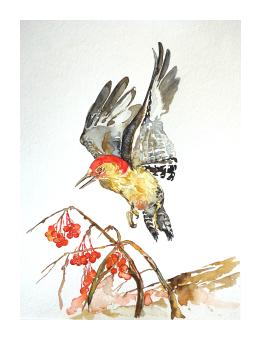
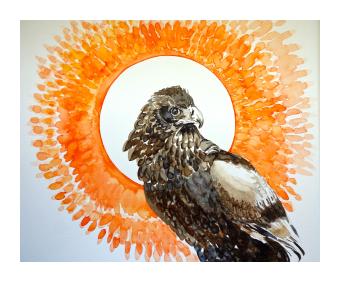
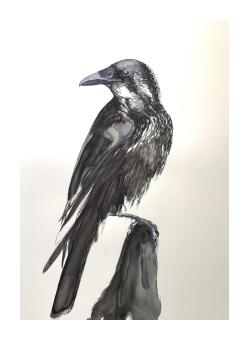
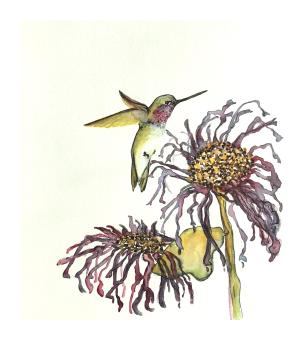
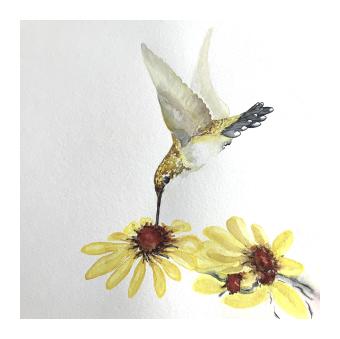
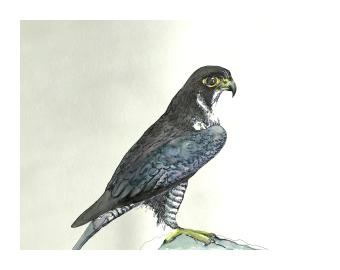
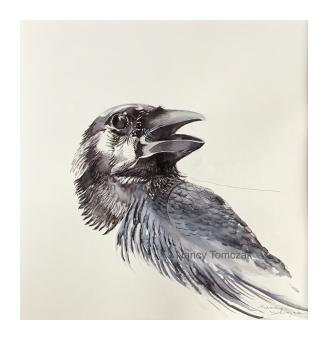
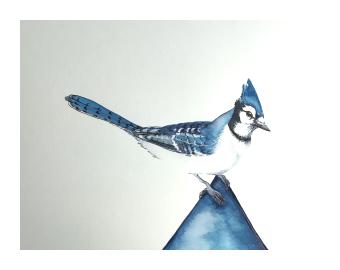
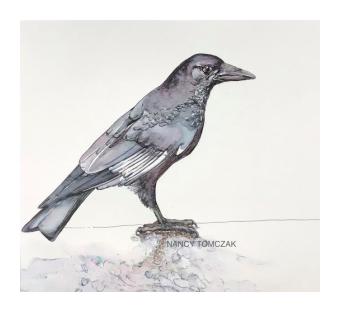
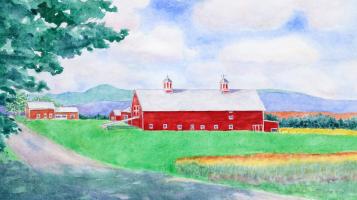
Shanley Triggs
All of my paintings are inspired by what I experienced as a child and young adult. I am naturally drawn to the Vermont landscape as I roamed the hills, valleys, and woods for endless hours as a child growing up on our family dairy farm in Milton, Vermont. I love to paint Vermont barns, Vermont wild flowers, Holstein cows, the birds that frequent my bird feeder and Lake Champlain from which I draw inspiration every day. I love to paint because there is always a challenge and a surprise as I never know where a painting will lead. My hope is to bring joy to others through my art.
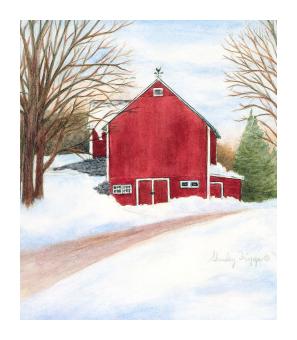
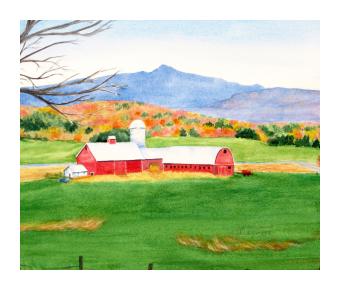
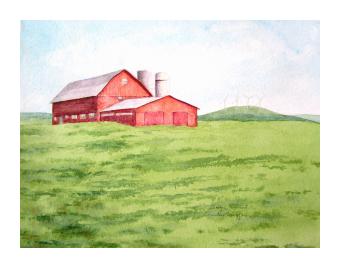
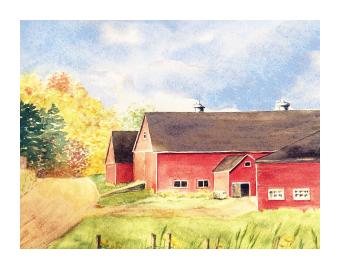

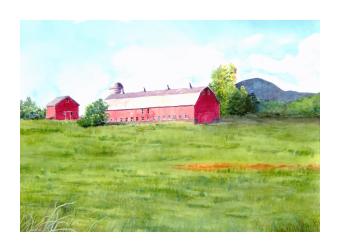
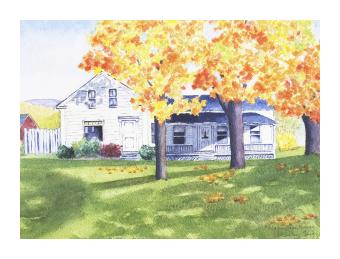
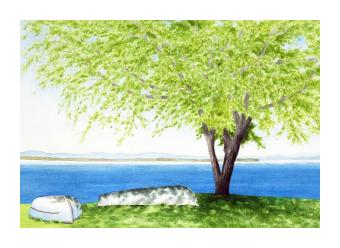
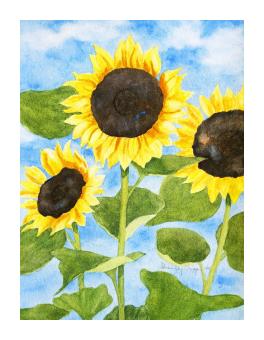
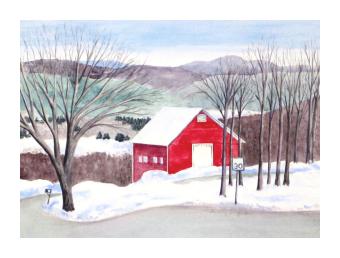
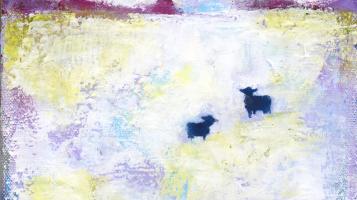
Michelle Turbide
My work is about the transformation of the soul through lived experiences that change, evolve, and grow us. While it could be described as abstract, expressionism, ethereal figurative work, or mysterious dreamscapes… it is really not about what you see in the piece, but about what you feel in the witnessing. My intent is for my work to settle into your being and communicate a message that is not always seen or felt at first glance but subtly speaks as you allow yourself to move into it. My process involves entering a state of liminal space and collective unconscious and excavating a visual narrative that holds the energy of the experience. I strive for my art to be a journey for the viewer to relate to the emotions, mystery, and depth of the essence behind the piece. My paintings begin with an entry point of a feeling or a snippet of a story. From there they build layer by layer until the story is told and complete. When I create, I enter my imagination... what I call liminal space. I work intuitively, and yet the work always shows up in themes that are consistent. I paint bodies of work usually with 10-20 paintings in the same theme. Recent themes have been ancestors, trees, animal guides, landscapes, and abstractions. My process involves beginning with blocks of color, shapes, and textures that speak to me as I create. From there I listen for the story that wants to be told and use layers of opaque paint, transparent colors, and glazes to create a depth to each piece. My work has hints of abstraction as well as pieces of realism. I often use hand made stencils to create shapes that frequent my paintings. These shapes represent my own personal symbology that have meaning to me and lends itself the narrative of the piece. I utilize a mix of artist grade acrylic paints, acrylic mediums, inks, and various mark making tools. The painting may call for mixed media and collage at times. Paintings are done either on canvas, wood, or artist grade paper. I varnish the paintings created on canvas or wood for long term protection. In addition to acrylic painting, I create through the art of printmaking. I have a press with which I create Monotype prints as well as relief prints. Done much in the same way as my painting, I create layer upon layer of ink using mark making and handmade stencils to build a narrative of the inner workings of my imagination.
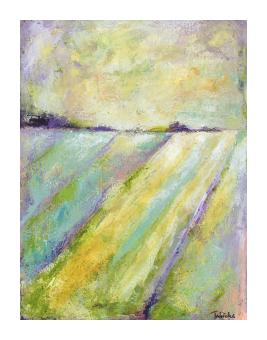
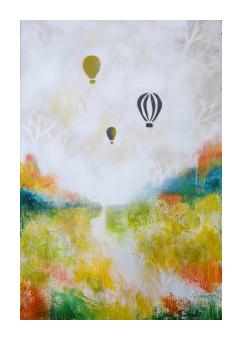
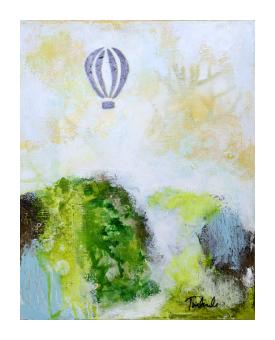
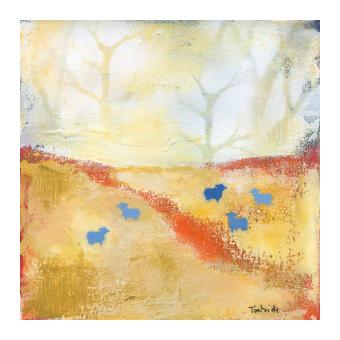
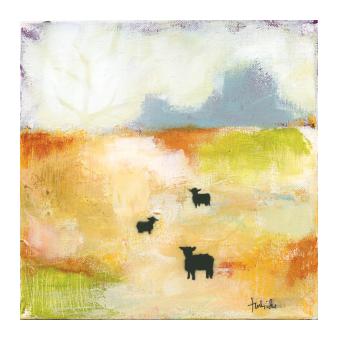
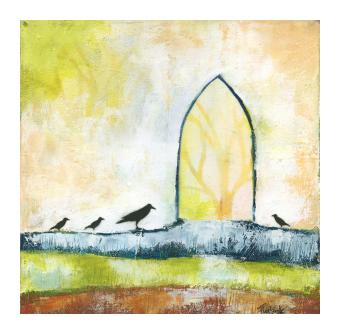
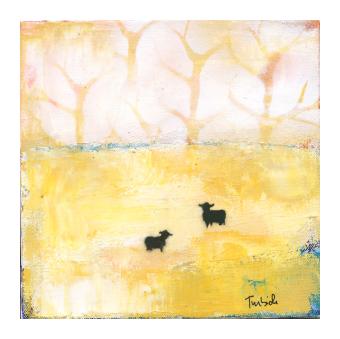
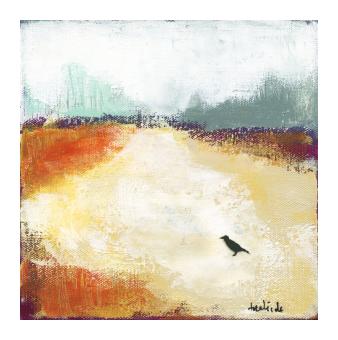
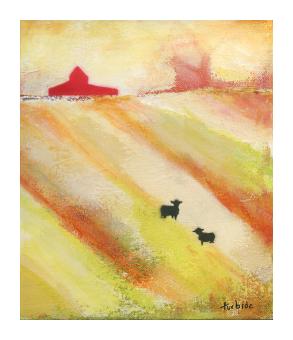
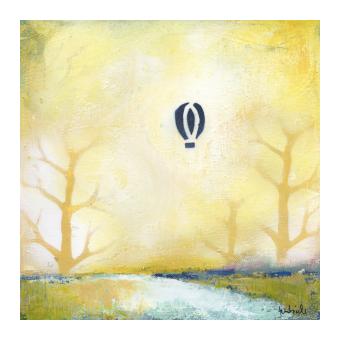
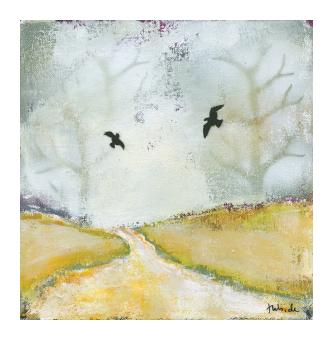
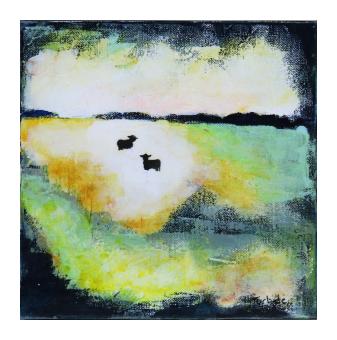
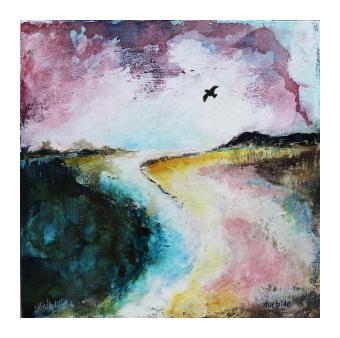
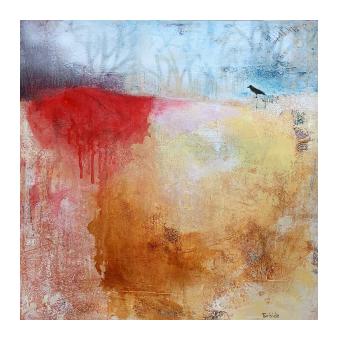
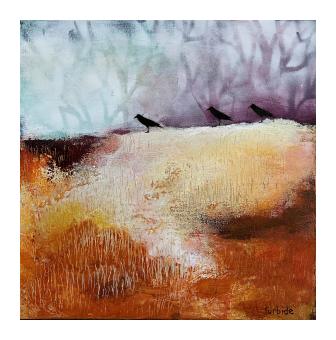
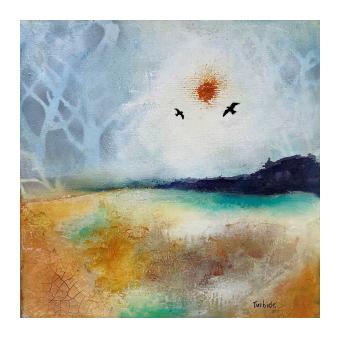
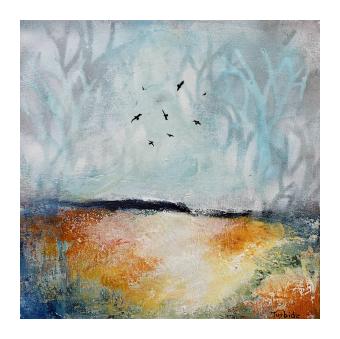
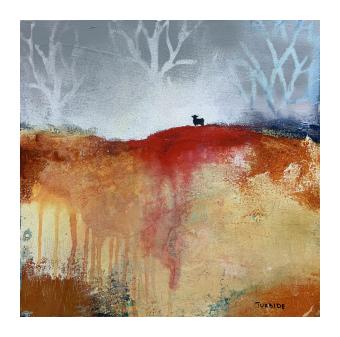
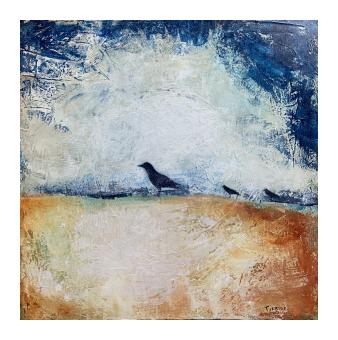
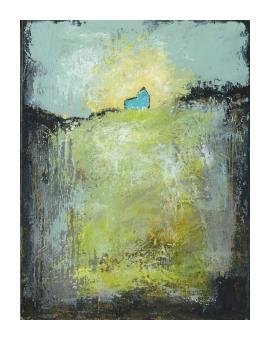
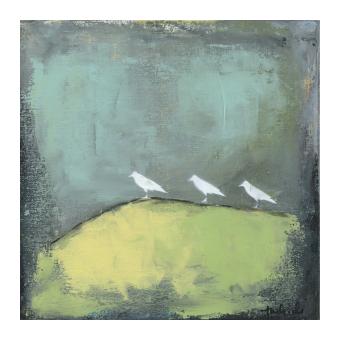
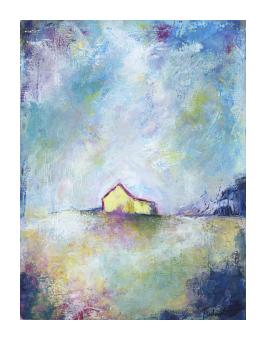
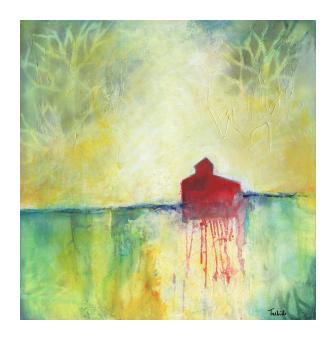
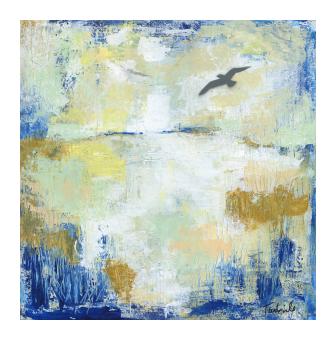
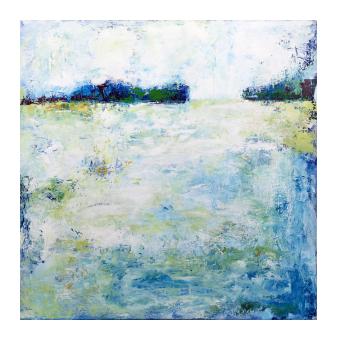
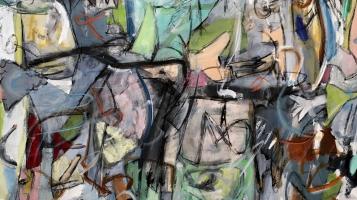
James Vogler
James Vogler was born in New Jersey and received his BA in Painting from Kean University in 1976. He continued his education in the Masters Art History program at Rutgers University and later in the Masters Painting program at Kean University. While working for the next 10 years as an art installer for the Metropolitan Museum of Art in New York, he continued to paint and develop his style of abstraction. In 1991, he and his family moved to Vermont to pursue new careers. Since returning to painting full time in 2007, Vogler has exhibited works widely in the New England region and Canada. Working largely in oil on canvas, he continues to draw upon his personal experience and surroundings for inspiration in his work. My paintings reflect a mixture of moments gleaned from past or present experiences. The results are expressed in a blending of abstraction and figuration. In combination, these elements infuse my work with a curious ambiguity.
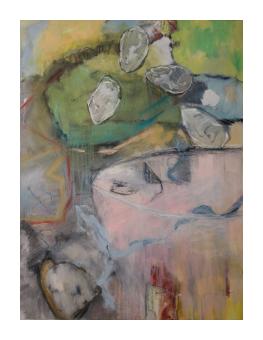
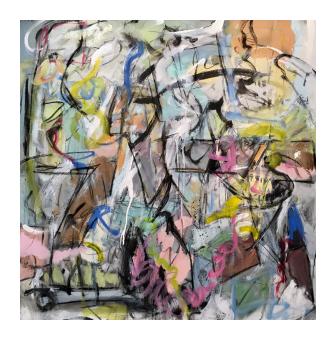
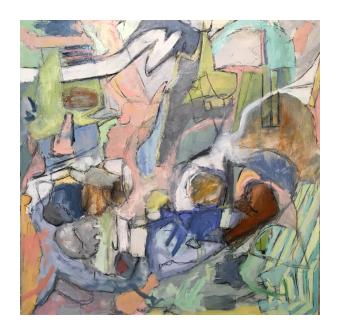
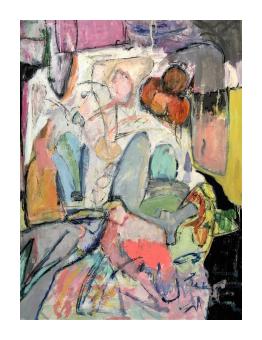
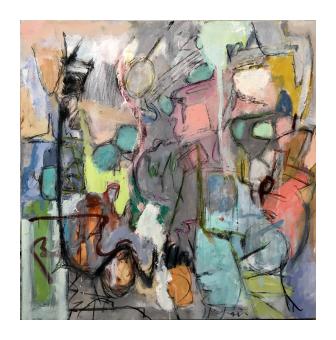
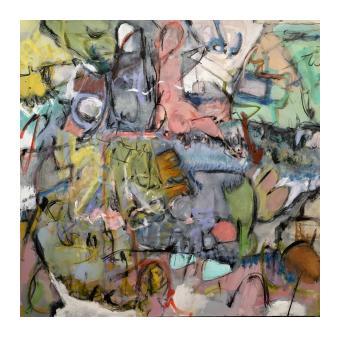
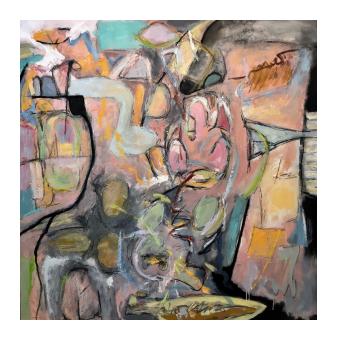
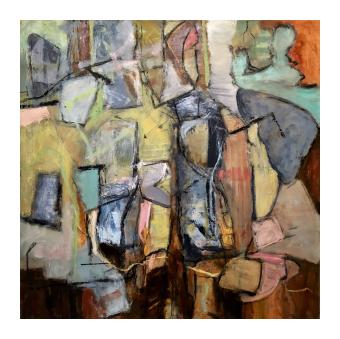
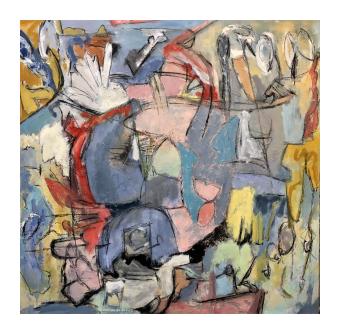
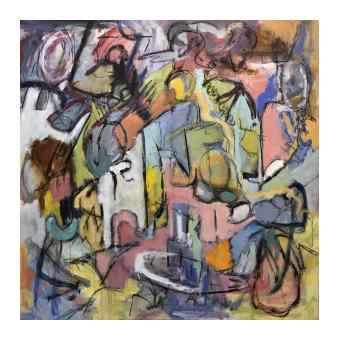
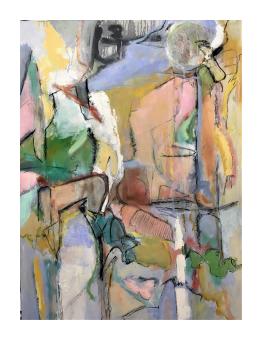
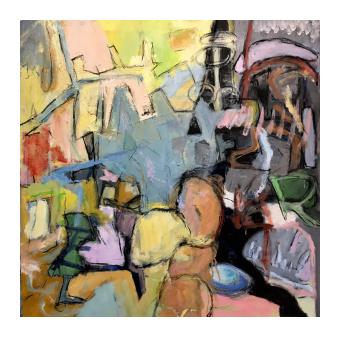
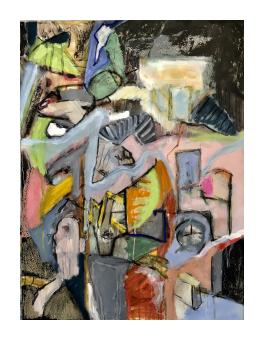
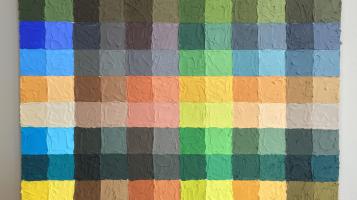
Kristen Watson
Kristen makes and teaches art in abroad range of media. She’s a licensed Art educator and masters of Art education candidate at St. Michael’s college. Currently she teaches at Burlington City Arts and Davis Studio, and is also a teaching artist for the Vermont Arts Council, and a VAC grant recipient. Kristen’s work focuses on mixed media intuitive painting, artist books, printmaking, and small scale assemblage. She exhibits her work locally and regionally in both group and solo shows, and has been selected for several juried exhibits. Her work is also held in private and public collections. She has completed artist residencies at the Vermont Studio Center in Johnson, Vermont, and the Rensing Center in South Carolina. I've been a seeker since childhood, earnestly studying, first medicine, then human psychology and sociology, then spiritual and religious teachings. I yearned to understand my life and answer questions about purpose, fulfillment, wholeness, and joy. Though I didn't begin to find answers to these questions until later, I knew that I was supposed was to love others by helping them. My first career was in surgical medicine, where I worked beside surgeons to help people find their health, regain lost mobility, and ease pain. My spiritual and life journey unfolded simultaneously during a three-year bout with a life-threatening illness. I already knew I loved art and teaching, but facing death caused me to reexamine my life and finally admit that I had been unsettled and unhappy for many years in medicine. I knew there was true healing to be found by other means, and I knew that if I recovered I had to leave medicine to begin anew. It wasn't an easy transition, but now I'm fully engaged in my new life and work. Though I make work in a variety of media, the common thread in much of my work, especially of late, is that of building textural, sculptural layers onto a two or three dimensional surface. Unlike many artists, I expose my entire process to the publicmistakes and all - because it's so important to break down the misconception that creativity is a talent and not an acquired and improvable skill. This belief is rooted solidly in my teaching philosophy, as are the ideas of exploration, willingness to experiment and even "fail". My studio and teaching practice feed each other. I use whatever techniques and materials will communicate my ideas effectively. I continue to examine my own ideology and intently watch my day to day thought. While this inward work is going on, I continue to closely observe the flow of everyday objects that find their way into my experience, thinking about how these items came to exist and why and how they ended up in my hands. Increasingly my work contains these repurposed synthetic and organic elements and natural found objects. A discarded takeout container, a make up compact. A broken drinking glass or scrap of fabric. Even more importantly I wonder what potential they have to be deconstructed, reorganized and reimagined after their usual purpose is fulfilled or cut short. This curiosity might tie into the way my own life was utterly deconstructed, reorganized and reimagined. Like many artists, I walk the line between being concerned with how my work makes me think and how it makes me feel. I make art to examine and find insights into the inner spiritual and emotional life and how it exists next to the external physical experience. I'm exploring the idea of reflecting the human transformation from purpose-less to 'purpose-full' - becoming fully aware of our beautiful and blessing purpose and presence. The unfolding of the kingdom of heaven within and without. Art is an act of healing. It's expressed the deepest native qualities of man. I "watch & pray" to find purpose and wholeness- to be the transparency through which the universal ideas of Truth, Live, & Love can shine.
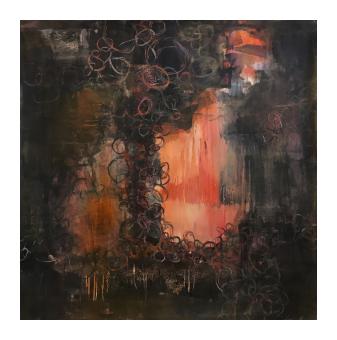
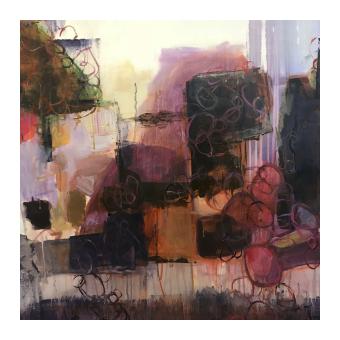
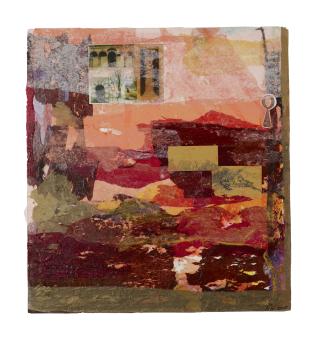
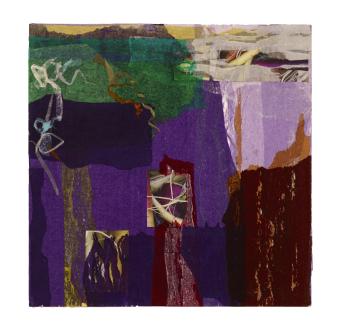
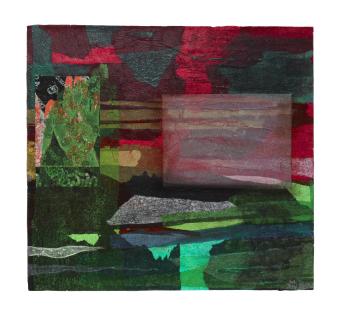
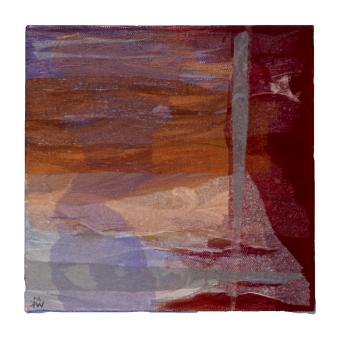
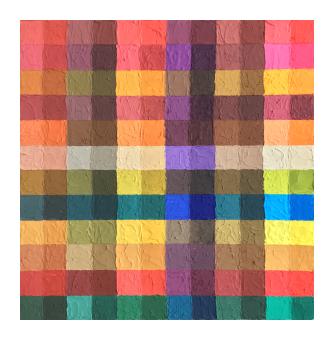
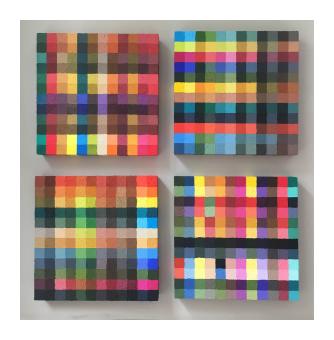
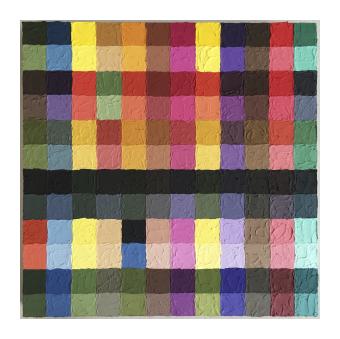
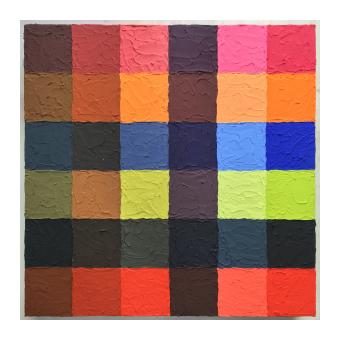
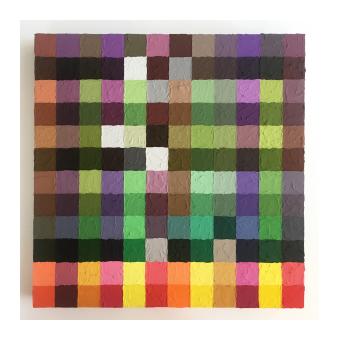
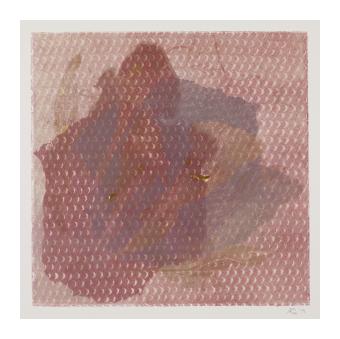
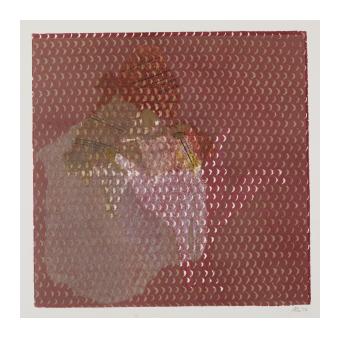
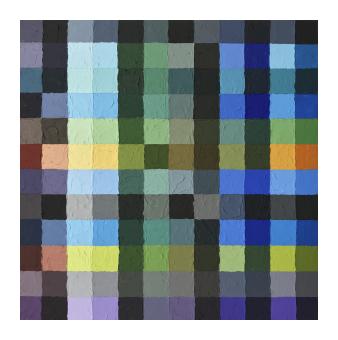
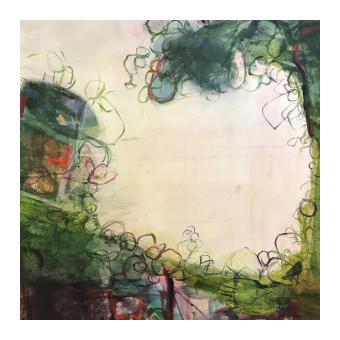
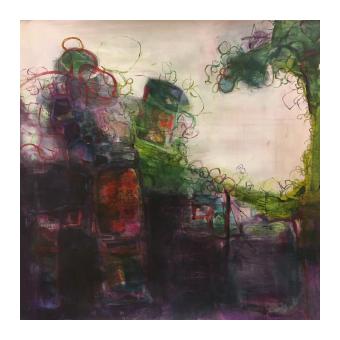
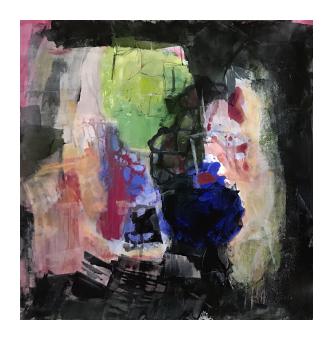
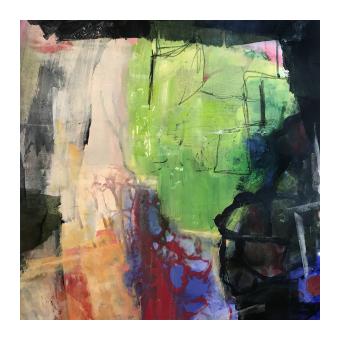

Sharon Webster
Sharon Webster is a visual artist, a poet, and helper of adults with cognitive challenges. Her work addresses the personal, celebrates the sensual, and believes in the mysteries of process. She is available to work as a teaching or visiting artist for any age group or developmental level.
Works like My Stitched Spine, Root, and Up Close at a Distance illustrate Sharon’s deeply felt visual storytelling and allegiance to the alchemy of healing.
Webster exhibits work frequently in Vermont and elsewhere. She earned a Bachelor of Science in Art Education and taught Studio Art and research writing for over a decade at Burlington College and Community College of Vermont in Winooski, VT. Sharon also holds a Master’s degree in Art History.
Webster’s book of poems and art, Everyone Lives Here, was published in 2014 by Fomite Press in Burlington, VT. Her new book, O Song, also features her poems and artwork, and is forthcoming from Fomite in late 2025. She enjoys giving poetry readings and is an enthusiastic fan of the oral connection and shared experience that spoken words provide.
Sharon worked for more than thirty-five years with developmentally challenged people, helping them to lead rich, normal lives (though she often felt they were teaching her). She does this work now on a volunteer basis.











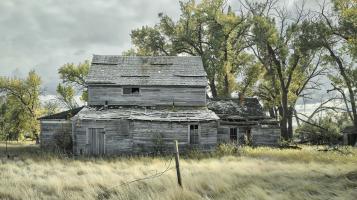
Jim Westphalen
Jim Westphalen has been a professional photographer for over 30 years. When he’s not shooting commercial assignments, he spends much of his time roaming back roads, combing deserted shorelines or rooting about old farms in search of images that will compel the viewer to pause, reflect and experience. “I want my photographs to disengage the audience from the here and now; to feel the cold of the blowing snow, to breathe in the serenity of the sea, to lament what once was or to simply be awed by the beauty of God’s creation.” Jim’s ongoing current body of work, vanish is a photo narrative that speaks to the decay of the built landscape in rural America.
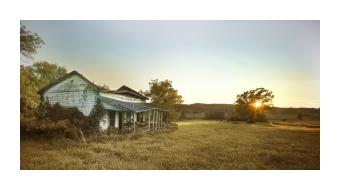
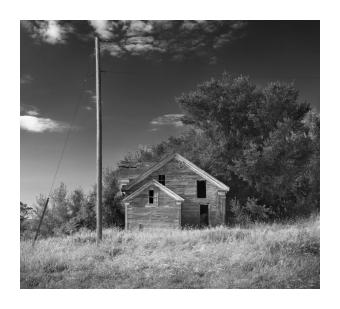
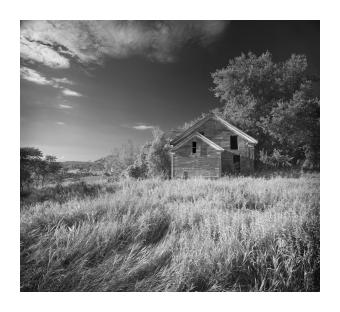
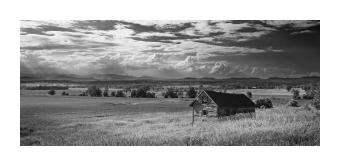
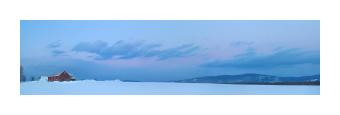
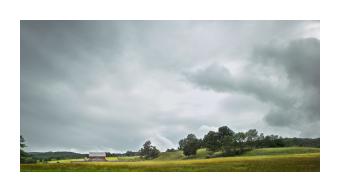
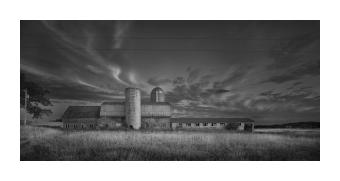
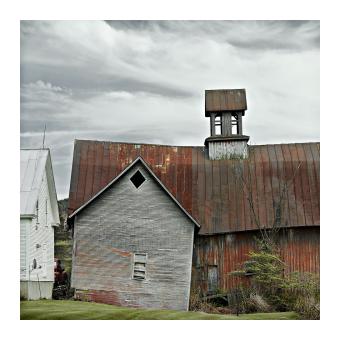
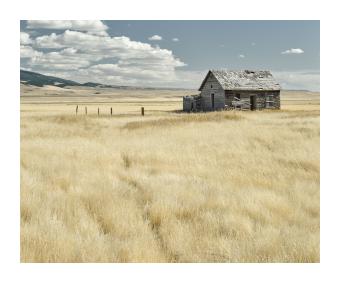
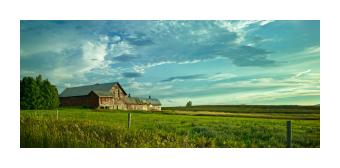
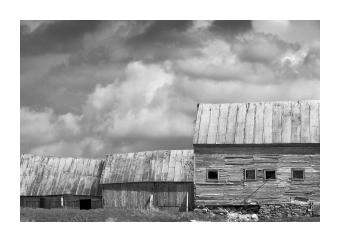
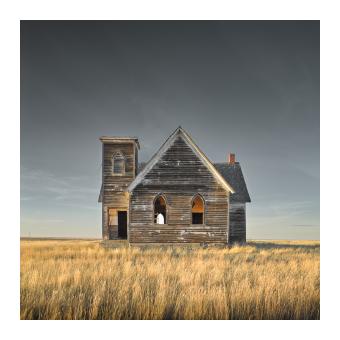
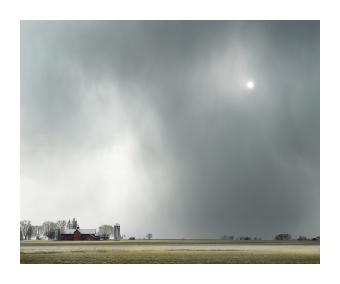
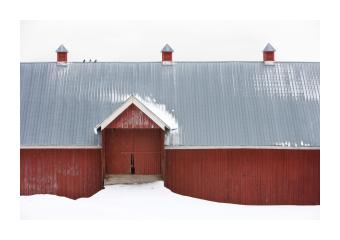
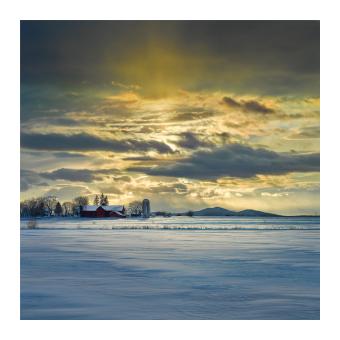
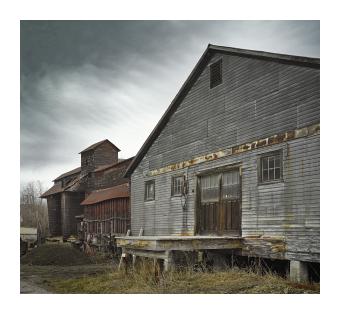
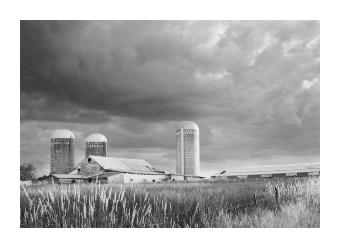
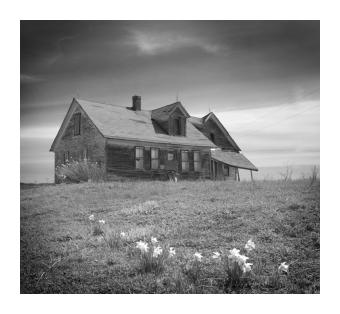
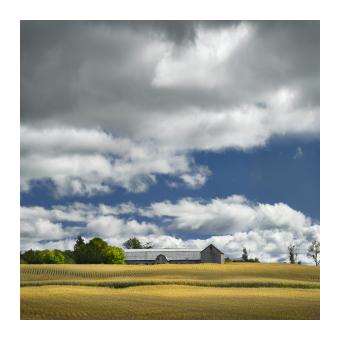
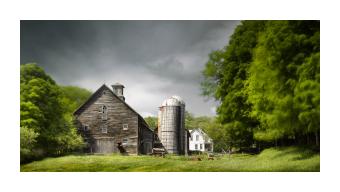
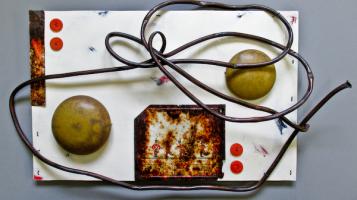
Polly Whitcomb
Starting around 2006 when living in Ribera New Mexico, I began collecting old objects, mostly metal, that were lying around the landscape and constructing assemblages. Drawing on years of working with clay I incorporate clay shapes with the metal, adding color and interest. I try to remain open to the possibilities of each thing I come across. From the heap of collected stuff I make a selection that combines with the clay pieces into a satisfying whole. Each completed piece is different and is partially determined by the nature of the "find." The process is a partnership between the elements chosen and what I bring to it. Some pieces fall into place with startling ease, and others need considerable fiddling and reworking. I find beauty in each of the found objects and delight in the contrasts and harmonies between them and the clay. I love the juxtaposition of deteriorating materials that are being eaten away by time and weather, and the seed-like new life of the clay forms. The work I am doing now continues the process begun in New Mexico, although now that I have returned to my native Vermont they have changed slightly. Some of the current pieces are smaller, and most of them have a background that I paint on aluminum flashing. The joining of elements is done with wire.
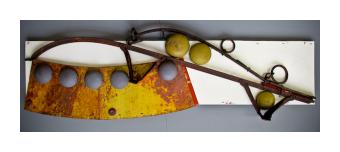
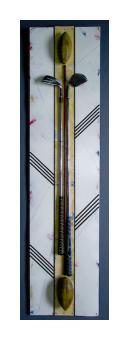
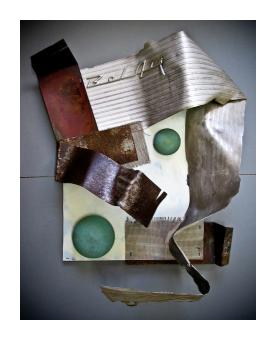
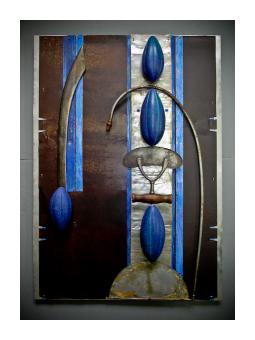
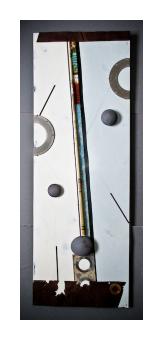
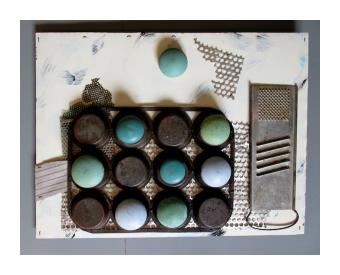
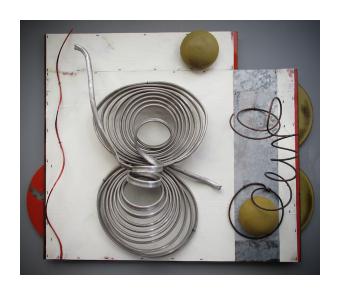
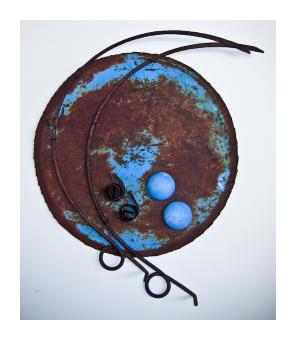
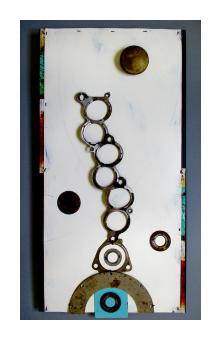
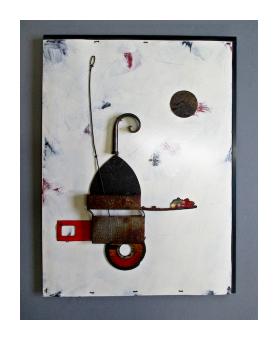
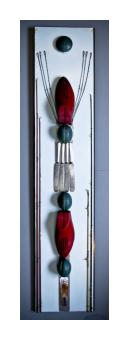
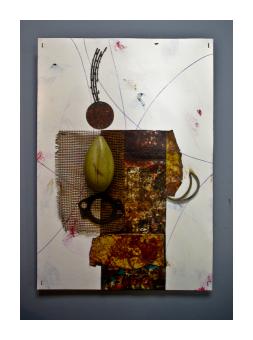
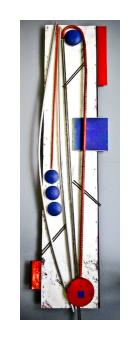
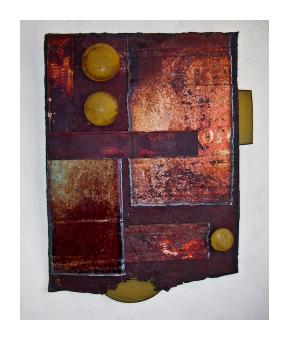
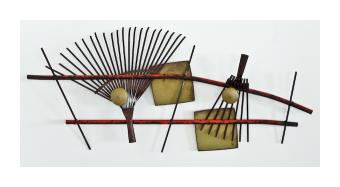
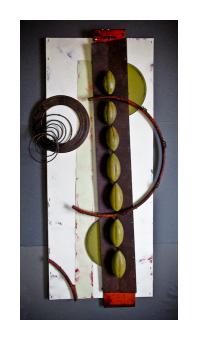
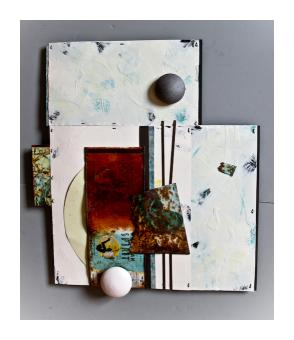
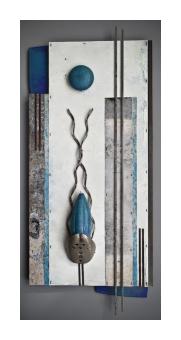
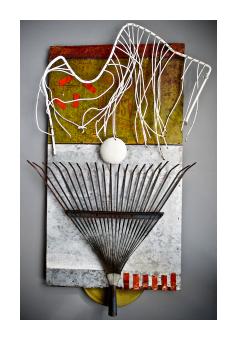
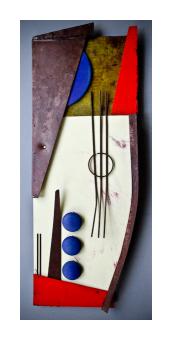
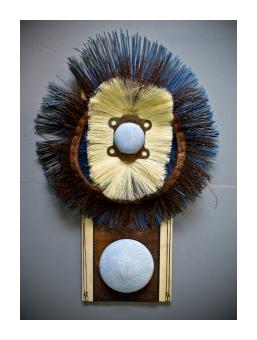
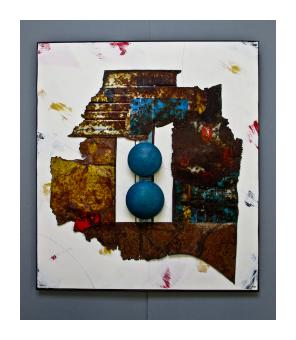
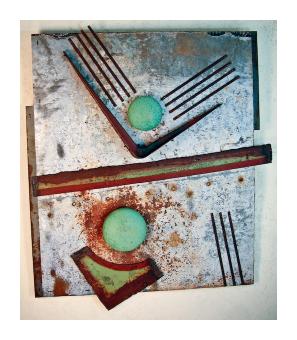

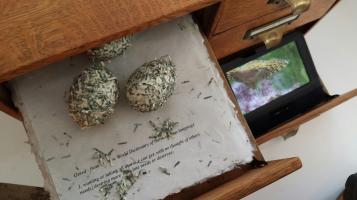
Kathryn Lipke
This current body of work brings the garden into the gallery using sculpture, photo, video, and sound for an exhibition I am calling “The Wild Garden”. To create an exhibition in which one can follow my impressions and thoughts of the environment through the various garden spaces both cultivated and wild. Through beauty, tension, and seduction these gardens reveal the cyclical, touched and untouched, moments in nature while visually exploring the eco-system.
The garden is seen as complex beauty, from the shape and size of plants to the dominance of species and the patterns of color through growth, life, and death. Gardens are nature, controlled by humans to reflect culture, social order, awareness of ecology, and life as sustenance. A garden is ever-changing and transient so one must take time to look closely in order to experience the totality of nature’s systems. Whether a man-made garden, cultivated nature or wilderness, nature brings us an experience with imagistic and sensorial fragments that embodies the specificity of a place and a particular moment in time.
The aim through this multimedia installation is to explore the interaction between the plant world and that of humans. Then to demonstrate through interconnected gardens how these qualities, manifested in plants and artworks inspired by these plants, can create a regenerative world.
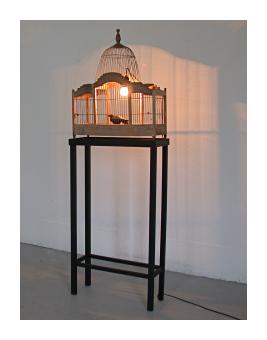
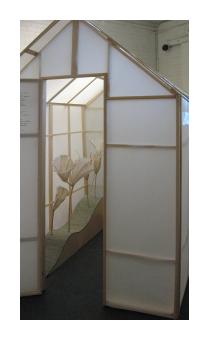
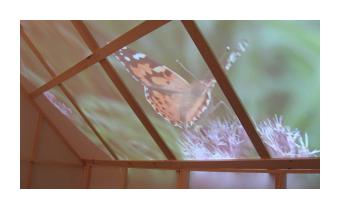
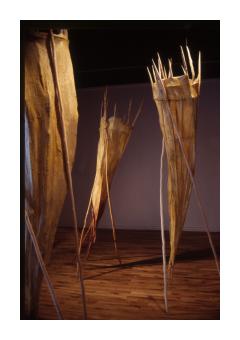
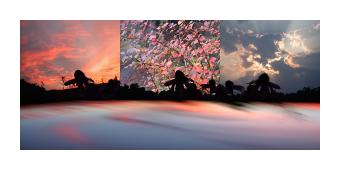
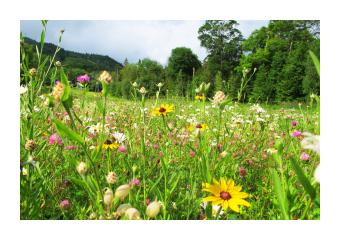
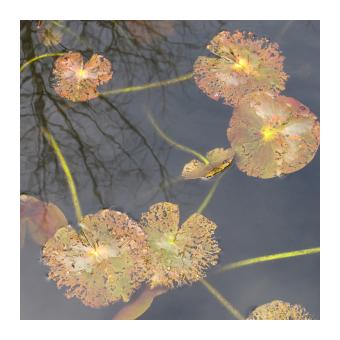
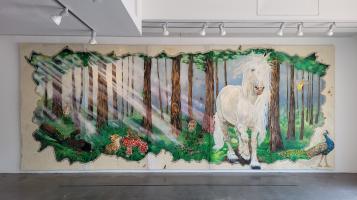
Kathryn Wiegers
I am a self-taught Mural artist with a BA in Natural Science. I try and display the world around us in a unique, and what I hope to be, an intense way. All the beauty and details in life, from a single blade of grass to deep wrinkles in a face, constantly confront me. All of these things can speak volumes and yet are so often passed by. I enjoy painting the world around us at a large scale. To me painting is an experience that never gets boring, its always changes and I am always learning.
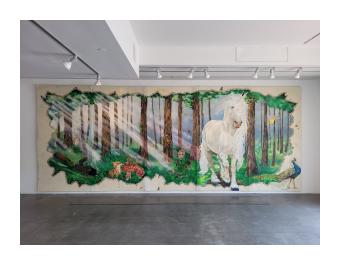
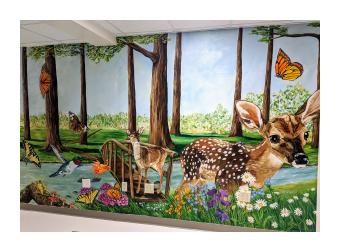
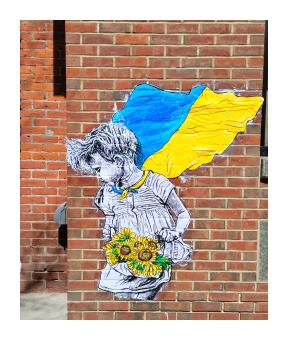
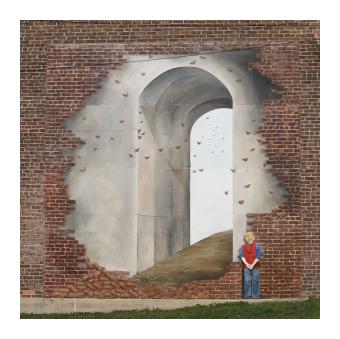
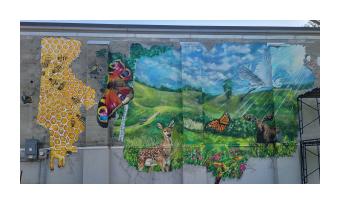
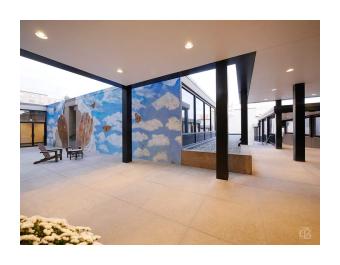
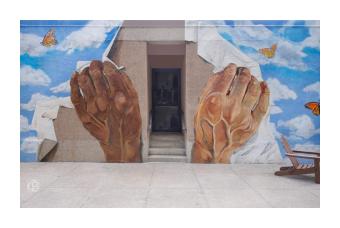
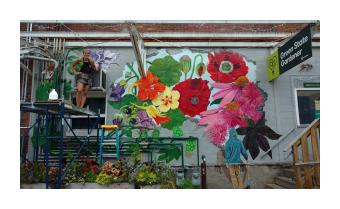
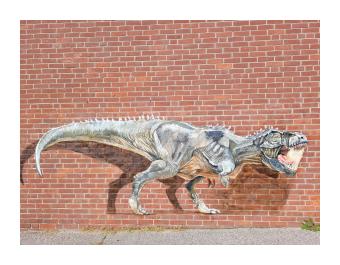
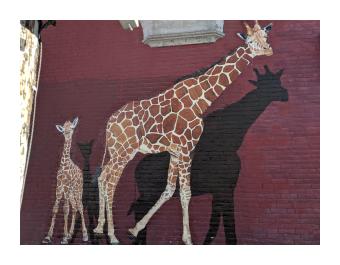
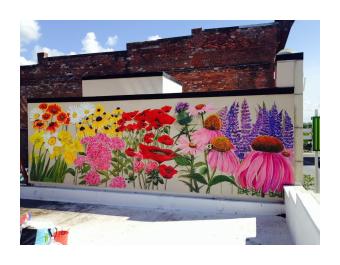
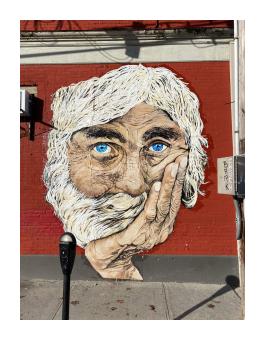
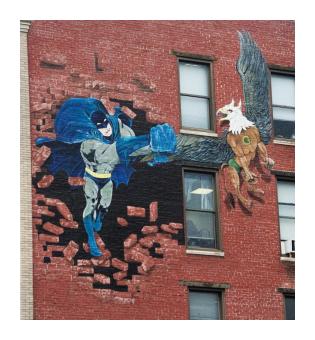
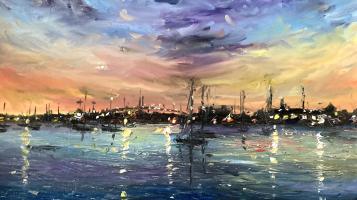
Tatiana Yakusheva
Welcome, dear friends, and thank you for your curiosity and attempt to capture my art. For me Art is Life and Life is Art. Both processes are pretty complicated, but also adventurous, creative, challenging, and infinite. As we look for our paths in life so do I also look for approaches and techniques in the art process. Every time I draw or paint, I try to improvise… with new mediums and styles. Art, for me, turns into a meditation process. It is something sacred, magical, and ephemeral. The state of creation, or the process of creation, is life in different dimension. Artwork turns into separate substance that has energy, light and lives its own life. The goal for me is not to create painting with the right succession of strokes, proportions and perspective. All the beauty is in imperfection. Drawing or painting becomes a separate substance that has energy and light, and lives its own life. Art has no borders and it needs to be free. You should put passion, energy and love into what you do to create something of artistic value, emotional and spiritual, something that would disturb people's minds and touch the strings of their souls. My works are usually the result of generated experience, passion, feelings, concerns, and questions. Emotions: love, friendship, happiness, grief, disappointment, failure, and success make the works impressionistic, lively, and dynamic. I don't create on someone's order or make the copies. You cannot step into the same river twice and you can never feel or think the way you did a moment ago. To copy for me means to lie or fake it. Every new work should be original, complete and genuine. You cannot have a formula for inspiration or love. Either it is there or it is not.
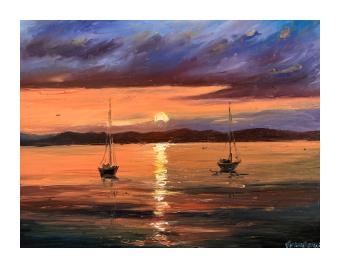
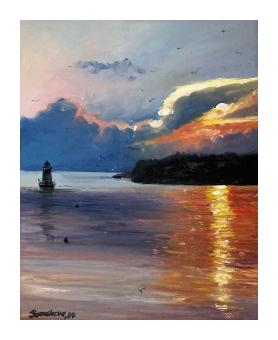
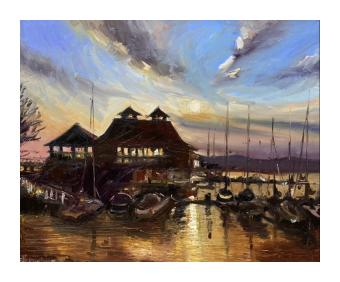
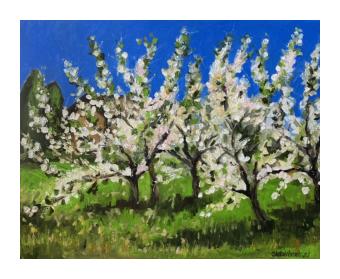
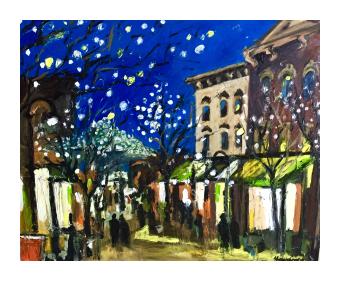
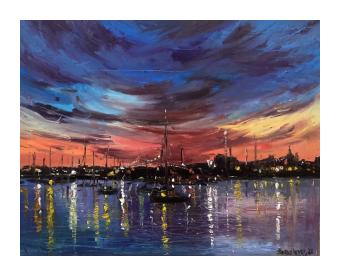
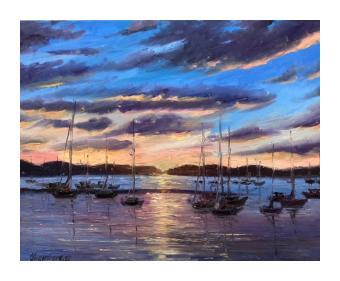
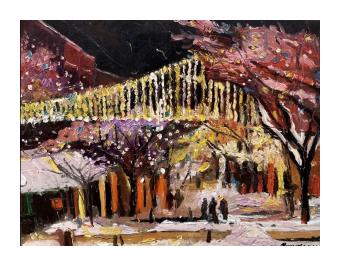
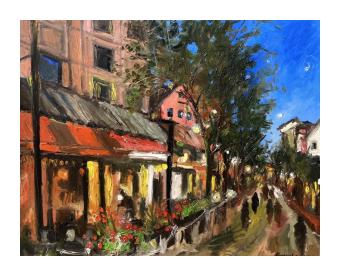
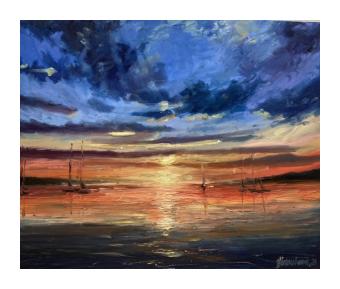
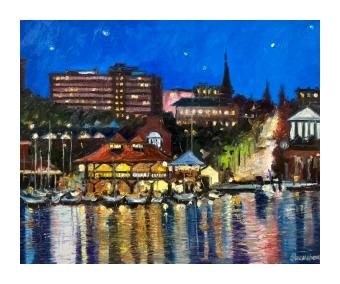
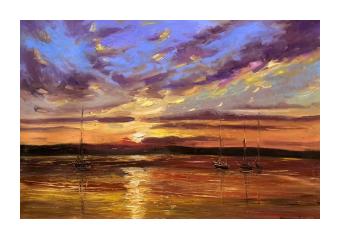
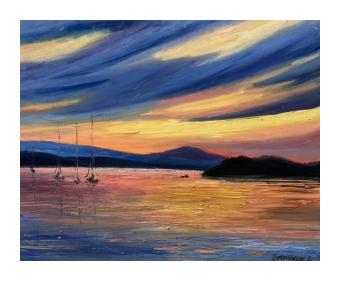
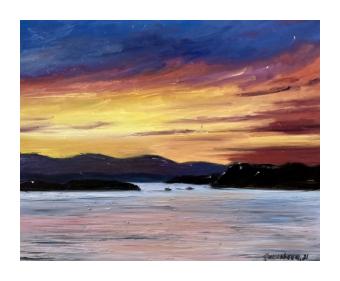
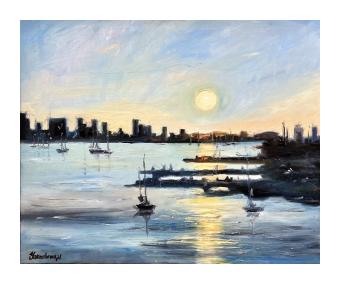
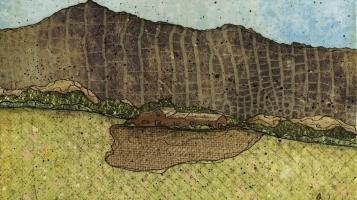
Johanne Durocher Yordan
Johanne is a Burlington based artist who works out of her studio on Pine Street. She was born in Quebec, Canada, but has lived most of her life in Vermont. It was not until 1998 that Johanne began committing herself to her artwork and finding her own voice. She studied at the University of Vermont and has since developed a diverse body of work that is a testament to her ability to succeed as an independent artist. Creating work that fits a variety of audiences, while always building upon her unique self-taught style, is the secret to her success. Johanne has always been the type of person who explores on her own, tapping into the unknown and developing her own fashion and techniques. Many of her paintings include found or collected items which add depth and meaning to combine form and function to her work. Her abstract work captures her emotions and represents her unique style and expression. Johanne has exhibited her work extensively throughout Vermont in both solo and group exhibitions over the past 12 years.
